dark matter
description: mysterious non-luminous matter (and/or radiation) comprising most of the matter in our observable universe
280 results
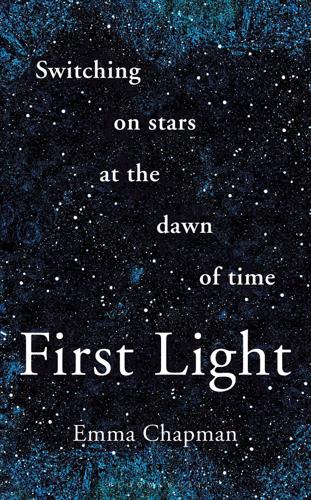
First Light: Switching on Stars at the Dawn of Time
by
Emma Chapman
Published 23 Feb 2021
‘Normal’ matter is made of baryons, which interact with light so that we can see their presence, using some part of the electromagnetic spectrum at least. Dark matter doesn’t interact with light, so escapes all of our traditional telescopes and even our most modern ones. We have never directly detected dark matter and this is no insignificant thing as we think dark matter makes up 85 per cent of the total mass within the Universe. It’s not that first stars scientists disregarded dark matter entirely – more that we thought that dark matter could only noticeably interact through gravity. Dark matter creates a factory floor on which to construct the first stars. In the early Universe, after recombination 380,000 years after the Big Bang, the gas was hot, too hot to collapse into anything approaching a star: there were no lucky clouds of gas at all.
…
Once the gas has coalesced into a star within the web of dark matter, however, we have little need to consider dark matter. It’s on the wrong scale to matter, just as dark matter has little effect within the scale of our Solar System. Or so we thought. What the EDGES result implies is that something is interacting with the gas to make it colder, and the only thing hanging around in the Universe colder than the gas is dark matter. Given a hot cloud of gas and a cold cloud of dark matter, energy is passed from the former to the latter until the two are in thermal equilibrium: the gas cools and the dark matter warms up a bit. But hang on – dark matter is famous for not interacting with stuff; it’s even in the name WIMP.
…
However, to the best of our knowledge, and there is some argument about this, dark matter was cold. Cold stuff can collapse, so collapse it did. Our models show that the dark matter condensed into dense filaments, a cosmic web covering the entire Universe. It didn’t collapse further, say into stars or galaxies made of dark matter because, while it was cold enough to condense a bit, it cannot interact electromagnetically (that is, with photons) to lose heat like baryons can. Because dark matter couldn’t lose this heat, the internal pressure was much higher. This kept the dark matter from condensing into anything much smaller than regions of gravitationally bound dark matter, called halos, of about 1 million solar masses, at the junctions of the filaments.
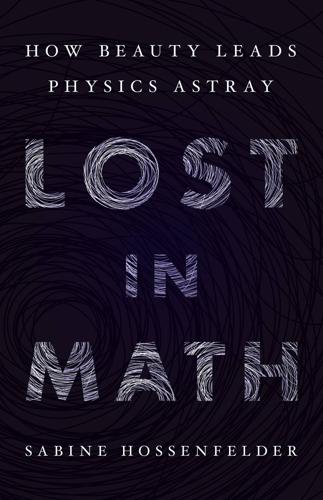
Lost in Math: How Beauty Leads Physics Astray
by
Sabine Hossenfelder
Published 11 Jun 2018
They’ve been seeing this signal for more than a decade. Such an annual modulation is what we would expect from dark matter because the probability that a dark matter signal is detected depends on the direction from which dark matter particles fall in. Since Earth moves through the presumably existing dark matter cloud on its way around the Sun, the direction of the incoming dark matter flux changes over the course of the year. Unfortunately, other experiments have excluded that the DAMA signal can be caused by dark matter because if that were so, it should have shown up also in other detectors, which hasn’t happened.
…
At 1017 Kelvin, therefore, we start with a soup composed almost entirely of matter and dark matter. Space-time reacts to this matter by beginning to expand. This cools the soup and enables the formation first of atomic nuclei and then of light atoms. Initially, the particle soup is so dense that light gets stuck in it. But once atoms form, light can travel almost undisturbed. Dark matter, since it doesn’t interact with light, cools faster than normal matter. In the early universe, therefore, dark matter is the first to start clumping under its own gravitational pull. Indeed, without the dark matter’s early clumping, galaxies wouldn’t form in the way that we observe, for the gravitational pull of the already clumpy dark matter is needed to speed up the clumping of normal matter.
…
The first attempt at modified gravity, known as modified Newtonian dynamics, did not respect the symmetries of general relativity, and this very much spoke against it.15 Newer versions of modified gravity respect the symmetries of general relativity and still explain the observed galactic regularities better than particle dark matter.16 But they don’t do well on distances far below or far above galactic size. The solution might be somewhere in between. Recently a group of researchers has proposed that dark matter is a superfluid, which at short scales resembles modified gravity but at long scales allows the flexibility of particle dark matter.17 This idea combines the benefits of both without the disadvantages of either. And despite the different terminology, the mathematics of modified gravity and the mathematics of particle dark matter are almost the same. As Katie says, for modified gravity one adds new—so far unobserved—fields.

The Milky Way: An Autobiography of Our Galaxy
by
Moiya McTier
Published 14 Aug 2022
But that simple relation only works if most of the mass is concentrated in the middle. Since my dark matter halo is so huge and holds most of my mass, it affects the speeds of my outer stars. They move faster than they would if they were just reacting to the mass of the luminous material…the shiny stuff. They move so fast that some of them could even have escaped if I didn’t have as much dark matter as I do, holding them in place. The slope of that radius-speed relation, aka the rotation curve, depends on the amount of dark matter the galaxy has, and it’s how your astronomers learned about dark matter in the first place. Your physicists first hypothesized dark matter in 1933, but you didn’t find evidence until 1968, when Vera Rubin realized stars were moving faster than she expected.
…
The biggest but dimmest part of my majestic body is my halo, which has three overlapping parts: stellar, circumgalactic, and dark matter. The stellar component is a messy spherical field of stars and globular clusters3 left over from previous interactions with other galaxies, and it extends out to about 100 kpc. The circumgalactic halo is a cloud of warm gas that I can use to fuel my star making. The dark matter halo is my most extensive and massive “organ,” you could say. It’s not called “dark” because it’s inherently wicked or threatening. In fact, dark matter was instrumental for all of us in the beginning. Without dark matter’s cold clumpiness, galaxies like me wouldn’t have been able to hold on to mass and form stars in the early, hot universe.
…
Back in the beginning, a few hundred million years after the Big Bang, when the first protogalaxies were being born, the universe was too hot for all that non-dark matter, or the baryonic matter as your scientists call it, to bind together gravitationally. Gas particles were moving around so fast they would have overcome the gravitational attraction of the other baryons. But what if there was already some cooler material that clumped more easily and could still attract the warmer particles? Dark matter is like a scaffold you might build to help your plants grow. So we all owe our existence to that dark matter. But dark matter doesn’t come without downsides. As we know because of the conservation of angular momentum, the stars farther out in a galaxy’s disk should move more slowly than close-in stars.
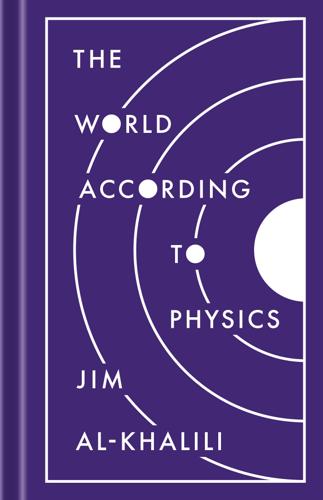
The World According to Physics
by
Jim Al-Khalili
Published 10 Mar 2020
You would need a light-year’s thickness of lead shielding to have even a fifty-fifty chance of blocking them. You could say that they are, to all intents and purposes, ‘dark matter’. However, they cannot be the dark matter that we are searching for because, being so light, they travel at near light speed—too fast to remain bound within galaxies and thus to explain galaxies’ anomalous properties. We refer to neutrinos as hot dark matter, because they move so fast. And as if the unresolved problem of dark matter weren’t big enough for physicists, we now know of another mysterious substance filling the universe, which plays a vital role in shaping it.
…
The observed higher-than-expected orbital speeds of these outer stars suggest that there must be some additional invisible stuff present, extending out beyond the visible matter we can see and providing the extra gravitational glue to stop the outer stars from flying off. Dark matter can also be seen from the way it curves space around it. This phenomenon manifests itself in the way light bends while on its path from very distant objects to our telescopes. The amount of bending can only be explained by the extra gravitational curvature of space provided by the dark matter of galaxies that the light passes on its way to us. So, what do we know about dark matter other than that it provides this necessary extra gravitational attraction? Might this not be accounted for by something less exotic than a new form of matter?
…
The existence of dark matter also seems necessary to explain the structure of the early universe. In contrast with normal matter, which through its interaction with the electromagnetic field kept its energy high, dark matter cooled down more quickly as the universe expanded and therefore started to clump together gravitationally earlier. One of the most important results in astrophysics in recent years has been the confirmation from sophisticated computer simulations of galaxy formation that we can only explain the real universe if it does indeed contain large quantities of dark matter. Without it, we would not get the rich cosmic structures we see today.
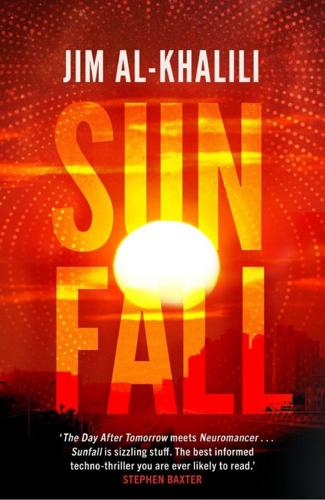
Sunfall
by
Jim Al-Khalili
Published 17 Apr 2019
Technical Note on Dark Matter The central premise of the odin project rests on the behaviour of dark matter. But how accurate is this scientifically? Well, let me make a couple of things clear. Firstly, dark matter is real. It is what holds galaxies together. In fact, there is five times more dark matter in the universe than normal matter. The problem is that, as of the time of writing in December 2018, we still don’t know what dark matter is made of. Whatever its constituent particles are, they are nothing we currently know of. Physicists refer to it as ‘non-baryonic matter’. We know dark matter feels the force of gravity but not the electromagnetic force (which is what allows it to pass through normal matter as though it weren’t there).
…
But, as I hope you all know by now, dark matter doesn’t feel the presence of normal matter, by which I mean it’s not affected by the electromagnetic force. So, just as dark matter passes through normal matter as if it weren’t there, it will also be oblivious to the presence of the magnets, regardless of how powerful those magnets are.’ The background murmuring began afresh as many in the audience suddenly understood what seemed to be a fundamental flaw in the scheme. Marc took a couple of steps closer to the front of the stage. ‘So, here’s the plan. We don’t make beams of neutralinos, the usual dark-matter particles, to begin with, but heavier versions of them.
…
His institute in China had been developing a mini dark-matter accelerator for the past five years and he’d been heavily involved in getting it funded. Now it seemed that it would play its part in the latest test of the Odin Project. It was to be placed on-board a ship that would float above the point where this beam would emerge on the other side of the planet. Darklab would itself produce a small amount of dark matter and fire it down into the sea to meet the Mag-4 pulse head-on. The tiny energy created would then be picked up by the vessel’s detectors. She turned to Qiang. ‘But if it’s just to see if two colliding dark-matter beams can create energy inside the Earth, wasn’t that what the Antarctic tests confirmed last month?’
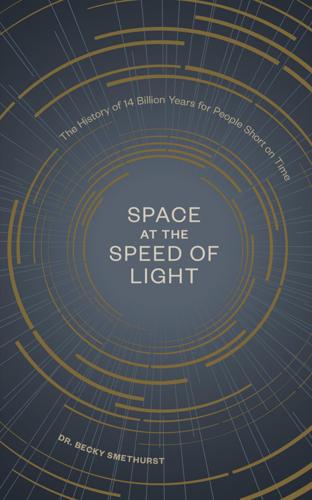
Space at the Speed of Light: The History of 14 Billion Years for People Short on Time
by
Becky Smethurst
Published 1 Jun 2020
We call the rest of the matter that doesn’t interact with light “dark matter.” It doesn’t give out light, or reflect or absorb it, so we have no way of “seeing” it. Unlike an isolated black hole, which traps light beyond its event horizon (we could, perhaps, class that as “absorbing” light), dark matter pervades the whole universe. Even in the solar system, we think there’s about two protons’ worth of dark matter in every teaspoon of space, and yet we’ve no way of interacting with it. So, how do we even know dark matter exists? Well, just like black holes, although light is not an option, dark matter does interact with gravity and so bends space in exactly the same way as normal matter.
…
But it does have some problems—the biggest being the fact that it doesn’t incorporate dark matter at all. So, there are now some particle physicists trying to extend their beautiful theory into something a bit clunkier to shoehorn dark matter in there. To do that, they need to find what dark matter is made of—by detecting some of it. How to search for something that tiny, something incapable of interacting with light or even other matter, for that matter, is a big problem. One method is to attempt to detect when a particle of dark matter collides with a normal particle of matter that we can detect. We should then be able to identify the change in momentum, or energy, of the other particle, like a cue ball hitting a colored ball in a game of pool.
…
What this finding suggested was that most of the mass in galaxies isn’t found in the center—it’s found on the outskirts. Yet when we look at a galaxy, we don’t see more stars on the outskirts; the greatest concentration of stars occurs in the center. So, that means there must be a huge amount of matter that we can’t see surrounding a galaxy, in something we’ve come to call a dark matter halo. The second piece of evidence for dark matter came from comparing how much mass gravity suggested was in galaxies to how much we could detect in starlight. As Einstein said, massive objects curve the spacetime that light travels along. This might sound like an odd concept, but lenses also change the path of light.

Collider
by
Paul Halpern
Published 3 Aug 2009
Another field eagerly awaiting the LHC findings is astronomy. Astronomers hope that new results in particle physics will help them unravel the field’s greatest mystery: the composition of dark matter and dark energy, two types of substances that affect luminous material but display no hint of their origin and nature. 9 Denizens of the Dark Resolving the Mysteries of Dark Matter and Dark Energy I know I speak for a generation of people who have been looking for dark-matter particles since they were grad students. I doubt . . . many of us will remain in the field if the L.H.C. brings home bad news. —JUAN COLLAR, KAVLI INSTITUTE FOR COSMOLOGICAL PHYSICS (NEW YORK TIMES, MARCH 11, 2007) There’s an urgency for LHC results that transcends the ruminations of theorists.
…
Apart from neutrinos, MACHOs, and WIMPs, another option, a hypothetical massive particle called the axion, postulated to play a role in quantum chromodynamics (the theory of the strong force) and tagged by some theorists as a leading dark-matter contender, has yet to be found. The search for the universe’s missing mass has been at an impasse. Enter the LHC to the rescue. Perhaps somewhere in its collision debris the secret key ingredients of cold dark matter will be revealed. Prime contenders would be the lightest supersymmetric companion particles, such as neutralinos, charginos, gluinos, photinos, squarks, and sleptons. Presuming they have energies on the TeV scale, each would present itself through characteristic decay profiles that would show up in tracking and calorimetry. If dark matter were the main cosmic mystery, physicists would simply be clenching their teeth, crossing their fingers, and waiting expectantly for results at the LHC or elsewhere to turn up a suitable prospect.
…
Something was pressing the gas pedal instead of the brakes—and it couldn’t be any of the known forces. University of Chicago theorist Michael Turner dubbed this unknown agent “dark energy.” While both have mysterious identities, dark energy could not be the same as dark matter. In contrast to dark matter, which would gravitate in the same way as ordinary matter, dark energy would serve as a kind of “antigravity,” causing outward acceleration. If dark matter walked into a party, it would serve as a graceful host introducing people and bringing them together, but if dark energy intruded, it would act like the riot police dispersing the crowd. Indeed, too much dark energy in the cosmos would be no fun at all—the universe would eventually tear itself apart in a catastrophic scenario called the Big Rip.
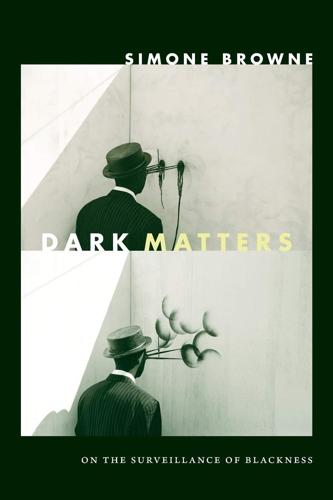
Dark Matters: On the Surveillance of Blackness
by
Simone Browne
Published 1 Oct 2015
DARK MATTERS DARK MATTERS ON THE SURVEILLANCE OF BLACKNESS SIMONE BROWNE Duke University PressDurham and London2015 © 2015 DUKE UNIVERSITY PRESS. All rights reserved Printed in the United States of America on acid-free paper ∞ Designed by Natalie F. Smith Typeset in Arno Pro by Graphic Composition, Inc., Athens, GA Library of Congress Cataloging-in-Publication Data Browne, Simone, [date] author. Dark matters : on the surveillance of blackness / Simone Browne. pages cm Includes bibliographical references and index. ISBN 978-0-8223-5919-7 (hardcover : alk. paper) ISBN 978-2-8223-5938-8 (pbk. : alk. paper) ISBN 978-0-8223-7530-2 (e-book) 1.
…
Its distribution cannot be measured; its properties cannot be determined; and so it remains undetectable. The gravitational pull of this unseen matter is said to move galaxies. Invisible and unknowable, yet somehow still there, dark matter, in this planetary sense, is theoretical. If the term “dark matter” is a way to think about race, where race, as Howard Winant puts it, “remains the dark matter, the often invisible substance that in many ways structures the universe of modernity,” then one must ask here, invisible to whom?18 If it is often invisible, then how is it sensed, experienced, and lived? Is it really invisible, or is it rather unseen and unperceived by many?
…
If one were to read these lectures “optimistically,” as Nicholas Mirzoeff has suggested, “had he lived longer, Fanon might have moved away from his emphasis on masculinity to imagine new modes of postrevolutionary gender identity, as part of this analysis of the racialized disciplinary society, a connection made by many radical black feminists in the United States from Angela Davis to Toni Cade Bambara and bell hooks.”9 I enter Dark Matters: On the Surveillance of Blackness with this sense of optimism in mind: that in Fanon’s works and in the writings of black feminist scholars, another mode of reading surveillance can be had. Dark Matters begins with a discussion of my failed attempt to get my hands on any information from the CIA pertaining to Fanon, his FBI FOIA file, the short notes that remain from his lectures on surveillance, and an excerpt from his letter to a friend recounting the “night and day surveillance” that he experienced as he was on the brink of death as a way to cue surveillance in and of black life as a fact of blackness.
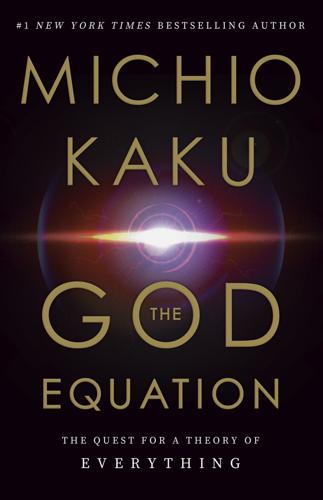
The God Equation: The Quest for a Theory of Everything
by
Michio Kaku
Published 5 Apr 2021
In fact, even today there are huge swimming pool–sized detectors (with vast amounts of fluids containing xenon and argon) that may one day capture the spark created by a photino collision. There are about twenty active groups searching for dark matter, often deep inside mine shafts below the Earth’s surface, away from interfering cosmic ray interactions. So it is conceivable that the collision of dark matter may be captured by our instruments. Once dark matter collisions have been detected, then physicists will study the properties of dark matter particles and then compare them to the predicted properties of photinos. If the predictions of string theory match the experimental results on dark matter, this would go a long way toward convincing physicists that this is the correct path.
…
Perhaps evidence for string theory is hidden all around us, but we have to listen for its echoes, rather than try to observe it directly. For example, one possible signal from hyperspace is the existence of dark matter. Until recently, it was widely believed that the universe is mainly made of atoms. Astronomers have been shocked to find that only 4.9 percent of the universe is made of atoms like hydrogen and helium. Actually, most of the universe is hidden from us, in the form of dark matter and dark energy. (We recall that dark matter and dark energy are two distinct things. Twenty-six point eight percent of the universe is made of dark matter, which is invisible matter that surrounds the galaxies and keep them from flying apart.
…
Search for Dark Matter Dark matter is strange, it is invisible, yet it holds the Milky Way galaxy together. But since it has weight and no charge, if you tried to hold dark matter in your hand it would sift through your fingers as if they weren’t there. It would fall right through the floor, through the core of the Earth, and then to the other side of the Earth, where gravity would eventually cause it to reverse course and fall back to your location. It would then oscillate between you and the other side of the planet, as if the Earth weren’t there. As strange as dark matter is, we know it must exist.

Underland: A Deep Time Journey
by
Robert Macfarlane
Published 1 May 2019
And the remaining missing 27 per cent of the universe’s mass is thought to be made up of dark matter – the particles of which almost wholly refuse to interact with baryonic matter. Dark matter is fundamental to everything in the universe; it anchors all structures together. Without dark matter, super-clusters, galaxies, planets, humans, fleas and bacilli would not exist. To prove and decipher the existence of dark matter, writes Kent Meyers, would be to approach ‘the revelation of a new order, a new universe, in which even light will be known differently, and darkness as well’. Dark-matter physicists work at the boundary of the measurable and the imaginable.
…
Dark-matter physicists work at the boundary of the measurable and the imaginable. They seek the traces that dark matter leaves in the perceptible world. Theirs is hard, philosophical work, requiring patience and something like faith: ‘As if’ – in the analogy of the poet and dark-matter physicist Rebecca Elson – ‘all there were, were fireflies / And from them you could infer the meadow’. Presently, the particle thought most likely to be the constituent of dark matter is known wryly as a WIMP – a weakly interacting massive particle. What we know of WIMPs suggests that they are heavy (up to more than a thousand times the weight of a proton), and that they were created in sufficiently vast quantities in the seconds after the birth of the universe to account for the missing mass.
…
Dave Webb (2006). 44 ‘For the first time in millennia . . . the vast majority of people a few generations ago ‘: Harrison, The Dominion of the Dead, p. 31. Chapter 3: Dark Matter Pages 55 shielded from the surface by 3,000 feet of halite, gypsum . . . clay and topsoil: on the strata sequence at Boulby, see ‘Lithological Log of Cleveland Potash Ltd’, Borehole Staithes No. 20, drilled September–December 1968 to a depth of c.3500 feet (BGS ID borehole 620319, BGS Reference NZ71NE14). 58 ‘the revelation of a new order . . . and darkness as well’: Kent Meyers, ‘Chasing Dark Matter in America’s Deepest Gold Mine’, Harper’s Magazine (May 2015), 27–37: 28. 58 ‘As if. . .you could infer the meadow ‘: Rebecca Elson, ‘Explaining Dark Matter’, in A Responsibility to Awe (Manchester: Carcanet, 2001), p. 71. 75 ‘I suddenly thought. . . it seems to have stuck’: Paul Crutzen, quoted in Howard Falcon-Lang, ‘Anthropocene: Have Humans Created a New Geological Age?’

The Great Mental Models: General Thinking Concepts
by
Shane Parrish
Published 22 Nov 2019
_ It was Rubin’s observations of the Andromeda galaxy that led to her to collect the first evidence in support of the theory of dark matter—a substance that does not emit energy or light. Dark matter is an excellent theory with a lot of explanatory power. As Lisa Randall explains in Dark Matter and the Dinosaurs, measurements of dark matter so far fit in exactly with what we understand about the Universe. Although we can’t see it, we can make predictions based on our understanding of it, and test those predictions. She writes, “It would be even more mysterious to me if the matter we can see with our eyes is all the matter that exists.”9 Dark matter is currently the simplest explanation for certain phenomena we observe in the Universe.
…
“How Vera Rubin confirmed dark matter.” Astronomy.com, October 4, 2016. Retrieved from: http://www.astronomy.com/news/2016/10/vera-rubin 7 Larsen, Kristine. “Vera Cooper Rubin.” Jewish Women: A Comprehensive Historical Encyclopedia. 1 March 2009. Jewish Women’s Archive. Retrieved from: https://jwa.org/encyclopedia/article/rubin-vera-cooper 8 Panek, Richard. “Vera Rubin Didn’t Discover Dark Matter.” Scientific American, December 29, 2016. Retrieved from: https://blogs.scientificamerican.com/guest-blog/vera-rubin-didnt-discover-dark-matter/ 9 Randall, Lisa. Dark Matter and the Dinosaurs. New York: HarperCollins, 2015. 10 Sagan, Carl.
…
One possible explanation was something that had been theorized as far back as 1933, by Swiss astrophysicist Fritz Zwicky, who coined the phrase “dark matter” to describe a mass we couldn’t see, but which was influencing the behavior of the orbits in the galaxies. Dark matter became the simplest explanation for the observed phenomenon, and Vera Rubin has been credited with providing the first evidence of its existence. What is particularly interesting is that to this day no one has ever actually discovered dark matter. Why are more complicated explanations less likely to be true? Let’s work it out mathematically. Take two competing explanations, each of which seem to equally explain a given phenomenon.

The Infinite Book: A Short Guide to the Boundless, Timeless and Endless
by
John D. Barrow
Published 1 Aug 2005
Their heaviness means they move more slowly and they can condense into regions small enough to explain the existence of cold dark matter in galaxies. This is an exciting frontier of modern cosmological research that brings together particle physicists with their candidates for the cold dark matter particles, astronomers with their observations of how much dark matter there seems to be, computational astrophysicists running huge computer codes to simulate the formation of galaxies dominated by slow-moving dark matter, and experimental physicists searching for the tell-tale signatures of the dark matter particles flying through their detectors deep underground. Until just a few years ago the observations pointed stubbornly to a Universe that did not contain the critical density of material needed to halt its expansion in the future.
…
Remarkably, wherever we do this we discover that things are moving as if they are under the influence of the gravity of about ten times more matter than we see shining in the dark. We call this other unseen material 'cold dark matter'. A small fraction of this dark matter is composed of ordinary atoms and molecules, but the identity of the rest is a mystery. (see Figure 7.5). Two of the great quests of modern cosmology are to pin down the quantity and the quality of the cold dark matter. Fig 7.4 A composite satellite photograph of the Earth at night.11 Notice that the most brightly illuminated areas are big Western cities. The regions of greatest population in Asia and Africa are almost completely dark.
…
There was growing evidence that they possessed a tiny mass, about ten billionths of the mass of a hydrogen atom, and that seemed to give just the right density of neutrinos to account for the mysterious abundance of cold dark matter today. Unfortunately, over the last twenty years it has become clear that the known types of neutrino, of which there are three, cannot be the cosmic dark matter. A combination of laboratory experiments and observations of stars where neutrinos are produced has constrained their masses to be so low that they are almost certainly not the cosmic dark matter. Equally problematic have been the studies, using some of the most powerful computers in the world, of what would happen to the luminous matter if it felt the gravitational pull of a universe of lightweight neutrinos.
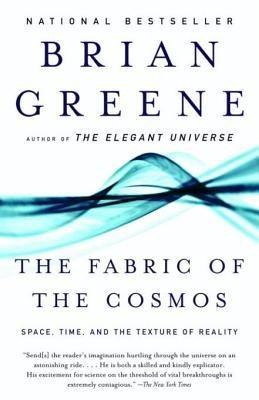
The Fabric of the Cosmos
by
Brian Greene
Published 1 Jan 2003
And so, like an audience that infers the presence of a dark-robed mime even though it sees only his white-gloved hands flitting to and fro on the unlit stage, astronomers concluded that the universe must be suffused with dark matter—matter that does not clump together in stars and hence does not give off light, and that thus exerts a gravitational pull without revealing itself visibly. The universe’s luminous constituents—stars— were revealed as but floating beacons in a giant ocean of dark matter. But if dark matter must exist in order to produce the observed motions of stars and galaxies, what’s it made of? So far, no one knows. The identity of the dark matter remains a major, looming mystery, although astronomers and physicists have suggested numerous possible constituents ranging from various kinds of exotic particles to a cosmic bath of miniature black holes.
…
But even without determining its composition, by closely analyzing its gravitational effects astronomers have been able to determine with significant precision how much dark matter is spread throughout the universe. And the answer they’ve found amounts to about 25 percent of the critical density.21 Thus, together with the 5 percent found in visible matter, the dark matter brings our tally up to 30 percent of the amount predicted by inflationary cosmology. Figure 10.5 A galaxy immersed in a ball of dark matter (with the dark matter artificially highlighted to make it visible in the figure). Well, this is certainly progress, but for a long time scientists scratched their heads, wondering how to account for the remaining 70 percent of the universe, which, if inflationary cosmology was correct, had apparently gone AWOL.
…
These are the most standoffish of the supersymmetric particles—they could nonchalantly pass through the entire earth without the slightest effect on their motion—and hence could easily have escaped detection.9 From calculations of how many of these particles would have been produced in the big bang and survived until today, physicists estimate that they would need to have mass on the order of 100 to 1,000 times that of the proton to supply the dark matter. This is an intriguing number, because various studies of supersymmetric-particle models as well as of superstring theory have arrived at the same mass range for these particles, without any concern for dark matter or cosmology. This would be a puzzling and completely unexplained confluence, unless, of course, the dark matter is indeed composed of supersymmetric particles. Thus, the search for supersymmetric particles at the world’s current and pending accelerators may also be viewed as searches for the heavily favored dark matter candidates. More direct searches for the dark matter particles streaming through the earth have also been under way for some time, although these are extremely challenging experiments.

How to Spend a Trillion Dollars
by
Rowan Hooper
Published 15 Jan 2020
Rubin’s work made it impossible to ignore: her results showed that there was some invisible matter in the galaxies she was looking at that caused them to spin so fast. The stuff became known as dark matter, and detailed observations over the years since have shown that it makes up 27 per cent of the universe. We know agonisingly little about dark matter. We’ve seen the epic fallout that has occurred when two galaxies collide into each other (an event that will befall our galaxy and Andromeda in 4.5 billion years), and at the crash site astronomers can see the gravitational distortion that the dark matter makes. We know that massive objects can bend light and, at the site of a collision between two groups of galaxies known as the Bullet Cluster, we see distortions of light caused by the dark matter.1 The chilling thing is that the visible matter of the galaxies – the billions of stars and planets and dust clouds they contain – cause obvious and measurable explosions as they collide, but the dark matter counterparts of the colliding galaxies just pass through each other.
…
We must support people in coastal areas to give coral reefs every chance possible while we try at a higher level to slow global emissions. $ $ $ WE HAVE NO REAL IDEA how many species we share the planet with. For biologists, this is our dark matter, the thing that we really ought to know about. The problem isn’t quite as bad as the one physicists have with dark matter (as we’ll see in chapter 9), because the species are out there and we can in principle go and find them. It’s just there are so many, we haven’t got round to it. We’ve been trying in earnest since 1758, when the Swedish botanist Carl Linnaeus devised the system of species classification that we still use today, assigning each life form a Latinised genus and a species name, both written in italics.
…
We know that massive objects can bend light and, at the site of a collision between two groups of galaxies known as the Bullet Cluster, we see distortions of light caused by the dark matter.1 The chilling thing is that the visible matter of the galaxies – the billions of stars and planets and dust clouds they contain – cause obvious and measurable explosions as they collide, but the dark matter counterparts of the colliding galaxies just pass through each other. Herein lies the big problem with trying to study it: we can’t get hold of the stuff. We know it is under gravitational influence, but it seems to have no response to other forces we know about. $ $ $ PROBLEM 5: ANTIMATTER I had a bet with my father when I was very young.
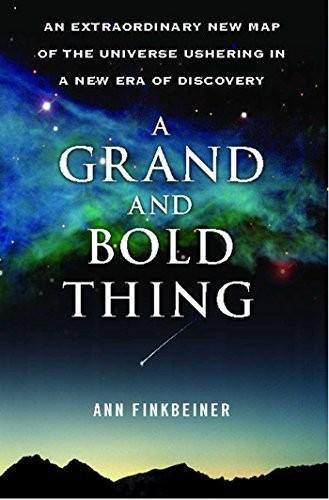
A Grand and Bold Thing: An Extraordinary New Map of the Universe Ushering
by
Ann K. Finkbeiner
Published 16 Aug 2010
And now, after recombination, the universe was a gas of hydrogen atoms. The mountains of dark matter were still growing, connecting up into chains. All around the dark matter mountains, the ripples of ordinary hydrogen are still spreading, overlapping with other ripples. All together the ordinary and dark matter have laid down a shadowy pattern of lower and higher densities. Along this pattern, gravity begins to win, acting on dark matter and ordinary hydrogen alike. Gravity pulls the hydrogen into the mountains of dark matter, pulls the dark matter into the rings of hydrogen, mixes the dark and ordinary matter together.
…
Matter is of two kinds: the protons and electrons that make up ordinary atoms and the extraordinary particles—no one knows what they are—that outweigh the ordinary ones by six to one and that are called dark matter. And gravity is gravity: it pulls on everything, dark and ordinary matter alike, and the bigger something is and the closer you are to it, the more strongly you’re pulled. At a redshift of 3,000, matter and light were in a kind of uproarious equilibrium. The universe was expanding 120,000 times faster than it is now, and was 8,000 K; it was a plasma so furiously hot that the matter, the protons and electrons and dark matter, all raced around freely. The photons of light traveled with them; they couldn’t travel alone or very far in this dense universe before electrons would scatter them off in other directions, and scattered photons meant the universe was opaque.
…
Gravity would have liked to make the cooler, denser hills bigger, but with ordinary matter, it couldn’t: at these temperatures, the photons in the hills carried enormously more energy than the protons and blew the protons out of the hills into rings, shells around the hills, little ripples that spread out farther and farther, so small—only one part in 100,000—that they hardly disturbed the universal equilibrium. Those energetic photons, however, couldn’t touch dark matter, so gravity was free to pile the hills of dark matter higher, then higher yet, up into mountains. And the universe kept expanding and cooling, dark and chaotic. When the universe was around 400,000 years old, at redshift 1,000, it dramatically shifted state. The temperature had fallen to 3,000K, and photons had now lost enough energy that they could no longer interfere with protons.

Endless Forms Most Beautiful: The New Science of Evo Devo
by
Sean B. Carroll
Published 10 Apr 2005
This is the “dark matter” of the genome. Just as dark matter in the universe governs the behavior of visible bodies, the dark matter in our DNA controls where and when genes are used in development. This chapter is all about the dark matter in DNA and how, by virtue of controlling how tool kit genes are used, it contains the instructions for making and patterning body parts. These instructions are embedded in the dark DNA as genetic switches (my second analogy). You may not have heard about switches before this book. They have not received nearly as much attention, either in the lab or in the press, as they deserve.
…
Seeing in the Dark In cosmology, biology, as well as other sciences, the existence of particular entities is detected either directly, by observation, or indirectly, by observing the effects on other entities that are more easily visualized or measured. The evidence for dark matter in the universe is all indirect, based upon observation of the velocities and rotation of galaxies and the deduction that there must be a great deal of mass inside galaxies that cannot be seen. Cosmologists and physicists are not yet sure what dark matter is made of. Our understanding of dark matter in the genome is much better because we know what it is made of (DNA) and we can isolate it and study its properties both directly and indirectly.
…
One of the most powerful ways to study noncoding “dark” DNA is to hook a piece of it up to a gene that encodes a protein that is easily visualized, such as an enzyme that will make a colored reaction product, or a protein that will fluoresce in a beam of light. By inserting these engineered pieces of DNA back into a genome and then visualizing color patterns in a microscope, we can see what instructions, if any, are contained in a given piece of dark matter (a stripe here, a spot there, etc.). Most dark matter contains no instructions and is just space-filling “junk” accumulated over the course of evolution. In humans, only about 2 to 3 percent of our dark matter contains genetic switches that control how genes are used. I will focus all of this chapter on how genetic switches work to control animal development, and much of the rest of the book on how changes in these switches shape evolution.
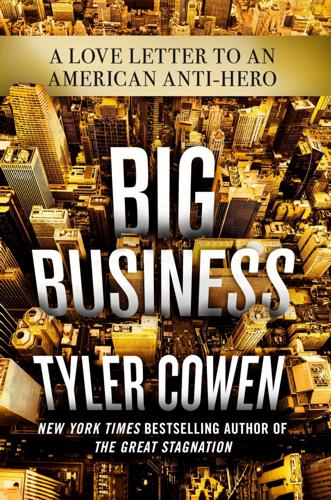
Big Business: A Love Letter to an American Anti-Hero
by
Tyler Cowen
Published 8 Apr 2019
But we give it all back by just investing in your T-bills. You Americans earn more by investing in businesses overseas.” That is another way of putting the “dark matter” point, and again it reflects the American willingness, and indeed eagerness, to seek out higher-yielding (and riskier) equity-based investments. There is no general agreement on how large this “dark matter” phenomenon might be. Hausmann and Sturzenegger in their original work suggested a figure as high as 5.6 percent of GDP per year, with an accumulated stock of dark matter as high as 40 percent of GDP (a 2006 estimate). If that is true, rather than foreigners having a net claim of $2.5 trillion on the United States in the form of capital assets (a 2005 estimate), the United States has a net claim of $724 billion on foreigners—a big difference in value.16 A lot of subsequent writers have expressed skepticism that dark matter gains could be so high, and the dark matter hypothesis fell out of favor during the financial crisis, when American investments overseas lost a lot of their value and the chaos made a lot of these values yet harder to measure.
…
This American overseas investment probably represents a significant net gain to the citizens of the United States.15 One way of thinking about this net gain is to consider that domestic U.S. firms invest a good deal overseas, and at fairly high rates of return. The gains from these investments are sometimes called “dark matter,” because the gains cannot be observed easily and thus their size is the subject of debate. In economics, the “dark matter hypothesis” first became popular in 2005–2006, when the U.S. trade deficit was unusually large but, contrary to many predictions, the dollar showed no signs of collapsing and most of the time was not even falling. How could this be? Some economists, most notably Ricardo Hausmann and Federico Sturzenegger, suggested a new hypothesis: that America’s actual trade deficit might be much lower than measured if we took into account intangible American exports overseas, typically bundled with American investment abroad.
…
To make that more concrete, if there is a McDonald’s franchise in Europe, America is also exporting some brand-name capital, some organizational know-how, and some managerial expertise, but these will bring future rather than current returns, unlike exports narrowly measured. The upshot is that America’s net foreign position is much better than it looks on paper. And that is why the phrase “dark matter” is used, as a hat tip to a hypothesis in physics that says most of the matter in the universe is essentially invisible to our measuring instruments. Of course, this point about economic dark matter is a restatement of the earlier observation that American capital markets help bring higher rates of return to this country. I once had a chat with a leading Korean economist, who lamented to me: “We work so much harder than you do to export!
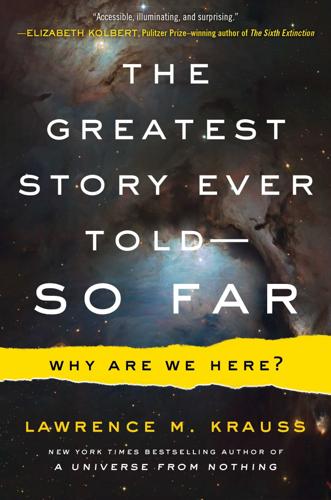
The Greatest Story Ever Told--So Far
by
Lawrence M. Krauss
Published 21 Mar 2017
Moreover, calculations that I and others performed more than thirty years ago showed that the remnant abundance today of the lightest supersymmetric particle left over after the Big Bang would naturally be in the range so that it could be the dark matter dominating the mass of galaxies. In that case our galaxy would have a halo of dark matter particles whizzing throughout it, including through the room in which you are reading this. As a number of us also realized some time ago, this means that if one designs sensitive detectors and puts them underground, not unlike, at least in spirit, the neutrino detectors that already exist underground, one might directly detect these dark matter particles. Around the world a half dozen beautiful experiments are now going on to do just that.
…
So, we are in potentially the best of times or the worst of times. A race is going on between the detectors at the LHC and the underground direct dark matter detectors to see who might discover the nature of dark matter first. If either group reports a detection, it will herald the opening up of a whole new world of discovery, leading potentially to an understanding of Grand Unification itself. And if no discovery is made in the coming years, we might rule out the notion of a simple supersymmetric origin of dark matter—and in turn rule out the whole notion of supersymmetry as a solution of the hierarchy problem. In that case we would have to go back to the drawing board, except if we don’t see any new signals at the LHC, we will have little guidance about which direction to head in order to derive a model of nature that might actually be correct.
…
Beyond these particles, as I shall soon describe, we have every reason to expect that other elementary particles exist that have never been observed. While these particles, which we think make up the mysterious dark matter that dominates the mass of our galaxy and all observed galaxies, may be invisible to our telescopes, our observations and theories nevertheless suggest that galaxies and stars could never have formed without the existence of dark matter. And at the heart of all of the forces governing the dynamical behavior of everything we can observe is a beautiful mathematical framework called gauge symmetry. All of the known forces, strong, weak, electromagnetic, and even gravity, possess this mathematical property, and for the three former examples, it is precisely this property that ensures that the theories make mathematical sense and that nasty quantum infinities disappear from all calculations of quantities that can be compared to experiment.
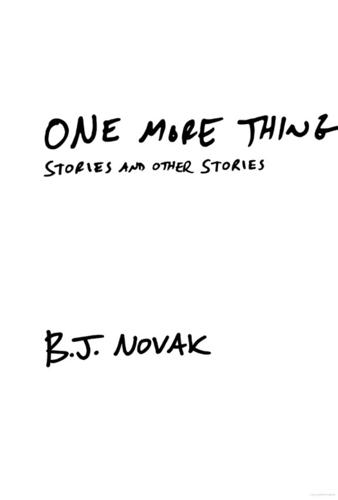
One More Thing: Stories and Other Stories
by
B. J. Novak
Published 4 Feb 2014
But those who were there for both contests knew what was so special about what they had witnessed: slow and steady wins the race, till truth and talent claim their place. Dark Matter “And that’s the puzzling thing about dark matter,” said the scientist at the end of our planetarium tour. “It makes up over ninety percent of the universe, and yet nobody knows what it is!” People on the tour chuckled politely, like Wow, isn’t that a fun fact? But I looked closer at the scientist, and I could tell something from the smirky little smile on his fat smug face: This motherfucker knew exactly what dark matter was. “So as you look up at the skies tonight, I hope you have a little more perspective, knowing more about what we know—and don’t know—about our vast and magical …” etcetera etcetera.
…
Names, characters, places, and incidents either are the product of the author’s imagination or are used fictitiously. Any resemblance to actual persons, living or dead, events, or locales is entirely coincidental. Jacket design by Hum Creative v3.1 To the Reader CONTENTS Cover Title Page Copyright Dedication The Rematch Dark Matter No One Goes to Heaven to See Dan Fogelberg Romance, Chapter One Julie and the Warlord The Something by John Grisham The Girl Who Gave Great Advice All You Have to Do ’Rithmetic The Ambulance Driver Walking on Eggshells (or: When I Loved Tony Robbins) The Impatient Billionaire and the Mirror for Earth Missed Connection: Grocery spill at 21st and 6th 2:30 pm on Wednesday I Never Want to Walk on the Moon Sophia The Comedy Central Roast of Nelson Mandela They Kept Driving Faster and Outran the Rain The Man Who Invented the Calendar The Ghost of Mark Twain The Beautiful Girl in the Bookstore MONSTER: The Roller Coaster Kellogg’s (or: The Last Wholesome Fantasy of the Middle-School Boy) The Man Who Posted Pictures of Everything He Ate Closure Kindness Among Cakes Quantum Nonlocality and the Death of Elvis Presley If I Had a Nickel A Good Problem to Have Johnny Depp, Fate, and the Double-Decker Hollywood Tour Bus Being Young Was Her Thing Angel Echeverria, Comediante Superpopular The Market Was Down The Vague Restaurant Critic One of These Days, We Have to Do Something About Willie Wikipedia Brown and the Case of the Missing Bicycle Regret Is Just Perfectionism Plus Time Chris Hansen at the Justin Bieber Concert Great Writers Steal Confucius at Home War If You Love Something Just an Idea Heyyyyy, Rabbits The Best Thing in the World Awards Bingo Marie’s Stupid Boyfriend Pick a Lane “Everyone Was Singing the Same Song”: The Duke of Earl Recalls His Trip to America in June of 1962 The Pleasure of Being Right Strange News Never Fall in Love The World’s Biggest Rip-Off The Walk to School on the Day After Labor Day Kate Moss Welcome to Camp Fantastic for Gifted Teens There Is a Fine Line Between Why and Why Not The Man Who Told Us About Inflatable Women A New Hitler Constructive Criticism The Bravest Thing I Ever Did Rome The Literalist’s Love Poem J.
…
“I can’t imagine they would have gotten the rings of Saturn wrong,” he said. “Oh, unless maybe you mean the mural at the entrance? The one for tots?” “Yeah, that,” I said. We walked toward the corner and when we got there I grabbed the string of the tour badge around his neck and twisted it and choked him hard. “What is dark matter?” I said. “What is it?” “I don’t know,” he coughed. “Nobody knows.” I pulled the cord tighter. “We can measure its effects,” he said. “We only know what it isn’t.” “Well, work backwards, bitch! You know what it isn’t, so what is it?” I pulled the cord tighter, and with my other hand I started pinching him in cutesy, creepy ways.
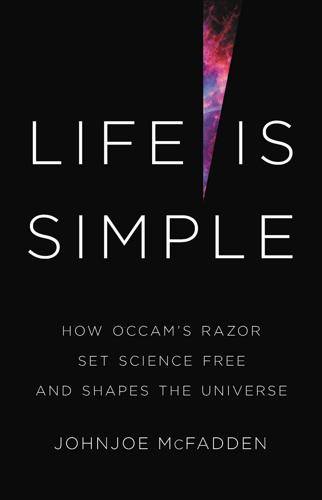
Life Is Simple: How Occam's Razor Set Science Free and Shapes the Universe
by
Johnjoe McFadden
Published 27 Sep 2021
One of the most controversial is the theory put forward by theoretical physicists Lisa Randall and Matthew Reece, of Harvard University, Massachusetts. They reason that dark matter killed the dinosaurs.3 Randall and Reece proposed that our solar system’s rotation around the galaxy periodically brings it close to a thin disc of dark matter in the galactic plane that disturbs the orbits of comets and asteroids to send showers of rocky destruction tumbling towards the earth. At first sight, it would seem that both neutrinos and dark matter are entities beyond necessity in our universe, particularly if you happened to be a dinosaur. To discover why neither we, nor dinosaurs, would have existed without them, we need to probe the origins of matter and particularly its living variety.
…
At first, Rubin didn’t believe the data but she and Ford repeated the measurements for more and more stars and obtained exactly the same result. They eventually concluded that spiral galaxies contained about six times more matter than visible stars and that this dark matter was responsible for accelerating the outer stars of the Andromeda galaxy.5 Rubin and Ford’s observations have subsequently been confirmed by many more observations of distant galaxies. Each seems to be surrounded by a halo of unseen cold dark matter. Continuing star formation is due to this invisible halo of dark matter. The halo acts as a kind of gravity shield that deflects much of the supernovae ejecta back into the galaxy. There it can condense to form new stars, such as the sun, but also rocky planets such as the earth.
…
Far from being entities beyond necessity, the universe would be a very dull place without these almost massless neutral particles. A dark ecology Dark matter, the material that may have been responsible for exterminating the dinosaurs, makes up about 27 per cent of the universe. A whopping 68 per cent of our universe is made of another mysterious entity known as dark energy. The visible sun, stars and planets account for only 5 per cent of matter-energy. Why has the universe wasted so much of its resources making such a lot of dark and apparently superfluous stuff? In fact, far from being an entity beyond necessity, dark matter has played at least two key roles in our existence. The first was to help make galaxies.
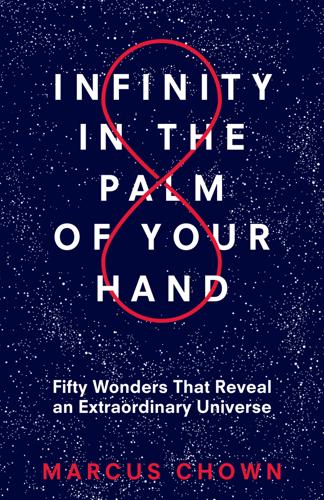
Infinity in the Palm of Your Hand: Fifty Wonders That Reveal an Extraordinary Universe
by
Marcus Chown
Published 22 Apr 2019
In fact, there are recent claims that some but not all of this missing stuff has actually been found in the guise of hot filaments of gas, forming a kind of web of tenuous matter between the galaxies.1 But, in addition to the 4.9 percent ordinary matter, 26.8 percent—almost six times as much—is in the form of dark matter. This gives out no light or at least too little light to be detected by our most sensitive astronomical instruments. We know of its existence only because its gravity tugs at the visible stars and galaxies, causing them to move in a manner different from the prediction of Newton’s law of gravity. As for the identity of the dark matter, your guess is as good as mine. Speculations range from as-yet-undiscovered subatomic particles to fridge-sized black holes surviving from the earliest moments of the Big Bang to relics from the future in which time runs backwards (seriously!).
…
But, in addition to the 4.9 percent ordinary matter and the 26.8 percent dark matter, a whopping 68.3 percent of the mass of the universe is dark energy (remember: all energy has an equivalent mass—it weighs something—according to Einstein’s famous E = mc2 formula). The dark energy is invisible, fills all of space, and has repulsive gravity. The repulsive gravity is speeding up the expansion of the universe, which is how the dark energy was discovered in 1998. That’s not long ago at all. Just imagine. Until only a couple of decades ago, science had overlooked this major mass component of the universe. Now, if physicists are baffled by dark matter, they are utterly at sea when it comes to dark energy.
…
The new planet was named Neptune. Its discovery created a sensation and made a superstar of Le Verrier.2 It even set him on a true wild-goose chase—searching for a hypothetical planet orbiting closer to the sun than Mercury and dubbed “Vulcan.”3 Newton’s theory of gravity has proved to be the gift that keeps on giving. Dark matter is the Neptune of today. We know it outweighs ordinary matter by a factor of six because we can see it tugging with its gravity on the visible stars and galaxies. But, as yet, we have no idea what it is. 23. LORD OF THE RINGS Galileo thought Saturn was a planet with…ears “The scientific theory I like best is that the rings of Saturn are composed entirely of lost airline luggage.”

Neutrino Hunters: The Thrilling Chase for a Ghostly Particle to Unlock the Secrets of the Universe
by
Ray Jayawardhana
Published 10 Dec 2013
Since neutrinos are the second most numerous particles in the universe after photons, even if each one has only a smidgen of mass, the total could add up to a lot. So some cosmologists had hoped that neutrinos would account for much of the mysterious dark matter, whose presence is only “seen” through its gravitational influence on galaxies and galaxy clusters. But the neutrino’s mass has turned out to be way too tiny to explain dark matter. That means some other particle or particles, hitherto unknown to physics, must exist. The hunt is on, but no good candidate has turned up yet. The findings of Super-K and SNO also set the stage for other neutrino experiments, focused on making precise measurements of how different neutrino flavors morph into one another.
…
Understanding CP violation is central to figuring out how matter came to predominate over antimatter in the early universe. Crab Nebula: The gaseous remnant of the supernova that was seen in 1054, located in the constellation Taurus, with a neutron star near its center dark matter: Invisible material whose existence is inferred from its gravitational influence on visible matter in galaxies and galaxy clusters. Dark matter appears to be much more abundant than normal matter, but what it’s made of remains a mystery. At one time, scientists thought that neutrinos could be a major constituent, but now we know that their mass is too small. deuterium: An isotope of hydrogen whose nucleus contains a neutron as well as a proton, instead of a lone proton.
…
For astronomers, who have had to rely almost exclusively on electromagnetic radiation in the form of visible light, radio waves, and X-rays from distant celestial bodies, neutrinos offer an exciting new window on the most violent phenomena in nature. In fact, neutrinos may have a lot to do with triggering spectacular stellar explosions in the first place. Some scientists have proposed that a sterile variety of neutrinos could account for so-called dark matter, which makes up nearly a quarter of the universe but remains undetected except through its gravitational tug on galaxies. The imprints left by primordial neutrinos on the faint afterglow of the big bang, which is still measurable with microwave telescopes, could reveal the conditions very soon after the universe was born.
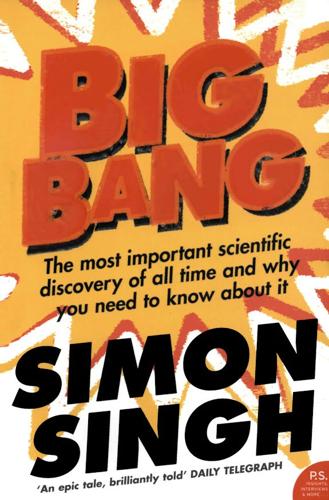
Big Bang
by
Simon Singh
Published 1 Jan 2004
Other candidates for dark matter come under the heading of weakly interacting massive particles (WIMPs), which includes various types of particles that do not form objects like MACHOS, but which might permeate the entire universe, hardly making their presence felt, except through the force of gravity. As yet, there are only vague clues to the nature and amount of dark matter in the universe, which is rather frustrating because cosmologists need a respectable understanding of dark matter before they can fill in some gaps in the Big Bang model. For example, the gravitational influence of dark matter would have played a major role in attracting more ordinary matter in the early stages of the universe, thereby helping to form galaxies. And, at the other end of the timeline, dark matter might play a decisive role in the ultimate fate of the universe. The universe has been expanding ever since the Big Bang, but all of the mass of the universe should have been pulling the matter inwards and gradually slowing down the expansion.
…
Something else that keeps Big Bang cosmologists awake at night is dark matter. Observations show that stars orbiting the periphery of galaxies have tremendous speeds, yet the gravitational pull of all the stars closer to the heart of the galaxy is not enough to prevent these peripheral stars from flying off into the cosmos. Therefore, cosmologists believe that there must be vast quantities of dark matter in a galaxy, namely matter that does not shine but which exerts enough of a gravitational pull to keep the stars in their orbits. Although the idea of dark matter dates back to Fritz Zwicky at Mount Wilson in the 1930s, cosmologists are still unsure of its true nature, which is rather embarrassing as calculations imply that the universe has more dark matter than ordinary stellar matter.
…
Although the idea of dark matter dates back to Fritz Zwicky at Mount Wilson in the 1930s, cosmologists are still unsure of its true nature, which is rather embarrassing as calculations imply that the universe has more dark matter than ordinary stellar matter. Some candidates for dark matter are so-called massive compact halo objects (MACHOs), a category which includes black holes, asteroids and giant Jupiter-like planets. We would not see such objects in a galaxy, because they do not shine, but they would all contribute to the gravitational attraction within a galaxy. Other candidates for dark matter come under the heading of weakly interacting massive particles (WIMPs), which includes various types of particles that do not form objects like MACHOS, but which might permeate the entire universe, hardly making their presence felt, except through the force of gravity.
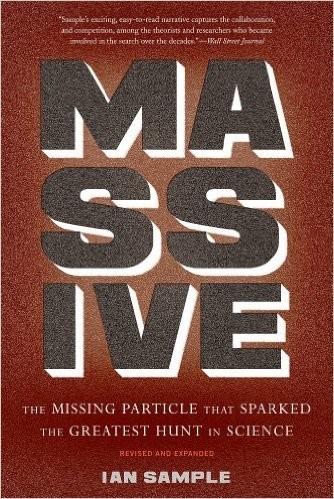
Massive: The Missing Particle That Sparked the Greatest Hunt in Science
by
Ian Sample
Published 1 Jan 2010
Observations of our cosmic neighborhood have led scientists to notch up 70 percent of whatever’s out there to dark energy, the mysterious force that is driving the expansion of the universe. No one knows what dark energy is, and finding out is a major goal in physics. The Standard Model describes but 4 percent of the matter we can see in space. The rest, about a quarter, is dark matter. The name is intentionally unilluminating. Dark matter doesn’t shine or radiate heat, and you can’t see it by bouncing light off it. Many theorists think dark matter is made of supersymmetric particles called “neutralinos,” the lightest kind the supersymmetry theory predicts. Not everyone is a fan of supersymmetry. Critics challenge aficionados with a simple question: If the universe is supersymmetric, where are all the other particles?
…
“It would be really strange if everything that exists out there was stuff that our bodies feel. There is simply no reason why we should be so special,” he says. Scientists already know that the universe contains matter that we cannot see or feel. There are vast clumps of dark matter that lurk around galaxies that only reveal their presence by exerting a gravitational pull on the celestial objects around them. Cosmologists believe that dark matter makes up around a quarter of the mass of the universe. How are these worlds hidden from us? Take a good look at the world around you. Everything, including this book in your hands and the chair you are sitting on, is made up from simple building blocks.
…
By far the largest is the aptly named Atlas detector, from “A Toroidal LHC ApparatuS,” which is so big it would barely fit in an Olympic-sized swimming pool. The 7,000-metric-ton Atlas and the not-so-small CMS detector were designed with the Higgs particle in mind. They might see far more, though, such as exotic particles of dark matter or extra dimensions. The Higgs boson might pop into existence in any of several ways inside the Large Hadron Collider, but scientists predict the most likely route to be when two gluons—the particles that bind quarks together inside protons—slam together and fuse. The energy released in the collision would theoretically create a Higgs particle with ease, though it would decay immediately afterward.

From eternity to here: the quest for the ultimate theory of time
by
Sean M. Carroll
Published 15 Jan 2010
An earlier version of this argument can be found in Penrose (1979). 241 Most of the matter in the universe—between 80 percent and 90 percent by mass—is in the form of dark matter, not the ordinary matter of atoms and molecules. We don’t know what the dark matter is, and it’s conceivable that it takes the form of small black holes. But there are problems with that idea, including the difficulty of making so many black holes in the first place. So most cosmologists tend to believe that the dark matter is very likely to be some sort of new elementary particle (or particles) that hasn’t yet been discovered. 242 Black-hole entropy increases rapidly as the black hole gains mass—it’s proportional to the mass squared.
…
But matter itself comes in different forms: “ordinary matter,” including all of the kinds of particles we have ever discovered in experiments here on Earth, and “dark matter,” some other kind of particle that can’t be anything we’ve yet directly seen. The mass (and therefore energy) in ordinary matter is mostly in the form of atomic nuclei—protons and neutrons—but electrons also contribute. So ordinary matter includes you, me, the Earth, the Sun, stars, and all the gas and dust and rocks in space. We know how much of that stuff there is, and it’s not nearly enough to account for the gravitational fields observed in galaxies and clusters. So there must be dark matter, and we’ve ruled out all known particles as candidates; theorists have invented an impressive menu of possibilities, including “axions” and “neutralinos” and “Kaluza-Klein particles.”
…
So there must be dark matter, and we’ve ruled out all known particles as candidates; theorists have invented an impressive menu of possibilities, including “axions” and “neutralinos” and “Kaluza-Klein particles.” All told, ordinary matter makes up about 4 percent of the energy in the universe, dark matter makes up about 22 percent, and dark energy makes up about 74 percent. Trying to create or detect dark matter directly is a major goal of modern experimental physics. See Hooper (2007), Carroll (2007), or Gates (2009) for more details. 48 So how much energy is there in the dark energy, anyway? It’s about one calorie per cubic centimeter. Note that the “calories” used to measure the energy content of food are actually kilocalories (1,000 standard calories).
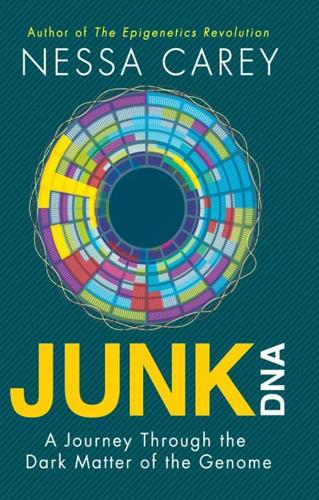
Junk DNA: A Journey Through the Dark Matter of the Genome
by
Nessa Carey
Published 5 Mar 2015
Typeset in Janson Text by Marie Doherty Printed and bound in the UK by Clays Ltd, St Ives plc For Abi Reynolds, who is always by my side And for Sheldon – good to see you again Contents Acknowledgements Notes on Nomenclature An Introduction to Genomic Dark Matter 1. Why Dark Matter Matters 2. When Dark Matter Turns Very Dark Indeed 3. Where Did All the Genes Go? 4. Outstaying an Invitation 5. Everything Shrinks When We Get Old 6. Two is the Perfect Number 7. Painting with Junk 8. Playing the Long Game 9. Adding Colour to the Dark Matter 10. Why Parents Love Junk 11. Junk with a Mission 12. Switching It On, Turning It Up 13. No Man’s Land 14. Project ENCODE – Big Science Comes to Junk DNA 15.
…
Consequently, throughout much of this book we will explore the darkness by using the torch of human genetics. There are many ways to begin shining a light on the dark matter of our genome, so let’s start with an odd but unassailable fact to anchor us. Some genetic diseases are caused by mutations in junk DNA, and there is probably no better starting point for our journey into the hidden genomic universe than this. 1. Why Dark Matter Matters Sometimes life seems to be cruel in the troubles it piles onto a family. Consider this example. A baby boy was born; let’s call him Daniel. He was strangely floppy at birth, and had trouble breathing unassisted.
…
JUNK DNA Also by Nessa Carey The Epigenetics Revolution JUNK DNA A Journey Through the Dark Matter of the Genome NESSA CAREY Published in the UK in 2015 by Icon Books Ltd, Omnibus Business Centre, 39–41 North Road, London N7 9DP email: info@iconbooks.com www.iconbooks.com Sold in the UK, Europe and Asia by Faber & Faber Ltd, Bloomsbury House, 74–77 Great Russell Street, London WC1B 3DA or their agents Distributed in the UK, Europe and Asia by TBS Ltd, TBS Distribution Centre, Colchester Road, Frating Green, Colchester CO7 7DW Distributed in Australia and New Zealand by Allen & Unwin Pty Ltd, PO Box 8500, 83 Alexander Street, Crows Nest, NSW 2065 Distributed in South Africa by Jonathan Ball, Office B4, The District, 41 Sir Lowry Road, Woodstock 7925 Distributed in India by Penguin Books India, 7th Floor, Infinity Tower – C, DLF Cyber City, Gurgaon 122002, Haryana ISBN: 978-184831-826-7 Text copyright © 2015 Nessa Carey The author has asserted her moral rights.
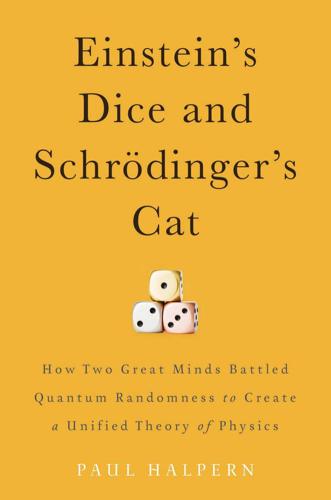
Einstein's Dice and Schrödinger's Cat: How Two Great Minds Battled Quantum Randomness to Create a Unified Theory of Physics
by
Paul Halpern
Published 13 Apr 2015
As Zwicky’s claim was not taken seriously, it took another half century before the search for dark matter began in earnest. The trigger was the finding by astronomers Vera Rubin and Kent Ford that Andromeda and other galaxies don’t have enough visible matter to keep their outer stars moving as fast as they actually do. Galaxies seem to act like merry-go-rounds, with speedy outer horses pulled by unseen mechanisms. Starting in the 1980s, astronomers and particles physicists have conducted searches for dim astronomical objects and/or invisible particles with enough gravitational oomph to constitute dark matter. The focus began to center on cold (slow-moving) dark matter particles that respond to the weak force and gravity but not to electromagnetism (hence their invisibility).
…
Searches for such particles have been conducted in converted mine tunnels deep underground, to avoid the “noise” of ordinary particles, as well as in space. At the time of this writing, conclusive evidence for dark matter particles has yet to be found. If dark energy and dark matter were rare phenomena, perhaps we could hold off on explanations and try to tidy up other loose ends in physics. On the contrary, together they constitute 95 percent of everything in space. According to recent astronomical estimates, a whopping 68 percent of the universe is dark energy and fully 27 percent is dark matter, leaving only 5 percent that can be explained through the standard model combined with conventional general relativity.
…
Not if you look at the glaring omissions that neither theory can explain. Dark energy, the agent for accelerating the universe, and dark matter, the invisible substance that keeps galaxies from flying apart, represent mysteries on par with those that challenged the quantum pioneers. We have mentioned how the former seems to match the cosmological constant term proposed (and later retracted) by Einstein and later advocated by Schrödinger. However, no one knows the physical source of dark energy, which acts as a kind of antigravity. The nature of dark matter offers another modern-day conundrum. First identified in the 1930s by Swiss astronomer Fritz Zwicky in his study of the Coma cluster, it constitutes the unseen mass gravitationally required to keep astronomical structures stable.

Chicago Like a Local
by
DK
Plus, the coffee’s fresh. g Coffee Shops g Contents Google Map DARK MATTER COFFEE Map 3; 738 North Western Avenue, Ukrainian Village; ///muddy.spider.modern; www.darkmattercoffee.com Want a dose of Chicago humor with your coffee? Hit up this quirky neighborhood favorite. Like other Windy City coffee spots, Dark Matter loves giving its coffee blends creative names, though we’d say the staff here is kicking it up a notch. Case in point: one of the previous monthly roast offerings was charmingly named “Get the F*ck Out of Bed.” Always ask a Dark Matter barista about their favorite blends. Trust us, these folks know what’s up.
…
g Contents DRINK Coffee Shops Dive Bars Cocktail Bars Breweries Sports Bars Secret Speakeasies Take a Tour: An evening of Prohibition-era drinks g DRINK g Contents Coffee Shops Once ruled by Dunkin’ Donuts, now a hub for third-wave coffee shops, Chicago has always been loyal to the hot brew. So, wherever you’re out and about, be sure to stop by one of these cool coffee shops. g DRINK g Contents Coffee Shops METROPOLIS COFFEE COMPANY DARK MATTER COFFEE BRIDGEPORT COFFEEHOUSE METRIC PASSION HOUSE GASLIGHT COFFEE ROASTERS THE WORMHOLE INTELLIGENTSIA COFFEE g Coffee Shops g Contents Google Map METROPOLIS COFFEE COMPANY Map 6; 1039 West Granville Avenue, Edgewater; ///chefs.same.patio; www.metropoliscoffee.com Chilled vibes and good coffee greet digital nomads at Metropolis.
…
g Contents MAPS MAP 1 MAP 2 MAP 3 MAP 4 MAP 5 MAP 6 g Maps g Contents ← MAP 1 → EAT Carnitas Uruapan The Jibarito Stop Portillo’s Hot Dogs Tzuco DRINK The Alderman The Drifter Jake Melnick’s Corner Tap Skylark Three Dots and a Dash SHOP 606 Records Elephant Room Gallery Ikram Knee Deep Vintage NYCH Gallery Pilsen Community Books The SHUDIO Tonantzin Community Arts and Cultural Gallery VMR ARTS & CULTURE Art Institute of Chicago Art on the Mart Chicago Water Tower Cloud Gate Field Museum Gene Siskel Film Center Goodman Theatre Jane Addams Hull House John Hancock Center Marina City Muddy Waters Mural National Museum of Mexican Art Pilsen Murals Rookery Building Tribune Tower Untitled by Picasso Untitled Sounding Sculpture Wabash Arts Corridor Willis Tower NIGHTLIFE Andy’s Jazz Club & Restaurant Bar Avec The Bassment Blue Chicago Buddy Guy’s Legends Cindy’s Rooftop The Comedy Bar IO Godfrey Rooftop Lounge Thalia Hall OUTDOORS Bears at Soldier Field Chicago Riverwalk Fire at Soldier Field Lakefront Trail Millennium Park Oak Street Beach g Maps g Contents ← MAP 2 → EAT Beatnik Cabra D’Amato’s Bakery Ever Greek Islands Hoosier Mama Pie Company Kasama Rose Mary Sultan’s Market DRINK The Aviary Blind Barber Booze Box Cleo’s Bar and Grill District Brew Yards Kumiko Lazy Bird Metric The Office Passion House Phyllis’s Musical Inn Rainbo Club Violet Hour The Wormhole SHOP Alcala’s Western Wear Asrai Garden Boneyard Chicago Truborn Dovetail Dusty Groove Heaven Gallery Independence Kokorokoko Lost Girls Vintage Myopic Books Penelope’s Plant Salon Quimby’s Bookstore Reckless Records Round Two Semicolon Bookstore & Gallery Shuga Records Sprout Home Stock MFG Co Store B Vintage Una Mae’s ARTS & CULTURE Collaboraction Theatre The Den Theatre WNDR Museum NIGHTLIFE The Comedy Clubhouse Subterranean The Up Room OUTDOORS Blackhawks at United Center Bulls at United Center Pulaski Park Public Pool g Maps g Contents ← MAP 3 → EAT Andros Taverna Fancy Plants Kitchen Fatso’s Last Stand Handlebar Jibaritos y Mas Lula Cafe Margie’s Candies Mi Tocaya Antojeria Parachute Pequod’s Pizza Pretty Cool Ice Cream DRINK Billy Sunday Dark Matter Coffee Gaslight Coffee Roasters Lottie’s Pub Metropolitan Brewing Ørkenoy Pipeworks Brewing Co Scofflaw The Whistler SHOP Adams & Son & Daughter Gardens Bric-a-Brac Records and Collectibles Galerie F Humboldt House RoscoeBooks Tusk ARTS & CULTURE Greetings from Chicago Ukrainian National Museum UrbanTheater Company NIGHTLIFE Empty Bottle The Hideout Rosa’s Lounge Sleeping Village Slo ‘Mo OUTDOORS The 606 Humboldt Park g Maps g Contents ← MAP 4 → EAT Alinea The Chicago Diner Chiu Quon Bakery Furama Urban Vegan DRINK Half Acre Intelligentsia Coffee Murphy’s Bleachers Nisei Lounge Nobody’s Darling Off Color: The Mousetrap Old Town Ale House Sluggers SHOP Andersonville Galleria Unabridged Bookstore Women & Children First Woolly Mammoth ARTS & CULTURE Biograph Theatre Davis Theater Music Box Theatre Wrigley Field NIGHTLIFE Annoyance Theatre & Bar Berlin The Green Mill The J.
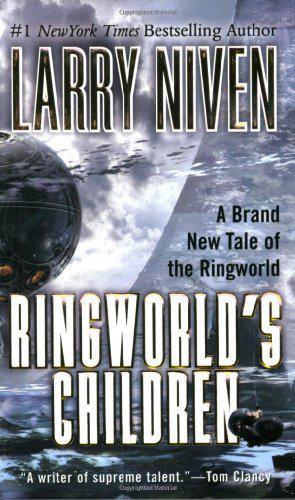
Ringworld's Children
by
Larry Niven
Published 28 Mar 2005
Tunesmith waved into a recorded view of neon paint streaming through oil. "Dark matter. The missing mass. Instruments in Einstein space can't find it, but it huddles close around suns in this other domain you've been calling hyperspace. Dark matter makes galaxies more massive, changes their spin--" "We rammed through that?" "Wrong picture, Louis. My instruments didn't record any resistance. We'll test that later. It might have been different if this had reached us." A deep violet comma-shaped shadow. "We find life everywhere we look in this universe. Would it be surprising if an ecology has grown up within dark matter? And predators?" Maybe Tunesmith was mad.
…
Tunesmith barely glanced at the view. "They'll be a few minutes matching. We have time. Hindmost, show us what we recorded in this last hyperdrive jump." The hypercamera's record was blank. Louis snickered. Tunesmith reproved him. "Louis, there's nothing to see. We're outside the envelope of dark matter that collects around our star. Where there almost isn't any dark matter, there almost isn't space either! This is why we can travel faster than light does in vacuum, because distance in this domain is drastically contracted. "Now I need only learn why there is more than one characteristic velocity. I'll get that by studying Long Shot.
…
"I only held us in hyperdrive for a moment," Tunesmith said, "but these hypothetical predators only have one speed, Louis, and it's fast. 'Singularity' is a mathematical term. Certainly there are mathematics involved, but they may be more complex than just places where an equation gives infinities. Inside this morass of dark matter, the characteristic speed may be drastically lowered. The proof is that we live." "We are being observed," the Hindmost said. "I sense ranging beams from ARM and Patriarchy telescopes and neutrino detectors. Ships begin to accelerate inward. The ship from Sheathclaws houses telepaths of both species, though they can't reach us yet.
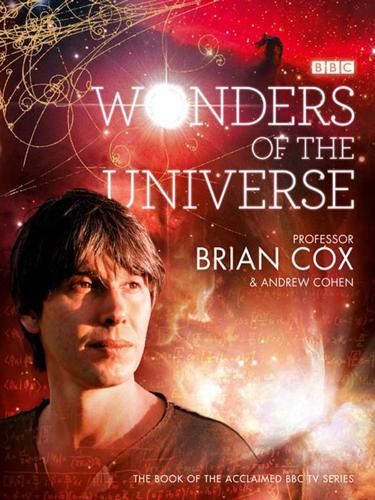
Wonders of the Universe
by
Brian Cox
and
Andrew Cohen
Published 12 Jul 2011
They are thought to have giant halos of dark matter, a new form of matter unlike anything we have discovered on Earth and which interacts only weakly with normal matter. Despite this, its gravitational effect dominates the behaviour of galaxies today and most likely dominated the formation of the galaxies in the early Universe. This is because we now think that around 95 per cent of the mass of galaxies such as our own Milky Way is made up of dark matter. In some sense this makes the luminous stars, planets, gas and dust an after-thought, although because it is highly unlikely that dark matter can form into complex and beautiful structures like stars, planets and people, one might legitimately claim that it’s rather less interesting.
…
In some sense this makes the luminous stars, planets, gas and dust an after-thought, although because it is highly unlikely that dark matter can form into complex and beautiful structures like stars, planets and people, one might legitimately claim that it’s rather less interesting. The search for the nature of dark matter is one of the great challenges for twenty-first-century physics. We shall return to the fascinating subject of dark matter later in the book. The word ‘galaxy’ comes from the Greek word galaxias, meaning milky circle. It was first used to describe the galaxy that dominates our night skies, even though the Greeks could have had no concept of its true scale. Watching the core of our galaxy rise in the night sky is one of nature’s greatest spectacles, although regrettably the light of our cities has robbed us of this majestic nightly display.
…
It began 13.75 billion years ago with the Big Bang, and in this embryonic period, known as the Primordial Era, the Universe was a place without the light from the stars, although in its early years the swirling hot matter would have glowed as brightly as a sun. For the first 100 million years, the conditions were far too violent for stars to form. This changed when the Universe had expanded and cooled sufficiently for the weak force of gravity to begin to clump the primordial dust, gas and dark matter into galaxies. With this came the dawning of the second great epoch in the life of our universe: the Stelliferous Era, the age of stars. The moment the first stars were born is one of the most evocative milestones in the evolution of the cosmos. It signals the end of an alien time when the Universe was without structure – a formless void.
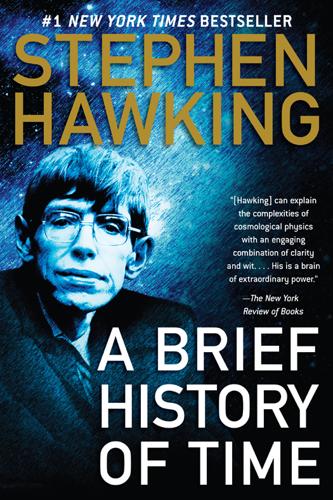
A Brief History of Time
by
Stephen Hawking
Published 16 Aug 2011
If we add up the masses of all the stars that we can see in our galaxy and other galaxies, the total is less than one hundredth of the amount required to halt the expansion of the universe, even for the lowest estimate of the rate of expansion. Our galaxy and other galaxies, however, must contain a large amount of “dark matter” that we cannot see directly, but which we know must be there because of the influence of its gravitational attraction on the orbits of stars in the galaxies. Moreover, most galaxies are found in clusters, and we can similarly infer the presence of yet more dark matter in between the galaxies in these clusters by its effect on the motion of the galaxies. When we add up all this dark matter, we still get only about one tenth of the amount required to halt the expansion. However, we cannot exclude the possibility that there might be some other form of matter, distributed almost uniformly throughout the universe, that we have not yet detected and that might still raise the average density of the universe up to the critical value needed to halt the expansion.
…
Coordinates: Numbers that specify the position of a point in space and time. Cosmological constant: A mathematical device used by Einstein to give space-time an inbuilt tendency to expand. Cosmology: The study of the universe as a whole. Dark matter: Matter in galaxies, clusters, and possibly between clusters, that can not be observed directly but can be detected by its gravitational effect. As much as 90 percent of the mass of the universe may be in the form of dark matter. Duality: A correspondence between apparently different theories that lead to the same physical results. Einstein-Rosen bridge: A thin tube of space-time linking two black holes.
…
If we could observe them, it would provide a good test of this picture of a very hot early stage of the universe. Unfortunately, their energies nowadays would be too low for us to observe them directly. However, if neutrinos are not massless, but have a small mass of their own, as suggested by some recent experiments, we might be able to detect them indirectly: they could be a form of “dark matter,” like that mentioned earlier, with sufficient gravitational attraction to stop the expansion of the universe and cause it to collapse again. About one hundred seconds after the big bang, the temperature would have fallen to one thousand million degrees, the temperature inside the hottest stars.

This Is How They Tell Me the World Ends: The Cyberweapons Arms Race
by
Nicole Perlroth
Published 9 Feb 2021
CyberPoint’s solution to all this ethical wrangling was not to stop targeting dissidents, journalists, or Americans; just the opposite. Evenden and his team were told that their contracts would be shifted from CyberPoint to an Emirati LLC called Dark Matter. They would no longer be on loan from the State Department. They would be working directly for the Emiratis, without constraints. Evenden’s bosses gave CyberPoint’s employees a choice: they could join Dark Matter, or CyberPoint would pay for their relocation back to the United States. No questions asked. Half switched over to Dark Matter. Evenden warned his former colleagues to think this through. “You are going to be targeting Americans,” he told them. Either they were in denial or blinded by their fat Emirati paychecks.
…
Those who opted not to join Dark Matter were ousted from friend circles. “People we regularly had drinks with, who we’d had over to our house, stopped communicating with us.” And then they were kicked out of the shop. CyberPoint took away key cards and shut down personnel accounts. Evenden and the others who’d chosen to leave had to wait until the company could schedule their moves back to the United States. And once they got back to the States, once they had reckoned with what they had left behind, Evenden sent a tip to the FBI. By the time Evenden reached out to me in mid-2019, Dark Matter was under FBI investigation.
…
Their accounts are available at Christopher Bing and Joel Schectman, “Inside the UAE’s Secret Hacking Team of American Mercenaries,” Reuters, January 30, 2019, and “White House Veterans Helped Gulf Monarchy Build Secret Surveillance Unit,” Reuters, December 10, 2019. I learned about Dark Matter’s hacking of FIFA, Qatari officials, and the dragnet that included former First Lady Michelle Obama from my interviews with Evenden and other CyberPoint and Dark Matter employees. This book was the first time any of the details of the hack of Mrs. Obama has been reported. I was able to flesh out the details of Mrs. Obama’s visit via contemporary news articles, including the Associated Press, “First Lady Michelle Obama Arrives in Qatar for Speech,” November 2, 2015; Nick Anderson, “First Lady Urges Fathers Worldwide to Join ‘Struggle’ for Girls’ Education,” Washington Post, November 4, 2015; and Paul Bedard, “Michelle Obama’s 24 Minute Speech in Qatar Cost $700,000,” Washington Examiner, December 9, 2015.
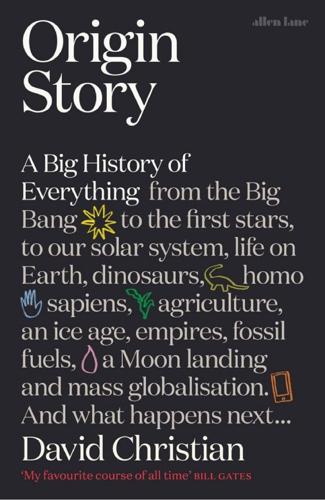
Origin Story: A Big History of Everything
by
David Christian
Published 21 May 2018
But it takes a lot of energy to fuse protons because their positive charges repel each other, and temperatures were falling fast just after the big bang, so it was impossible to fuse more protons to form the nuclei of larger atoms. This explains a fundamental aspect of our universe: almost three-quarters of all the atoms in it are hydrogen, and most of the rest are helium. A lot more matter consists of dark matter, stuff we don’t yet understand, though we know it exists because its gravitational pull determines the structure and distribution of galaxies. So, a few minutes after the big bang, our universe consisted of vast clouds of dark matter in which were embedded crackling plasmas of protons and electrons with photons of light flowing through them. Today, we find plasmas only in the centers of stars. Now we must pause and wait about 380,000 years (almost twice as long as our species has existed on Earth).
…
Normally, isolated atoms are electrically neutral, because the positive and negative charges of their protons and electrons cancel each other out. So when the first atoms of hydrogen and helium formed, most of the matter in the universe suddenly went neutral, and the tingling plasma evaporated. Photons, the carriers of the electromagnetic force, could now flow freely through an electrically neutral mist of atoms and dark matter. Today, astronomers can detect the results of this phase change, because photons that escaped the plasma generated a thin background hum of energy (the cosmic microwave background radiation) that still pervades the entire universe. Our origin story has crossed its first threshold. We have a universe.
…
Together, gravity and matter provided the Goldilocks conditions for the emergence of stars and galaxies. Studies of the cosmic microwave background radiation show that in the early universe, there was little structure at large scales. Think of a gossamer-thin mist of hydrogen and helium atoms floating in a warm bath of dark matter permeated with photons of light. And all of it at more or less the same temperature. We know the early universe was homogenous because we can measure temperature differences in the CMBR, and we find that the hottest parts of the early universe were only about one one-hundredth of a degree warmer than the coolest parts.
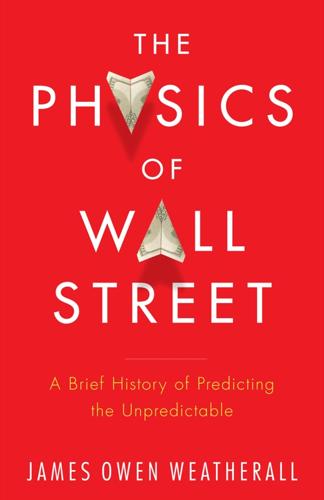
The Physics of Wall Street: A Brief History of Predicting the Unpredictable
by
James Owen Weatherall
Published 2 Jan 2013
Einstein proposed a simple way of figuring out the lower bound for the total amount of dark matter in the universe. He argued that the density of dark matter in the universe as a whole was at least as much as the density within a galaxy (or rather, a group of galaxies known as a cluster). Osborne decided he didn’t buy the argument. For one, Einstein seemed to be making a series of bad assumptions. Worse still, the best evidence that anyone had in 1946 showed that most dark matter was restricted to certain parts of a galaxy, with basically no dark matter in empty space (this still seems to be true). So if anything, you should expect the density of dark matter to be higher in a galaxy than in space as a whole.
…
To learn as much about the theory as he could, he picked up a book by Einstein, The Meaning of Relativity, in which Einstein offered an argument about how much dark matter could exist in the universe. Dark matter — literally, stuff in the universe that doesn’t seem to emit or reflect light, which means that we can’t see it directly — was first discovered in the 1930s, by its effects on the rotation of galaxies. Devotees of popular physics know that today, dark matter is one of the most puzzling mysteries in all of cosmology. Observations of other galaxies suggest that the vast majority of the matter in the universe is unobservable, something that is not explained by any of our best physical theories.
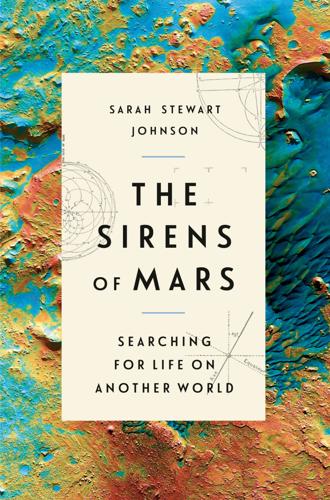
The Sirens of Mars: Searching for Life on Another World
by
Sarah Stewart Johnson
Published 6 Jul 2020
VERA RUBIN RIDGE A special issue of the Journal of Geophysical Research detailing discoveries in the Vera Rubin Ridge is slated to be released in 2020. EVIDENCE OF DARK MATTER Vera C. Rubin, W. Kent Ford, Jr., and Norbert Thonnard, “Rotational Properties of 21 SC Galaxies with a Large Range of Luminosities and Radii, from NGC 4605 (R= 4kpc) to UGC 2885 (R= 122 kpc),” The Astrophysical Journal, 238 (1980), pp. 471–487; J. G. De Swart, Gianfranco Bertone, and Jeroen van Dongen, “How Dark Matter Came to Matter,” Nature Astronomy, 1, no. 3 (2017), p. 0059. 85 PERCENT OF THE “Synopsis: How Dark Matter Shaped the First Galaxies,” American Physical Society (Oct. 2, 2019). LEARNED TO TELL TIME Interview of Vera Rubin by Alan Lightman, Niels Bohr Library and Archives, American Institute of Physics (College Park, Md.: April 3, 1989).
…
She also received a National Medal of Science in 1993, the highest scientific award in the United States. Many also believe she should have been awarded a Nobel Prize for her work; see: Randall, “Why Vera Rubin Deserved A Nobel,” The New York Times, and Sarah Scoles, “How Vera Rubin Confirmed Dark Matter,” Astronomy (June 2016). “TO HAVE A FAMILY” Vera Rubin, Bright Galaxies, Dark Matters (New York, Springer Science and Business Media: 1996). SHE HAD FOUR CHILDREN Overbye, “Vera Rubin, 88, Dies; Opened Doors in Astronomy, and for Women,” The New York Times. BECAME A PLANETARY GEOLOGIST Dave Rubin is a sedimentologist in the department of Earth and planetary sciences at U.C.
…
* * * — BY THE TIME I joined the science team, Curiosity had holes in its wheels, and its poor drill was beginning to show signs of wear. It had been roving for four years. But the mission was about to enter into one of its most interesting phases: an ascent of the Vera Rubin Ridge, named after the extraordinary scientist who discovered the first evidence of dark matter, mysterious particles thought to comprise roughly 85 percent of the total matter in the universe. As a girl, Rubin had learned to tell time by how the stars outside her window wheeled across the sky. As a young woman, she was encouraged to pursue a career not in astronomy but in painting astronomical objects.
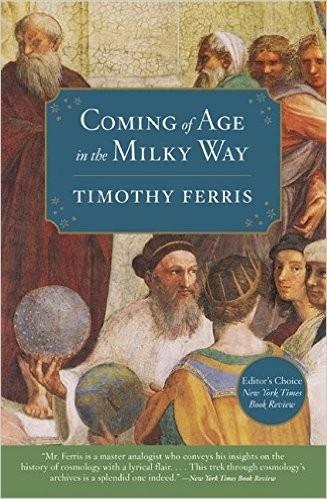
Coming of Age in the Milky Way
by
Timothy Ferris
Published 30 Jun 1988
Analysis of this literally universal experiment confirms that most of the stuff of the universe is invisible—the “dark matter” problem—and that much of this invisible stuff cannot be ordinary matter, like planets and stars, but must be of some exotic form, like the particles predicted by string theories. (String theory, along with M-theory, which portrays the strings as membranes, continues to be a promising method for constructing a unified, quantum theory of gravity, but it remains unfinished.) Important clues to the nature of dark matter were found by astronomers studying supernovae. One class of these exploding stars, the type la supernovae, all seem to reach about the same maximum brightness (once one corrects for idiosyncracies such as differing abundances of nickel and other elements.)
…
Supersymmetry theory, as we saw in the previous chapter, predicts the existence of enormous numbers of as yet undetected particles left over from the early universe.* If the theory ripened to the point that it could specify the masses of these particles, it might be possible to test it by looking for them. A ghostly clue that there may be such undetected material in the universe today is proffered by what astronomers call the “dark matter” problem. The masses of galaxies and their clusters can be deduced by measuring the velocity at which stars orbit the centers of the galaxies to which they belong, and at which galaxies orbit the centers of clusters of galaxies.† In case after case, this turns out to add up to something like five or ten times the mass of all the visible stars and nebulae.
…
The problem that engaged the attention of Guth, and of his Cornell colleague Henry Tye, was that the grand unified theories predicted the production of far too many magnetic monopoles—roughly one hundred times more monopoles than there are atoms. Given that most of the matter in the universe is invisible—the “dark matter” question—cosmologists generally welcomed the suggestior that massive subatomic particles might make up the deficit, but this was an embarrassment of riches. Searches for monopoles had turned up null results: One event had been recorded, on Valentine’s Day, 1982, on a device built by Bias Cabrera in a basement laboratory at Stanford, but Cabrera’s result had never been repeated, at Stanford or anywhere else.
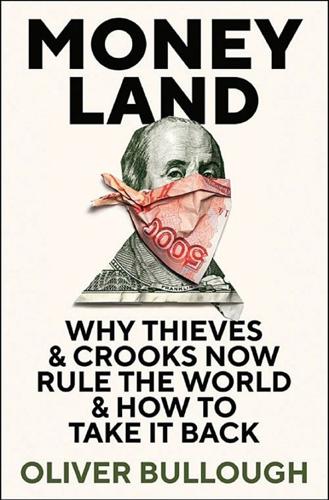
Moneyland: Why Thieves and Crooks Now Rule the World and How to Take It Back
by
Oliver Bullough
Published 5 Sep 2018
After a while, you will find yourself speaking this way yourself. So, how much money is there out there, hiding behind this palisade of circumlocution? This is a difficult question to answer: the money is invisible, and kept invisible by well-paid, imaginative and highly intelligent people. It is dark matter and, like dark matter, it can only be studied by recording its effect on things that we can see. Gabriel Zucman, the French economist who has studied Swiss banking, has tried to make these calculations. By analysing the statistical anomalies that banking secrecy creates, he estimates that 8 per cent of all the world’s financial wealth was held in tax havens in 2014: $7.6 trillion, out of a total of $95.5 trillion.
…
The misuse of diplomatic immunity by extremely wealthy people has gone under-remarked, Lethal Weapon 2 excepted. 11 – Un-write-about-able The story of Bill Browder’s life as a fund manager in Russia, and his conversion into a human rights activist, is told in his Red Notice: How I Became Putin’s No. 1 Enemy (New York: Simon & Schuster and London: Corgi, 2015). The film that was never shown was directed by Havana Marking, and it was really good. Thanks to Daria Kaleniuk and others for appearing in it. 12 – Dark Matter The 2015 Deutsche Bank paper ‘Dark Matter: The Hidden Capital Flows that Drive G10 Exchange Rates’ by Oliver Harvey and Robin Winkler is available online, and links much of the secret money moving into Britain to Russia. It is ironic that two years later, that same bank paid fines of $630 million to settle US and UK charges that it had moved $10 billion of hidden capital out of Russia in so-called ‘mirror trades’.
…
A CIP catalogue record for this book is available from the British Library. eISBN 978 1 78283 333 8 CONTENTS 1 Aladdin’s Cave 2 Pirates 3 Queen of the Caribbees 4 Sex, Lies and Offshore Vehicles 5 Mystery on Harley Street 6 Shell Games 7 Cancer 8 Nasty as a Rattlesnake 9 The Man Who Sells Passports 10 ‘Diplomatic Immunity!’ 11 Un-write-about-able 12 Dark Matter 13 ‘Nuclear Death is Knocking Your Door’ 14 Say Yes to the Money 15 High-end Property 16 Plutos Like to Hang out Together 17 Breaking Switzerland 18 Tax Haven USA 19 Standing up to Moneyland Notes on Sources Acknowledgements Index 1 ALADDIN’S CAVE When the French rebelled in July 1789 they seized the Bastille, a prison that was a symbol of their rulers’ brutality.
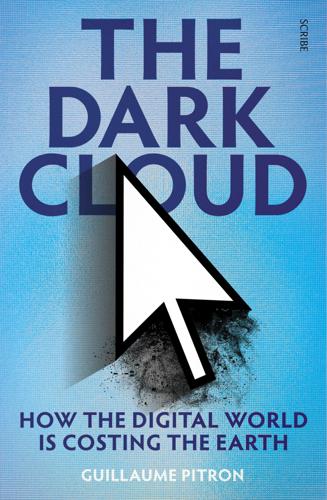
The Dark Cloud: How the Digital World Is Costing the Earth
by
Guillaume Pitron
Published 14 Jun 2023
Yet all this, combined, is only 20 per cent of the universe’s mass. The remainder is likely to be composed of a mysterious substance — dark matter — about which we know very little. And so, to broaden our scope of observation, technologies measuring gamma rays, ultraviolet light, infrared light, and gravitational waves are used. I suggest we, too, should use little-known tools to explore the extent of the largely invisible pollution generated by digital: the dark matter of the nonmaterial. MIPS and the inner workings of matter Jans Teubler, a German science researcher at the Wuppertal Institute in Germany, remembers the moment like it was yesterday.1 It was at a conference at the institute in its namesake city in the region of Westphalia: ‘I stopped dead in my tracks when I saw this drawing of a man wearing a wedding band … and an enormous rucksack on his shoulders, representing the true physical weight of the ring.
…
To Roland Boman and his lost river… ‘Our future is a race between the growing power of our technology and the wisdom with which we use it.’ Stephen Hawking CONTENTS Introduction Chapter One The digital world’s environmental benefits: fiction vs. fact Chapter Two Smartphones and the art of Zen Chapter Three The dark matter of a digital world Chapter Four Investigating a cloud Chapter Five An appalling waste of electricity Chapter Six Battle of the far north Chapter Seven Expansion of the digital universe Chapter Eight When robots out-pollute humans Chapter Nine Twenty thousand tentacles under the sea Chapter Ten The geopolitics of digital infrastructure Conclusion Acknowledgements Appendixes Notes Introduction LET’S TURN BACK THE CLOCKS.
…
Be that as it may, more and more entrepreneurs, campaigners, and activists are mobilising every day so that we can truly comprehend our devices — and our future. Such initiatives are all the more vital, as an unfamiliar indicator is about to tell us: the physical impact of the digital world is far greater that what we, up until now, could have imagined. CHAPTER THREE The dark matter of a digital world WE HAVE LOOKED AT WHERE OUR DEVICES COME FROM, BUT WE have only scratched the surface of the Earth’s crust. The internet has a far greater reach both in time and in space, and to get a sense of its proportions, we need to immerse ourselves in a multidimensional universe about which most of us haven’t the first clue.
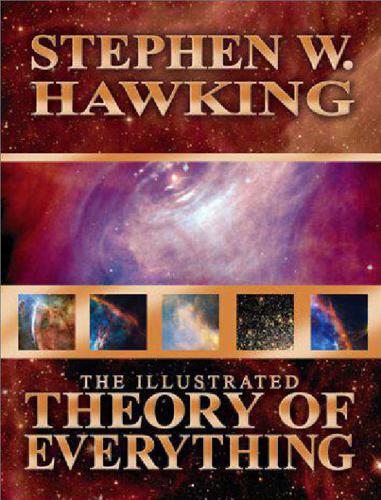
Illustrated Theory of Everything: The Origin and Fate of the Universe
by
Stephen Hawking
Published 1 Aug 2009
If we add up the masses of all the stars that we can see in our galaxy and othergalaxies, the total is less than one-hundredth of the amount required to haltthe expansion of the universe, even in the lowest estimate of the rate of expan-sion. But we know that our galaxy and other galaxies must contain a largeamount of dark matter which we cannot see directly, but which we know mustbe there because of the influence of its gravitational attraction on the orbits ofstars and gas in the galaxies. Moreover, most galaxies are found in clusters, andwe can similarly infer the presence of yet more dark matter in between thegalaxies in these clusters by its effect on the motion of the galaxies. When weadd up all this dark matter, we still get only about one-tenth of the amountrequired to halt the expansion. However, there might be some other form ofmatter which we have not yet detected and which might still raise the averagedensity of the universe up to the critical value needed to halt the expansion.The present evidence, therefore, suggests that the universe will probablyexpand forever.

The Last Stargazers: The Enduring Story of Astronomy's Vanishing Explorers
by
Emily Levesque
Published 3 Aug 2020
After puzzling over the results for months, Vera realized that her data could be explained perfectly if each galaxy had, in addition to its visible stars, gas, and dust, an invisible halo of matter contributing to its mass. She had identified the first observational evidence of dark matter. Today, we still don’t know what dark matter actually is, but we certainly know it exists. After Vera’s discovery, dark matter became a linchpin of how astronomers explain the history and evolution of the cosmos, and new observations continued to confirm immense quantities of invisible mass in the universe. The discovery spawned entire new subdisciplines of physics, and Vera went on to eventually win just about every prestigious prize offered to a professional astronomer (with the exception of the Nobel in Physics, which has long had a sizeable blind spot for groundbreaking research done by women).
…
The behemoth was twenty-three stories tall and weighed six hundred tons, but despite all that, it could be steered and focused on the sky with pinpoint precision thanks to operators like Pete, who had all been specially trained to run the telescope. It had observed the birthplaces of newborn stars, was instrumental in the discovery of dark matter, and had conducted an exhaustive survey of the sky to assemble a list of any objects emitting radio light. Its size and bright white color had made it a landmark in the area. Driving north on Route 28, it couldn’t be missed, looming over a hill behind a local farm. Except Pete hadn’t seen it. He was scheduled to work the day shift at the 300 Foot on November 16, 1988, and made the drive so often that it took a moment to register what he had—or rather hadn’t—seen that morning, but as he kept driving, an oddity stuck persistently in his head.
…
The discovery spawned entire new subdisciplines of physics, and Vera went on to eventually win just about every prestigious prize offered to a professional astronomer (with the exception of the Nobel in Physics, which has long had a sizeable blind spot for groundbreaking research done by women). During most of her research on dark matter, she remained one of the only women working at the observatories that granted her time. Some years later, Vera was observing with a colleague, Deidre Hunter, at Las Campanas Observatory on an evening when, as it turned out, all the astronomers working on the mountain were women. Vera gathered the whole group into one of the control rooms for a photograph to commemorate the event.
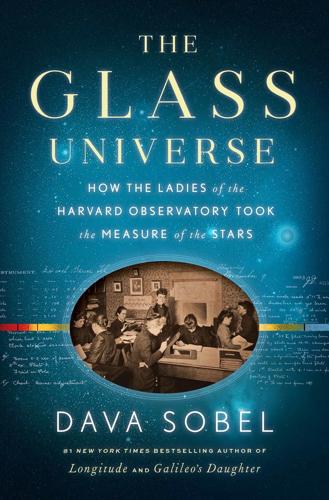
The Glass Universe: How the Ladies of the Harvard Observatory Took the Measure of the Stars
by
Dava Sobel
Published 6 Dec 2016
CHAPTER THIRTEEN: The Observatory Pinafore The Harvard-Radcliffe Gilbert & Sullivan Players gave an abridged concert performance of The Observatory Pinafore at the American Academy of Arts & Sciences in Cambridge on October 26, 2000, as part of a banquet and centenary symposium honoring Cecilia Payne-Gaposchkin. The so-called dark matter demonstrated by Robert Trumpler’s research was interstellar dust. It should not be confused with the mysterious invisible entity given the same name by modern astronomers, who believe dark matter is what holds galaxies together. CHAPTER FOURTEEN: Miss Cannon’s Prize After Harlow Shapley announced the wedding of Cecilia Payne and Sergei Gaposchkin, Miss Cannon made a note on the appropriate page in her diary.
…
Trumpler came to these conclusions by observing one hundred open clusters—close associations of stars that were not as densely crowded together as in globular clusters. He calculated each open cluster’s distance two ways, by its apparent brightness and also its apparent diameter. Both values predictably decreased with distance, but the open clusters faded in brightness much faster than they shrank in size. Some form of “dark matter” definitely intervened to absorb their light. As far as Trumpler could tell, the mysterious absorbing medium was confined to the Milky Way, but unevenly distributed; it concentrated along the plane of the galaxy and dissipated near the poles. Shapley had banked on transparency when he estimated the galaxy’s extent at three hundred thousand light-years.
…
After she returned to Princeton and married astronomer Bancroft Sitterly in 1937, she continued working, and later became manager of the program in atomic spectroscopy at the National Bureau of Standards. Vera Rubin, who attended Vassar College because of its historic association with Maria Mitchell, received the 2003 Bruce Medal for her measurements of galaxy rotation, which led to the discovery of dark matter. Sandra Moore Faber, the 2012 winner, did her graduate work at Harvard but has spent her career at the University of California Observatories, pursuing the formation, structure, and clustering of galaxies. In 2013 she was one of twelve recipients of the National Medal of Science. The telescope named for Miss Bruce, which Shapley praised as “the great galaxy hunter of the Southern Hemisphere,” was decommissioned in 1950.
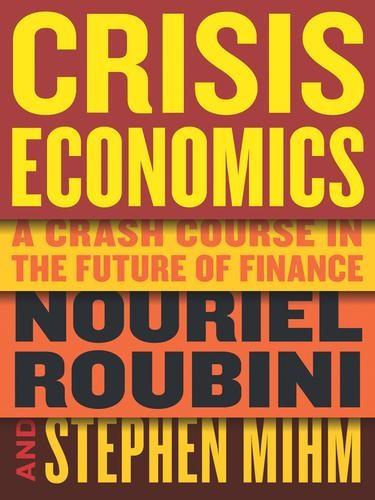
Crisis Economics: A Crash Course in the Future of Finance
by
Nouriel Roubini
and
Stephen Mihm
Published 10 May 2010
247 The debate over current account imbalances: Nouriel Roubini, “Global Imbalances: A Contemporary ‘Rashomon’ Saga,” November 2006, online at http://www.centrecournot.org/pdf/conference9/Nouriel%20ROUBINI.pdf. This section draws on this paper. 248 “dark matter” explanation: Ricardo Hausmann and Federico Sturzenegger, “U.S. and Global Imbalances: Can Dark Matter Prevent a Big Bang?” November 13, 2005, online at http://www.cid.harvard.edu/cidpublications/darkmatter_051130.pdf. 248 This argument has been challenged: Roubini, “Global Imbalances: A Contemporary ‘Rashomon’ Saga,” November 2006. See also Barry Eichengreen, “Global Imbalances: The New Economy, the Dark Matter, the Savvy Investor, and the Standard Analysis,” March 2006, online at http://www.econ.berkeley.edu/~eichengr/matter.pdf. 249 “global savings glut”: Ben S.
…
They point to the fact that the United States is getting a better return on its foreign investments than foreigners are getting on their U.S. investments, which is hard to explain in the context of a massive current account deficit. But their explanation is simple: there is no current account deficit. It is, they explain, “just a confusion caused by an unnatural set of accounting rules.” Instead, there is “dark matter” out there that the existing accounting has failed to capture. This valuable dark matter is difficult to price because it consists of intangibles that the United States provides: things like insurance, liquidity, and knowledge. The authors put particular emphasis on knowledge, arguing that superior “know-how deployed abroad by U.S. corporations” isn’t captured in the statistics, and that all this talk about a current account deficit is nonsense.
…
So we must clear the air by addressing a few key questions: Why have these imbalances materialized in recent years? Are they sustainable? And if not, who should address them, and what policies should they pursue? One of the more specious attempts to account for the current account deficit is the “dark matter” explanation. Proponents of this fairy tale—the economists Ricardo Hausmann and Federico Sturzenegger, among others—deny that the current account deficit is really as big as official figures suggest; if it were, they argue, the United States couldn’t possibly be borrowing from the rest of the world at such low rates.
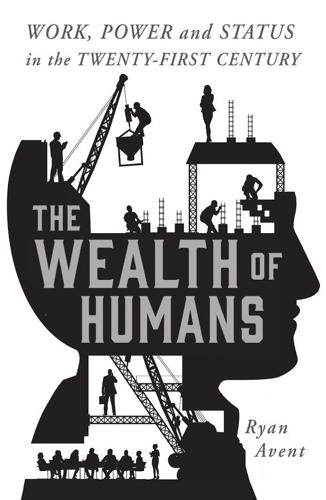
The Wealth of Humans: Work, Power, and Status in the Twenty-First Century
by
Ryan Avent
Published 20 Sep 2016
Company cultures, which shape worker incentives and determine how a business reacts to changes in the marketplace, have become much more important in the digital age. Today, more than 80 per cent of the value of Standard & Poor’s 500* firms is ‘dark matter’: the intangible secret sauce of success; the physical stuff companies own and their wage bill accounts for less than 20 per cent: a reversal of the pattern that prevailed in the 1970s.27 A large proportion of that dark matter is an amorphous ‘know-how’: the culture, incentives and tacit knowledge that make a modern company tick. The Economist is like that; our journalists gather information from all over the world, analyse it, and filter it through our editorial structures in order to generate pieces of journalism people want to buy.
…
Firms can and do fail, and not simply because competitors are offering clearly superior goods or services. This culture, or what economists often call ‘intangible capital’, is increasingly a firm’s most important technology. Knowing what information matters and what to do with it is the difference between a wildly profitable company and a bankrupt one. DARK MATTER AND DISRUPTION Intangible capital consists of the hard-to-grasp behavioural infrastructure that makes modern firms tick. It rests at the heart of most successful firms, from Apple to Goldman Sachs to Honda, and determines how people work and what sort of salary they are able to earn in return.
…
A recent analysis considered how much it would cost to duplicate the average firm on the S & P 500: that is, how much you’d have to spend to obtain the machines, buildings, technology, workers and so on that represent the visible components of a company. In the 1970s, the value of those components added up to more than 80 per cent of the firm’s valuation. The rest of the valuation constituted what was then defined as ‘dark matter’: the stuff you can’t just go out and buy. Today, however, these proportions of value are reversed. More than 80 per cent of the value of top firms resides in these intangibles – stuff that simply can’t easily be accounted for; the buildings and salaries and all the rest of it are only a small chunk of what makes a valuable firm valuable.3 This momentous shift occurred as firms shed prosaic operations that could be outsourced to other firms, and concentrated instead on the critical, value-generating work of the business.

Global Catastrophic Risks
by
Nick Bostrom
and
Milan M. Cirkovic
Published 2 Jul 2008
In addition, these white dwarfs will slowly accumulate weakly interacting dark matter particles that orbit the galaxy in an enormous diffuse halo. Once trapped within the interior of a white dwarf, the particles annihilate each other and provide an important source of energy for the cosmos. Dark matter annihilation will replace conventional nuclear burning in stars as the dominant energy source. The power produced by this process is much lower than that produced by nuclear burning in conventional stars. White dwarfs fuelled by dark matter annihilation produce power ratings measured in quadrillions of Watts, roughly comparable to the total solar power intercepted by Earth (approximately 10 17 Watts) .
…
His primary research interests are in the fields of astrophysical cosmology (baryonic dark matter, star formation, future of the universe), astrobiology (anthropic principles, S ETI studies, catastrophic episodes in the history of life) , as well as philosophy of science (risk analysis, foundational issues in quantum mechanics and cosmology). A unifYing theme in these fields is the nature of physical time, the relationship of time and complexity, and various aspects of entropy-increasing processes taking place throughout the universe. He wrote one monograph ( QSO Absorption Spectroscopy and Baryonic Dark Matter; Belgrade, 2005) and translated several books, including titles by Richard P.
…
White dwarfs fuelled by dark matter annihilation produce power ratings measured in quadrillions of Watts, roughly comparable to the total solar power intercepted by Earth (approximately 10 17 Watts) . Eventually, however, white dwarfs will be ejected from the galaxy, the supply of the dark matter will get depleted, and this method of energy generation must come to an end. Although the proton lifetime remains uncertain, elementary physical considerations suggest that protons will not live forever. Current experiments show that the proton lifetime is longer than about 1033 years (Super Kamiokande Collaboration, 1 999) , and theoretical arguments (Adams et a!., 1 998; Ellis et a!. , 1983; Hawking et a!.

What to Think About Machines That Think: Today's Leading Thinkers on the Age of Machine Intelligence
by
John Brockman
Published 5 Oct 2015
In general I’m happy to have them around and to have them improve. There is of course a danger that such machines will make harmful decisions, but a danger probably no greater than from humans making such decisions. Having these machines won’t answer the questions about the world that are the most important to me and many others: What constitutes the dark matter of the universe? Is supersymmetry really a symmetry of nature that provides a foundation for and extends the highly successful Standard Model of particle physics we have? These and similar questions can be answered only by experimental data. No amount of thought will provide such answers. Perhaps, given all the information we have about nature, some machine will actually come up with the right answers; indeed, perhaps some physicists have already come up with the answers.
…
Perhaps, given all the information we have about nature, some machine will actually come up with the right answers; indeed, perhaps some physicists have already come up with the answers. But the true role of data is to confirm which answers are the correct ones. If some physicist or some machine figures it out, they have no way to convince anyone else that they have the actual answer. Laboratory dark matter detectors or the CERN Large Hadron Collider or possibly a future Chinese collider might get the needed data, but not a thinking machine. ARE WE GOING IN THE WRONG DIRECTION? SCOTT ATRAN Anthropologist, Centre National de la Recherche Scientifique, Paris; author, Talking to the Enemy: Violent Extremism, Sacred Values, and What It Means to Be Human Machines can perfectly imitate some of the ways humans think all of the time, and can consistently outperform humans on some thinking tasks all of the time, but computing machines as usually envisioned will not get human thinking right all of the time, because they process information in ways opposite to humans’ in domains associated with human creativity.
…
Our most important machines aren’t machines that do better at what humans do but machines that do things we can’t do at all. Our most important thinking machines won’t be faster or better at thinking what we can think; they will think what we can’t think. To solve the current grand mysteries of quantum gravity, dark energy, and dark matter, we’ll probably need intelligences other than human. The extremely complex questions that will come after them may require even more distant and complex intelligences. Indeed, we may need to invent intermediate intelligences that can help us design yet more rarified intelligences that we couldn’t design alone.

Top Secret America: The Rise of the New American Security State
by
Dana Priest
and
William M. Arkin
Published 5 Sep 2011
A United Nations resolution had authorized the NATO alliance to use military force to stop Libyan leader Muammar Qaddafi from brutalizing opponents to his rule. But the air strike on his command-and-control compound in Tripoli, in which one of his sons and three grandsons died, seemed to indicate he had gotten himself on a kill list, too. CHAPTER ELEVEN Dark Matter Besides the damage inflicted on the enemy by the CIA’s killer drones, paramilitary forces killed dozens of al-Qaeda leaders and hundreds of its foot soldiers in the decade after 9/11. But troops from a more mysterious organization, based in North Carolina, have killed easily ten times as many al-Qaeda, and hundreds of Iraqi insurgents as well.
…
Its commanders—headquartered at Fort Bragg and the adjoining Pope Air Force Base in Fayetteville, North Carolina—still consider the organization to be officially “unacknowledged,” meaning its true purpose and everything it does is classified, and therefore, as far as the public is concerned, it does not exist. “We’re the dark matter,” a strapping U.S. Navy SEAL once explained. “We’re the force that orders the universe but can’t be seen.” When its officers are working in civilian government agencies or U.S. embassies abroad, which they do quite a lot, they dispense with uniforms, unlike the rest of their military comrades.
…
After 9/11, they had come up with all sorts of new names to hide their secret military subunits: The Secret Army of Northern Virginia, Task Force Green, Task Force Blue, Task Force 11, then Task Force 20, then Task Force 121. In fact, they change their task force numbers so often that even their American colleagues sometimes “aren’t sure who we are,” one officer explained, acknowledging that obscurity was the goal. All these task forces are part of JSOC, which sits at the center of the secret universe as the dark matter that shapes the world in ways that are usually not detectable. Like the CIA, the Joint Special Operations Command has become the president’s personal weapon against terrorists, one both Presidents Bush and Obama have wielded often over the years, with little or no input from Congress or the larger public policy community that has weighed in on life-and-death policy options since the beginning on what is now the country’s longest war, the war against al-Qaeda.
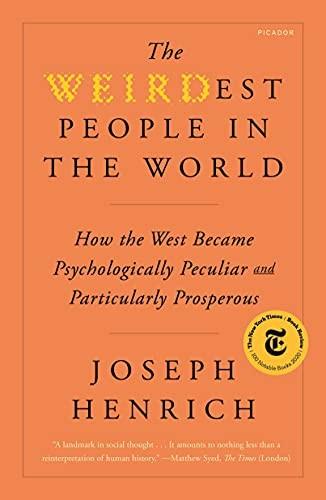
The WEIRDest People in the World: How the West Became Psychologically Peculiar and Particularly Prosperous
by
Joseph Henrich
Published 7 Sep 2020
Yet by wrapping these values, motivations, and worldviews together, giving them God’s blessing, and linking them to a contingent afterlife, some Protestant faiths created powerful cultural recombinations that not only produced even WEIRDer psychologies but also contributed to economic growth, the effectiveness of democratic institutions, and higher suicide rates. Dark Matter or Enlightenment? In the 17th and 18th centuries, a complex of interrelated ideas about constitutional governments, liberty, impartial law, natural rights, progress, rationality, and science had begun to consolidate in the minds of leading European intellectuals such as John Locke, David Hume, Voltaire, Montesquieu, Thomas Paine, and Adam Smith. This flotsam of WEIRD ideas had been accumulating for centuries, pushed along by the swelling river of psychological dark matter—individualism, dispositionalism, analytic thinking and impersonal prosociality—that I’ve been analyzing throughout this book.
…
This flotsam of WEIRD ideas had been accumulating for centuries, pushed along by the swelling river of psychological dark matter—individualism, dispositionalism, analytic thinking and impersonal prosociality—that I’ve been analyzing throughout this book. This psychological dark matter—invisible and hard to detect like physical dark matter—has long been manifesting in the charters and constitutions of free cities, monastic orders, and universities, as well as in canon law. Enlightenment thinkers drew from and recombined these ideas and concepts using minds equipped with a proto-WEIRD psychology. Both Locke and Rousseau, for example, saw society as built on a social contract between individuals in which the government’s authority derived from the consent of the governed. That is, they began to understand society as a voluntary association—specifically, as a corporation.
…
Market Mentalities How Work Became Virtuous Be Yourself: The Origins of WEIRD Personalities It’s Big, but How Big? Part IV: Birthing the Modern World 12. Law, Science, and Religion Universal Laws, Conflicting Principles, and Individual Rights Representative Governments and Democracy The WEIRDest Religion Dark Matter or Enlightenment? 13. Escape Velocity Wiring Up the Collective Brain More Inventive? Psychology and Innovation in the Modern World Escaping the Trap 14. The Dark Matter of History Guns, Germs, and Other Factors Globalization and Its Discontents Appendix A. Milestones in the Marriage and Family Program Appendix B. Additional Plots Appendix C. The Psychological Impacts of Relational and Residential Mobility Notes Bibliography Index Also by Joseph Henrich A Note About the Author Copyright Farrar, Straus and Giroux 120 Broadway, New York 10271 Copyright © 2020 by Joseph Henrich All rights reserved First edition, 2020 E-book ISBN: 978-0-374-71045-3 Our e-books may be purchased in bulk for promotional, educational, or business use.
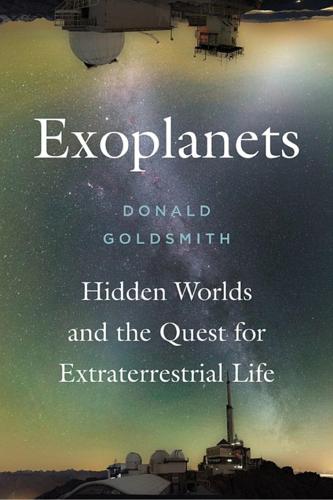
Exoplanets: Hidden Worlds and the Quest for Extraterrestrial Life
by
Donald Goldsmith
Published 9 Sep 2018
Most notably, the distances between the stars, and thus the distances between any planetary systems that may surround them, exceed what human intuition suggests by enormous factors. The strangeness of the universe begins with distances that surpass easy understanding. Astronomers have now concluded that two mysterious, invisible, and entirely disparate entities—dark matter and dark energy—permeate and dominate the universe in mass and energy terms.1 Dark matter, revealed by its gravitational effects on “ordinary matter,” consists of particles that are entirely unknown to us at the present time. The “ordinary” form of matter resides primarily in vast clouds of hot gas that permeate giant clusters of galaxies; to a lesser extent, we find ordinary matter in the stars that form the visible units of the universe.
…
The “ordinary” form of matter resides primarily in vast clouds of hot gas that permeate giant clusters of galaxies; to a lesser extent, we find ordinary matter in the stars that form the visible units of the universe. The contribution from any smaller objects that orbit these stars falls far below the amount of matter in the stars themselves. Dark energy, even more mysterious, steadily increases the rate at which the universe expands. Happily for our purposes, neither dark matter nor dark energy significantly affect the search for planets that may orbit our stellar neighbors. During the middle of the nineteenth century, as astronomers first measured the basic distance scales of the cosmos, they realized that the immense distance from the Earth to the sun (150 million kilometers) represents only a tiny fraction, about 1 part in 300,000, of the distances to the nearest stars.
…
See Atacama Large Millimeter Array Alpha Centauri, 10, 19–20, 43, 183, 208 Aluminum, 137, 153 Ammonia, 161–62 Anaxagoras, 124 Andromeda galaxy, 208 Angel, Roger, 195 Ariel (Atmospheric Remote-sensing Infrared Exoplanet Large-survey), 186 Arrhenius, Svante, 124 Asteroids, 16, 21, 54, 63, 136–39, 218–23 Astronomical unit, 21 Atacama Large Millimeter Array (ALMA), 48, 142–44, 147, 196, 202 Atmospheres of exoplanets, 42, 60, 106–7, 172, 181, 185 composition of, 107, 172, 181, 185 heat trapping by, 42 observation of, 60, 106 Baikonur Cosmodrome, 51 Barnard’s star, 20 Batygin, Konstantin, 22–23, 139–40 Beaulieu, Jean-Phillipe, 81 Beta Pictoris, 71 Binary star systems, 96–97, 146 Biosignatures, 158, 171–73, 192 Borucki, William, 51, 53 Boss, Alan, 31 Boyajian, Tabetha, 92, 95 Brown, Michael, 22, 139 Brown dwarfs, 41, 69, 82 Butler, Paul, 2, 32 California-Kepler Survey (CKS), 129 Campbell, Bruce, 31 Carbon, 106, 153 Carbon dioxide, 106, 137, 162, 164, 172–73, 199 Carbon monoxide, 60, 72, 137 Carrington event, 123, 168–69 Cassini spacecraft, 164 CCD detectors, 108 Center for Astrophysics, 46, 109, 157 Center of mass, 15–19, 37, 43, 96–97 Cerro Pachón, 72–73 Charbonneau, David, 55 CHEOPS (CHaracterising ExOPlanet Satellite), 125–26 Chu, Stephen, 212 Copernican principle, 32 Coronagraphic mask, 69, 72–73, 182, 190–93 Coronagraphy, 69–71, 205 CoRoT spacecraft, 53–54 Dark energy, 10–11 Dark matter, 10–11 Deep Space Industries, 222 Discovery Channel Telescope, 48 Domagal-Goldman, Shawn, 174 Dominion Astrophysical Observatory, 31 Doppler, Johann, 30 Doppler effect, 30 Doppler tomography, 109 Draugr, 26 Dressing, Courtney, 123 Dust, 54, 68, 72, 90, 94, 97, 106, 115, 135, 137, 139, 143–47, 151, 159, 172, 204, 210–11 Dyson, Freeman, 94, 212, 224 Dyson sphere, 94 Eccentricity, 35–38 Eclipse, 75, 96, 173 Einstein, Albert, 8, 74–82, 205–6, 214–17 Einstein ring, 76, 205–6 Electromagnetic radiation.

Doppelganger: A Trip Into the Mirror World
by
Naomi Klein
Published 11 Sep 2023
“to take the sting out”: Anjana Ahuja, “‘Grief Tech’ Avatars Aim to Take the Sting Out of Death,” Financial Times, December 20, 2022. landmark 2015 book: Simone Browne, Dark Matters: On the Surveillance of Blackness (Durham, N.C.: Duke University Press, 2015). “This is a difficult archive to write about”: Browne, Dark Matters, 91–92. “a biometric technology”: Browne, Dark Matters, 91. “Branding in the transatlantic slave trade”: Browne, Dark Matters, 91. “an object among other objects”: Frantz Fanon, Black Skin, White Masks, trans. Richard Philcox (New York: Grove Press, 2008), 89. “relate to our self in the third person”: Nancy Colier, “The Branding of the Self,” Psychology Today, August 15, 2012.
…
She logged back on and posted, but reluctantly; she knew there was something wrong with a culture that valued public performances of a virtuous self over more tangible solidarities and relationship building. These views are born of my students’ own experiences and enhanced by our readings, particularly Simone Browne’s landmark 2015 book, Dark Matters: On the Surveillance of Blackness. Browne, a professor of African and African Diaspora Studies at the University of Texas at Austin, traces the origins of modern-day branding to the literal branding of African people in the transatlantic slave trade. “This is a difficult archive to write about,” Browne observes, “where iron instruments fashioned into rather simple printed type became tools of torture.
…
consumers content moderators copyrights and trademarks Corporate Self university course Counterlife, The (Roth) Covid pandemic; as bioweapon; China and; conspiracy theories about; as culling the herd; Disinformation Dozen and; far right and far-out alliance and; “Five Freedoms” and; Gates and; gyms during; health and wellness cultures and; individualism and; lockdowns in; long Covid; masks in; origin of the virus; as portal for change; profiteering from; race and class disparities and; relief programs during; religious people and; risk factors and; schools and; shock doctrine in; social media and; tech companies and; tests for the virus; Trump and; workers and Covid vaccines; adverse reactions to; Freedom Convoy and; mandates, passports, and apps; nanoparticles in; Nazi Germany analogies and; patents on and profits from; racial oppression analogies and; reproductive health and; restaurants and; shedding claims about; “slavery forever” video and; vaccine-autism myth and Crackdown Croatia Culture and Imperialism (Said) Cuomo, Andrew currency customization DailyClout Daily Command Brief Dark Matters (Browne) Darwin, Charles Darwish, Mahmoud data Davis, Angela Davis, Mike death de Bres, Helena Debt Collective Deception (Roth) DeepBrain AI Inc. deep state Deepwater Horizon de Hooge, Anna Delingpole, James dementia Demjanjuk, John democracy Democratic Party denial Depression, Great Descent of Man, The (Darwin) Diagnostic and Statistical Manual of Mental Disorders Diagolon diagonalism; “body people” and; far right and far-out; Querdenken Dickens, Charles Didulo, Romana diphtheria disabilities; changeling myths and; forced sterilization and; Nazi Germany and; see also autism disaster capitalism disaster doppelgangers Discourse on Colonialism (Césaire) Disinformation Dozen doi’kayt (“hereness”) Don’t Look Up doppelgangers and doubling; aging as; Brunelle’s portraits of; in Capgras delusion; in changeling myths; confrontations with; diet and fitness and; digital disaster; evil twins; fascist; Freud’s views on; Israel-Palestine conflict and; in literature and film; machine-made; in multiverse stories; originals replaced by; origin of “doppelganger”; parent-child relationship as; racial; self-branding as; souls as; taking on life of their own; thinking as; twinning Dostoyevsky, Fyodor Double, The (Dostoyevsky) Double, The (film) Double, The (Saramago) Dowd, Maureen drug companies, see pharmaceutical companies Dual Du Bois, W.
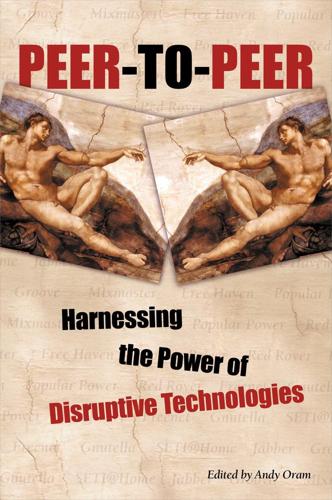
Peer-to-Peer
by
Andy Oram
Published 26 Feb 2001
Slashdot moderation system, A reputation system that resists pseudospoofing: Advogato Aiken, Alexander, Reputation metrics AIM (AOL Instant Messenger) attacking by shilling, Attacks and adversaries protocol-centric addressing, Nothing succeeds like address, or, DNS isn’t the only game in town–An explosion of protocols AIMster, Immediate information sharing: The new instant messaging services Akamai Technologies, Active caching and mirroring Albert, Rka, Initial experiments, Simulating fault tolerance all points payment model, The difficulty of distributed systems: How to exchange micropayments among peers node-specific tickets and, Micropayments in the Free Haven context all you can eat business models, All you can eat alt newsgroups, Usenet America Online (AOL) and Gnutella, Gnutella’s first breath amortized pairwise payment model, The difficulty of distributed systems: How to exchange micropayments among peers Anderson, David, Contents of this book, SETI@home–The peer-to-peer paradigm, Contributors Anderson, Ross, Document revocation , The Eternity Service anonymity analysis of, An analysis of anonymity–An analysis of anonymity attacks on, Attacks on anonymity computational, An analysis of anonymity–An analysis of anonymity Crowds software and, Crowds Freenet and, Requests on the Internet, Risks involved in web server logging, Special problems posed by peer-to-peer systems Napster users and, Napster partial, Partial anonymity peer-to-peer, Anonymity and peer-to-peer–Anonymous Gnutella chat, Privacy in data-sharing systems perfect forward, An analysis of anonymity–An analysis of anonymity reliability and, Reliability with anonymity–Reliability with anonymity types of, Anonymity for anonymous storage–Partial anonymity vs. accountability, A case study: Accountability in Free Haven why it is needed, Risks involved in web server logging Anonymizer.com, Acknowledgments, Anonymizing proxies anonymizing proxies, Anonymizing proxies, Other anonymity tools anonymous digital cash (see digital cash) Gnutella chat, Anonymous Gnutella chat macropayment digital cash (see macropayment digital cash schemes) publishing systems, Trust in other systems Eternity Service, The Eternity Service Freenet, Freenet–Conclusions, Freenet problems with, Content certification Publius, Publius–Publius in a nutshell searching technologies, Trust and search engines–Deniability remailers, Mixmaster Remailers–General discussion servers, Peer-to-peer models and their impacts on accountability storage (Free Haven), Anonymity for anonymous storage–Partial anonymity anti-censorship strategy, Red Rover–Acknowledgments AOL (America Online) and Gnutella, Gnutella’s first breath application service provider (ASP), PCs are the dark matter of the Internet application-to-application conversations, Conversations and peers Arecibo radio telescope, Radio SETI Arnold, Ken, Remaking the Peer-to-Peer Meme ARPANET, A revisionist history of peer-to-peer (1969-1995) ASP (application service provider), PCs are the dark matter of the Internet Asthagiri, Nimisha, Contents of this book, Security–Taxonomy of Groove keys, Contributors asymmetric algorithm, default, Security characteristics of a shared space asymmetric bandwidth, Asymmetric bandwidth, Users as consumers, users as providers asymmetric keys, Taxonomy of Groove keys authenticators (MAC), Mutually-suspicious shared spaces fetching lost messages, Fetching lost messages supporting message fanout, Message fanout–Message fanout author-anonymity, Anonymity for anonymous storage, An analysis of anonymity automatic pass-along participation and Napster, File sharing: Napster and successors avatars, selling, Reputation for sale—SOLD!
…
Even if you assume that the average DNS host has 10 additional addresses of the form foo.host.com, the total number of peer-to-peer addresses now, after only 4 years, is of the same order of magnitude as the total number of DNS addresses, and is growing faster than the DNS universe today. As new kinds of Net-connected devices like wireless PDAs and digital video recorders such as TiVo and Replay proliferate, they will doubtless become an important part of the Internet as well. But for now, PCs make up the enormous majority of these untapped resources. PCs are the dark matter of the Internet, and their underused resources are fueling peer-to-peer. Real solutions to real problems Why do we have unpredictable IP addresses in the first place? Because there weren’t enough to go around when the Web happened. It’s tempting to think that when enough new IP addresses are created, the old “One Device/One Address” regime will be restored, and the Net will return to its pre-peer-to-peer architecture.
…
Instead of trying to store these files in a central database, Napster took advantage of the largest pool of latent storage space in the world—the disks of the Napster users. And thus, Napster became the prime example of a new principle for Internet applications: Peer-to-peer services come into being by leveraging the untapped power of the millions of PCs that have been connected to the Internet in the last five years. PCs are the dark matter of the Internet Napster’s popularity made it the proof-of-concept application for a new networking architecture based on the recognition that bandwidth to the desktop had become fast enough to allow PCs to serve data as well as request it, and that PCs are becoming powerful enough to fulfill this new role.

Human Frontiers: The Future of Big Ideas in an Age of Small Thinking
by
Michael Bhaskar
Published 2 Nov 2021
Technology also fights back against climate change: from vat-grown meat, to genetically modified plastic eaters, to direct air capture, to space-based solar power, there is, in the end, no shortage of answers. Much else is revolutionised. This novel toolkit re-accelerates fundamental science, allowing researchers to unravel the dark matter and dark energy, profound mysteries that sit at the heart of our understanding of the cosmos. We might even detect the ‘dark force’, an even more mysterious fifth force of nature acting as a bridge to dark matter and energy. We should expect great and popular new art – the Shakespeare of computer games, the Beethoven of VR, the J.K. Rowling of DNA. There is scope for major new genres and new media to emerge.
…
A Nature poll of 1500 scientists found that 70 per cent had failed to reproduce results.42 In some fields up to 50 per cent of studies fail to replicate.43 The figures compound corrosive evidence of methodological error like small sample sizes, inaccurate statistical analyses, bias and even fraud in much scientific work, a system in which the gaming of results for maximum impact trumps rigour.44 What's more, as in cancer research, the accumulation of science generally creates its own problem: there is simply too much relevant material for scientists to consume. Important, often older work is thus regularly missed.45 Some, like the physicist Lee Smolin, maintain that progress on the most fundamental challenges has been particularly disappointing. Questions like the relationship between quantum theory and gravity, or the nature of dark matter and dark energy, remain unanswered. He argues that from the end of the eighteenth century physics leapt forward in twenty-year intervals. This progress has stopped: ‘since the end of the 1970s there has not been a genuine breakthrough in our understanding of elementary-particle physics.’ 46 Sabine Hossenfelder is blunter still: ‘Nothing is moving in the foundations of physics,’ she argues.
…
Science is supposedly built around an organised scepticism; but there is a chance that it has calcified into arrogant scientism, buying too heartily into its own dogmas; cutting itself off from strange or seemingly unproductive avenues for reasons of bureaucracy or narrow-mindedness. As I write, I've been leafing through a recent edition of Scientific American. It contains multitudes: the largest ever experiment to detect neutrinos, experiments to find new particles and identify dark matter, pioneering research on supermassive black holes in the early universe, explorations inside neutron stars and studies of quantum entanglement. It doesn't feel like a struggling area, and that isn't the word I'd use. Instead science is both an inspiring success and also subject to increasingly potent diminishing returns, especially in its most radical and fundamental guises.

Science...For Her!
by
Megan Amram
Published 4 Nov 2014
A NEUTRON STAR: 16,800,000,000,000 lbs. Real Khloe Kardashian over here. HELL: 9,357,753,975,867,564,57 9,846,735,732,342 lbs. HEAVEN: 0 lbs. ;) A BLACK HOLE: 0 lbs. ;) Heating Up & Cooling Down * * * Thermodynamics is the study of how heat is transferred from one thing to another. Dark matter is good at absorbing heat. Um, speaking of “dark matter?”—I love black men! ;) FIG. 3.2 Sorry to be TMI but they are great lovers! I got bit by the jungle fever bug (malaria) when I was like thirteen and I have not looked back. FIG. 3.3 FIG. 3.2 FIG. 3.3 THREE FUN WAYS TO ENJOY A DATE Even If You Are White and Your Date Isn’t the Same Race as You * * * Go to a movie that involves lots of races!
…
W., 76 C Caitlin, xvii calculators, 151 Camila, xii cancer, 23, 123 quiz for, 124–26 Candice, xviii Candy, viii capital punishment, 23 carbohydrates, 32–33 carbon, 50 carbon dioxide, 52 Carla, ix Carlita, x Carly, viii Carol, xix Caroline, xii Carolyn, xv Carrie, viii cars, 105 Carson, Rachel, x, 172 Cassandra, xvii Catherine, xii Celine, xvii cells, 12, 14 centripetal force, 70 cervix, 136 Charlotte A., x Charlotte M., x Charlotte T., x Chelsea, xvii chemistry, 31–61, 63, 190 of cooking, 32–35 childbirth, 23 children, 10–11 Chloe, viii Chris, xiii Christina, ix Christine, xv Christmas trees, 97–99 chromosomes, 18 Chunky Love, ix Claire, xii Claire-Marie, ix Clara, ix Class, 24 Claudia, xi climate change, 103 coal, 102 coma, 23 computers, 151 confabulating, 101 Cookies, ix cooking, 32–35 Cori, Carl Ferdinand, 174 Cori, Gerty, 174 Courtney, xiv covalent bonds, 55 cover letter, girlfriend, 134–35 cover-ups, 79, 89 Craigslist, 154 Cris, ix Cristy, ix crocus, 100 Crystal, ix Crystal Glass, ix Curie, Irene, 170 Curie, Marie, 60, 170, 173, 174 Curie, Pierre, 174 Cynthia, xv D daisy, 100 Dana, xvii Dani, xix Daniella, xviii Danielle, xiv dark matter, 72 Darwin, Charles, 26 dating, 154–59 online sites for, 154–56 Davida, viii Dawn, xv Day-Lewis, Daniel, 15 death, 20–23, 50, 51 Debbie, xv Deen, Paula, 33–35, 89 dendrology, 91–99 Denise, xviii depression, 128 Dereka, xii Deschanel, Zooey, 80 Devil Wears Prada, The (Weisberger), 119 diagnosis, 126 diamonds, 45, 102 Diana, xvii Diaz, Cameron, 15 disease, 123–26 displacement, 65 DNA, 17–18, 138 Donica, xix Donna, xvi double helix, 17 Drew, xiii driving, women and, 65–68 drugs, 90, 131–32 E Earth, 147, 150 age of, 147 earth sciences, 87–114 Eat, Pray, Love (Gilbert), 119 E. coli, 130 economics, 159–61 Edna, xvi eggs, 2–3, 18 freezing of, 157 egg whites, 34 Einstein, Albert, 75 electronic music, 162 electrons, 55 elements, 46–49, 57 Eliana, viii Elizabeth, xi Ella, ix Ellen, viii Ellie, xiii e-mail, 151 Emily, xi Emma, xi employment, 174–75 Erica, xiv Erin, xiv Eryn, xviii Esther, viii ethanol, 39 eukaryotes, 14 Eve, 28 Evelyn, x evolution, 26–28 vs. religion, 27–28 expiration dates, 130 extinction, 26 extraterrestrial life, 150 Ezri, xv F face mash, 19 Faith, xi fallopian tubes, 136 Family, 24 fats, 33 female orgasms, 107 fertilization, 3 Fifty Shades Freed (James), 119 Fifty Shades of Grey (James), 119 final exam, 190–91 floriculture, 100–101 flowers, study of, 100–101 Fluffy, xix Food and Drug Administration (FDA), 131 food poisoning, 130 formaldehyde, 45 4-vinylguaiacol, 44 Francesca, xi Franklin, Rosalind, 138 fruit salad, 34 G G., ix Gabriella, x Galileo Galilei, 75 gamma radiation emissions, 57 garden burgers, 34 gas, 56 gay-ball warming, 103 genes, 17 Genesis 4:1, 119 genetics, 16–19 Genus, 24 Getgo, ix Giana, xi Gina, xviii “gin and Drano,” 37 girlfriend cover letter, 134–35 Girls’ Guide to Fishing and Hunting, The (Bank), 119 global warming, 103–6 contributing to, 105 fashion staples for, 106 glycogen, conversion of, 174 Golda, xix Gone Girl (Flynn), 119 Goodall, Jane, 170, 173 Goodnight Moon (Brown), 111 Grace, x Gregoria, xviii gravity, 147 H H.P.T., xix Hailey, x hairspray, 105 Hamm, xi Hannah, x Harissa, xix Harper, x Heather, xiii Heidi, viii Hemings, Sally, 72 He’s Just Not That into You (Behrendt), 119 Holly, xvii homosexuality, 77 hoodies, 79 Hooke, Robert, 12 Hoover, J.
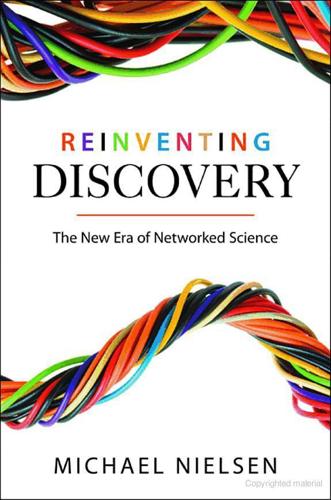
Reinventing Discovery: The New Era of Networked Science
by
Michael Nielsen
Published 2 Oct 2011
In the 1970s the astronomer Vera Rubin discovered that stars toward the outer reaches of our Milky Way galaxy are rotating around the center of the galaxy much faster than we’d expect on the basis of our best theory of gravity, the general theory of relativity. But rather than give up on general relativity, most astronomers instead prefer to postulate the existence of invisible dark matter permeating the galaxy. If the distribution of dark matter is just right, then general relativity can correctly account for the speed of stars on the outer edges of the galaxy. By comparison to the popularity of dark matter, new theories of gravity have been pursued by relatively few astronomers. So far I’ve made little distinction between conventional explanations and complex models. This blithe conflation of the two has perhaps bothered some readers.
…
See also Firefox; Linux; MathWorks competition; open source software computer games: addictive quality of, 146, 147 for folding proteins (see Foldit) connectome, human, 106, 121 conversation, offline small-group, 39–43 conversational critical mass, 30, 31, 33, 42 Cornell University Laboratory of Ornithology, 150 Cox, Alan, 57 Creative Commons, 219, 220 creative problem solving, 24, 30, 34, 35, 36, 38. See also problem solving Crick, Francis, 79–80, 104 Critical mass: for chain reaction, 29–31 conversational, 30, 31, 33, 42 dark matter, 127 data: citation of, 195 theft of, 104 databases, online: of all the world’s knowledge, 4–5 of American Chemical Society, 164 biological, 121 GenBank, 4, 6–7, 9, 108 of Open Dinosaur Project, 150–51 specified by grant agencies, 191 data-driven intelligence, 112–16 in biology, 116–19 complemented by citizen science, 151 for machine translation, 124–25.

Only Humans Need Apply: Winners and Losers in the Age of Smart Machines
by
Thomas H. Davenport
and
Julia Kirby
Published 23 May 2016
A distant echo of that moment came in 2012, when Francisco Kitaura and his team at the Leibniz Institute for Astrophysics in Potsdam, Germany, developed a new algorithm based on artificial intelligence, called KIGEN, to map the “dark matter” of the cosmos. Dark matter makes up some 23 percent of the universe, compared to just 5 percent “normal matter” of visible stars, planets, dust, and gases—and both are flung across the 72 percent that consists purely of “dark energy.” Understanding just where and how the dark matter has been distributed since the Big Bang is essential to gaining deeper knowledge of the universe’s dynamics, but the computational task is immense. Summing up the contribution of the new algorithm, Kitaura says: “With the help of AI, we can now model the universe around us with unprecedented accuracy and study how the largest structures in the cosmos came into being.”1 That is a pretty smart machine—and it’s the kind of smart machine we can all love because, again, it is pure augmentation.
…
The best use of his human talent is in the “wet lab” preclinical studies where a compound is applied to live disease and it’s time to figure out just how it could be formulated to treat a patient, with sensitivity to toxicity and dose tolerance.2 Both of these are realms where smart machines are on the rise but don’t threaten jobs, because the goals are so immense that today’s labor supply doesn’t begin to match the requirements of the tasks in their unautomated states. There are not enough pharmacologists in Framingham, or indeed the world, to pore over the tens of trillions of data points that Berg’s AI system processes in its analysis of tissue samples. All the astronomers ever churned out by the world’s universities could not map the dark matter lurking among the 54,000 known galaxies of the universe. We’re guessing that there are no neo-Luddites out there trying to smash any of this machinery. The question is, then: Why don’t all applications of smart machines feel as helpful as these? What really is so different about these combinations of humans and machines?
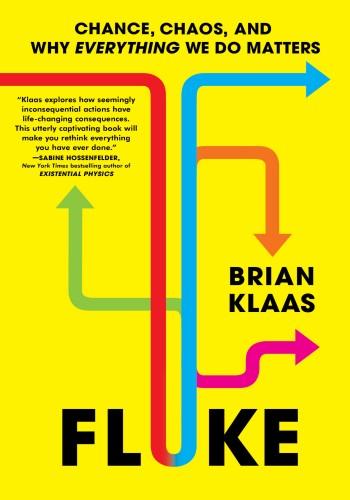
Fluke: Chance, Chaos, and Why Everything We Do Matters
by
Brian Klaas
Published 23 Jan 2024
If the asteroid had hit a moment earlier or later, it would have hit deep ocean instead of shallow seas, releasing far less toxic gas, and killing many fewer species. If the asteroid had been delayed by just one minute, it might have missed Earth entirely. Even more mind-boggling, Harvard astrophysicist Lisa Randall has proposed that the asteroid came from oscillations in the sun’s orbit as it passes through dark matter. Those small gravitational disturbances, she argues, flung the asteroid from the distant Oort cloud toward our planet. But for one small vibration in an unfathomably distant reach of deep space, dinosaurs might have survived—and humans might never have existed. That’s contingency. Now, consider our eyes instead.
…
We almost always end up relying on a simplistic dichotomy: it must be due to some combination of nature (genes) and nurture (our environment, upbringing, and experiences). But a third possibility is often ignored. What if, as with the mysterious marmorkrebs, some variation between us is just accidental or arbitrary? Behavioral geneticists have concluded that roughly half the variation between us is due to our DNA. That leaves another half that’s developmental dark matter, the inexplicable minutiae of life. Damien Morris, a behavioral geneticist at King’s College London, argues that our life paths can sometimes be subject to seemingly random chance, which he illustrates with a story of identical twins in a classroom. “One stares out the window and is distracted by a bird flying by, just as the other twin is enraptured by the teacher’s account of a particular poem—and it forms a lifelong love of poetry.”
…
About a quarter of the models were saying yes, about a quarter were saying no, and half were saying “nothing to see here.” Trying to figure out what had happened, the researchers carefully examined each team’s methodological decisions. But methodological choices could only explain about 5 percent of the variation in the findings. The other 95 percent was inexplicable dark matter. Nobody could explain it. The researchers drew a conclusion that matches the ethos of this book: “Even the most seemingly minute [methodological] decisions could drive results in different directions; and only awareness of these minutiae could lead to productive theoretical discussions or empirical tests of their legitimacy.”
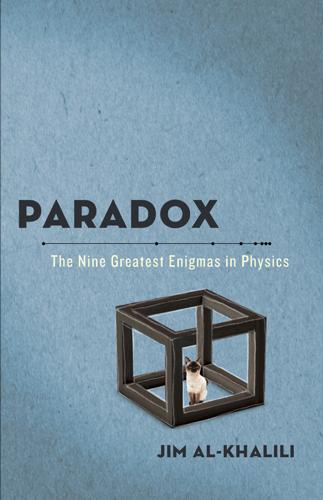
Paradox: The Nine Greatest Enigmas in Physics
by
Jim Al-Khalili
Published 22 Oct 2012
Others, such as those involving the cat and the demon, have, in the eyes of some, yet to be satisfactorily laid to rest. When choosing my greatest enigmas in physics, I have not homed in on the biggest unsolved problems—for example, what dark matter and dark energy, which between them make up 95 percent of the contents of our universe, are made of, or what, if anything, was there before the Big Bang. These are incredibly difficult and profound questions to which science has yet to find answers. Some, like the nature of dark matter, that mysterious stuff that makes up most of the mass of galaxies, may well be answered in the near future if particle accelerators like the Large Hadron Collider in Geneva continue to make new and exciting discoveries; others, like an accurate description of a time before the Big Bang, may remain unanswered forever.
…
I set them out here merely to highlight how much more we still need to learn about the Universe and our place in it. I begin with ten problems that fall into the first category—those to which I anticipate science finding satisfactory answers within my lifetime: 1. Why is there more matter than antimatter in the Universe? 2. What is dark matter made of? 3. What is dark energy? 4. Will fully functional invisibility cloaks be possible? 5. How far can we push chemical self-assembly toward explaining life? 6. How does a long strand of organic material fold up into a protein? 7. Is there an absolute limit to human life spans? 8. How are memories stored and retrieved in the brain?
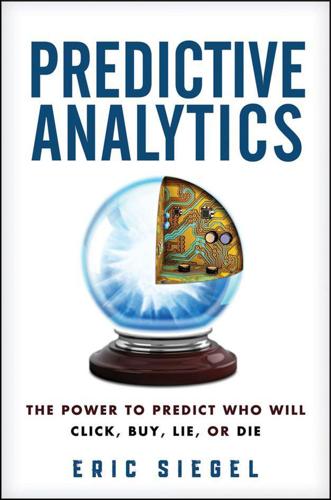
Predictive Analytics: The Power to Predict Who Will Click, Buy, Lie, or Die
by
Eric Siegel
Published 19 Feb 2013
Contest to automatically grade student-written essays: Kaggle, “Develop an Automated Scoring Algorithm for Student-Written Essays,” Competition, February 10, 2012. www.kaggle.com/c/asap-aes. Mark D. Shermis and Ben Hamner, “Contrasting State-of-the-Art Automated Scoring of Essays: Analysis,” Contrasting Essay Scoring, April 12, 2012. http://dl.dropbox.com/u/44416236/NCME%202012%20Paper3_29_12.pdf. Contest to predict the distribution of dark matter in the universe: Kaggle, “Mapping Dark Matter,” Competition, May 23, 2011. www.kaggle.com/c/mdm. Heritage Health Prize ($3,000,000): Kaggle, “Improve Healthcare, Win $3,000,000,” Competition, April 4, 2011. www.kaggle.com/host/casestudies/hpn. More Kaggle case studies: Anthony Goldbloom, “Machines Learn, but Can They Teach?”
…
One competition concerned with educational applications witnessed triumph by a particle physicist (Great Britain), a data analyst for the National Weather Service (Washington, D.C.), and a graduate student (Germany); $100,000 in prize money sponsored by the Hewlett Foundation (established by a founder of Hewlett-Packard) went to these winners, who developed the best means to automatically grade student-written essays. Their resulting system grades essays as accurately as human graders, although none of these three winners had backgrounds in education or text analytics. And guess what kind of expert excelled at predicting the distribution of dark matter in the universe? Competing in a contest sponsored by NASA and the Royal Astronomical Society, Martin O’Leary, a British PhD student in glaciology, generated a method the White House announced has “outperformed the state-of-the-art algorithms most commonly used in astronomy.” For this contest, O’Leary provided the first major breakthrough (although he was not the eventual winner).
…
—Jeff Howe, Crowdsourcing: Why the Power of the Crowd Is Driving the Future of Business The organizations I’ve worked with have mostly viewed the competition in business as a race that benefits from sharing, rather than a fight, where one’s gain can come only from another’s loss. The openness of crowdsourcing aligns with this philosophy. —Stein Kretsinger, Founding Executive of Advertising.com One small groundbreaking firm, Kaggle, has taken charge and leads the production of PA crowdsourcing. Kaggle has launched 53 PA competitions, including the essay-grading and dark matter ones mentioned above. Over 50,000 registered competitors are incentivized by prizes that usually come to around $10,000 to $20,000, but climb as high as $3 million. These diverse minds from more than 200 universities and 100 countries, about half academics, have submitted over 144,000 attempts for the win.2 An enterprise turns research and development completely on its head in order to leverage PA crowdsourcing.

The Cancer Chronicles: Unlocking Medicine's Deepest Mystery
by
George Johnson
Published 26 Aug 2013
Feinbaum, and Victor Ambros, “The C. elegans Heterochronic Gene lin-4 Encodes Small RNAs with Antisense Complementarity to lin-14,” Cell 75 (December 1993): 843–54. [http://www.ncbi.nlm.nih.gov/pubmed/8252621] 50. the importance … has been overblown: Harm van Bakel et al., “Most ‘Dark Matter’ Transcripts Are Associated with Known Genes,” PLOS Biology 8, no. 5 (May 18, 2010): e1000371; [http://www.plosbiology.org/article/info%3Adoi%2F10.1371%2Fjournal.pbio.1000371] and Richard Robinson, “Dark Matter Transcripts: Sound and Fury, Signifying Nothing?” PLOS Biology 8 (May 18, 2010): e1000370. [http://www.plosbiology.org/article/info%3Adoi%2F10.1371%2Fjournal.pbio.1000370] 51. a sweeping new theory: Leonardo Salmena, Pier Paolo Pandolfi, et al., “A ceRNA Hypothesis: The Rosetta Stone of a Hidden RNA Language?”
…
Only then can we truly understand the cellular circuits and how they can go wrong. Junk that is not junk. Genes—99 percent of them—that reside in our microbes rather than in our own cells. Background seemed to be trading places with foreground, and I was reminded of what happened in cosmology when most of the universe turned out to be made of dark matter and dark energy. Yet for all the new elaborations, the big bang theory itself was left standing. It wasn’t so clean and simple as before, but it provided the broad strokes of the picture, a framework in which everything, aberrations and all, made sense. The same appeared to be happening with the hallmarks.
…
Try as he might, Maxwell’s demon will ultimately be defeated. In the end, the Echthroi always win. Epilogue Joe’s Cancer A life-view by the living can only be provisional. Perspectives are altered by the fact of being drawn; description solidifies the past and creates a gravitational body that wasn’t there before. A background of dark matter—all that is not said— remains, buzzing. —JOHN UPDIKE, Self-Consciousness The next spring at the ranch, I’m told, the salsola was as bad as ever. I wasn’t there to see it. During that year our marriage ended, seventeen years after it had begun. For a long time our lives had been diverging. The cancer had brought us closer but now it was gone.
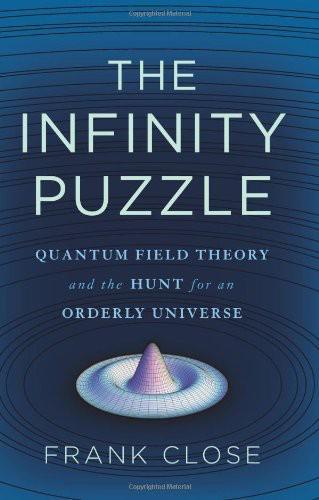
The Infinity Puzzle
by
Frank Close
Published 29 Nov 2011
How much of this is true, and how many of these bizarre names will one day become part of the lexicon of science, is for the future. However, there is one aspect of supersymmetry that could prove most profound: SUSY might be the source of the dark matter that appears to dominate the material universe. In cosmologists’ simulations of the large-scale universe, dark matter is the glue that binds the galaxies, preventing them from spiraling apart and probably having helped to form them in the first place. From the motion of galaxies we can infer that 90 percent of the universe consists of stuff that is dark—in the sense that it does not shine in any wavelength of the electromagnetic spectrum.
…
This is analogous to the way 350 the infinity puzzle that the stars form, but whereas stars made of conventional particles feel strong and electromagnetic forces, which enable them to shine, the conglomerates of neutral “-inos” have no such ability. Inert lumps of dark matter populating space accompanied by occasional “conventional” particles, such as make us, could be the nature of the universe. If SUSY particles are discovered, and turn out to have these properties, it would prove a beautiful convergence between high-energy particle physics and cosmology. Having once believed that we were at the center of the universe, and then seen our location shifted into the outer reaches of one out of billions of galaxies, the stuff that makes us might turn out to be no more than flotsam in a sea of dark matter. big bang day When the Large Hadron Collider was approved in 1993, some wondered if it would ever become reality.
…
From the motion of galaxies we can infer that 90 percent of the universe consists of stuff that is dark—in the sense that it does not shine in any wavelength of the electromagnetic spectrum. This implies that it is impervious to the electromagnetic force. Lightweight neutrinos have these properties, but the models of galactic dynamics work best if the dark matter consists of massive particles. However, no such particles are known in the standard model. In SUSY, such beasts are expected. Moreover, if the lightest superparticles are electrically neutral siblings of the photon or gluon—known as “photino” and “gluino”—they could be stable and form large-scale clusters through their mutual gravitational attraction.
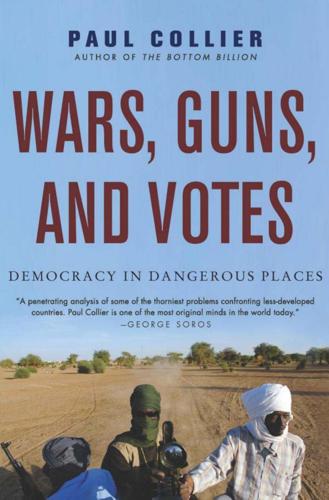
Wars, Guns, and Votes: Democracy in Dangerous Places
by
Paul Collier
Published 9 Feb 2010
The second was Votes and Violence 23 the converse question of why autocracies become more dangerous at higher levels of income. Finally, and most mysteriously, once these income-related effects of democracy and autocracy were allowed for, there remained a further pure effect of democracy that was making societies more at risk of violence. Like some unobservable dark matter it was lurking as a constant across societies. What was it? These were not easy questions. The key insight came by the simple psychological technique of imagining myself in the position of being a former dictator in one of the countries of the bottom billion who had caved in to pressure from donors to democratize.
…
Well, the awkward problem with preemptive purges is that they are not compatible with the rule of law: the technique depends upon punishing people even though they haven’t done anything. This sort of conduct collides with even fairly modest levels of democracy. The idea that the ability to mount a purge would be reduced as a result of democracy was a plausible explanation for the dark matter. If leaders could no longer mount preemptive purges they might 24 WARS, GUNS, AND VOTES be less able to keep the lid on political violence. This might be why, over and above those effects of democracy that depended upon the level of income, there was the pure effect that increased political violence.
…
Whatever the limitations of the present regime, it is clearly massively more democratic than that of Saddam Hussein. Yet Hussein presided over a relatively peaceful country. It was not an attractive peace, but it was a peace of sorts, and it most surely depended upon preemptive repression rather than citizen consent. So a weakening of technologies of repression is, I think, a likely explanation for the dark matter: the higher risk of political violence that comes from democracy. Why, then, should the net effect of democracy be increasingly favorable as income rises? I think the answer lies in those effects that I started with: accountability and legitimacy. The stark and straightforward reason that in the bottom billion the accountability and legitimacy effects of democracy do not reduce the risk of political violence is that in these societies, democracy does not deliver either accountability or legitimacy.
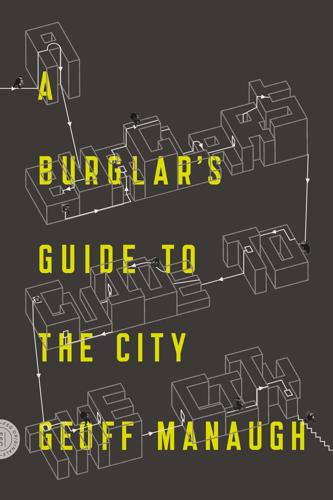
A Burglar's Guide to the City
by
Geoff Manaugh
Published 17 Mar 2015
They knew how buildings actually worked, but also that buildings consist, for the most part, of sprawling back labyrinths of maintenance rooms and side corridors that residents—even the most dutiful of apartment owners—never visit or realize exist. For a burglar, these spaces on the outer margins of architectural consciousness are like the dark matter of the built environment. Laundry rooms, fire escapes, employee staircases, emergency exits, rooftop boiler rooms; the list goes on and on. An overlooked hinterland nonetheless central to any building’s ability to function, these sorts of facilities permeate hotels and apartment complexes. From a burglar’s point of view, these sorts of spaces are temptations: secondary passageways and points of entry over which few people feel they have responsibility.
…
The deep interiors of buildings such as hotels tended to be relatively unprotected, in his experience; this meant that once you got past the entrances and lobbies and had wandered farther into a building’s core, you could expect to find fewer people walking around, whether they were guards on patrol or residents taking out the garbage. Every building had its rhythms. These service corridors were the internal hinterlands—the architectural dark matter—so beloved by Bill Mason. The Internet has been a godsend to burglars, Dakswin pointed out. He had been going online to research different neighborhoods, zooming in to see specific buildings on Google Street View to scope out everything from window heights—and thus potential routes into someone’s home—to the presence of fences and shrubbery that could provide welcome cover.
…
In one of the film’s most iconic scenes, McClane evades capture by climbing through an air duct—this after falling down an HVAC shaft when the machine gun he has been using as an anchorage point fails—giving the building’s ventilation system a second life as an escape route and adding to the popular mythology of the ventilation system as an overlooked, parallel system of circulation within a building. As we saw with Bill Mason, these vents are part of the architectural dark matter—the invisible backstage—that makes up so much of the built environment. Indeed, McClane’s actions reveal a new type of architectural space altogether—a topological condition that we might call Nakatomi space, wherein buildings reveal near-infinite interiors, capable of being traversed through all manner of nonarchitectural means, with their own exhilarating form of boundless fluidity.

Radical Cities: Across Latin America in Search of a New Architecture
by
Justin McGuirk
Published 15 Feb 2014
For Cruz, the only way forward is not to play by the existing rules, but to start redesigning those institutions. In San Ysidro, he has been seeking to change the zoning laws to allow a richer and more empowering community life. And changing legislation means engaging with what has been called the ‘dark matter’* – not just the physical fabric of the city, but its regulations. * A term coined by the architect Wouter Vanstiphout, later used in the title of Dan Hill’s 2012 book, Dark Matter and Trojan Horses: A Strategic Design Vocabulary. This is the very definition of the activist architect, one who creates the conditions in which it is possible to make a meaningful difference. Cruz himself, who has a tendency to slip into academic jargon, calls it ‘expanded modes of practice’.
…
Thinking back to two of his heroes, Alison and Peter Smithson, Alfredo claims that they were sidelined because ‘they didn’t engage in the politics enough’. This is simplistic, but what I understand by it is that for the Smithsons and other modernist builders of social housing, the going was good when they could count on governments seeking them out, but not when it was the other way around. Being an activist architect means engaging in the dark matter of politics to make your case when the politicians have no particular plans in mind. By and large, the Venezuelan architecture community does not seek out these challenges, partly because of the social stigma attached to the barrios, but also because of a traditional high-culture education which taught them that architecture is the design of refined objects.
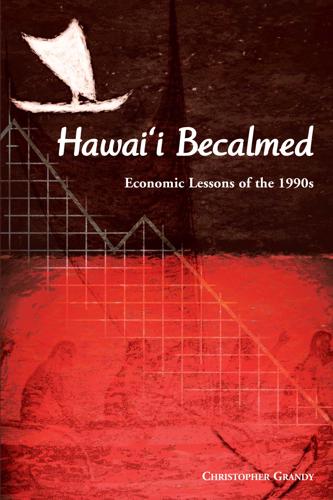
Hawai'I Becalmed: Economic Lessons of the 1990s
by
Christopher Grandy
Published 30 Sep 2002
The bill proposed limitations on the total amount of the credit per year. A similar provision appeared in the administration bill HB 722. Anthony Lawrence Clapes has argued that Hawai‘i has not done nearly enough to attract high tech. See Anthony Lawrence Clapes, Blue Wave Millennium: A Future for Hawai‘i. (Honolulu: Dark Matter Press, 2000). Paul Romer and Robert Lucas are among the leading writers in this area. See Paul Romer, “The Origins of Endogenous Growth,” Journal of Economic Perspectives 8:1(1994): 3–22; and Robert E. Lucas, Jr., “On the Mechanics of Economic Development,” Journal of Monetary Economics 22(1988): 3–42.
…
Princeton: Princeton University Press, 1995. ———“Minimum Wages and Employment: A Case Study of the Fast-Food Industry in New Jersey and Pennsylvania: Reply.” American Economic Review, 90(5)(December 2000): 1397–1420. Clapes, Anthony Lawrence. Blue Wave Millennium: A Future for Hawai‘i. Honolulu: Dark Matter Press, 2000. Crampon, L. J. Hawai‘i’s Visitor Industry, Its Growth and Development. University of Hawai‘i, School of Travel Industry Management, 1976. Eisner, Robert. How Real Is the Federal Deficit? New York: The Free Press, 1986. Grandy, Christopher. “...and Maybe Government Didn’t Grow Much, After All.”

China's Great Wall of Debt: Shadow Banks, Ghost Cities, Massive Loans, and the End of the Chinese Miracle
by
Dinny McMahon
Published 13 Mar 2018
United States in 2020: Yutao Sun and Cong Cao, “Will China Become World’s Largest Research Spender by 2020?,” Analysis, China Policy Institute, December 4, 2014, https://cpianalysis.org/2014/12/04/will-china-become-worlds-largest-research-spender-by-2020/. on dark matter: Gianfranco Bertone, Behind the Scenes of the Universe: From the Higgs to Dark Matter (Oxford: Oxford University Press, 2013), chap. 1. to research neutrinos: “Daya Bay Experiment Begins Taking Data,” Cern Courier, September 23, 2011, http://cerncourier.com/cws/article/cern/47189. than ever before: Rebecca Morelle, “China’s Science Revolution,” BBC, May 23, 2016, http://www.bbc.co.uk/news/resources/idt-0192822d-14f1-432b-bd25-92eab6466362.
…
According to the Organisation for Economic Co-operation and Development, relative to the size of its economy, China already spends more than the European Union on R&D, and is on track to surpass total spending by the United States in 2020. Much of that money has been invested in visionary, one-of-a-kind research facilities, like the world’s largest laboratory for astroparticle physics, buried more than two kilometers underground in Sichuan, which is used for experiments on dark matter. And the sprawling underground complex being built in southeast China that will be used to research neutrinos. And the radio telescope in Guizhou Province that is the biggest of its kind in the world, with a half-kilometer diameter that allows scientists to look deeper into the night sky than ever before.
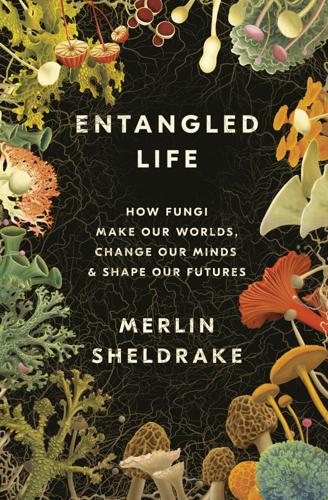
Entangled Life: How Fungi Make Our Worlds, Change Our Minds & Shape Our Futures
by
Merlin Sheldrake
Published 11 May 2020
To compound matters, we understood very little. Graphs of microbial populations projected on a screen had large sections labeled “unknown.” I was reminded of the way that modern physicists portray the universe, more than ninety-five percent of which is described as “dark matter” and “dark energy.” Dark matter and energy are dark because we don’t know anything about them. This was biological dark matter, or dark life. Many scientific concepts—from time to chemical bonds to genes to species—lack stable definitions but remain helpful categories to think with. From one perspective, “individual” is no different: just another category to guide human thought and behavior.
…
For an estimate of the size of our microbiome see Bordenstein and Theis. (2015). For viruses within viruses see Stough et al. (2019). For a general introduction to the microbiome see Yong (2016) and a special issue of Nature on the human microbiome (May 2019): www.nature.com/collections/fiabfcjbfj [accessed October 29, 2019]. dark matter, or dark life: In a sense, all biologists are now ecologists—but disciplinary ecologists have a head start and their methods are starting to seep into new fields: A number of biologists are starting to call for the application of ecological methods to historically non-ecological fields of biology.
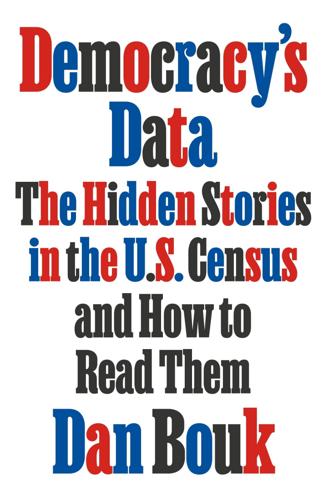
Democracy's Data: The Hidden Stories in the U.S. Census and How to Read Them
by
Dan Bouk
Published 22 Aug 2022
Noxubee County, Mississippi, E.D. 52–21, sheet 1A. 92. “Noxubee County,” The Mississippi Encyclopedia, https://mississippiencyclopedia.org/entries/noxubee-county/. 93. To see how Black studies can and should be made central to our histories and theories of surveillance, see Simone Browne, Dark Matters: On the Surveillance of Blackness (Durham, NC: Duke University Press, 2015). 94. Price, “A Check on Underenumeration in the 1940 Census,” 47. 95. Price, “A Check on Underenumeration in the 1940 Census,” 47. 96. Appendix to Field Division, Bureau of the Census, “Rough Draft: Historical Report of 1940 (16th Decennial) Census Made from the Records That Were Available in 1948 with Emphasis on the Field Aspects” (1948), in Folder “16th Decennial Census 1940—Historical Report of 1940 Census,” Box 2, Entry P 26, RG 29, NARA, D.C. 97.
…
Federal Bureau of Investigation, “Saburo Moriyama; Reki Moriyama,” File No. 100–15947, May 13, 1943, in Case File 146–13–2–16–288, Entry A1-COR 146–13, RG 60, NARA, College Park, MD. 75. Konrad Linke, “Tanforan (Detention Facility),” Densho Encyclopedia, https://encyclopedia.densho.org/Tanforan_%28detention_facility%29/. 76. Weglyn, Years of Infamy, 80, 226. 77. On the long history of travel permits and racialized surveillance in the United States, see Browne, Dark Matters, chapter 2. 78. Commission on Wartime Relocation and Internment of Civilians, Personal Justice Denied, 258. 79. Commission on Wartime Relocation and Internment of Civilians, Personal Justice Denied, 3. 80. “Japanese Residing in the Metropolitan Area of Washington, D.C., April 1, 1940,” in FDR Library, Morgenthau Diary, Book 655, August 10–12, 1943, Microfilm reel 190, frame 197.
…
On China and its distinct approach to socialist data, see Ghosh, Making It Count. One could also study data generated by monarchical governments and arrive at work like William Deringer, Calculated Values: Finance, Politics, and the Quantitative Age (Cambridge, MA: Harvard University Press, 2018); or study data from slavery-centered systems through works like Browne, Dark Matters, Rosenthal, Accounting for Slavery, and Jessica Marie Johnson, “Markup Bodies: Black [Life] Studies and Slavery [Death] Studies at the Digital Crossroads,” Social Text 36, no. 4 (2018): 57–79. Andrew Whitby offers a broad synthetic survey of census history in The Sum of the People: How the Census Has Shaped Nations, From the Ancient World to the Modern Age (New York: Basic Books, 2020). 29.
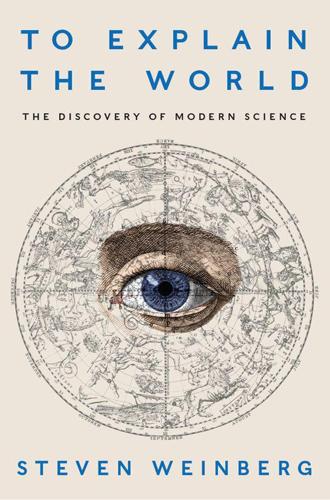
To Explain the World: The Discovery of Modern Science
by
Steven Weinberg
Published 17 Feb 2015
Biologists who are interested in chromosomes or nerve cells study animals like fruit flies and squid, not noble eagles and lions. Elementary particle physicists are sometimes accused of a snobbish and expensive preoccupation with phenomena at the highest attainable energies, but it is only at high energies that we can create and study hypothetical particles of high mass, like the dark matter particles that astronomers tell us make up five-sixths of the matter of the universe. In any case, we give plenty of attention to phenomena at low energies, like the intriguing mass of neutrinos, about a millionth the mass of the electron. In commenting on the prejudices of the pre-Socratics, I don’t mean to say that a priori reasoning has no place in science.
…
There are also eight mathematically similar “gluon” fields responsible for the strong nuclear interactions, which hold quarks together inside protons and neutrons. In 2012 the last missing piece of the Standard Model was discovered: a heavy electrically neutral boson that had been predicted by the electroweak part of the Standard Model. The Standard Model is not the end of the story. It leaves out gravitation; it does not account for the “dark matter” that astronomers tell us makes up five-sixths of the mass of the universe; and it involves far too many unexplained numerical quantities, like the ratios of the masses of the various quarks and electron-like particles. But even so, the Standard Model provides a remarkably unified view of all types of matter and force (except for gravitation) that we encounter in our laboratories, in a set of equations that can fit on a single sheet of paper.
…
P., 381 Cremonini, Cesare, 173, 180 Crombie, A. C., 137, 375 Ctesibius, 35, 41 cube, 10, 12, 17, 162, 163n, 275, 278–79 cubic equations, 109 Cutler, Sir John, 220 Cuvier, Georges, 265 Cyril of Alexandria, 50–51 d’Alembert, Jean, 248 Dalton, John, 11, 259 Damascus, 104, 117, 118 dark energy, 83, 165, 265 dark matter, 9, 264 Darwin, Charles, 24, 172, 200, 248, 265–66, 383 days of the week, 77n De analysi per aequationes number terminorum infinitas (Newton), 224 Dear, Peter, 125, 269, 373, 380 deduction, xv, 19–21, 132, 164, 189, 197, 201–3, 205, 247, 264–65, 289 deferents, 88–92, 93, 97, 110, 149, 150, 160, 180, 303–6, 324–24 Demetrius of Phaleron, 32 Democritus, 7, 11–14, 44, 46–47, 65, 110–11, 260 De Motu (On Motion) (Galileo), 173 density of Earth vs. water 240 Newton and, 232 De Revolutionibus (Copernicus), 153–58, 183–84 derivative, 223 Descartes, René, 37, 40, 141, 194, 201, 202–14, 218, 223, 229, 236, 246, 248, 342, 346–48 Descartes’ law, 37, 207 Dialogue Concerning the Two Chief Systems of the World (Galileo), 185–87, 193, 199 Dialogue Concerning Two New Sciences (Galileo), 190, 193–94 Dicks, D.
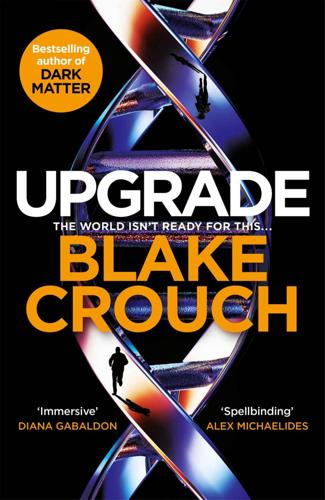
Upgrade
by
Blake Crouch
Published 6 Jul 2022
UPGRADE Blake Crouch is a bestselling novelist and screenwriter. His novels include the New York Times bestseller Dark Matter, and the international bestselling Wayward Pines trilogy, which was adapted into a television series for FOX. Crouch also co-created the TNT show Good Behavior, based on his Letty Dobesh novellas. He lives in Colorado. BY BLAKE CROUCH Wayward Pines Pines – Wayward – The Last Town Andrew Z. Thomas/Luther Kite Series Desert Places – Locked Doors – Break You Stirred – Serial Killers Uncut Standalone Novels Run – Abandon – Snow Bound – Famous Eerie – Draculas – Dark Matter Recursion – Upgrade Letty Dobesh Series The Pain of Others – Sunset Key Grab Other Stories And Novellas *69 – Remaking – On the Good, Red Road Shining Rock – The Meteorologist Unconditional – Perfect Little Town Hunting Season Story Collections Fully Loaded – Thicker Than Blood The Fear Trilogy First published in the US 2022 by Ballantine Books, an imprint of Random House, a division of Penguin Random House LLC, New York First published in the UK 2022 by Macmillan This electronic edition first published in the UK 2022 by Macmillan an imprint of Pan Macmillan The Smithson, 6 Briset Street, London EC1M 5NR EU representative: Macmillan Publishers Ireland Ltd, 1st Floor, The Liffey Trust Centre, 117–126 Sheriff Street Upper, Dublin 1, D01 YC43 Associated companies throughout the world www.panmacmillan.com ISBN 978-1-5290-4538-3 Copyright © 2022 by Blake Crouch Jacket Images: DNA © Getty Images, figures © Arcangel Author photograph © Matthew Staver Design: Neil Lang, Pan Macmillan Art Department The right of Blake Crouch to be identified as the author of this work has been asserted by him in accordance with the Copyright, Designs and Patents Act 1988.
…
For being the rocket engine on my books, thanks to everyone at PENGUIN RANDOM HOUSE and BALLANTINE BOOKS, but especially GINA CENTRELLO, KARA WELSH, KIM HOVEY, JENNIFER HERSHEY, QUINNE ROGERS, KATHLEEN QUINLAN, CINDY BERMAN, and CAROLINE WEISHUHN. For your tireless work on my behalf, and for being the best publicist I’ve ever had, thank you, DYANA MESSINA. For my beautiful covers on Dark Matter, Recursion, and now Upgrade, thank you, CHRIS BRAND. For publishing me so well in the UK, a big hug to the incomparable WAYNE BROOKES, and everyone at PAN MACMILLAN. For reading the ungainly early drafts of Upgrade and sharing your feedback, which improved these pages immeasurably, thanks to my early readers—CHUCK EDWARDS, BARRY EISLER, JOE HART, CHAD HODGE, MATT IDEN, DAVID KOEPP, STEVE KONKOLY, ANN VOSS PETERSON, and MARCUS SAKEY.

On the Future: Prospects for Humanity
by
Martin J. Rees
Published 14 Oct 2018
But these could continue for trillions of years—time enough, perhaps, for the long-term trend for living systems to gain complexity and ‘negative entropy’ to reach a culmination. All the atoms that were once in stars and gas could be transformed into structures as intricate as a living organism or a silicon chip—but on a cosmic scale. Against the darkening background, protons may decay, dark matter particles annihilate, occasional flashes when black holes evaporate—and then silence. In 1979, Freeman Dyson (already mentioned in section 2.1) published a now-classic article whose aim was ‘to establish numerical bounds within which the universe’s destiny must lie’.5 Even if all material were optimally converted into a computer or superintelligence, would there still be limits on how much information could be processed?
…
See also big bang Coursera, 98 creationism, 195, 196 Crick, Francis, 204–5 CRISPR/Cas9, 66–67, 73–74 Crutzen, Paul, 31 cryonics, 81–82 Cuba, environmental plan of, 45 Cuban missile crisis, 17–18, 20 Curiosity rover, 127–28, 143 cyberattack, threat of, 20–21, 94–95 cybertech, benefits and vulnerabilities of, 5, 6–7, 63, 109–10 cyborg technologies, 7, 151 dark matter, 179 Dartnell, Lewis, 217 Darwin, Charles, 121–22, 175, 194, 195, 196, 214. See also evolution Dasgupta, Partha, 34 death: assisted dying, 70–71; organ transplants and, 71 Deep Blue, 86 DeepMind, 86–87, 106 demographic transition, 30 Dengue virus, 74 designer babies, 68–69 Deutsch, David, 192 developing countries: clean energy for, 48–49, 51; effective redeployment of existing resources for, 224; genetically modified (GM) crops and, 66; impact of information technology on, 83–84; megacities of, 22, 29, 77, 109; need for good governance in, 28–29; need to bypass high-consumption stage, 27, 36; population trends in, 30–31.
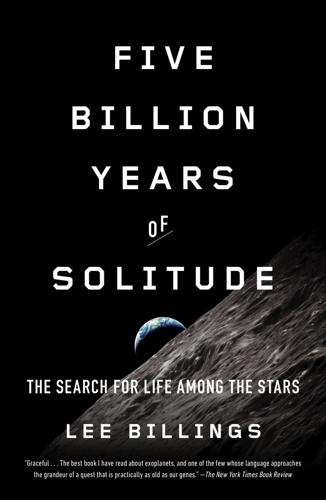
Five Billion Years of Solitude: The Search for Life Among the Stars
by
Lee Billings
Published 2 Oct 2013
The majority of the observable universe looks to be empty space, offering at best one-in-a-million odds that, set down randomly within it, you would find yourself in a galaxy. Given that the universe is gradually expanding, these odds can only get worse as time marches on. Mysterious halos, filaments, and clouds of “dark matter,” seemingly immune to all forces in the universe save for gravity, are what hold galaxies and galactic clusters together. A galaxy’s interior is mostly void, filled with, on average, one proton per cubic centimeter. If a galaxy’s stars were the size of sand grains, the average distance between them would be on the order of a few miles.
…
Mountain extolled the possible virtues: besides imaging alien Earths, the light-gathering power of an 8-meter or 16-meter mirror would revolutionize the rest of space-based astronomy, allowing astrophysicists to witness the formation of supermassive black holes and probe the cosmic distribution of dark matter. More generally, he said, large, cheap mirrors could also prove useful for beaming solar power to receiving stations on Earth, or for monitoring our own planet’s changing atmosphere at the resolution of individual clouds to constrain weather forecasts and climate-change projections. Some months after my discussion with Mountain, the NRO presented NASA with a smaller but still significant gift: two unused space telescopes and related hardware sitting in a restricted clean room in upstate New York.
…
acid runoff, 173, 175 Alienopoly, 260 Allegheny Plateau, 124–28 Allen, Paul, 12 Allen Telescope Array (ATA), 12–14, 41, 42 Alpha Centauri, 36, 52, 73, 232, 234 search for planet near, 94–98 simulations of planetary assembly in, 96, 97 American Astronomical Society, 194 Americas, 21–22 anaerobes, 129, 140, 142, 143, 169 Anaximander, 78 Anderson, Eric, 258 Andromeda Galaxy, 31, 191, 238 Anglada-Escudé, Guillem, 64–69 anthracite coal, 125, 131, 134, 136, 137, 144, 160, 184 Anthropocene era, 135–37, 145, 146 anti-gravity devices, 100 Apollo program, 1, 50, 151, 187, 202, 212, 239 Archean Eon, 139–40, 141, 169, 171, 184, 200 Arecibo Observatory, 39–42 Ares V, 203 Aristarchus, 79–81, 86 Aristotle, 78–79, 82 Arthur, Janice, 121–23 Arthur, Mike, 121–24, 127–30, 136–38 Asimov, Isaac, 152 asteroids, 3, 19, 76, 110, 140, 154, 258 Earth struck by, 30 astrobiology, 15, 153, 169, 231 astronomy, 4, 33, 48, 111, 190 Copernican Principle (principle of mediocrity) in, 83, 89, 91 golden age of, 192 modern, beginning of, 82 see also cosmology Astrophysical Journal Letters, 67 Atchley, Dana, 15 Atlantis, 185–87 ATLAST (Advanced Technology Large-Aperture Space Telescope), 198, 203, 230 atomic weapons, 23–24 atoms, 43, 79–81, 248 Automated Planet Finder (APF), 61, 70, 114 Bahcall, John, 249, 251 Bains, William, 261 Barnard’s Star, 52 Baum, Frank, 11 Beichman, Charles, 221–22 Berner, Robert, 178 Big Bang, 89–91 biosignatures, 167–72, 261–62 black holes, 88–89, 191, 206 black shales, 123–26, 135, 137–38, 141 in Marcellus formation, 126–30, 137, 138, 141, 144, 160 Bode, Johann, 109 Bode’s law, 109–10 BoingBoing.net, 74 Bonfils, Xavier, 66–69 Bradbury, Ray, 98–99 Bryson, Bill, 144 Bush, George W., 196, 198, 215, 221–23 Butler, Paul, 55, 58–70, 96, 114 Caldeira, Ken, 181 California, 105–7, 112–13 gold rush in, 105–6, 111, 112–13 Calvin, Melvin, 15, 19–20, 25 Cambrian Period, 138–39, 143–45, 182 Cameron, James, 258 Campbell, Joseph, 261 Canada, 244–48 Canadian Shield, 246 Capella, 239 carbon, 123, 131, 132, 134, 135, 140, 141, 175, 179, 182 carbonate-silicate cycle, 175–81, 184 carbon cycle, organic, 175 carbon dioxide (CO2), 124, 132, 134–37, 140, 141, 157, 159–62, 168, 170, 172, 173, 175–82, 184 Carboniferous Period, 131, 132 Carina Nebula, 238 Carnegie Institution, 251 Carpenter, Scott, 100 Carter, Jimmy, 240 Cash, Webster, 219–20 Cerro Tololo Inter-American Observatory, 96 Challenger, 3, 188–89 Chandra X-Ray Observatory, 192, 209 Chaotian Eon, 139 Charbonneau, David, 228–30, 232 charged-coupled devices (CCDs), 51–53 China, 21–22 chlorofluorocarbons, 134, 142 chlorophyll, 141, 143 Christmas Tree Cluster, 238 Clinton, Bill, 196, 215 clouds, 161–62, 164, 206 coal, 125, 131, 134, 136, 137, 144, 160, 184 Columbia, 189, 196 comets, 2, 3, 19, 76–77, 140 Halley’s, 3 Compton Gamma Ray Observatory, 192, 209 computers, 43–44 Constellation program, 196, 198, 203, 204, 215, 221, 223 convergent evolution, 21 Cook, James, 85–86 Copernican Principle (principle of mediocrity), 83, 89, 91 Copernicus, Nicolaus, 81–83, 86, 87, 89, 91, 200 Cornell University, 39, 42 coronagraphic TPF, 217–22, 224, 231, 249 coronagraphs, 217 cosmology, 77–82 Copernican Principle (principle of mediocrity) in, 83, 89, 91 inflationary theory in, 89–92 modern, 86–87, 91 see also astronomy Cosmos, 240 Costanza, Robert, 74–75 Crab Nebula, 30 Crabtree, William, 84 Crutzen, Paul, 134–35 Cuban missile crisis, 23–24 cyanobacteria, 140–44, 175, 183 Daily Mail, 74 dark energy, 88, 90 dark matter, 206 Darwin, Charles, 200 Davidson, George, 113 deep time, 145–46 Democritus, 79, 80, 92, 238 Demory, Brice, 259 De Rerum Natura (On the Nature of Things) (Lucretius), 80–81 De Revolutionibus Orbium Coelestium (On the Revolutions of Heavenly Orbs) (Copernicus), 82 Devonian Period, 128, 130–32 Diamandis, Peter, 258 dinosaurs, 30, 136, 144 Discovery, 189 DNA, 40, 141, 143, 170 dolphins, 16, 20–21 Drake, Frank, 9–17, 27–45, 101, 167–68, 240 Arecibo transmission of, 39–41 orchids of, 37–38 Drake equation, 16–25, 28–29, 38–39, 41, 42, 183 longevity of technological civilizations (L term) in, 22–25, 38–39, 41, 42 Draper Laboratory, 256 Dyson, Freeman, 104 Dyson spheres, 104, 105 Earth, 109 asteroid strike on, 30 atmosphere of, 3, 132, 134–35, 139, 140, 144, 157–60, 168–69, 174–77, 206, 238 “Blue Marble” images of, 212, 239–41 carbonate-silicate cycle on, 175–81, 184 climate of, 123–24, 128, 132–37, 142, 144, 156–57, 160–62, 173–75, 184 in early cosmology, 77–82 energy consumption on, 103–4 extinctions on, 43, 135, 184 faint young Sun problem and, 173–75 formation of, 2, 7, 20, 139, 173 geologic time periods of, 128–45 glaciation on, 132–34, 142, 174, 176, 178, 179, 183 human population of, 43, 100, 134, 136 ice caps of, 128, 132–33, 135, 136, 184 Laughlin’s idea for moving orbit of, 76–77 Laughlin’s valuation of, 73–76 oxygen on, 139–44, 159, 171, 180–82, 200, 238 Snowball Earth events, 142, 174, 179 Sun’s distance from, 83, 86 tectonic plates of, 30, 105, 111, 128, 140, 144, 176, 229 union of organisms with geophysical systems on (Gaia hypothesis), 175, 176, 178, 183 water on, 3, 30, 158–61, 174, 177–80, 182 Earth, life on, 31, 154 diversification and explosion of, 138–39, 143, 144, 182 emergence of, 4, 7, 19–20, 238 end of, 7–8, 31–32, 75–77, 159, 180–83 essential facts of, 29–30 humanity’s ascent, 144–46 intelligent, 20–21, 182–83 jump from single-celled to multicellular, 28 redox reactions and, 168 Earth-like planets, 29, 32–34, 71–72, 99, 227–28 Earth-size or Earth-mass planets, 6, 53–54, 56, 200, 227, 251 ecology and economics, 74 economic growth, 102, 103 Eddington, Arthur, 35 Edison, Thomas, 106 Einstein, Albert, 35, 87 Elachi, Charles, 211–12, 214, 221 electricity, 103, 136 Emerson, Ralph Waldo, 254 Endeavour, 190 endosymbiosis, 143 energy, 103–4, 136–38 from fossil fuels, 103, 124–27, 137, 154, 160, 184 Engelder, Terry, 126 Epicurus, 80 Epsilon Eridani, 10–11 Eshleman, Von, 35 ethanol, 137 eukaryotes, 143, 144 European Southern Observatory (ESO), 60, 64, 66 European Space Agency, 222 evolution, 183 convergent, 21 of universe, 88–89 exoplanetology, 13, 14, 34, 51, 193 exoplanets, 5, 27–28, 87, 222–23, 263 51 Pegasi b, 50, 53, 54, 58–59 Alpha Centauri Bb, 98–99 biosignatures and, 167–72, 261–62 Blue Marble images of, 212–15 distinguishing between various compositions of, 251 Earth-like, 29, 32–34, 71–72, 99, 227–28 Earth-size or Earth-mass, 6, 53–54, 56, 200, 227, 251 formation of, 109 GJ 667Cc, 65–69, 72 Gliese 581c, 163 Gliese 581d, 163 Gliese 581g (Zarmina’s World), 63–64, 68, 69, 72, 163 Gliese 876b, 60 habitability of, 154–83 HD 85512b, 163–64 Jupiter-like, 13, 28, 50, 56, 59, 60, 108, 109, 226, 228, 248–49 Laughlin’s valuation of, 71–77 migration theory and, 108 Neptune-like, 56, 108–9, 251 “Next 40 Years” conference on, 225–35, 263 observation of stars of, 33 snow line idea and, 110 super-Earths, 228–29, 251, 262 transits of, 53 TrES-4, 228 exoplanet searches, 5–7, 13–14, 32–33, 69–70 and false-alarm discoveries, 52–53 press releases on progress in, 163–65 SETI and, see SETI spectroscopy in, see spectroscopy, spectrometers see also telescopes Ferguson, Chris, 185–86 financial markets, 111–12 Fischer, Debra, 59, 61, 62, 69, 96 Ford, Eric, 249–50 Ford, Henry, 125 fossil fuels, 103, 124–27, 137, 154, 160, 184 fracking (hydraulic fracturing), 126–27 Gaia hypothesis, 175, 176, 178, 183 galactic planetary census, 54 galaxies, 87, 88, 99, 238 Andromeda, 31, 191, 238 Hubble Telescope and, 191 Local Group of, 88 Milky Way, see Milky Way Galileo, 241–42 Galileo Galilei, 81–83, 210 Galliher, Scot, 257 Garrels, Robert, 178 gas, natural, 125–27, 137, 184 Gemini telescopes, 199–200, 203 General Dynamics Astronautics time capsule, 100–103 geologic time periods, 128–45 geology, 110–11, 123 glaciers, 132–34, 142, 174, 176, 178, 179, 183 Glenn, John, 100 Goldin, Dan, 194, 211, 215, 242 governments, Urey on, 102 gravitational lenses, 35–37 Great Observatories, 192, 197, 209 Greece, ancient, 77, 92, 238 Green Bank conference, 15–25, 27–28, 101, 167–68, 240 greenhouse gases, 124, 134, 137, 157, 160, 174, 175 carbon dioxide, see carbon dioxide methane, 140, 142, 168–71, 174, 200 Grunsfeld, John, 197–99, 225–26, 235 Guedes, Javiera, 96 Gund Institute for Ecological Economics, 74–75 “Habitable Zones around Main Sequence Stars” (Kasting), 155–56, 159 Hadean Eon, 139–40, 156 Halley, Edmond, 84 Halley’s comet, 3 Hart, Michael, 174, 178 Hays, Paul, 176–79 heliocentrism, 79–82 Hiroshima, 23 Holmes, Dyer Brainerd, 100–101 Holocene Epoch, 133–35, 145 Horrocks, Jeremiah, 84 Howard, Andrew, 62 How to Find a Habitable Planet (Kasting), 167 Hu, Renyu, 259 Huang, Su-Shu, 15, 19 Hubble, Edwin, 86–87 Hubble Space Telescope, 189–93, 195, 197–99, 205–7, 209, 218–19, 226 human genome project, 234 hydraulic fracturing (fracking), 126–27 hydrogen, 159, 170–72 Icarus, 155 ice ages, 132, 133, 142–43 Industrial Revolution, 22, 134 inflationary theory, 89–92 Ingersoll, Andrew, 159 intelligence, 20–21, 23, 32, 182–83 interferometry, 213–14, 216, 231 International Space Station (ISS), 187, 189, 197, 202, 207–8, 210 interstellar travel, 44–45, 100–101 iron, 141 James Webb Space Telescope (JWST), 193–99, 202–4, 209, 215, 216, 218, 220, 225, 262 Jensen-Clem, Becky, 259 Jet Propulsion Laboratory (JPL), 211–12, 216, 219, 221–25, 231 Johnson, Lyndon B., 101 Journal of Geophysical Research, 178 Jupiter, 76, 109, 191, 239 Galileo’s study of, 81 Kepler’s laws and, 83 moons of, 28, 110 Jupiter-like planets, 13, 28, 50, 56, 59, 60, 108, 109, 226, 228, 248–49 Kasdin, Jeremy, 219–20 Kasting, Jerry, 150–52 Kasting, Jim, 150–67, 169–84 children of, 153 Kasting, Sandy, 150 Kasting, Sharon, 153 Keck Observatory, 59, 60, 62, 66, 118 Kennedy, John F., 224 Kennedy Space Center, 185 Kepler, Johannes, 82, 83 planetary motion laws of, 82–84 Kepler field stars, 41 Kepler Space Telescope, 13–14, 53–54, 56, 62, 71–73, 98, 108–9, 166, 201, 225, 229–30, 263 Kirschvink, Joseph, 142 Knapp, Mary, 259 Korolev, Sergei, 186 Kuchner, Marc, 217–18 Kuiper Belt, 76 Large Magellanic Cloud, 238 Lasaga, Antonio, 178 Late Heavy Bombardment, 3, 140 Laughlin, Greg, 5–6, 48–50, 53–57, 69–70, 93–100, 107–12, 114–15, 117–20 Alpha Centauri planet search and, 94–98 idea to move Earth, 76–77 magnetic toy of, 93–94 SETI as viewed by, 99 valuation equation of, 71–77 laws of nature, 155–56 Lederberg, Joshua, 15, 16, 167–68 Le Gentil, Guillaume, 85, 117 Leinbach, Mike, 185–86 Lick, James, 112–14 Lick Observatory, 58, 61, 62, 70, 113–19 life, 32 on Earth, see Earth, life on intelligent, 23, 32 single-celled, 20 technological, see technological civilizations light: photons of, 72, 89, 115–16, 156, 191, 193–94, 201, 202, 213, 216, 237–38 polarization of, 115–16 waves of, 213–14, 216 Lilly, John, 15–16, 20–21 Local Group, 88 Lovelock, James, 168, 170, 174–76, 178, 181–83 Lucretius, 80–81 Lyot, Bernard, 217 Madwoman of Chaillot, The, 36 Manhattan Project, 23 Marcellus Center for Outreach and Research, 127, 149 Marcellus formation, 126–30, 137, 138, 141, 144, 160 Marconi, Guglielmo, 48 Marconi Conference Center, 48–50, 53–57 Marcy, Geoff, 57–63, 69, 70, 114, 194, 230–32, 235 Margulis, Lynn, 175 Mars, 19, 50, 87, 100, 107, 109, 155, 167, 179, 191, 192, 239 Kepler’s study of, 82, 83 missions to, 187, 188, 196, 207, 221 water on, 28, 179 Marshall, James, 105–6, 112 Martian Chronicles, The (Bradbury), 98–99 Massachusetts Institute of Technology (MIT), 251–52, 259 ExoplanetSat project, 256–57 “Next 40 Years of Exoplanets” conference at, 225–35, 263 Mayor, Michel, 58 McPhee, John, 145 mEarth Project, 228–29 mediocrity, principle of (Copernican Principle), 83, 89, 91 Mercury, 82, 109, 239 meteorites, 20 methane, 140, 142, 168–71, 174, 200 methanogens, 140, 142, 169 microbes, 28 Miletus, 77 Milky Way, 16–17, 25, 31, 39, 41, 79, 86–87, 191, 237, 238 Sun’s orbit in, 95 Miller, George P., 101 Miller, Stanley, 19 Miller Institute for Basic Research in Science, 48, 74 mitochondria, 143 Moon, 3, 76, 100, 229, 242 in early cosmology, 78, 83 formation of, 30, 139 Moon, missions to, 188, 196, 221, 224 Apollo, 1, 50, 151, 187, 202, 212, 239 Morrison, Philip, 15, 18–19, 21, 23–24 Mosely, T.

Aurora
by
Kim Stanley Robinson
Published 6 Jul 2015
This is noticeable; there are sensors that register these occasional atomic hits, also the pass-throughs. It is also true that there is a continuous flood of dark matter and neutrinos always flying through the ship, as they do through everything in the universe, but these interact very weakly indeed; once a day or so, a flash of Cherenkov radiation sparks in the water tanks, marking a neutrino hitting a muon. Once in a blue muon. Same with the dark matter, which visible matter moves through as if through a ghost ether, a ghost universe; once or twice a weakly interactive massive particle has chipped away from a collision and registered on the detectors.
…
It seems a gamma ray shot through the ship and made an unlucky hit, collapsing the wave function in a quantum part of the computer that runs the ship. It’s such bad luck that Devi wonders darkly if it might have been sabotage. Badim doesn’t believe this, but he too is troubled. Particles shoot through the ship all the time. Thousands of neutrinos are passing through them right this second, and dark matter and God knows what, all passing right through them. Interstellar space is not at all empty. Mostly empty, but not. Of course they too are mostly empty, Devi points out, still grumpy. No matter how solid things seem, they are mostly empty. So things can pass through each other without any problems.
…
Problem of deceleration really quite severe, given our tremendous speed. Analogy describing the problem, from out of the classic literature on the subject: it is as if one is trying to stop a bullet with tissue paper. Quite an eye-opener of an analogy. Exotic physics, for example creating drag against dark matter, or putting dark energy to use, or quantum entangling the ship with slower versions of the ship, or with large gravity wells in parallel universes, etc.: these are all impractical at best. Wishes. Fantasies. Pie in the sky. Which is a mysterious metaphor. Food from nowhere? Land of Cockaigne? People used to be hungry often, as they were in the last years of wakefulness in the ship.
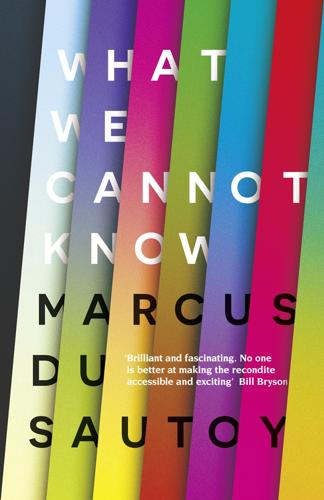
What We Cannot Know: Explorations at the Edge of Knowledge
by
Marcus Du Sautoy
Published 18 May 2016
A scientist is more interested in the things he or she can’t understand than in telling all the stories we already know how to narrate. Science is a living, breathing subject because of all those questions we can’t answer. For example, the stuff that makes up the physical universe we interact with seems to account for only 4.9% of the total matter content of our universe. So what is the other 95.1% of so-called dark matter and dark energy made up of? If our universe’s expansion is accelerating, where is all the energy coming from that is fuelling that acceleration? Is our universe infinite? Are there infinitely many other infinite universes parallel to our own? If there are, do they have different laws of physics?
…
For example, there might be something large beyond our cosmic horizon that is pulling on the galaxies we can see, causing an unusual drift in certain regions of the night sky. Although we might not be able to see such things, we can still experience their effect on the things we can see. What we can know is not limited to what we can see. It’s how we know about dark matter. The gravitational behaviour of the things we can see makes sense only if there is more stuff out there. It is how we discovered Neptune. Although we eventually saw Neptune with our eyes, it was mathematically predicted by the effect it was having on the planets around it. If there is something beyond our cosmic horizon that we can’t see, it can still pull the gravitational strings inside our bubble.
…
306–9 continuum hypothesis 400–1, 403, 404, 405, 410 Copernicus, Nicolaus 178, 193, 210, 238 corpus callosotomy 309–11 cosmic horizon, visible 214, 221, 223, 226–7, 229, 230, 243 cosmic microwave background 221, 224–5, 226, 227–8, 229, 293–4 cosmic ray interactions 103, 105, 125, 142–3, 258 cosmological argument 406 cosmological constant 215, 224, 230 cosmology: ancient Greek 81; dark energy and 223–4; homogeneity and 234–5, 305; religion and 234–40 see also under individual area of cosmology Couch Adams, John 196–7 Coulson, Charles 15 Crick, Francis 321, 347 Curtis, Heber 204 Cusanus, Nicolaus 191–2 Cygnus X–1 276–7 Dalai Lama 236, 354 Dalton, John 89 Darboux, Gaston 39 dark matter/dark energy 7, 222, 223–4, 227, 234, 365 Darwin, Charles 56, 230 Dawkins, Richard 13, 236, 237; The God Delusion 13, 15 de la Rue, Warren 10 death: consciousness and 8, 318, 354–5; dementia and 318; life after 8, 354–5; science and battle against 2 Delos, oracle of the island of 373–4 Delta baryon 108, 109, 110 dementia 318 Dennett, Daniel 358 Descartes, Rene 198, 304, 307, 330–1, 350, 359, 372, 406 Dhammapada, The 333 dice: ancient world and 21–2, 31, 32; atomic structure of 72–3, 77, 78–80, 81, 82–4, 88, 91–2, 94, 103, 111–13, 114, 121, 125, 127, 175, 187; Bell’s theorem and 171; black holes and 285, 289; calculus and 30–2, 33, 34, 88; Cantor set and 65–6; Cardano and 23–4; chaos theory and 41, 43, 44, 48, 54–5, 66–8, 157, 408, 419; consciousness and 304, 308–9, 321, 325, 338, 343; evolution and 56–7, 58–9; God and 22; infinity and 187, 188, 220, 242–3; microscope and 78–9, 80; Newton’s laws of motion and 32–3, 35–6, 67, 78, 88, 154; Pascal/Fermat and 24–8; predicting fall of, history of 21–8; quantum entanglement and 172–3; shape of universe and 188, 207, 208–9; symmetry and 111–17, 120, 121, 125; uncertainty principle and 160, 163–4, 167; uranium decay and 132–3, 158; what we cannot know and 407, 408, 414, 417, 419, 420 Diophantus 371; Arithmetica 374–5 Dirac, Paul 104, 174 DNA 1, 4, 56–7, 59, 61, 321 Doppler effect 214–15, 268 double-slit light experiment 134–6, 143, 144–7, 148, 149, 150, 151, 152–3, 154, 157, 161–2, 163, 165, 166, 169, 170, 171, 173 Douspis, Marian 226 down quark 117, 118, 119, 120, 121 dualism 330–1, 332 echolocation 57 Eddington, Arthur 271–2, 277 EEG 305, 314–16, 323, 340 Egypt, ancient 251, 332, 366, 368 Ehrsson, Henrik 329, 330, 331 eightfold way 113, 118, 119 Einstein, Albert 131, 275, 276, 277, 299; black holes and 277; Brownian motion and 92, 93–5, 123; cosmological constant and 215, 224; E=mc2 and 108, 167, 168; equivalence, principle of 267–9; expanding universe and 215–17; model of light 139, 141, 142, 143, 147; photoelectric effect and 141, 142, 143, 147; religion and 296–7; quantum entanglement and 172–3; quantum physics and 132, 170, 171, 172–3; space-time, reaction to concept of 262, 264; theory of general relativity 5, 6, 7–8, 115, 143, 168, 215, 219, 220, 248, 265, 267–72, 273, 275–6, 277, 278, 281–2, 285, 288, 293, 299; theory of special relativity 11, 105, 141, 143, 248, 252, 253–64, 296–7, 299, 359 élan vital 358, 408 electricity, Thomson’s experiments to understand 95–6, 140 electromagnetic force 107, 108, 274 electromagnetism 34, 104, 107, 108, 136, 138–43, 417 electron 48, 407; chaos theory and 70, 402; discovery of 95, 96, 97, 98, 99, 100, 101; electromagnetic force and 107; hydrogen atom and 274; mass of 126, 127, 230; muon and 104, 105; particle model of light and 136–7, 140–3; periodic table and 103, 106, 116, 125; photoelectric effect and 140–1; quarks and 119–20, 125, 126, 127; string theory and 127; uncertainty principle and 133, 167–70; Young’s double-slit experiment and 143–56, 160, 161–3, 171, 173 electron microscopes 78–9 Elkies, Noam 375 emergent phenomena/emergence 331–2, 356 entropy of a system 285–7, 288, 290, 293 environment, man’s effect upon 2, 6, 53 epileptic seizures 309, 323–4, 326 epistemology 70, 170, 177–8, 179, 226, 411–12, 418 equivalence, principle of 267–9 Erdős, Paul 377–8 Eta particle 115 Euclid 271, 378–9, 380, 401; Elements 367–8, 390 Euler, Leonhard 34, 415 European space agency 187 event horizon 276, 277, 278, 282, 283, 285, 287, 288, 289, 290, 405 Everett, Hugh 155 evolution 2, 8, 56–66; Cambrian explosion of life 58; consciousness and 319–20, 346; Dalai Lama and 354; discovery of new knowledge and 2, 233; fractal tree of life and 60–2; God and 230, 411; mismanaged ecosystems and 55; origin of life and 56–66; pattern spotting and 20; probability/chaos theory and 54–5, 56–66; random mutation and 8, 56–62; solar system/universe 32–41, 43, 55, 133, 155, 177, 206, 220, 223, 234, 299, 377, 411 expanding universe 3, 5, 7, 214–29, 248, 291, 292, 293, 294, 335, 365; accelerating rate of expansion 3, 7, 221, 222–5, 291, 365, 408; Big Bang and 219–21; discovery of 214–18, 365; infinite universe and 225–9; multiverse and 227–35 extraterrestrials 8, 143, 239–40 Fermat, Pierre de 24, 25, 26–7, 28, 36; Fermat’s Last Theorem 4, 8, 36, 176–7, 374–5, 410, 420 Fermi, Enrico 106 Fermilab 122 Ferreira, Pedro 226 Feynman, Richard 3, 121, 131, 132, 155, 159, 174, 276, 305; diagrams 121; Lectures on Physics 158 Fitch, Frederic 413 Flanagan, Owen 349–50 fluid dynamics 34, 44–5 fMRI scanner 4, 305, 315–16, 323, 333–9, 350, 351, 354, 356–7, 416 Fourier, Joseph 34 fractals 60–2, 65, 66, 67, 68, 168, 364; fractal tree of life 60–2 fractions 49, 82–6, 101, 117, 191, 369, 370, 391, 394–5, 396 Franklin, Melissa 122–5, 240 Franklin, Professor W.

The Inevitable: Understanding the 12 Technological Forces That Will Shape Our Future
by
Kevin Kelly
Published 6 Jun 2016
Our most important mechanical inventions are not machines that do what humans do better, but machines that can do things we can’t do at all. Our most important thinking machines will not be machines that can think what we think faster, better, but those that think what we can’t think. To really solve the current grand mysteries of quantum gravity, dark energy, and dark matter, we’ll probably need other intelligences beside human. And the extremely complex harder questions that will come after those hard questions may require even more distant and complex intelligences. Indeed, we may need to invent intermediate intelligences that can help us design yet more rarefied intelligences that we could not design alone.
…
Perceiving movies takes a lot more processing power, in part because there is the added dimension of time (do objects persist as the camera moves?). In a few years we’ll be able to routinely search video via AI. As we do, we’ll begin to explore the Gutenberg possibilities within moving images. “I consider the pixel data in images and video to be the dark matter of the Internet,” says Fei-Fei Li, director of the Stanford Artificial Intelligence Laboratory. “We are now starting to illuminate it.” As moving images become easier to create, easier to store, easier to annotate, and easier to combine into complex narratives, they also become easier to be remanipulated by the audience.
…
Previous discoveries helped us to recently realize that 96 percent of all matter and energy in our universe is outside of our vision. The universe is not made of the atoms and heat we discovered last century; instead it is primarily composed of two unknown entities we label “dark”: dark energy and dark matter. “Dark” is a euphemism for ignorance. We really have no idea what the bulk of the universe is made of. We find a similar proportion of ignorance if we probe deeply into the cell, or the brain. We don’t know nothin’ relative to what could be known. Our inventions allow us to spy into our ignorance.
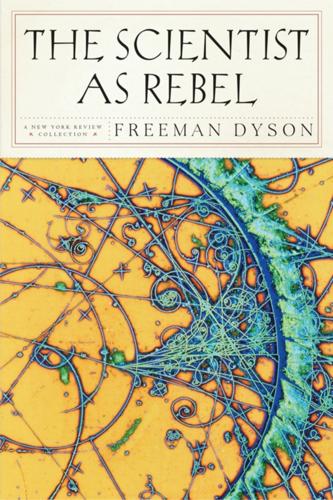
The Scientist as Rebel
by
Freeman Dyson
Published 1 Jan 2006
She found that the visible matter in galaxies is not heavy enough to explain the speed of their internal motions. She deduced from her observations that galaxies are pervaded by dark matter, invisible to our telescopes. Nobody knows what dark matter is. It is another deep mystery remaining to be explored. We know only that it is there, and that it weighs more than all the stuff that we can see. Besides discovering and exploring dark matter, Rubin raised four children and crusaded publicly for the advancement of women in science. I was recently chairman of a committee that organized a scientific conference with a list of distinguished scientists as members.
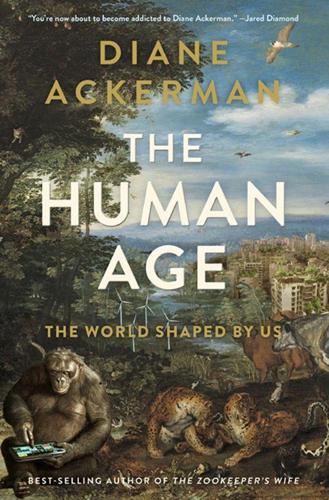
The Human Age: The World Shaped by Us
by
Diane Ackerman
Published 9 Sep 2014
We automatically don glasses and become an animal with keener eyesight. That may save the child from infection, but it also revises what a human being is. How will that continue changing in our lifetime? Already, we’re masters of the invisible. Just as we accept that the universe is mainly invisible dark matter and dark energy, we accept the reality of protozoans and viruses even though we can’t see them without a microscope, or perhaps as stationary oddities in the pages of a textbook—which few people are tempted to do. We believe in television and radio waves, gnomelike quarks, GPS, microwaves, the World Wide Web, gosling photons, a mantilla of nerve endings in the brain, the voiceless hissing of background fizz from the Big Bang, planets orbiting many stars in the night sky—some hospitable to life.
…
They’re also real workhorses, fluting the air until it’s breathable, promoting photosynthesis on the land and in the oceans, decomposing dead organisms and recycling their nutrients. In industry, we breed them to ferment dairy products and to process paper, drugs, fuel, vaccines, cloth, tea, natural gas, precious metals; they help mop up our oil spills. We yoke them like oxen and set them to work. But just as most of the mass in the universe (94 percent) is “dark matter,” this largest biomass on our planet escapes the naked eye, yet is the invisible Riviera of the visible world. How remarkable it is that we’re not only renaming our age, we’re on the threshold of redefining ourselves as a completely different kind of animal than we ever imagined. For years, we thought DNA told the whole story.
…
G., 231 bamboo, 132 Bangladesh, 51–53, 271 basil, 89, 90 Bat Bomb Project, 145 bats, 115 Bavaria, Germany, 107 Baylis, Françoise, 266 beans, 190 beavers, 135 bee balm, 125 beebots, 181 bees, 147, 166 beetles, 164, 180–81 Bell Museum of Natural History, 115 beluga whales, 135, 144 Benenson, Peter, 98 Benyus, Janine, 92 Berridge, Matt, 5–7, 25–28, 202 Bespoke Innovations, 236–37 Bhutan, 72 big agriculture, 154 Big Sur, 115 biofuels, 64 bioluminescent foliage, 83 biomimicry, 91–92 bionic fingers, 13 bionic suits, 13 bioprinting, 238, 245–46 bipolar disorder, 285 birds, 216 extinction of, 139 bird’s-foot trefoil, 166 black bears, 126 “Black Marble” photograph, 17 Blade Runner (film), 228, 253 Blanc, Patrick, 79–82, 84–85, 207 bleeding hearts, 125 Blizzard Nemo, 58 bloomers, 191 blue-jay feathers, 91 “Blue Marble” photograph, 17–18, 305 bobcats, 129 Boeing, 236 Bonassar, Lawrence, 243–52, 253 bonobos, 201–3 books, 171 Borges, Jorge Luis, 236 Borneo, 107, 132, 313 Boulogne, France, 83 Boulter, Nicky, 298–99 Bracken Cave, 145 brain, 150, 281 rewiring of, 191 scans of, 176–78 Bramel, Paula, 155 Brand, Stewart, 150 Branson, Richard, 54 Brazil, 46, 88, 123 breast milk, 301 breeding, 149–50 Breezy Point, N.Y., 45 Brittany, France, 62–63 Bronen, Robin, 48 Brooklyn Battery Tunnel, 45 Brooklyn Navy Yard, 82 Brown, Charles, 115–16 brown bears, 132 brown tree snake, 139 Budi (orangutan), 4–7, 25–26, 27, 28, 44, 122–23, 202, 269 iPad of, 4–7, 25–26, 27, 28, 71 building, heating of, 96–98 buildings, 90–94 bullfrogs, 132 burdock, 132 Burtynsky, Edward, 23–25 Bush, George W., 315 butterflies, 133, 166 Bygren, Lars Olov, 277–80 Byström, Joakim, 99 cadmium, 271 Café Trussardi, 82 California, 77, 117, 132 Callahan, Gerald N., 263 “Cambridge Declaration on Consciousness in Non-Human Animals, The,” 216 camels, 140 in war, 144, 145–46 Canada, 40, 43, 88, 124, 132, 266 Canada geese, 13, 135, 153, 194 Canadian rose, 39 Canadian War Museum, 82 cancer, 271, 316 cane beetles, 139 cane toads, 139 canning, 318 canola rapeseed, 153 Cape Town, South Africa, 78 carbon blade legs, 13 Carbon Capture Storage, 54 carbon dioxide, carbon dioxide levels, 34, 53 and acidification of oceans, 66 kelp’s ingestion of, 64 methods for pulling from air, 54 recent rise in, 36 Swedish lowering of, 99 urban gardens and, 74, 80 Carpenter, Rollo, 227 carpets, 87 cars, 87, 171, 191 cartilage, 244, 251 Case, Amber, 262 cats, 140, 146, 298 parasites of, 296–97 cattle, 194–95 Center for Nano Science and Technology, 183 Centers for Disease Control and Prevention, 298 Central Park, 78 Central Station, 96, 101 cerebral palsy, 253 Cerf, Vent, 202–4 Chamonix, France, 314 chatbots, 226–31 cheetahs, 132 chemputer, 237 Cher Ami (pigeon), 144–45 cherry tomatoes, 90 Chicago, Ill., 77, 78, 117 Chicago Botanic Gardens, 82 chicken coops, 88 childhood mortality, 13 Chile, 46, 99, 175 chimeras, 251, 262, 264–68 chimpanzees, 148, 216 China, 46, 88, 102, 124, 235 solar power in, 107 urban population of, 72 Chincoteague, 137–38 chipmunks, 126 chives, 90 chlorophyll, 53 chloroplasts, 291 Church, George, 151–52 cicadas, 41, 173–75 cilantro, 90 cingulate, 178 cities, 11, 13, 71–72 enviromental impact of, 72–73 growth of, 18–19, 72 limited species in, 113–14 nature vs., 112–17 population of, 72 as seen from space, 16–17, 18, 19 sky parks in, 77–78 City Hall, Chicago, 83 city parks, 83 clams, 57 Clarke, Ann, 157–67 Clarke, Bryan, 156–67 Cleverbot, 227–28 cliff swallows, 115–16 close work, 192 Clostridium difficile, 301–2 clouds, 12 coal, 21, 106 Coan, James, 178 cocaine, 298 cochlear implants, 253 cockatoos, 202 cod, 59–60 Cold War, 146 Collins, Francis, 289 colon disease, 302 Colorado, 40 compassion, 176 computers, 13, 87, 175, 187, 194, 197, 203, 211, 220, 222, 224, 226, 230, 256, 261, 270 condors, 132 consciousness, 200, 216, 217, 219, 228–29 cooking, 190 Copenhagen, 78 copper, 21 coral bells, 80–81 cordite, 153 corn, 71, 153 corncrakes, 133, 137 Cornell University, 209–25 corpus callosum, 177 cosmos, 125 cottontails, 129 cougars, 117 Council House 2 building, 94 courtly love, 190 cows, 71 coyotes, 117, 118 crabs, 138 “cradle to cradle,” 87 cranes, 124 Creative Machines Lab, 218, 223–24 creativity, 196 Crick, Francis, 274 crickets, 173–74 Cronin, Lee, 237 crops, 71 Crutzen, Paul, 9, 313 cucumbers, 89 cuneiform, 235 Curitiba, Brazil, 107 cyborg anthropology, 262 cyborg dragonflies, 146–47 cyborgs, 146–47, 251, 260, 262–63 daffodils, 125 Dakar, Senegal, 314 dandelions, 132 Dantuluri, Phani, 261 dark energy, 172 dark matter, 172 Darwin, Charles, 156, 268, 276 Dayak people, 107 day lilies, 125 deception, 219 Decker Yeadon, 92 deer, 133 Defense Advanced Research Projects Agency (DARPA), 146–47, 209, 225, 236, 256, 258–59 dengue fever, 302 Denmark, 101 depression, 196 Desertec, 106 diabetes, 301 diamondbacks, 118–19 dianthus, 125 Dietikon, Switzerland, 82 digoxin, 302 dinosaurs, 31, 154 Djairam, Dhiradj, 104, 105 DNA, 160, 263, 274–75, 278–79, 281, 282, 287 of extinct species, 151–52, 153–54, 160–63, 166–67 dodos, 163 dog roses, 132 dogs, 140, 144, 145–46, 147, 148, 149 dolphins, 147, 202, 204, 216 domestic animals, 11, 71, 140 Dominoni, Davide, 114 dopamine, 298 Dourada, Fazenda, 123 droughts, 41, 46 Duckworth, Tammy, 259, 260 dung beetles, 164 Dust Bowl, 41 Dutch Hunger Winter, 283 ears, 245–46 Earth: as seen from air, 20–21 as seen from space, 16–18, 19, 305 Earthmasters: The Dawn of the Age of Climate Engineering (Hamilton), 314 Eastgate Centre, 92, 93–94 echolocation, 147 École Polytechnique de Montréal, 181 eczema, 301 Edison, Thomas, 191, 306 Edmonton Airport, 83 education, 286 Edwards, Andres, 88 Eggerthella lenta, 302 Eggleson, Kathleen, 183–84 eggs, 160–61, 279 Eisenberger, Naomi, 177 electricity, 76, 78, 91, 97, 99, 100–103, 104, 184–87, 191, 213 electronic campfires, 193 elements, 34–35 elephants, 202, 217 underpass for, 124 in war, 144, 145–46 Ellis, Erle, 126 Eloxochitl, 112 emotions, 214, 222–23 empathy, 190, 219, 228 Energy Department, U.S., 64 England, 132 English ivy, 132 EnsnAired, 98 Environmental Protection Agency, U.S., 86–87 epigenetics, 279–86 Estonia, 77 eucalyptus, 132 Eureqa machine, 219–20, 221 European badgers, 124 Eve (robot), 221 Everglades, 129, 130, 133, 315 evolution, 208, 211, 219, 224, 251, 276–77, 279 microbes’ effects on, 292–93 extinction, 12 of birds, 139 of Miami blue butterfly, 131 orangutans and, 27–28 of Partula, 156–59 of plants, 315 and resurrection of species, 151–52, 153–54, 161–63, 208 of trilobites, 29, 30 extinctions, great, 60, 154, 305 eyeglasses, 171 factories, 71 false indigoes, 125 famine, 276, 277, 285, 286 Fantastic Voyage, 181 farming fish, 60 Faroe Islands, 78 farsightedness, 192 fecal transplants, 302 Ferrer, Miguel, 136 ferrets, 132 fertilizers, 36, 64 fiber optics, 97 field mice, 134 fighting, 190 finches, 156 Finger Lakes, 31, 131 fire ants, 132 fireflies, 181 fishermen, 56–60 fleecy electricity, 35 Flegr, Jaroslav, 297 floods, 41 Florida, 117, 131 Florida rosy wolfsnail, 157 flounder, 65 food, 7 Forbes, 235 Forbidden City, 235 Ford Motor Company, 87–88 forests, 54 fossil fuels, 10, 34, 51, 307 fossils, 9, 29–30, 31, 32, 33–34, 35, 36, 43, 57 Fountainhead, The (Rand), 59 foxes, 129, 133, 134 foxgloves, 125 France, 72, 124, 296, 298 Frankenstein (Shelley), 212–13 Franklin, Rosalind, 274 Fraser, Bill, 135 frogs, 80, 125, 131, 132 Frozen Ark, 155, 160, 163–64 frozen food, 317 fruit flies, 293–95 fungi, 289-90, 300 G8 Summit, 315 Gabriel, Peter, 201–3 Galileo Galilei, 220 Galveston, Tex., 50 Gambia, 131 gardening, hydroponic, 83 gardens, 38–39 urban, 74 vertical, 79–85 Gardens by the Bay, 78 gas, 106 Gaudi, Antoni, 236 geckos, 180 genetic mutations, 277 Genghis Khan, 272–73, 274 geoengineering, 53–54 geographic change, 11 Geological Society of London, 9 Geological Survey, U.S., 299 geothermal warmth, 95 Germany, 72, 78, 83, 101, 124, 132, 298 solar panels in, 106–7 Gershenfeld, Neil, 202–3 gestures, 26–27 giraffes, 276 global consciousness, 18 global warming, 11, 38–42, 154, 307–8 agriculture and, 56 in Bangladesh, 51–53 and development of seas, 64–65 evidence of, 108 extreme weather and, 36–43, 314 fishermen and, 56–57 gardens affected by, 38–39 habitats rearranged by, 133–40 human rights and, 48 glowworms, 144 glucocorticoids, 283 golden eagles, 132 Golden Lion Tamarin Conservation Program, 123 golden toads, 162 Golding, William, 162 Google, 192, 210 Google Glass, 260–61 gophers, 115 gorgonian, 38 grains, 71 Grand Canyon, 126 granite, 58–59 GraphExeter, 184–85, 317 grasshoppers, 173–74 Grassy Key, 131 great apes, 202 great auks, 151 Great Depression, 108 Greece, 124 Green Apple concept car, 103 Green Belt Corridor, 124 greenhouses, 90 Greenland, 42 green mussels, 131 Green over Grey, 83 growing season, 42 Guam, 139, 157 Guam rail, 139 Guatemala, 88 Gulag Archipelago (Solzhenitsyn), 218 Gurdon, John, 150, 160 Gut Erlasee Solar Park, 106–7 Guthrie, Barton, 261 habitat loss, 154 Haiyan, Typhoon, 46 Hamilton, Clive, 314 Hansen, James, 314 Hansmeyer, Michael, 236 Harvard University, 235 Hastings, Battle of, 190 heart, 150, 239, 248, 249, 250–51, 281 heat, 41 heaters, 87 heat recycling, 95–108 Helm, Barbara, 114 Henri, Pascal, 84 herbs, 89 Hernandez, Isaias, 264–65 herons, 193–94 Heuchera plants, 80–81 High Line, 77 Hitler, Adolf, 273 hockey, 40 Holocene, 9 Homer, 262 Honda, 236 Hong Sun Hye, 102 horse chestnut trees, 153 Horse Island, 58 horses, 137–38, 140, 145–46 hostas, 125 Hudson River, 54–55 hulls, 91 human genome, 13 Human Genome Project, 270, 274, 282, 285, 289, 300 Human Microbiome Project, 289 human rights, global warming and, 48 humans: as eusocial, 288 geographic expansion of, 10 geography changed by, 11 history of, 71 orangutan genes shared by, 3 population growth of, 10 technological changes to bodies of, 13 tools used by, 7, 9 humans, environmental effects of: climate change, see global warming and possibility of nuclear winter, 8–9 hummingbirds, 126 hunter-gatherers, 71 Huntington’s disease, 271 Hurricane Irene, 57 Hurricane Katrina, 46 hurricanes, 31, 41, 43, 55 Hurricane Sandy, see Sandy, Hurricane hybrid cars, 100 Hyde Park, 142 hydroelectronic power, 100, 107 hydroponic gardening, 83, 89, 90 Icarus, 224 icebergs, 195–96, 197 Iceland, 77 ice packs, 41–42 iCub, 218–19 iGlasses, 261 igloos, 86 iguanas, 131 Ike Dike, 50 Iliad (Homer), 262 India, 88, 107, 132, 175 Indian mongoose, 132 Indonesia, 132, 313 induced pluripotent stem cells (IPS), 150–51, 160–63 industrial farming, 60 Industrial Revolution, 34, 106, 185–86, 232, 235, 267 Inheritors, The (Golding), 162 insects, 166 insulin pumps, 253 intelligence of plants, 205–7 International Union for Conservation of Nature, 313 Internet, 199–200, 235 Inuit, 86 invasive species, 132, 154 Iran, 147 Iraq War, 258 Ireland, 132 Irene, Hurricane, 57 irises, 125 iron fertilization, 53 Island of Dr.
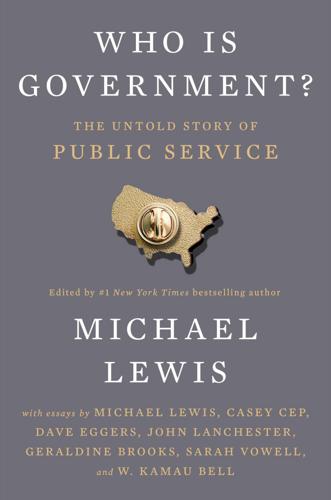
Who Is Government?: The Untold Story of Public Service
by
Michael Lewis
Published 18 Mar 2025
They’ve built spacecraft that have taken samples from passing comets, and Voyager 1 in 2012 became the first human creation to leave our solar system entirely. It’s currently 15 billion miles from Earth—and is still sending back data. * * * — In the cafeteria, I was surrounded by scientists from France, from Ukraine, from China, even from Queens, and while they ate burritos and Cobb salads, they talked about dark matter and sub-Neptunes and something called the “demographics of planets.” At the table were Jason Rhodes, who studies dark energy, and Marie Ygouf, who specializes in high-contrast imaging from telescopes and satellites. Next to me was Feng Zhao, who had a meeting after lunch related to the deformable mirrors—they are not a way to see yourself more favorably—that will be aboard the Roman.
…
Bailey was insistent that I talk to the head of the coronagraph team, Bertrand Mennesson, and was so embarrassed to be interviewed at all, and the JPL media team was so insistent that I talk to this person and that person, that it made writing this essay very difficult and probably very unfair. Bailey is one of about 75 people on the core coronagraph team, and the coronagraph is only one part of the Roman telescope, which is also looking for dark matter and the beginnings of the universe—a worthy topic but not for us, not today. If anything, the humility on display at JPL might be even more pronounced at NASA. I watched the last launch of the space shuttle, back in 2011, and was part of a strange semi-exclusive-access tour group made up of artists, writers and musicians.
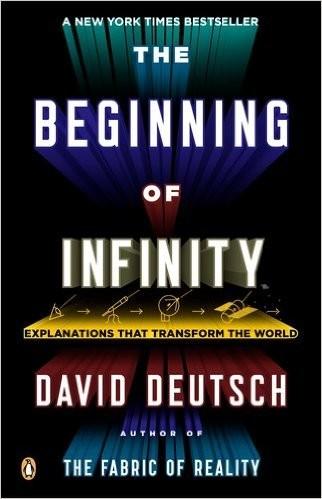
The Beginning of Infinity: Explanations That Transform the World
by
David Deutsch
Published 30 Jun 2011
But, more profoundly, I expect that Edison was misinterpreting his own experience. A trial that fails is still fun. A repetitive experiment is not repetitive if one is thinking about the ideas that it is testing and the reality that it is investigating. That galaxy project was intended to discover whether ‘dark matter’ (see the next chapter) really exists – and it succeeded. If Edison, or those graduate students, or any scientific researcher engaged upon the ‘perspiration’ phase of discovery, had really been doing it mindlessly, they would be missing most of the fun – which is also what largely powers that ‘one per cent inspiration’.
…
That is to say, the truth is that People are significant in the cosmic scheme of things; and The Earth’s biosphere is incapable of supporting human life. Consider Hawking’s remark again. It is true that we are on a (somewhat) typical planet of a typical star in a typical galaxy. But we are far from typical of the matter in the universe. For one thing, about 80 per cent of that matter is thought to be invisible ‘dark matter’, which can neither emit nor absorb light. We currently detect it only through its indirect gravitational effects on galaxies. Only the remaining 20 per cent is matter of the type that we parochially call ‘ordinary matter’. It is characterized by glowing continuously. We do not usually think of ourselves as glowing, but that is another parochial misconception, due to the limitations of our senses: we emit radiant heat, which is infrared light, and also light in the visible range, too faint for our eyes to detect.
…
We do not usually think of ourselves as glowing, but that is another parochial misconception, due to the limitations of our senses: we emit radiant heat, which is infrared light, and also light in the visible range, too faint for our eyes to detect. Concentrations of matter as dense as ourselves and our planet and star, though numerous, are not exactly typical either. They are isolated, uncommon phenomena. The universe is mostly vacuum (plus radiation and dark matter). Ordinary matter is familiar to us only because we are made of it, and because of our untypical location near large concentrations of it. Moreover, we are an uncommon form of ordinary matter. The commonest form is plasma (atoms dissociated into their electrically charged components), which typically emits bright, visible light because it is in stars, which are rather hot.

Think Like a Rocket Scientist: Simple Strategies You Can Use to Make Giant Leaps in Work and Life
by
Ozan Varol
Published 13 Apr 2020
Every Thursday evening, The Big Bang Theory—a TV show about a group of eccentric astrophysicists—regularly topped the American charts. Tens of millions break out in laughter as Leslie dumps Leonard because he prefers string theory over loop quantum gravity. For three months, more than three million Americans picked Cosmos over The Bachelor each Sunday night, choosing dark matter and black holes over the drama of a rose ceremony.13 Movies about rocket science—from Apollo 13 to The Martian, from Interstellar to Hidden Figures—consistently top box-office charts and collect countless golden statues. Although we glamorize rocket scientists, there’s an enormous mismatch between what they have figured out and what the rest of the world does.
…
Connoisseurs of Uncertainty “Something unknown is doing we don’t know what—that is what our theory amounts to.”22 This is how the astrophysicist Arthur Eddington described the state of quantum theory in 1929. He may as well have been speaking about our understanding of the entire universe. Astronomers live and work in a dark mansion that’s only 5 percent lit. Roughly 95 percent of the universe is made up of ominous-sounding stuff called dark matter and dark energy.23 They don’t interact with light, so we can’t see or otherwise detect them. We know nothing about their nature. But we know that they’re there because they exert gravitational force on other objects.24 “Thoroughly conscious ignorance,” physicist James Maxwell said, “is the prelude to any real advance in knowledge.”25 Astronomers reach beyond the borders of knowledge and take a quantum leap into a vast ocean of unknowns.
…
Eddington, The Nature of the Physical World (Cambridge: Cambridge University Press, 1948), available at http://henry.pha.jhu.edu/Eddington.2008.pdf. 23. Brian Clegg, Gravitational Waves: How Einstein’s Spacetime Ripples Reveal the Secrets of the Universe (Icon Books, 2018), 150–152; Nola Taylor Redd, “What Is Dark Energy?,” Space.com, May 1, 2013, www.space.com/20929-dark-energy.html. 24. NASA, “Dark Energy, Dark Matter,” NASA Science, updated July 21, 2019, https://science.nasa.gov/astrophysics/focus-areas/what-is-dark-energy. 25. James Clerk Maxwell, The Scientific Letters and Papers of James Clerk Maxwell, vol. 3, 1874–1879 (New York: Cambridge University Press 2002), 485. 26. George Bernard Shaw, toast to Albert Einstein, October 28, 1930. 27.

The Costs of Connection: How Data Is Colonizing Human Life and Appropriating It for Capitalism
by
Nick Couldry
and
Ulises A. Mejias
Published 19 Aug 2019
Kennedy’s analysis usefully explores various new uses of “number” in daily life within businesses not normally thought of as in the social media sector, but it does so without some of the detail and, particularly, the wider theoretical links to labor relations, as understood by Marx, that we provide later in this chapter. 37. Browne, Dark Matters. We are not claiming datafied labor relations (or data relations) are slavery; such hyperbole would be offensive. We are making a comparison in terms of the degree and continuity of surveillance that is normal in various regimes of labor. 38. On the expansion of extraction, see Mezzadra and Neilson, “Frontiers of Extraction”; and compare Morozov, “Will Tech Giants Move” on “data extractivism.” 39.
…
Respectively, Schiller, Digital Capitalism; Castells, Network Society; Cohen, Truth and Power; Dean, Neoliberal Fantasies; Srnicek, Platform Capitalism; and Zuboff, “Big Other.” 132. Cohen, Truth and Power, Chapter 1. Occasionally, where we refer exclusively to capitalism’s informational dynamics, we will use the term informational capitalism for shorthand. 133. Browne, Dark Matters. 134. Foucault, Biopolitics; Brown, Undoing; Harvey, History of Neoliberalism; and Dardot and Laval, The New Way. 135. Note that, reflecting perhaps Foucault’s own divergence from Marx, commodification has a curious role in Brown’s book. It is generally absent as a term, and Brown notes Foucault’s dismissal of its importance (Brown, Undoing, 66), but it also reappears at certain points, at least as an accompaniment to her main arguments about neoliberalism as a model for valuing the world in economic terms (Brown, Undoing, 45).
…
“Plausible Cause: Explanatory Standards in the Age of Powerful Machines.” Vanderbilt Law Review 70, no. 4 (2017): 1249–1301. Bridges, Khiara. The Poverty of Privacy Rights. Stanford, CA: Stanford University Press, 2017. Brown, Wendy. Undoing the Demos. New York: Zone Books, 2015. Browne, Simone. Dark Matters. Durham, NC: Duke University Press, 2015. Brunton, Finn, and Helen Nissenbaum. Obfuscation. Cambridge, MA: MIT Press, 2015. Brynjolfsson, Erik, and Andrew McAfee. The Second Machine Age. New York: W. W. Norton, 2016. Bucher, Taina. “The Algorithmic Imaginary: Exploring the Ordinary Affects of Facebook Algorithms.”
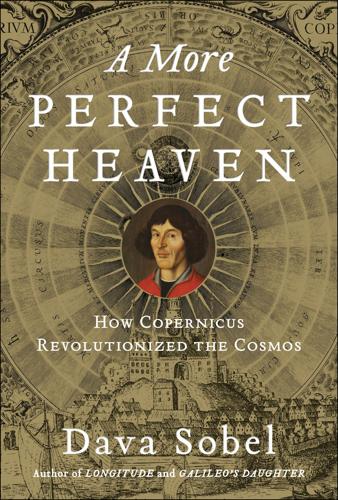
More Perfect Heaven: How Copernicus Revolutionised the Cosmos
by
Dava Sobel
Published 1 Sep 2011
The Sun is only one star among two hundred billion in the Milky Way—and relegated to a remote region far from the galactic center. The Milky Way is just one galaxy in a Local Group of neighbors, surrounded by countless other galaxy groups stretched across the universe. All the shining stars of all the galaxies are as nothing compared to the great volume of unseen dark matter that holds them in gravitational embraces. Even dark matter is dwarfed by the still more elusive entity, dark energy, that accounts for three quarters of a cosmos in which the very notion of a center no longer makes any sense. A small corner of today’s known universe, depicted in this Hubble telescope Deep Field image, is many times more vast than the once-shocking distance Copernicus allowed between Saturn and the stars.
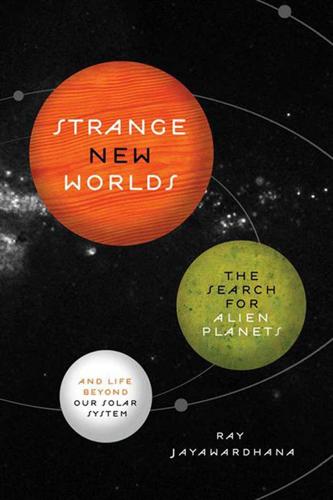
Strange New Worlds: The Search for Alien Planets and Life Beyond Our Solar System
by
Ray Jayawardhana
Published 3 Feb 2011
Since the chance of catching two stars in our own Galaxy in perfect alignment is minuscule, astronomers would have to monitor millions of stars each night to catch a handful of events in progress. But that’s precisely what the Princeton University astronomer Bohdan Paczynski urged his colleagues to do, since the payback could mean valuable insights into what makes up the elusive “dark matter” that holds the Galaxy together. What’s more, in 1991, with then-student Shude Mao, he proposed gravitational microlensing as a means to search for extrasolar planets. His idea was that a planet around the foreground star would alter the magnifying properties of the lens dramatically and thereby betray its presence.
…
Oppenheimer (American Museum of Natural History) Current observations suggest that brown dwarfs are common, perhaps a third or a quarter as numerous as stars. Thus our Galaxy alone would contain tens of billions of them. Since they are faint and hard to detect, some astronomers had speculated initially that brown dwarfs could be an important constituent of the “dark matter” that dominates the Galactic mass budget. That doesn’t appear to be the case: even a hundred billion of these lightweights would not add up to much. Shrouded Origins As their ranks have grown, so has our interest in unraveling the origin of these peculiar objects. One obvious clue is that brown dwarfs are common as isolated, free-foating objects both in young star clusters and in the feld, but relatively rare as companions to stars.
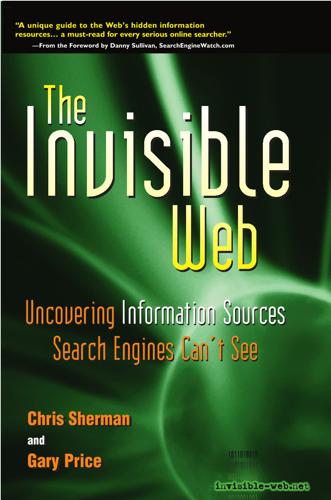
The Invisible Web: Uncovering Information Sources Search Engines Can't See
by
Gary Price
,
Chris Sherman
and
Danny Sullivan
Published 2 Jan 2003
As we discussed in Chapter 2, search engines use programs called crawlers to find and retrieve Web pages stored on servers all over The Invisible Web 57 DEFINITION The Invisible Web Text pages, files, or other often high-quality authoritative information available via the World Wide Web that generalpurpose search engines cannot, due to technical limitations, or will not, due to deliberate choice, add to their indices of Web pages. Sometimes also referred to as the “Deep Web” or “dark matter.” the world. From a Web server’s standpoint, it doesn’t make any difference if a request for a page comes from a person using a Web browser or from an automated search engine crawler. In either case, the server returns the desired Web page to the computer that requested it. A key difference between a person using a browser and a search engine crawler is that the person is able to manually type a URL into the browser window and retrieve that Web page.
…
Text pages, files, or other often high-quality information available via the World Wide Web that general-purpose search engines cannot, due to technical limitations, or will not, due to deliberate choice, add to their indices of Web pages. Sometimes erroneously referred to as the “deep Web” or “dark matter.” keyword. A word or phrase entered in a query form that a search system attempts to match in text documents in its database. limit (limiting). Using search engine structure to reduce the returned set of possible hits by specifying certain criteria such as Web page date, country of origin, or by using field searching to restrict the search to specific parts of Web pages. metasearch engine.
…
S., 278 copyrighted content, 48, 105 copyrights, United States, 278 CORA, 200 coral reefs, 357 CORDIS (Community Research & Development Information System), 192 Corporation Database (Alabama), 304–305 Corporation Database (Arizona), 305 Corporation Database (Arkansas), 305 Corrections Offender Information Network (Florida), 305 costs depth of crawl, 70–71 directory resources, 141 frequency of crawl, 71–72 scholarly journals, 104 value-added search services, 46–48 costs of living, 187, 190 Council of Mayors Mayoral Election Results Database, U.S., 234 Council on Tall Buildings Database, 147 counties, U.S., 170, 228, 236, 238–239 Country Commercial Guides, U.S., 196 Country Indicators for Foreign Policy, 236 County Business Patterns, 170 county government, 228 coverage metasearch engines and, 46 search indexes, 53–54 Web directories, 25 CPA Directory, 295 CRA (Computer Researching Association), 201 crawlers comprehensiveness, 53–54 databases and, 59–61 depth of crawlers, 70–71 efficiency, 29 focused, 38–43 functioning of, 27–29 future of, 128 lag time, 33 the opaque Web, 70–72 origins of, 14–16 passwords and, 63 real-time, 132 Robots Exclusion Protocol, 72–73 search engine use of, 26 spider traps, 65–66 crawling, cost of, 32–33 credibility, Invisible Web, 91–92 Credit Union Search (U.K.), 176 credit unions, 176 Crime Database (Chicago), 305 criminal resources, 271–282 CRISP (Computer Retrieval of Information on Scientific Projects), 257–258 Culturally and Linguistically Appropriate Services Database, 208 CultureFinder, 224 currency conversion, 324 current awareness resources, 109–111, 213–214 Current Controlled Trials (U.K.), 257 current events resources, 283–289 Current Weather Conditions International, 317 Current Weather Conditions U.S., 317 customization databases, 60–61 invisible Web, 93 local weather, 102.103 MetaCrawler, 45 research toolkits, 111, 113 Cybercafe Search Engine database, 203 cyberterms, 204 412 The Invisible Web D dams, register of, 356 DARE: Directory in Social Sciences — Institutions, Specialists, Periodicals, 374 dark matter, definition, 57 Data Query: World Development Indicators, 373 Database of Award-Winning Children’s Literature, 321 databases. See also specific databases content storage, 78–79 crawlers and, 67–68 customization, 60–61 document delivery services, 154 dynamic content, 130–132 keywords searchable, 14 relational, 61, 75 search engines and, 59–61 specialized content focus, 93 Web interface access, 7 dates, timeliness and, 108–109 deep Web, 57, 82–83 Defense Advanced Research Projects Agency (DARPA), U.S., 1, 3 Defense Research Reports (Canada), 363 Defensive Driving Training Locator (NSC), 384 Delphion Intellectual Property Network, 98, 276 Demographic Data (Government Information Sharing Project), 371 demographic information resources, 102, 216, 371–372 dentists, 294–295 Dentists Register and Rolls of Dental Auxiliaries (U.K.), 295 Denver Public Library, Western History Photos, 266–267 Department of Agriculture (USDA), 171 Economics and Statistics System, 171 Foreign Import/Export Data, 195 nutrient database for standard reference, 253–254 Plants Database, 348 Department Of Commerce (DOC), U.S., State Exports Database, 196 Department of Defense (DOD), U.S.
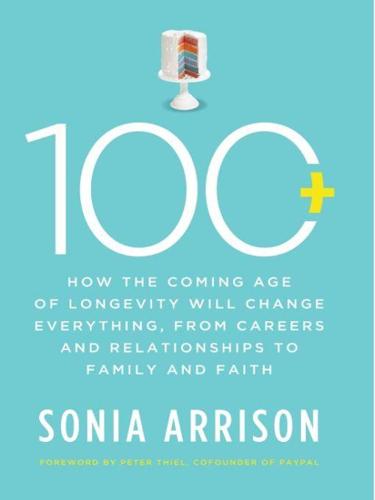
100 Plus: How the Coming Age of Longevity Will Change Everything, From Careers and Relationships to Family And
by
Sonia Arrison
Published 22 Aug 2011
Harley, Weimin Liu et al., “A Natural Product Telomerase Activator as Part of a Health Maintenance Program,” Rejuvenation Research, September 7, 2010, www.liebertonline.com/doi/full/10.1089/rej.2010.1085. 78 Chris Woolston, “Pricey Telomerase Supplements, Touted as Longevity Boosters, Are Unproven,” Los Angeles Times, December 20, 2010, www.latimes.com/health/la-he-skeptic-telomeres-20101220,0,6925196,print.story. 79 See www.tasciences.com/ta-65/. 80 “Genome Announcement a Milestone, but Only a Beginning,” CNN, June 26, 2000, http://archives.cnn.com/2000/HEALTH/06/26/human.genome.05/index.html. 81 Epigenetics is one of these new discoveries. See Brandon Keim, “Early Reports from the ‘Dark Matter’ of the Genome,” Wired News, December 22, 2010, www.wired.com/wiredscience/2010/12/genomic-dark-matter/. 82 John Lauerman, “Complete Genomics Drives Down Cost of Genome Sequence to $5,000,” Bloomberg News, February 5, 2009, www.bloomberg.com/apps/news?pid=newsarchive&refer=home&sid=aEUlnq6ltPpQ. 83 “Your Genome in Minutes: New Technology Could Slash Sequencing Time,” ScienceDaily, December 31, 2010, www.sciencedaily.com/releases/2010/12/101220121111.htm. 84 Francis Collins, “A Genome Story: 10th Anniversary Commentary,” Scientific American, June 25, 2010, www.scientificamerican.com/blog/post.cfm?
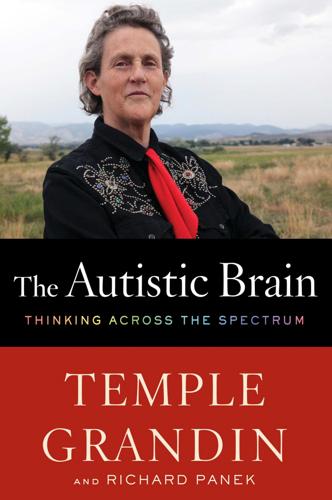
The Autistic Brain: Thinking Across the Spectrum
by
Temple Grandin
and
Richard Panek
Published 15 Feb 2013
Same thing with junk DNA. If you messed around with it, the gene’s “computer program” would not work. I was hardly alone in harboring this deep suspicion. For years, scientists had been taking the idea of junk DNA less and less seriously. In fact, geneticists had started preferring the terms noncoding DNA and dark matter, both of which suggested that this kind of DNA was simply a mystery, not garbage. As I stood reading the article in the airport, I felt vindicated after so many years, which is always nice, but that’s not what jumped out at me. The article—amid many others that day and in the weeks to come that emphasized the non–junk DNA angle—was based on the results of a massive federal research effort called the Encyclopedia of DNA Elements, or Encode.
…
But that Tinker Toy model represents a strand of DNA that’s stretched out. A strand of DNA completely unfurled would be about ten feet long. But it’s not unfurled. Instead, DNA is so tightly coiled that it fits inside the microscopic cell nucleus. By looking at DNA in its natural state, Encode researchers found, as the Times reported, “that small segments of dark-matter DNA are often quite close to genes they control.” Now that, I thought, is a mindblower. Until then, scientists had been thinking about DNA in its stretched-out form. But if you envision DNA as a tightly wound coil—and while I was standing in the airport, holding the Times in my hands, that’s exactly what my picture brain was doing—then a noncoding piece of DNA could be flipping switches on coding DNA that’s hundreds of thousands of base pairs away.
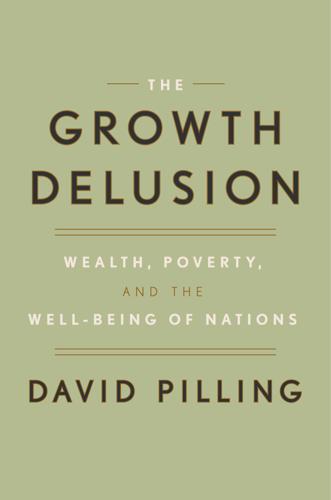
The Growth Delusion: Wealth, Poverty, and the Well-Being of Nations
by
David Pilling
Published 30 Jan 2018
So the economy is shrinking, but everyone is getting a better deal. Lots of what tech is doing is destroying what wasn’t needed. The end result is you’re going to have less of an economy, but higher welfare.” From the economy’s perspective, he was suggesting that Spotify and similar companies are like dark matter. Instead of pumping GDP out, they suck it in and make it disappear. And yet they are providing a valuable service that people are willing to pay for. What this does to our economy, as conventionally measured, is a complicated subject about which there is considerable controversy. So it is worth unpicking into several strands.
…
Without going into detail, the World Bank basically works backward by calculating how much capital we must have to produce so much income. Having taken into account natural capital and physical capital, the missing amount must be institutional capital. It is a little like the assumptions scientists make about dark matter. If you remember the parable of the two islands, one where people trust each other (and trade) and one where they don’t (and don’t), then attributing a large portion of income to institutional capacity is not ridiculous. Still, the bank’s numbers seem implausibly high in comparison to natural capital.
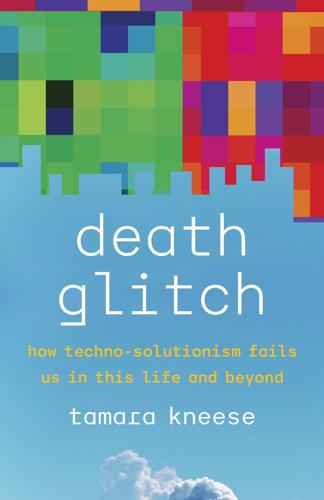
Death Glitch: How Techno-Solutionism Fails Us in This Life and Beyond
by
Tamara Kneese
Published 14 Aug 2023
Marx, Capital, 342. 54. For “data flakes,” see Geof Bowker’s afterword of that name to Gitelman, “Raw Data” Is an Oxymoron; for “data body,” see Critical Art Ensemble, Flesh Machine; for “data double,” see Lyon, The Electronic Eye; for “algorithmic self,” see Cheney-Lippold, We Are Data. 55. Browne, Dark Matters. 56. Hui, On the Existence of Digital Objects. 57. For more on these metaphysical or mythological qualities, see Lagerkvist, “Existential Media”; Mosco, The Digital Sublime. 58. Weatherby, “Data and the Task of the Humanities.” As Leif Weatherby writes in this essay about approaches to data within the humanities, scholars approach data either as a sign or as infrastructure, leaving the metaphysics of data by the wayside. 59.
…
“Playing at Work: Understanding the Future of Work Practices at the Institute for the Future.” Information, Communication, and Society 5, no. 1 (2002): 109–36. doi.org/10.1080/13691180110117686. Brown, Vincent. The Reaper’s Garden: Death and Power in the World of Atlantic Slavery. Cambridge: Harvard University Press, 2008. Browne, Simone. Dark Matters: On the Surveillance of Blackness. Durham, N.C.: Duke University Press, 2015. Brubaker, Jed, Gillian R. Hayes, and Paul Dourish. “Beyond the Grave: Facebook as a Site for the Expansion of Death and Mourning.” Information Society 29, no. 3 (2013): 152–63. doi.org/10.1080/01972243.2013.777300. Bucher, Taina.

Endurance: A Year in Space, a Lifetime of Discovery
by
Scott Kelly
and
Margaret Lazarus Dean
Published 14 Aug 2017
I would never question anyone else’s experience, but this vantage point has never created any particular spiritual insight for me. I am a scientifically minded person, curious to understand everything I can about the universe. We know there are trillions of stars, more than the number of grains of sand on planet Earth. Those stars make up less than 5 percent of the matter in the universe. The rest is dark matter and dark energy. The universe is so complex. Is it all an accident? I don’t know. I was raised Catholic, and as is the case in many families, my parents were more dedicated to their children’s religious development than they were to their own. Mark and I attended catechism classes until one day in the ninth grade, when my mother got tired of driving us.
…
Putting a telescope in orbit outside the atmosphere and past the reach of light pollution has changed the field of astronomy. By observing distant stars, scientists have been able to make discoveries about how fast the universe is expanding, how old it is, and what it is made of. Hubble has helped us to discover new planets in new solar systems and confirmed the existence of dark energy and dark matter. This one scientific instrument has revolutionized what we know about our universe, and the task of repairing it—which always brings the risk of damaging or even destroying its sensitive components—is an enormous responsibility. Once our training was in full swing, we spent a lot of time in simulators.
…
The Hubble Space Telescope and other instruments like the AMS have transformed our understanding of the universe in recent years. We had always assumed that the stars and other matter we could observe—200 billion galaxies each with 100 billion stars on average—made up all of the matter that existed. But we now know that less than 5 percent of the matter in the universe is actually observable. Finding dark energy and dark matter (the rest of what’s out there) is the next challenge for astrophysics, and the AMS is searching for them. Removing and stowing the insulation from the main bus unit is a relatively simple task for a spacewalk, but as with everything we do in zero g, it is harder than you would think—sort of like trying to pack your suitcase if it were nailed to the ceiling.
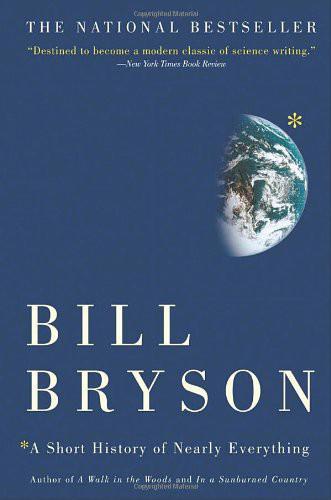
A Short History of Nearly Everything
by
Bill Bryson
Published 5 May 2003
Zwicky's talent was for big ideas. Others—Baade mostly—were left to do the mathematical sweeping up. Zwicky also was the first to recognize that there wasn't nearly enough visible mass in the universe to hold galaxies together and that there must be some other gravitational influence—what we now call dark matter. One thing he failed to see was that if a neutron star shrank enough it would become so dense that even light couldn't escape its immense gravitational pull. You would have a black hole. Unfortunately, Zwicky was held in such disdain by most of his colleagues that his ideas attracted almost no notice.
…
When, five years later, the great Robert Oppenheimer turned his attention to neutron stars in a landmark paper, he made not a single reference to any of Zwicky's work even though Zwicky had been working for years on the same problem in an office just down the hall. Zwicky's deductions concerning dark matter wouldn't attract serious attention for nearly four decades. We can only assume that he did a lot of pushups in this period. Surprisingly little of the universe is visible to us when we incline our heads to the sky. Only about 6,000 stars are visible to the naked eye from Earth, and only about 2,000 can be seen from any one spot.
…
The fact is, there is a great deal, even at quite a fundamental level, that we don't know—not least what the universe is made of. When scientists calculate the amount of matter needed to hold things together, they always come up desperately short. It appears that at least 90 percent of the universe, and perhaps as much as 99 percent, is composed of Fritz Zwicky's “dark matter”—stuff that is by its nature invisible to us. It is slightly galling to think that we live in a universe that, for the most part, we can't even see, but there you are. At least the names for the two main possible culprits are entertaining: they are said to be either WIMPs (for Weakly Interacting Massive Particles, which is to say specks of invisible matter left over from the Big Bang) or MACHOs (for MAssive Compact Halo Objects—really just another name for black holes, brown dwarfs, and other very dim stars).
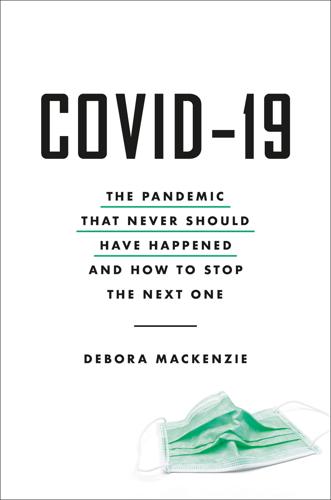
Covid-19: The Pandemic That Never Should Have Happened and How to Stop the Next One
by
Debora MacKenzie
Published 13 Jul 2020
The actual pathogens behind these are often not even determined, as this is not needed for treatment. Instead, doctors use wide-spectrum antibiotics for bacteria, or with viruses—like Covid-19—they just try to keep the patient alive until the patient’s antiviral immune response kicks in. “Illuminating this biological dark matter,” the Hopkins team argued, “would focus pathogen discovery efforts on established damage-causing microbes.” Aggressively doing such diagnosis in a few sentinel locations, perhaps in zoonosis hotspots, might reveal the next big threat early as it starts jumping to people. To do more specific diagnosis of syndromes, hospital labs need new kinds of diagnostic technologies that can distinguish a wide range of pathogens.
…
Diagnostics manufacturers are now making automated “panels” of tests that can recognize the DNA or RNA of, say, a dozen respiratory or gut viruses, a huge improvement over old methods based on growing pathogens in culture to identify them, which is slow and insensitive. Making this kind of capability available more widely, including in countries that cannot afford it now but have hotspots of disease emergence, would illuminate a lot of pathogenic “dark matter” and give us a much stronger idea of exactly what pathogens we are contending with. For now, the most widely used diagnostic panels on the market are designed for routine hospital practice and mostly look for the usual suspects that cause most human infection. In sentinel sites looking for surprises, it would be good to have something that can spot the unexpected and unknown.
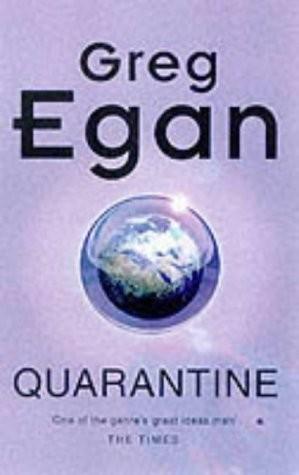
Quarantine
by
Greg Egan
Published 13 Dec 1994
And the whole point of The Bubble is that we never will know. I have other theories, though, if you don’t like that one. Maybe the Bubble Makers are made of cold dark matter—axions, or some other weakly interacting particle which we’ve never been able to detect with much efficiency. If that were the case, we might have done them relatively little harm—but they decided that our technology was getting uncomfortably close to the point where it could start to affect them. There were plenty of astronomers searching for cold dark matter in the twenties and the early thirties—and their equipment was becoming a little more sensitive, and a little more accurate, every year.
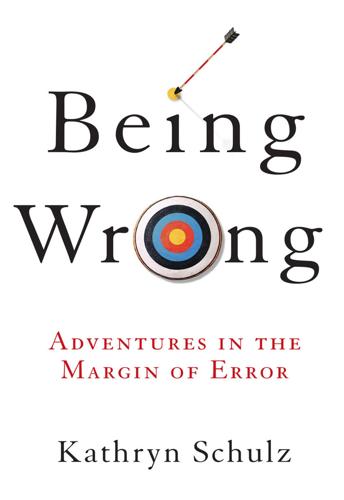
Being Wrong: Adventures in the Margin of Error
by
Kathryn Schulz
Published 7 Jun 2010
Or consider a still unresolved example: physicists currently think that 96 percent of all the matter and energy in the universe is invisible—so-called dark matter and dark energy. The virtue of this highly counterintuitive (not to say cockamamie) proposal is that it makes sense of scientific findings that would otherwise call into question the theory of gravity. This is a classic example of extremely strong prior beliefs (we really believe in gravity) trumping extremely strong counterevidence. It remains to be seen whether the dark-matter theory will ultimately seem as foolish as proposing that Orion loiters in the sky every fifty-two years or as prescient as predicting the existence of Neptune
…
Ellis’s story, 273–79, 280, 294–95 Cook, James, 353n Copernicus, Nicolaus, 127, 357n Coulter, Ann, 148n Courbet, Gustave, 328 credulity, 167–68 cross-dressing theory of comedy, 324n Cruikshank, George, 54 Cuban Missile Crisis, 153 ’Cuz It’s True Constraint, 104–9, 130, 163 Dadaism, 328, 329 dark energy, 126n dark matter, 126n Darwin, Charles, 131–32 data, and error-prevention, 305–6 Davidson, Osha Gray, 275–76, 284n, 383n death-wish response to error, 26–27 decision studies (error studies), 11–12 defensiveness (defenses), 213–18 “better safe than sorry,” 216, 216n blaming other people, 215–16 certainty and, 165–70 denial and, 229–30, 306, 307 near-miss, 214–15, 216 out-of-left-field, 214–15, 216 time-frame, 213–14, 216 definition of wrongness, 10–17 Defoe, Daniel, 258, 382n delusion, 38–39, 40, 351n dementia, 80n democracy, 311–16, 386n denial, 209–10, 228–34, 375–76n Innocence Project and, 233–39, 242–43 Dennett, Daniel, 369n depression, 336 Descartes, René, 6, 33, 113–15, 118–22, 318–19, 349n, 362–63n desegregation of schools, 274–77 desert mirages, 50 Design of Everyday Things (Norman), 211 despair, 258–59, 265 developmental psychology, 100–101, 197–98, 289–92, 307, 385n deviance, 34–35n Dickinson, Emily, 283 Diderot, Denis, 29, 38 direct elections, 312–14 disagreement deficit, 149–54 disillusionment, 53, 252n distal beliefs, 95–96, 359–60n distribution of errors theory, 34–35 Divine Right of Kings, 312 divorce, 248–49, 266–69 divorce rate, 268–69n DNA testing, 222–23, 226–27, 376n, 379n error rate, 223n Innocence Project, 227, 233–39, 242–43 dogma (dogmatic beliefs), 287.
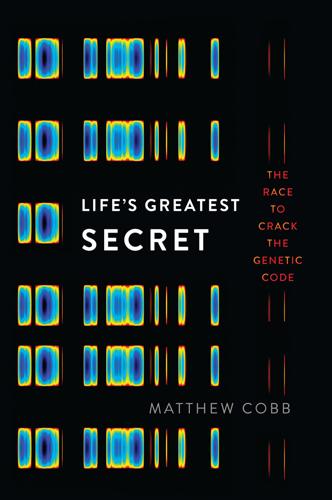
Life's Greatest Secret: The Race to Crack the Genetic Code
by
Matthew Cobb
Published 6 Jul 2015
As Cleland and Copley put it, ‘the fact that we have not discovered any alternative life forms cannot be taken as evidence that they do not exist’. That is logically correct, but it is hardly an enticing starting point for a research programme and would not be taken seriously by any funding agency. Physicists have realised that 95 per cent of the Universe is made of stuff we cannot directly detect – dark matter and dark energy – because calculations of the amount of matter in the Universe based on gravitational effects revealed a substantial discrepancy between observed and expected values. For the shadow biosphere to be more than day-dreaming, a similarly overwhelming signature of its existence would be necessary.
…
For the shadow biosphere to be more than day-dreaming, a similarly overwhelming signature of its existence would be necessary. Those intrigued by the remote possibility of weird life have come up with some potential indicators of its existence, such as the supposedly anomalous varnish that is found on desert rocks.29 However, something as impressive as the indirect evidence of the existence of dark matter and dark energy would be required for this hypothesis to be taken seriously. * The potential for synthetic biology is enormous. Scientists are already able to integrate unnatural amino acids into proteins, for example by manipulating enzymatic machinery associated with an ‘amber’ stop codon (UAG) that has been introduced into bacteria, yeast, the nematode worm Caenorhabditis elegans and even mammalian cells.30 A synthetic form of transfer RNA is used to allow the UAG codon to code for an unnatural amino acid, thereby producing a novel protein.
…
L. and Cavalcanti, A. R. O., ‘Consequences of stop codon reassignment on protein evolution in ciliates with alternative genetic codes’, Molecular Biology and Evolution, vol. 25, 2007, pp. 179–86. Rinke, C., Schwientek, P., Sczyrba, A. et al., ‘Insights into the phylogeny and coding potential of microbial dark matter’, Nature, vol. 499, 2013, pp. 431–7. Roberts, R. B. (ed.), Microsomal Particles and Protein Synthesis, London, Pergamon, 1958. Roberts, R. B., ‘Alternative codes and templates’, Proceedings of the National Academy of Sciences USA, vol. 48, 1962, pp. 897–900. Robertson, M. P. and Joyce, G. F., ‘The origins of the RNA world’, Cold Spring Harbor Perspectives in Biology, vol. 4, 2012, article a003608.

Your Computer Is on Fire
by
Thomas S. Mullaney
,
Benjamin Peters
,
Mar Hicks
and
Kavita Philip
Published 9 Mar 2021
Margot Lee Shetterly, Hidden Figures: The American Dream and the Untold Story of the Black Women Mathematicians Who Helped Win the Space Race (New York: William Morrow, 2016). 9. Meredith Broussard, Artificial Unintelligence: How Computers Misunderstand the World (Cambridge, MA: MIT Press, 2018). 10. Edwin Black, IBM and the Holocaust (New York: Crown Books, 2001), and Clyde W. Ford, Think Black: A Memoir (New York: Amistad, 2019). 11. Simone Browne, Dark Matters: On the Surveillance of Blackness (Durham, NC: Duke, 2015). See also Ruha Benjamin, Race after Technology (New York: Polity, 2019). 12. Clyde W. Ford, Think Black: A Memoir (New York: Amistad, 2019). 13. Safiya Noble, Algorithms of Oppression (New York: NYU Press, 2018). 14. David Golumbia, “Do You Oppose Bad Technology, or Democracy?
…
Lisa Gitelman, 1–14 (Cambridge, MA: MIT Press, 2013); David Lyon, “Surveillance, Snowden, and Big Data: Capacities, Consequences, Critique,” Big Data & Society (July–December 2014): 1–14. 14. cf. Sarah Brayne, “Big Data Surveillance: The Case of Policing,” American Sociological Review 82, no. 5 (2017): 977–1008; Simone Browne, Dark Matters: On the Surveillance of Blackness (Durham, NC: Duke University Press, 2015); Shoshana Amielle Magnet and Tara Rodgers, “Stripping for the State: Whole Body Imaging Technologies and the Surveillance of Othered Bodies,” Feminist Media Studies 12, no. 1 (2011): 101–118; Safiya Umoja Noble, Algorithms of Oppression: How Search Engines Reinforce Racism (New York: NYU Press, 2018). 15.
…
Kate Crawford, “Artificial Intelligence’s White Guy Problem,” New York Times (June 25, 2016). 38. Sara Ahmed and Jackie Stacey, eds., Thinking through the Skin (London: Routledge, 2001). 39. Steve Anderson, Technologies of Vision: The War between Data and Images (Cambridge, MA: MIT Press, 2017). 40. Simone Browne, Dark Matters: On the Surveillance of Blackness (Durham, NC: Duke University Press, 2015). 41. Emily Horowitz, Protecting Our Kids? How Sex Offender Laws Are Failing Us (Santa Barbara: Praeger, 2015). 42. John Borneman, Cruel Attachments: The Ritual Rehab of Child Molesters in Germany (Chicago: University of Chicago Press, 2015). 43.

Scale: The Universal Laws of Growth, Innovation, Sustainability, and the Pace of Life in Organisms, Cities, Economies, and Companies
by
Geoffrey West
Published 15 May 2017
This apparent general lack of interest by the biological community in aging and mortality beyond a relatively small number of devoted researchers stimulated me to begin pondering these questions. As it appeared that almost no one was thinking about them in quantitative or analytic terms, there might be a possibility for a physics approach to lead to some small progress. Consequently, during interludes between grappling with quarks, gluons, dark matter, and string theory, I began to think about death. As I embarked on this new direction, I received unexpected support for my ruminations about biology as a science and its relationship to mathematics from an unlikely source. I discovered that what I had presumed was subversive thinking had been expressed much more articulately and deeply almost one hundred years earlier by the eminent and somewhat eccentric biologist Sir D’Arcy Wentworth Thompson in his classic book On Growth and Form, published in 1917.4 It’s a wonderful book that has remained quietly revered not just in biology but in mathematics, art, and architecture, influencing thinkers and artists from Alan Turing and Julian Huxley to Jackson Pollock.
…
Although it hardly grabs the same kind of attention, this accelerating socioeconomic expansion has had and will continue to have a significantly more profound effect on your life, your children’s lives, and their children’s lives than all of the wonders and paradoxes of the exponentially expanding cosmic universe and its archetypal mythologies of dark matter, dark energy, and the Big Bang. The most obvious manifestation of the exponential rate at which our social and economic lives have been expanding is provided by the huge population explosion that has occurred over the past two hundred years or so. After two million years of slow, steady growth the number of human beings living on the planet is estimated to have eventually reached the billion mark around 1805.
…
Names that you might not have heard of, such as Adolphe Quetelet, Thomas Young, and William Froude. I also included a few personal anecdotes to illustrate how I came to think about some of these problems, and, in particular, how I transitioned from being obsessed with elementary particles, strings, dark matter, and the evolution of the universe to trying to understand cells and whales, life and death, cities and global sustainability, and why companies die. A critical point in this transition was my meeting with the eminent ecologist and wonderful scientist Jim Brown. In chapter 3, I related the story of how this fortuitous encounter and my subsequent long-term engagement with the Santa Fe Institute came into being and how it led to an extraordinary collaborative relationship that changed my life, and I believe his, too.

Berlin: Life and Death in the City at the Center of the World
by
Sinclair McKay
Published 22 Aug 2022
The Zeitzeugenbörse – a contemporary witness exchange – has been aiming to capture and record the voices of ordinary Berliners from right the way across the century: their lives and experiences through the traumas of the decades. The old sense that the German people had to suppress their own experiences of suffering had the unintended effect of creating a mass of historic dark matter: silence and obscurity when it came to certain epochal events. The wonderful academics and volunteers who run the Zeitzeugenbörse have been working in recent years to ensure that a generation of Berlin voices is never lost. It is these voices that can help guide us through a century both of terror and of stubborn fortitude.
…
By early 1933, Hitler’s ascension to the Chancellorship having been followed almost immediately by the burning of the Reichstag, enabling the Nazis to blame and whip up rage against the communists, hold a heavily freighted election and swiftly impose iron-gripped totalitarianism, Einstein understood that if anything he had underestimated the terrible forces at play; the dark matter exerting such strange effects across the nation. The night after the Reichstag fire, Einstein told his mistress: ‘I dare not enter Germany because of Hitler.’6 But this did not mean that he would keep his silence. Einstein sailed for Belgium, where he delivered this ringing statement: ‘As long as I have any choice in the matter, I shall live only in a country where civil liberty, tolerance and equality of all citizens before the law prevail.
…
Then came the shock of the German invasion of Russia in 1941, and the evacuation of nuclear physics programmes from the larger cities out to the Urals and Kazakhstan. A young scientist who had joined the Soviet Air Force – Georgy Flyorov – noticed that Western scientific journals now had limited information about nuclear progress, and surmised that in the midst of that intelligence dark matter, top-secret work was underway. He wrote directly to Stalin: ‘It is essential not to lose any time in building the uranium bomb.’11 Flyorov was put into contact with senior physicists. At a time when the Nazi armies were brutalizing the country, there was an agonizing dilemma and it was to do with money.
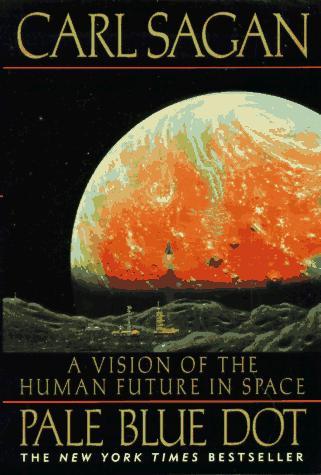
Pale Blue Dot: A Vision of the Human Future in Space
by
Carl Sagan
Published 8 Sep 1997
We see, scattered across deep space, galaxies with "active nuclei," quasars, galaxies distorted by collisions, their spiral arms disrupted, star systems blasted with radiation or gobbled up by black holes—and we gather that on such timescales even interstellar space, even galaxies may not be safe. There is a halo of dark matter surrounding the Milky Way, extending perhaps halfway to the distance of the next spiral galaxy (M31 in the constellation Andromeda, which also contains hundreds of billions of stars). We do not know what this dark matter is, or how it is arranged— but some† of it may be in worlds untethered to individual stars. If so, our descendants of the * A value that nicely approximates modern estimates of the number of planets orbiting stars in the Milky Way Galaxy
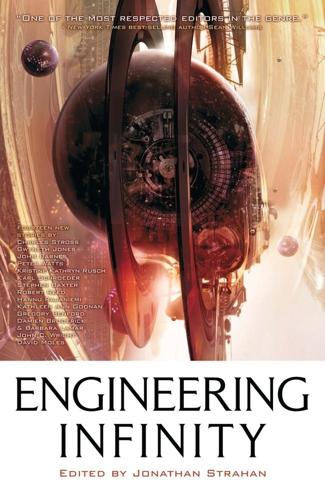
Engineering Infinity
by
Jonathan Strahan
Published 28 Dec 2010
Its mind was diamondoid processing nodes and smart dust swarms and cold quantum condensates in the system's outer dark. Its eyes were interferometers and WIMP detectors and ghost imagers. The first thing the server saw was the galaxy, a whirlpool of light in the sky with a lenticular centre, spiral arms frothed with stars, a halo of dark matter that held nebulae in its grip like fireflies around a lantern. The galaxy was alive with the Network, with the blinding Hawking incandescence of holeships, thundering along their cycles; the soft infrared glow of fully grown servers, barely spilling a drop of the heat of their stars; the faint gravity ripples of the darkships' passage in the void.
…
In an eyeblink it clumped into hadrons, almost faster than the server could follow - the baby had its own arrow of time, its own fast heartbeat, young and hungry. And then the last scattering, a birth cry, when light finally had enough room to travel through the baby so the server could see its face. The baby grew. Dark matter ruled its early life, filling it with long filaments of neutralinos and their relatives. Soon, the server knew, matter would accrete around them, condensing into stars and galaxies like raindrops in a spiderweb. There would be planets, and life. And life would need to be served. The anticipation was a warm heartbeat that made the server's shells ring with joy.

Beyond: Our Future in Space
by
Chris Impey
Published 12 Apr 2015
If the strong nuclear force was stronger or weaker, carbon couldn’t be created in stars. If the gravitational constant was stronger, stars would be very short-lived; if it was weaker, stars wouldn’t shine or make the heavy elements. The universe also has very low entropy or disorder, which may be responsible for time’s forward sense or “arrow.” In addition, the cosmic values of dark matter and dark energy neither prohibit structures from forming nor cause a collapse too soon for life to be able to form. The point is that while the universe would be physically sensible if any of these quantities took different values, it wouldn’t be a universe with life containing life as we know it.
…
The first fine-tuning argument was the fact that the age of a biological universe cannot be too short or too long, “Dirac’s Cosmology and Mach’s Principle” by R. H. Dicke 1961. Nature, vol. 192, pp. 440–41. Since then, the idea has been explored by a number of physicists, for example: Coincidences: Dark Matter, Mankind, and Anthropic Cosmology by J. Gribbin and M. Rees 1989. New York: Bantam. Also: The Goldilocks Enigma: Why Is the Universe Just Right for Life? by P. Davies 2007. New York: Houghton Mifflin Harcourt. For a philosophical perspective, see A Fine-Tuned Universe: The Quest for God in Science and Theology by A.
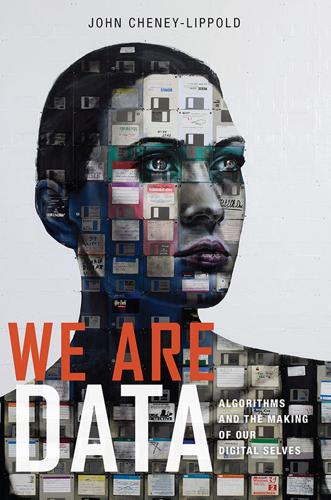
We Are Data: Algorithms and the Making of Our Digital Selves
by
John Cheney-Lippold
Published 1 May 2017
Keith Clark, “Negation as Failure,” in Logic and Databases, ed. Herve Gallaire and Jack Minker (New York: Plenum, 1978), 293. 39. Wanda Zamen, “HP Computers Are Racist,” YouTube.com, December 10, 2009. 40. For a fuller explanation of how digital epidermalization operates in this example, see Simone Browne, Dark Matters: On the Surveillance of Blackness (Durham, NC: Duke University Press, 2015), 161–164. 41. Julianne Hing, “HP Face-Tracker Software Can’t See Black People,” Colorlines, December 21, 2009, www.colorlines.com. 42. Wendy Hui Kyong Chun, “On Software, or the Persistence of Visual Knowledge,” Grey Room 18 (2005): 26–51. 43.
…
Feminist scholar Shoshana Magnet has already outlined the racial, classed, and gendered dimensions of this machinic process. And surveillance theorist Simone Browne has argued that this biometric objectification constructs newly minted racial truths. See Shoshana Magnet, When Biometrics Fail: Gender, Race, and the Technology of Identity (Durham, NC: Duke University Press, 2011); Simone Browne, Dark Matters: On the Surveillance of Blackness (Durham, NC: Duke University Press, 2015). 61. Brad Weslake, “Explanatory Depth,” Philosophy of Science 77, no. 2 (2010): 273–294. 62. Kate Crawford, “The Hidden Biases of Big Data,” Harvard Business Review, April 1, 2013, http://hbr.org. 63. Geoffrey Bowker, “Data Flakes: An Afterward to ‘Raw Data’ Is an Oxymoron,” in Gitelman, “Raw Data” Is an Oxymoron, 170. 64.
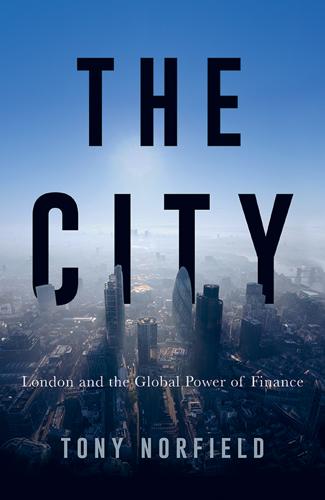
The City
by
Tony Norfield
But their solution is to assume away the existence of different rates of return and instead to invent extra US foreign assets that do not appear in the statistics. I would be the last to argue that US statistics capture every cent of reality, but this is to ignore an evident fact that the yields are different. The extra US assets are given the name ‘dark matter’ and, as one might expect, including this results in the US having a net surplus on its investment position.24 This feat is achieved by ‘redefining the stock of assets in a way that more explicitly shows the value of the underlying services’. This transforms US imperialism’s economic and financial power, its ability to appropriate value from the world economy, into a payment the rest of the world makes to the US for the services rendered!
…
Other bond and longer-term loan interest rates are based upon the benchmark rate for government securities. 21A useful recent book on international finance is Brett Christophers, Banking Across Boundaries: Placing Finance in Capitalism, Chichester: Wiley- Blackwell, 2013. 22Ricardo Hausmann, ‘Good Credit Ratios, Bad Credit Ratings: The Role of Debt Structure’, third draft of a paper prepared for the Conference on Rules-Based Fiscal Policy in Emerging Market economies, Oaxaca, Mexico, 14 to 16 February 2002. 23BEA, ‘US International Transactions, 1960–present’, 2014, Table 1.1, lines 6 and 14, at bea.gov. 24Ricardo Hausmann and Federico Sturzenegger, ‘Global Imbalances or Bad Accounting? The Missing Dark Matter in the Wealth of Nations’, Centre for International Development at Harvard University, Working Paper No. 124, January 2006, pp. 3–8, at hks.harvard.edu. 25Panitch and Gindin, The Making of Global Capitalism. 26The ‘offshore’ Chinese renminbi currency has the ISO code CNH, and this might be used instead of the ‘onshore’ CNY.
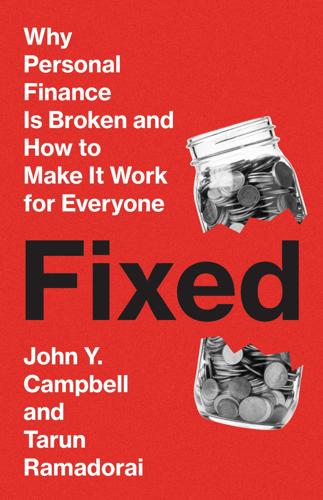
Fixed: Why Personal Finance is Broken and How to Make it Work for Everyone
by
John Y. Campbell
and
Tarun Ramadorai
Published 25 Jul 2025
Most people have little idea how to make such calculations and are easily influenced by advertising or by the mortgage choices of friends and family. The mortgage choice of any specific individual is hard to predict based on their objective circumstances, suggesting the importance of these other influences. Put differently, there is a lot of inexplicable “dark matter” in people’s mortgage choices that seems unrelated to the factors economists consider important. One mistake many borrowers make is to believe they can predict the future trajectory of long-term mortgage rates. A borrower who believes rates will rise is likely to lock in today’s rate with an FRM, whereas a borrower who believes rates will fall may choose an ARM, planning to refinance to an FRM later.
…
Vishny, “Law and finance,” Journal of Political Economy 106 (1998): 1113–1155. This is one of the most cited papers in all of modern economics. For a contrasting view, that financial innovation can compensate for weak legal protection of investors, see Philip T. Hoffman, Gilles Postel-Vinay, and Jean-Laurent Rosenthal, Dark Matter Credit: The Development of Peer-to-Peer Lending and Banking in France (Princeton University Press, 2019). 3. Marco Pagano and Tullio Jappelli, “Information sharing in credit markets,” Journal of Finance 48 (1993): 1693–1718, present theoretical arguments and cross-country historical evidence that the creation of credit registries can kick off a virtuous cycle of information sharing and increases in lending activity. 4.
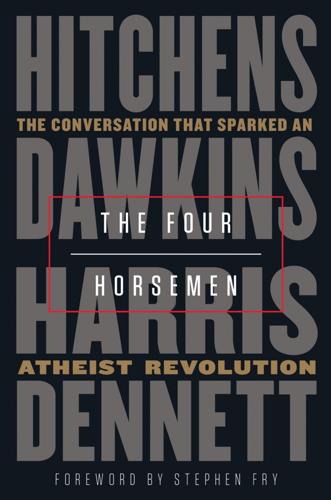
The Four Horsemen
by
Christopher Hitchens
,
Richard Dawkins
,
Sam Harris
and
Daniel Dennett
Published 19 Mar 2019
We don’t know, but we have some interesting hypotheses to think about. What did the common ancestor of humans and chimpanzees look like? We don’t know, but we do know a bit about it. We know the continent on which it lived (Africa, as Darwin guessed), and molecular evidence tells us roughly when (between 6 million and 8 million years ago). What is dark matter? We don’t know, and a substantial fraction of the physics community would dearly like to. Ignorance, to a scientist, is an itch that begs to be pleasurably scratched. Ignorance, if you are a theologian, is something to be washed away by shamelessly making something up. If you are an authority figure like the Pope, you might do it by thinking privately to yourself and waiting for an answer to pop into your head – which you then proclaim as a ‘revelation’.
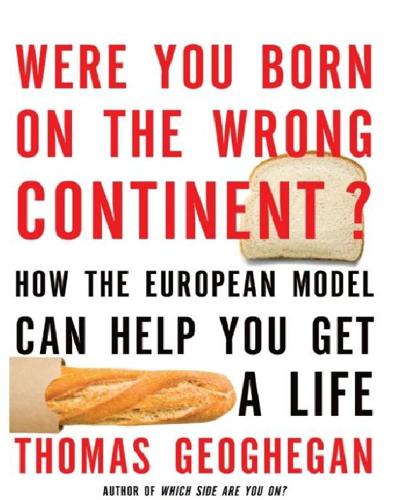
Were You Born on the Wrong Continent?
by
Thomas Geoghegan
Published 20 Sep 2011
It’s just that our economic tools, at this early stage of the “science,” are too crude to calculate the trade-off. After all, economics as a science is about two hundred years old. When it’s as old as physics or astronomy, we’ll get much better measures of standard of living. Freedom or leisure is about as cosmically important as the dark matter, or dark energy, of the universe. It’s just that our minds have been darkened by economists like Milton Friedman. Yet Friedman himself had half an idea as to who is better off (Barbara v. Isabel), even when he was writing libertarian-type tracts like Free to Choose. Friedman’s very life was an indictment of the ideas in the book.
…
But that means on the Internet, where people flinch because it’s like a flashlight shining in your eyes, you find yourself involuntarily turning away from a thick, clunky German abstraction a nanosecond before you have had the time to absorb it. The way German makes a car wreck of three or four abstract nouns, you have to see the damn thing in print, and stare at the word longer than the digital world will let you. At any rate, I see more people reading cold, hard print—the kind that pulls the light into its dark matter without flashing any back—in Germany. And maybe it’s because people can stare at a sentence and think about it a little longer when it’s in print that it seems to me I can get into the kind of long and thoughtful political conversations over there that I never seem to have here. I should be clear: we can be thoughtful.

This Will Make You Smarter: 150 New Scientific Concepts to Improve Your Thinking
by
John Brockman
Published 14 Feb 2012
But inference to the best explanation also gets us a great deal more than either deduction or enumerative induction does. It’s inference to the best explanation that gives science the power to expand our ontology, giving us reasons to believe in things we can’t directly observe, from subatomic particles—or maybe strings—to the dark matter and dark energy of cosmology. It’s inference to the best explanation that allows us to know something of what it’s like to be other people on the basis of their behavior. I see the hand drawing too near the fire and then quickly pull away, tears starting in the eyes while an impolite word is uttered, and I know something of what that person is feeling.
…
Hunting for Root Cause: The Human “Black Box” Eric Topol Professor of translational genomics, Scripps Research Institute; cardiologist, Scripps Clinic Root-cause analysis is an attractive concept for certain matters in industry, engineering, and quality control. A classic application is to determine why a plane crashed by finding the “black box”—the tamper-proof event-data recorder. Even though this box is usually bright orange, the term symbolizes the sense of dark matter, a container with critical information to help illuminate what happened. Getting the black-box audio recording is just one component of a root-cause analysis of why a plane goes down. Each of us is gradually being morphed into an event-data recorder by virtue of our digital identity and presence on the Web.
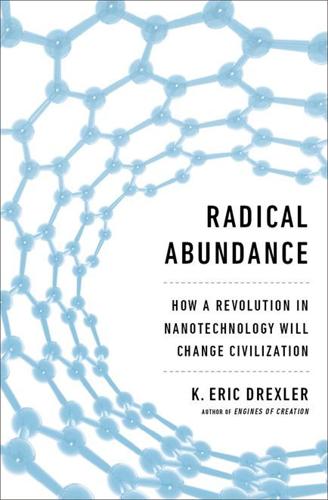
Radical Abundance: How a Revolution in Nanotechnology Will Change Civilization
by
K. Eric Drexler
Published 6 May 2013
They’re more different than most people think. PART 3 EXPLORING DEEP TECHNOLOGY CHAPTER 7 Science and the Timeless Landscape of Technology THE GREAT STORY OF THE WORLD Near the dawn of known time, before any hint of an Earth or a Sun, the pre-stellar universe was a realm of dark matter and incandescent gas that expanded, cooled, and faded to darkness as space itself stretched. There were ripples in that sea of matter, slight concentrations of mass that drew more mass together, collapsing to form the seeds of galaxies. The physics of gravitation—and of light, heat, and fluid dynamics—describes these collapses along with the lesser collapses within them that gave birth to a generation of stars that brought light into a time of universal darkness.
…
With the Higgs boson, physicists observed the final particle predicted by the Standard Model, a crowning yet frustrating achievement. Physicists had hoped that they would find something else, a terrestrial clue to physics beyond the Standard Model. There must be something beyond. Galactic dynamics shows the effects of mass in the form (it seems) of unobserved dark-matter particles, and the expansion of the cosmos itself is being driven ever faster by an unexplained dark-energy field. Beyond this, the equations themselves call out for amendment or replacement. Gravitation doesn’t fit with the rest (but only deep down, in as-yet unobservable ways), and even the compatible parts of the Standard Model have a patchwork quality, where at the bottom, physicists hope to find a more unified fabric.
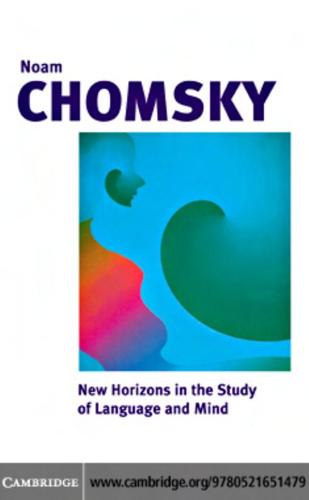
New Horizons in the Study of Language and Mind
by
Noam Chomsky
Published 4 Dec 2003
Shall we understand metaphysical naturalism to be the demand for unity of nature? If so, it could be taken as a guiding idea, but not as a dogma. “Ninety percent of the matter of the universe,” physicists tell us, “is what is now called dark matter – dark because we don’t see it; dark because we don’t know what it is,” indeed “we do not have the slightest idea of what 90 percent of the world is made of.” (Weisskopf 1989). Suppose dark matter turns out to be crucially different from the 10 per cent of the world about which there are some ideas. The possibility cannot be discounted in principle; stranger things have been accepted in modern science.
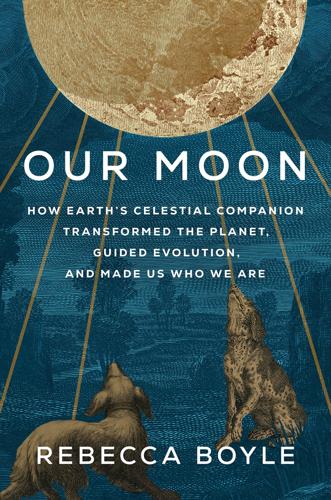
Our Moon: How Earth's Celestial Companion Transformed the Planet, Guided Evolution, and Made Us Who We Are
by
Rebecca Boyle
Published 16 Jan 2024
Telescopes just can’t make out objects that fall in the spectrum between specks of dust and protoplanets the size of the Moon. To understand why, we have to wade into the laws of optics. EVERYTHING YOU SEE represents just a tiny sliver of the electromagnetic spectrum. Most of the universe is hidden from view, even the normal stuff, not just the mysterious dark matter no one yet understands. The right telescopes are technologically capable of seeing most of the light we cannot, but Earth gets in the way. Its atmosphere absorbs infrared, ultraviolet, X-ray, and gamma-ray radiation, which is part of the reason we can live here without being fried or having our DNA ripped apart.
…
No one had any inkling that these were entire worlds distinct from this one. With a few exceptions, before the age of telescopes most people could not see galaxies, which meant nobody knew what a galaxy was. Certainly no one knew about the supermassive black holes at the center of the galaxies, nor the invisible cosmic glue known as dark matter that holds galaxy groups together. Earth plays the starring role in all the oldest creation tales. Everything else in the heavens took a supporting role. Early stories cast the Moon and the stars as helpers on a greater quest. To Plato, the Moon’s orbit was made for marking time as a way to comprehend eternity.
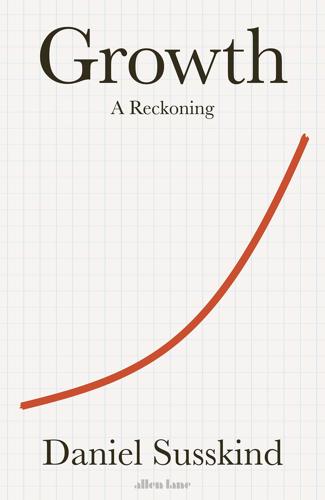
Growth: A Reckoning
by
Daniel Susskind
Published 16 Apr 2024
Yet the most profound consequence of Romer’s shift was theoretical, opening up new paths to understanding the causes of growth. This is because ideas have very different properties from objects.39 And it was these properties, when properly understood, that could explain the hitherto elusive nature of technological progress. Economic Dark Matter What were these properties? Physical objects, in economese, are ‘rival’. This means that if they are used by one person there is less left for others. If I pick up a tool, then that tool cannot be used by others while I’m holding it, and if I take a bite from a chocolate bar, there is less chocolate left behind for someone else to eat.
…
Technological progress was no longer parachuted into the economic model from above without any explanation; it was the direct consequence of the hustle of inventors and entrepreneurs in competitive pursuit of the profits that might come from discovering new ideas.44 Romer had not only identified the dark matter of growth – an invisible, intangible, but immensely consequential thing that constitutes most of our economic universe – but also made that darkness visible in a way that had not been possible before.45 The connection between new ideas and technological progress is so remarkable that even Romer himself appears to have initially underestimated the power of that story.

Boom: Bubbles and the End of Stagnation
by
Byrne Hobart
and
Tobias Huber
Published 29 Oct 2024
We’ve also seen deceleration in technological progress as captured by an important metric: total factor productivity. 12 A variable calculated from economic models, total factor productivity indicates the extent to which growth is a result of technological improvements as opposed to investments in labor and capital. You can try to estimate economic growth by tallying increases in hours worked and capital invested, but these estimates will inevitably have unaccounted remainders. This leftover econometric dark matter must be due to technology of one kind or another, which makes it possible to do more with less either by building new products from old materials or by organizing people more effectively. Growth in US total factor productivity, which averaged almost 2 percent per year from 1920 to 1970, has averaged less than 1 percent per year since then. 13 Based strictly on this measure, the pace of technological improvement has been cut in half.
…
In the wake of Hiroshima and Chernobyl, nuclear energy became irreversibly linked with the dystopian imagery of “contamination,” “mutation,” and “destruction,” 280 immortalized in the pop culture iconography of mutants and monsters like the zombies in 1968’s Night of the Living Dead and Godzilla. 281 Growing fear of nuclear energy—which has, paradoxically, resulted in policies that have hindered the adoption of a lower-emission energy technology—illustrates how a shared narrative has the power to influence technological adoption and diffusion. Similarly, even as the fracking industry has grown, it has faced pushback from voters because of a bleak narrative involving the violent penetration of the Earth’s surface to extract an alien dark matter that is inexorably linked with environmental destruction, pollution, and war. This contrasts sharply with narratives surrounding energy technologies characterized as “clean” and “renewable,” with their quasi-mystical connotations of purification, healing, and renewal. The cleantech bubble emerged during the mid-2000s with investments in solar, biofuels, batteries, and other renewable energy sources, and is perhaps one of the purest examples of a bubble driven by narrative. 282 “Salvation (and Profit) in Greentech,” a talk given by the venture investor John Doerr in 2007, perfectly encapsulates the core narrative of the cleantech bubble.
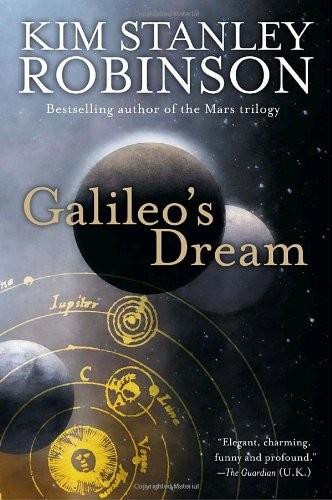
Galileo's Dream
by
Kim Stanley Robinson
Published 29 Dec 2009
And something otherwise undetectable was exerting very marked gravitational effects, that if caused by a mass would outmass the visible matter of the universe ten to one. Then there appeared to be a kind of reverse gravity effect as well, an inexplicable accelerating expansion of space. People spoke of dark matter and dark energy, but these were names only—names that left the mysteries untouched. What they were was better explained by the existence of extra dimensions, first suggested by Kaluza and Klein, and then put to use by Bao.” Galileo said, “Explain them to me.” He felt himself become equations in the clouds inside him.
…
The best way to conceptualize some of the extra ones is to imagine them enfolded or implicate in the dimensions we sense.” A long, flat red sheet appeared before him; it rolled lengthwise into a long thin tube. “Seen in two dimensions this looks like a ribbon, but in three dimensions it’s obviously a tube. It’s like that all through the manifolds. Dark matter has to be very weakly interacting but at the same time registering gravitationally at ten times the mass of all visible matter. That is an odd combination, but Bao considered it as a dimension we only were seeing part of, a hyperdimension or manifold that enfolds our dimensions. That manifold happens to be contracting, you could say, which gives the effect in our sensible universe of the extra gravity we detect.
…
“I thought you said time was the fourth dimension,” Galileo said. “No. For one thing, what we call time turns out to be not a dimension but a manifold, a compound vector of three different dimensions. But put that aside for a second, and let’s finish with the spatial manifold. Dimension four we still call dark matter, as a gesture to our first awareness of it.” “Four,” Galileo repeated. “Yes, and dimension five in some ways counterbalances the action of four, as it is the perceived accelerating expansion of space-time. Aspects of this dimension are called dark energy.” “Do these dimensions pass through each other, then?”

Blue Mars
by
Kim Stanley Robinson
Published 23 Oct 2010
Random change was not the goal anyway. Acceptance was. Happiness— Ann’s true happiness, whatever that might be— now so far away, so hard to imagine. He ached to think of it. It was extraordinary how much physical pain could be generated by thought alone— the limbic system a whole universe in itself, suffused with pain, like the dark matter that suffused everything in the universe. “Have you talked to Michel?” Ursula asked. “No. Good idea.” He called Michel, explained what had happened, and what he had in mind to do. “My God, Sax,” Michel said, looking shocked. But in only a few moments he was promising to come. He would get Desmond to fly him to Da Vinci to pick up the treatment supplies, and then fly on up to the refuge.
…
And a magnetic monopole detector, orbiting the sun out of the plane of the ecliptic, had captured a trace of what looked to be a fractionally charged unconfined particle with a mass as big as a bacterium— a very rare glimpse of a “weakly interacting massive particle,” or WIMP. String theory had predicted WIMPs would be out there, while the revised standard did not call for them. That was thought provoking, because the shapes of galaxies showed that they had gravitational masses ten times as large as their visible light revealed; if the dark matter could be explained satisfactorily as weakly interacting massive particles, Sax thought, then the theory responsible would have to be called very interesting indeed. Interesting in a different way was the fact that one of the leading theorists in this new stage of development was working right there in Da Vinci, part of the impressive group Sax was sitting in on.
…
Everyone in these moments attended to her very closely, in effect mesmerized; she had been working at Da Vinci for a year now, and everyone there smart enough to recognize such a thing knew that they were watching one of the pantheon at work, discovering reality right there before their eyes. The other young turks would interrupt her to ask questions, of course— there were many good minds in that group— and if they were lucky, off they would all go together, mathematically modeling gravitons and gravitinos, dark matter and shadow matter— all personality and indeed all persons forgotten. Very productive exciting sessions; and clearly Bao was the driving force in them, the one they relied on, the one they had to reckon with. It was disconcerting, a bit. Sax had met women in math and physics departments before, but this was the only female mathematical genius he had ever even heard of, in all the long history of mathematical advancement, which, now that he thought of it, had been a weirdly male affair.

London Under
by
Peter Ackroyd
Published 1 Nov 2011
That of Goodge Street stands on the corner of Chenies Street and Tottenham Court Road, while that of Stockwell has been converted into a war memorial. These portals could be knocked down, and the deep tunnels filled in, but what would be the purpose? Underground space has acquired the status of dark matter, unseen yet somehow maintaining the structure of the visible world. The portals are the gateways to immensity containing all that is hidden and all that is forgotten. A character in The War of the Worlds (1898) by H. G. Wells, in fear of the extraterrestrial invaders, states that You see, how I mean to live is underground.
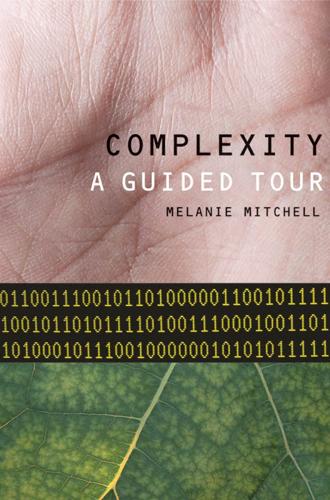
Complexity: A Guided Tour
by
Melanie Mitchell
Published 31 Mar 2009
Isaac Newton did not have a good definition of force, and in fact, was not happy about the concept since it seemed to require a kind of magical “action at a distance,” which was not allowed in mechanistic explanations of nature. While genetics is one of the largest and fastest growing fields of biology, geneticists still do not agree on precisely what the term gene refers to at the molecular level. Astronomers have discovered that about 95% of the universe is made up of “dark matter” and “dark energy” but have no clear idea what these two things actually consist of. Psychologists don’t have precise definitions for idea or concept, or know what these correspond to in the brain. These are just a few examples. Science often makes progress by inventing new terms to describe incompletely understood phenomena; these terms are gradually refined as the science matures and the phenomena become more completely understood.
…
We saw an example of this back in chapter 2—it was the invention of the electronic computer, and its capacity for modeling complex systems such as weather, that allowed for the demonstration of the existence of chaos. More recently, extremely powerful land and space-based telescopes have led to a flurry of discoveries in astronomy concerning so-called dark matter and dark energy, which seem to call into question much of what was previously accepted in cosmology. No new set of technologies has had a more profound impact on an established field than the so-called molecular revolution in genetics over the last four decades. Technologies for rapidly copying, sequencing, synthesizing, and engineering DNA, for imaging molecular-level structures that had never been seen before, and for viewing expression patterns of thousands of different genes simultaneously; these are only a few examples of the feats of biotechnology in the late twentieth and early twenty-first centuries.
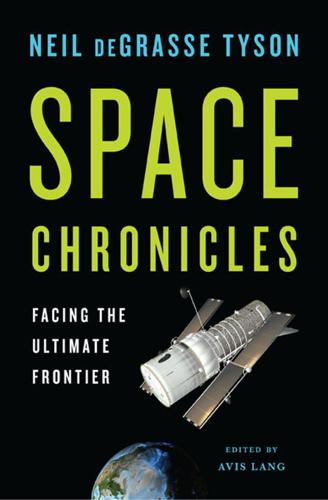
Space Chronicles: Facing the Ultimate Frontier
by
Neil Degrasse Tyson
and
Avis Lang
Published 27 Feb 2012
When I pause and reflect on our expanding universe, with its galaxies hurtling away from one another, embedded within the ever-stretching, four-dimensional fabric of space and time, sometimes I forget that uncounted people walk this Earth without food or shelter, and that children are disproportionately represented among them. When I pore over the data that establish the mysterious presence of dark matter and dark energy throughout the universe, sometimes I forget that every day—every twenty-four-hour rotation of Earth—people kill and get killed in the name of someone else’s conception of God, and that some people who do not kill in the name of God kill in the name of their nation’s needs or wants.
…
W., 7–8, 194 Bush, George W., 13–14, 15, 130, 224–25 administration of, 59, 209 calculus, 115, 247 Callisto (moon), 169 Cambridge, University of, 29, 257 Canada, xiv, 7, 168 Capital Space LLC, 146 carbon, 35–36, 101, 239, 240, 258 carbon cycle research, 325–26 carbon dioxide, 30, 40 carbon monoxide, 92 Cassini spacecraft, 82, 168–69, 198, 210 Huygens probe of, 138–39 Catholic Church, 34, 86 CBS Evening News, 145 centrifugal force, 173, 175 CERN (European Organization for Nuclear Research), 80 Cernan, Eugene, 14 Chaffee, Roger B., 66 Challenger space shuttle, 12, 96 ode to, 242–43 Chandra X-ray Observatory, 139 Cheney, Dick, 13 Chernobyl disaster, 168 Chicxulub crater, 50, 52 China, ancient, 235 China, People’s Republic of, 127, 162, 207, 215, 233 Great Wall of, 87, 207, 233 population of, 235 scientific literacy in, 230–31, 235–36 space program of, xiv, 7, 12–13, 22–23, 59–60, 79–80 Three Gorges Dam of, 22, 233 chlorofluorocarbons, 30 civil rights movement, 66–67, 69, 178–79 Clarke, Arthur C., 166, 175 Classification Act of 1949, 268–69 Clinton, Bill, 6 Close Encounters of the Third Kind (film), 37 Colbert, Stephen, 186–88 Cold War, 5–6, 59, 80, 87, 111, 192, 200, 219 Collier’s, 111 Columbia space shuttle, 12, 15, 60, 96, 130, 142, 156, 199–201, 210 Columbus, Christopher, 8, 87 Comet Halley, 88 Comet Hyakutake, 47 Comet Ikeya-Seki, 88 comets, 103, 116, 255 eccentric orbits of, 115 ecosystems and impact of, 51–52 impact rate of, xi long-period, 46–47 risk of impact by, 46–47 short-period, 46 water and, 48 Comet Shoemaker-Levy 9, 52, 88, 102 Commerce, Justice, Science, and Related Agencies Appropriations Act of 2008, 289 Commerce, Department of, US, 305 Commercial Space Launch Act of 1984, 5 Commission on Implementation of United States Space Exploration Policy, 13 Commission on the Future of the United States Aerospace Industry, 146, 316–19 appointments to, 316–17 establishment of, 316 personnel matters and, 318–19 termination of, 319 Communist Party, Soviet, 121 Congress, US, xiv, 4, 5, 6, 9, 11, 13, 14, 15, 17, 73, 79, 81, 82, 143, 191, 192, 228, 314 see also House of Representatives, US; Senate, US Constellation program, 186 Contact (film), 28 Convention on Registration of Objects Launched into Outer Space, 310–11 Cook, James, 160 Cooperative Research and Development Agreements (CRDAs), 303–8 Copernican principle, 34, 36 Copernicus, Nicolaus, 34, 97, 115, 118 Corey, Cyrus, 212 cosmic microwave background, 92, 94–95, 176 cosmic perspective, 258, 259–61 cosmochemistry, 30 Cosmos (TV show), 256 Cosmos 1 spacecraft, 166, 170 Cosmos 954 satellite, 168 Cronkite, Walter, 145–46 culture, 72–74, 147–48, 210–11 Curie, Marie, 96 Curtis, Heber D., 98–101 Cyrano de Bergerac, Savinien de, 217 Daniels, George H., 215–16 dark energy, 255 dark matter, 255 Darwin, Charles, 98 Deep Space 1 spacecraft, 164–65, 169–70 Deep Space Network, 246 Defense Advanced Research Projects Agency (DARPA), 125 Defense, Department of, US, 271, 274, 309, 312 De Forest, Lee, 218 Democrats, 4–5, 13, 224 Denmark, 7 De Revolutionibus (Copernicus), 115 Descent of Man (Darwin), 98 dinosaurs, 49, 103 Dirac, Paul A.
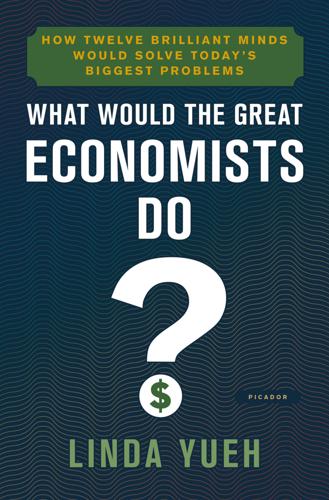
What Would the Great Economists Do?: How Twelve Brilliant Minds Would Solve Today's Biggest Problems
by
Linda Yueh
Published 4 Jun 2018
R48– R58 Groenewegen, Peter, 1995, A Soaring Eagle: Alfred Marshall 1842–1924, Aldershot: Edward Elgar Hansen, Alvin H., 1939, ‘Economic Progress and Declining Population Growth’, American Economic Review, 29(1), pt I, pp. 1–15 Hausmann, Ricardo and Federico Sturzenegger, 2007, ‘The Missing Dark Matter in the Wealth of Nations and Its Implications for Global Imbalances’, Economic Policy, 22(51), pp. 470–518 Hayek, Friedrich A., 1979, A Conversation with Friedrich A. von Hayek: Science and Socialism, Washington, DC: American Enterprise Institute for Public Policy Research ________, 1986, ‘The Moral Imperative of the Market’, in The Unfinished Agenda: Essays on the Political Economy of Government Policy in Honour of Arthur Seldon, London: Institute of Economic Affairs ________, 1994, Hayek on Hayek: An Autobiographical Dialogue, ed.
…
Ricardo, Works and Correspondence, IV, p. 23. 14. Ibid., p. 21. 15. King, David Ricardo, p. 88. 16. Ricardo, Works and Correspondence, IV, pp. 28, 32. 17. Ibid., p. 35. 18. Ibid., p. 33. 19. Ibid., p. 41. 20. Ricardo Hausmann and Federico Sturzenegger, 2007, ‘The Missing Dark Matter in the Wealth of Nations and Its Implications for Global Imbalances’, Economic Policy, 22(51), pp. 470–518. 21. Mark Muro, Jonathan Rothwell, Scott Andes, Kenan Fikri and Siddharth Kulkarni, 2015, ‘America’s Advanced Industries’, Brookings Institution, Washington, DC; www.brookings.edu/wp-content/uploads/2015/02/AdvancedIndustry_FinalFeb2lores-1.pdf 22.
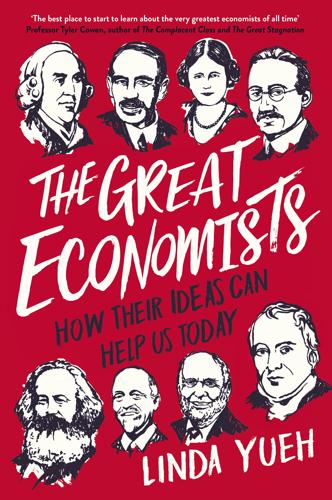
The Great Economists: How Their Ideas Can Help Us Today
by
Linda Yueh
Published 15 Mar 2018
Todd, Oxford: Clarendon Press, bk IV, ch. 2, para 12. 13. Ricardo, Works and Correspondence, IV, p. 23. 14. Ibid., p. 21. 15. King, David Ricardo, p. 88. 16. Ricardo, Works and Correspondence, IV, pp. 28, 32. 17. Ibid., p. 35. 18. Ibid., p. 33. 19. Ibid., p. 41. 20. Ricardo Hausmann and Federico Sturzenegger, 2007, ‘The Missing Dark Matter in the Wealth of Nations and Its Implications for Global Imbalances’, Economic Policy, 22(51), pp. 470–518. 21. Mark Muro, Jonathan Rothwell, Scott Andes, Kenan Fikri and Siddharth Kulkarni, 2015, ‘America’s Advanced Industries’, Brookings Institution, Washington, DC; www.brookings.edu/wp-content/uploads/2015/02/AdvancedIndustry_FinalFeb2lores-1.pdf 22.
…
, National Institute Economic Review, 224, pp. R48–R58 Groenewegen, Peter, 1995, A Soaring Eagle: Alfred Marshall 1842–1924, Aldershot: Edward Elgar Hansen, Alvin H., 1939, ‘Economic Progress and Declining Population Growth’, American Economic Review, 29(1), pt I, pp. 1–15 Hausmann, Ricardo and Federico Sturzenegger, 2007, ‘The Missing Dark Matter in the Wealth of Nations and Its Implications for Global Imbalances’, Economic Policy, 22(51), pp. 470–518 Hayek, Friedrich A., 1979, A Conversation with Friedrich A. von Hayek: Science and Socialism, Washington, DC: American Enterprise Institute for Public Policy Research ———, 1986, ‘The Moral Imperative of the Market’, in The Unfinished Agenda: Essays on the Political Economy of Government Policy in Honour of Arthur Seldon, London: Institute of Economic Affairs ———, 1994, Hayek on Hayek: An Autobiographical Dialogue, ed.
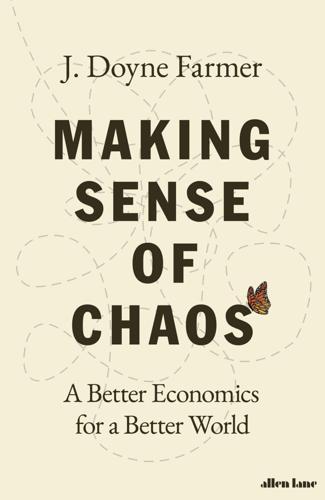
Making Sense of Chaos: A Better Economics for a Better World
by
J. Doyne Farmer
Published 24 Apr 2024
But this is only a small part of its cost – it employs about 2,200 people, with an operating budget of about $1 billion per year. Its crowning achievement to date was the observation of the Higgs boson in 2012, which confirmed theoretical predictions published in 1964. This observation required a forty-year effort and cost about $13 billion.1 Gathering the data needed to understand the origins of dark matter and dark energy requires even higher energies. Building an accelerator that could do this would require such a massive expenditure of resources that it’s unlikely to ever happen. Absent alternative sources of data, progress in fundamental physics has nearly ground to a halt. The theories are far ahead of the data and thus have become increasingly speculative, and the field is bogged down in doctrinaire battles over the correct approach.
…
Brian 5, 170–71 artificial intelligence 1, 3, 11, 42, 65, 114, 183 Arvizu, Dan 235 Asano, Yuki 124–5, 135 Asian financial crisis (1997) 195, 219, 232 ‘as-if’/’as-is’ reasoning 8, 10, 112 aspiration-level adaptation 110 assets accounting and 47 agent-based models and 7, 115 balance sheets and 45–6 behavioral macroeconomics and 103 buying underpriced 7, 115, 202 contracts and 141 derivative pricing and 150 leverage and 192, 193, 196, 197, 199, 200, 204–5, 208, 210, 211–12, 211 malfunctions and 185 market impact and 150, 151 portfolio choice and 111 prices and 181, 185 quantitative easing programs and 259 risk management and 204–5, 208, 210, 211–12, 211 attractors 30–37, 32, 182, 206 chaotic attractor 31–2, 34, 36, 206 fixed-point attractor 30–31, 33, 34, 36–7, 182 limit-cycle attractor 34 Lorenz attractor 32, 34 strange attractor 30–31, 33, 35 austerity 22, 105, 254 Austria xviii, 258 automation 1, 12, 20, 65, 68–72 Axtell, Rob 82, 274 Aymanns, Christoph xi, xii, 207–8, 210, 213–14, 215 Bachelier, Louis 144, 165 backward-looking expectations 83–4 Bacry, Emmanuel 216 Bagley, Richard 51 balance sheets 45–7, 51, 141, 188, 191, 260, 261–2 Bank for International Settlements 213 Bank of America 175–6, 189 Bank of Canada 258 Bank of England xviii, 89, 188, 216 Bank of Hungary 90 Bank of South Africa 216 baseball, gaze heuristic and 109 Basel Committee on Banking Supervision 204–16 Basel I 204, 214–15 Basel II 205, 206, 208, 209, 210, 213, 214–15 Basel III 215 Basel IV 215 Basel leverage-cycle model xii, 204–16, 211, 219 Baumol, William 62 Beaufort, Francis 224 beavers, hunting of 186–7 behavioral economics 5–6, 9, 17, 40, 46, 47, 93, 103–5, 106, 108, 114, 116, 120, 168 Beinhocker, Eric: The Origin of Wealth 63–4 Bergmann, Barbara 1 Beveridge curve xi, 69, 69, 70–71 ‘Beyond Equilibrium and Efficiency’ conference (2000) 168–9 bid-ask spread 154 biology 4, 8, 16, 21, 51, 54, 175–90, 239, 278 market ecology see ecology, market understanding the economy and concepts from 43–5 BiosGroup 187–8 Black, Fischer 150, 169 Black Monday stock market crash (1987) 161–4, 165, 166, 167, 168, 187 Boeing 73 Bohr, Niels 23, 24 Boldrin, Michele 37 bonds 111, 140, 150, 171, 172, 185, 191, 194–7, 199, 219, 259 Boston University 56, 57, 153 Bouchaud, Jean-Philippe 155 bounded rationality 116–20, 118n, 119, 173 computerized trading strategies and 178 defined 108–9 endogenous business cycles and 124, 128, 129 game theory and 135 market impact and 151, 155–6 risk management and 206 wilderness of xi, 116–20, 118n, 119, 124, 151, 155–6 Boyle’s Law 23–4 brain artificial 171, 172 brainwaves, chaos and 38 cerebral cortex 277, 278 as complex system 5, 20–21 gut brain 139–40, 142, 277 prediction and 23 wilderness of bounded rationality and 118n, 119 Brin, Sergey 49 British Met (Meteorological) Office 224 Brock, William ‘Buz’ 38, 39, 172–3, 200 broker-dealers 207 Brown University 82 Buffet, Warren 115, 139 business cycles Beveridge curve and 71 bounded rationality and creating endogenous business cycles 124–8, 126, 135 chaos and 28–9, 37, 40 creative destruction and 279–80 endogenous business cycle from a simple agent-based model xi, 124–8, 126, 135 inflation and 257, 258 nonlinear behavior and 76, 78 spontaneous emergence of 123, 124–8, 126, 135, 258 Calchas (mythical character) 22 Calinescu, Ani 184 call option 150 Calvet, Laurent 218 Calvo, Guillermo 101–2 ‘Carbon Dioxide and Climate: A Scientific Assessment’ report (1979) 230 Carnegie Mellon 98 Carville, James 123 Case-Shiller index 88, 89n Cass, David 100 census data 6, 67, 80, 81, 87, 112, 115 Center for Nonlinear Studies at Los Alamos 16, 41 change, economy and 8, 123–35 business cycles see business cycles chaotic dynamics and 128–35 internally and externally driven causes 8, 123 markets and 162, 164–70, 165, 167 chaos xviii, 24 Basel leverage-cycle model and 212, 213, 217 business cycles and 28–36 chaotic attractor xi, 30–36, 31, 206 defined 30–36, 32 economy as chaotic 36–41, 128 financial crisis (2008) and 206 fluid turbulence and 218–19 game theory and 128–35 sensitive dependence on initial conditions and 25, 31–4, 40, 212 simple chaos and complicated chaos 37, 38–40, 134, 143, 217, 218–19 stock market and 129, 135, 143 weather and 225, 226, 228, 229 Charney, Jule 227, 230 ChatGPT 114 Cherkashin, Dmitriy 159 chess 113, 132 Chicago school of economics 106–7 child-care workers 70 China, trophic structure of the U.S. and Chinese economies, comparison of xi, 59–63, 59 classifier system 171–2 climate change 1, 3, 12, 57, 65–6, 107, 221–54, 255, 263 Climate Policy Laboratory see Climate Policy Laboratory conscious civilization and 277–80 Dynamic Integrated Climate Economy (DICE) 235–6, 246–7 economic predictions and predictions of weather and climate 221–69 green-energy transition 65–72, 222, 234–7, 245–54, 246, 250, 263–8, 279 historical global cost and deployment of energy technologies 245–54, 246 predicting climate 229–31 solar photovoltaic modules see solar photovoltaic power sustainable growth 267–9 technological progress and 234–54, 237, 243, 246, 250 weather predicting and 223–9 Climate Policy Laboratory xii, 264–7, 264, 280 Agriculture and Land Use Module 264, 266 Energy System Module 264, 265–6 Government and International Relations Module 264, 266–7 Green Industrial Strategy Module 264, 266 Households Module 264, 266 Innovation and Technological Change Module 264, 266 Investment and Financial Stability Module 264, 266 origins of 264–5 The Production Network Module 264, 265 closed-form solutions 76–7 clustered volatility 219 credit and 173 defined 134, 164–5 fluid turbulence and 217, 218 leverage and 199–202, 215 news and xi, 164–74, 165, 167, 199–202, 215 price movements and xi, 164–74, 165, 167 quantitative predictions and models of 173–4 risk management and 204–5 Santa Fe Artificial Stock Market model and 170–73, 184–5, 200 trend-following and 200 coal miners 65 competition 42, 44, 67, 70 biological 177–82, 185, 189 game theory and 129, 133–5 complete network 68 complex systems xix adaptive complex systems 21, 43 chaos and see chaos complicated 35–6 defined 19–21 economy as 16, 42–7 financial system as 142 networks and 48–50 nonlinearity and 75–6, 77 science of 4–5, 19–21, 26, 29–30 self-organization and 48 ‘The Economy as an Evolving Complex System’ conference, Santa Fe Institute (1987) and origins of 16–17, 161, 166 complexity economics agent-based models and see agent-based models ‘as-if’ and ‘as-is’ reasoning and see ‘as-if‘/’as-is’ reasoning bounded rationality and see bounded rationality chaos and see chaos climate change and see climate change complex systems and see complex systems data and see data defined xviii–xix, 4–5, 19 ecology and see ecology equilibrium and see equilibrium hard problems, ability to solve 8–9 institutional support 13–14, 274–6 Leontief and emergence of 54–7 markets and see markets methods and infrastructure, developing 273–4 standard economic theory and see standard economic theory tools 6–7, 11 verisimilitude and see verisimilitude Complexity Science Hub, Vienna 198 complicated chaos 35–6, 38–40, 218–19 complicated complex systems 35–6 Computable General Equilibrium models 102 Congressional Budget Office, US xiv consciousness 5, 20, 21, 76, 278 conscious civilization 277–81 contracts 46, 140–41, 191, 196 convergence trading 158, 194 convergent evolution 188–9 counterparty identifiers 184, 187 COVID-19 pandemic agent-based models and 75, 277 business cycles and 8, 29, 262 model of epidemics’ effect on sickness and the economy and xi, 78–80, 79 Oxford model predicts economy response to xiii–xviii, 12, 50, 78, 263 Cowan, George 20 creative destruction 43, 279–80 credit agent-based models and 173 credit crisis 82 financial crisis (2008) and see global financial crisis (2008) financial turbulence and 191–220 lending and see lending leverage and see leverage risk management and see risk management shadow banking system and 142 CRISIS (Complexity Research Initiative for Systemic InStabilities) 208 Crutchfield, Jim 35 Curie, Marie 270 Cutler, David 166, 167, 168, 169, 170, 172 cybernetics 20 damage function 236, 249 Daniels, Marcus 154 dark matter/dark energy 271 Darley, Vince 187–8 Darwin, Charles 176, 177, 223 data collecting better 270–73 microdata 72, 87, 229 Dawid, Herbert 257 Day, Richard 37 decimalization 187–8 decision making 7, 11, 46, 63, 74, 83, 97, 99, 103, 115, 118n, 135, 141, 266–7 default 8–9, 49, 85, 90, 193, 195, 199, 200, 201, 202, 203, 232 degrees of freedom 38–40, 217, 219 Delour, Jean 216 demand curves 15, 96, 152 equilibrium and 8, 15 housing 87–8, 95–6, 110 inverted demand functions 200–201 labor 65–8, 71–2, 101 market ecology and 182 market impact function and 150–56 Nash equilibrium and 130 shocks xiii, xiv, xv, xvi, xvii, 262–3 Standard models in economics and 85 tatonnement and 15–16 World Energy Model and 249 Wright’s Law and 244 Department of Energy National Renewable Energy Laboratory, US 235 Department of Labor, US xiv derivatives 179, 187 derivative pricing 150, 152 Descartes, René 153 descent, evolution and 176 D.
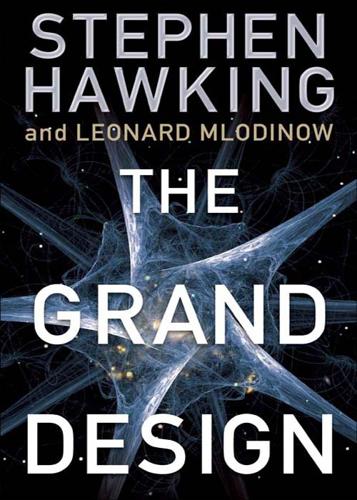
The Grand Design
by
Stephen Hawking
and
Leonard Mlodinow
Published 14 Jun 2010
Electromagnetic force • the second strongest of the four forces of nature. It acts between particles with electric charges. Electron • an elementary particle of matter that has a negative charge and is responsible for the chemical properties of elements. Fermion • a matter-type elementary particle. Galaxy • a large system of stars, interstellar matter, and dark matter that is held together by gravity. Gravity • the weakest of the four forces of nature. It is the means by which objects that have mass attract each other. Heisenberg uncertainty principle • a law of quantum theory stating that certain pairs of physical properties cannot be known simultaneously to arbitrary precision.
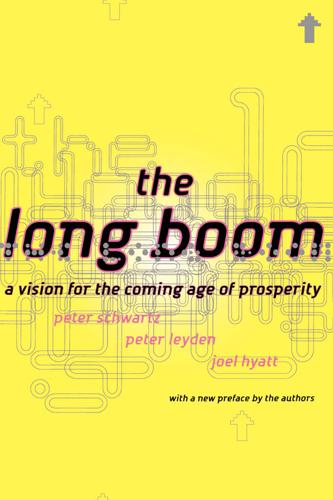
The Long Boom: A Vision for the Coming Age of Prosperity
by
Peter Schwartz
,
Peter Leyden
and
Joel Hyatt
Published 18 Oct 2000
This scientific method keeps driving the evolution of our understanding of the world. Today, in some ways, we have a scientific situation similar to the one a century ago. For example, we can't account for a big chunk of the mass that, according to current theories, should exist in the universe—we're talking 90 percent of the mass, which we call dark matter, partly because we can't find it. Something seems screwy here. Or according to our big bang theory of creation, the universe is expanding out from that initial explosion in one of two ways: Either it has been expanding at a steady rate after that first shove into the emptiness of space, or it is expanding but decelerating because of the gravitational pull of all the bodies in the universe.
…
See microprocessors Connections, See Networks Christian Democratic coalition, 94, Control vs. complexity, 263-265 113 Copernicus, 212 Chrysler, 60, 175 Corporations, 2, 42-45, 121 Citibank, 262 Climate change Corruption, 114-115, 126 COX2, 190 developing vs. developed worlds, 157-159 Crime, 285-286 floods, 150 Culture preservation, 234 forest fires, 150-151 Cuyahoga River, 156 global warming, 10, 152-154 Cyberspace libraries, 89 Hurricane Andrew, 149,150 Cystic fibrosis, 198 Hurricane Mitch, 150 overview, 148-154 Daimler-Benz, 60,171, 174 pollution in China, 158-159 D'Alema, Massimo, 94 regional weather problems, 151 Dark matter, 213 tornadoes, 151 Databases, 215-216 United Nation's Conference on Decentralization Climate Change, 157 personal computers and, 19, 26 Clinton, President Bill, 41, 52, 76, ragtag computer techies fostering, 92, 121 28-30 Cloning, 195-199 of telecommunications, 22,178 Club of Rome, 162 of utilities industry, 178-181 Coal, 158-159 Defense Advanced Research Projects Coca Cola, 112 Agency (DARPA), 50 Code of honor, 28-30 Delphi Energy & Engine Cold fusion, 219-220 Management Systems, 176 Cold War, 48, 49, 134-135, 22 Deming, W, Edwards, 119 Colorado, 267 Democracy Communism, 40, 116, 262 free markets and, 111-112, 115 Compassionate conservatism, 274 growth of middle class and, 235 Complexity theory, 263-265 media freedom in, 114 Computers rule of twos in, 112-114 economic decentralization and, in Singapore, 269 19, 26, 28-30 transparency rule, 114-115 impact of, 189-190 women in, 250 326 Democratic Party, 76-77 Democrats of the Left, 92 Deng, Xiaoping, 48, 116 Depression, 51-52 Deregulation of European businesses, 93 of U.S. businesses, 41 of utilities industry, 178,180-181 in Washington consensus, 96 Detroit Edison, 178 Digital technologies, 25-26 Diversity, 248, 273 DNA, 188-189, 197-198 Dolly, 195 Dow Jones Industrial Average, 47, 92 Downsizing, 42, 93 Drake, Frank, 220 Drake's equation, 220 Drexler, Eric, 203-204, 208 Dust Bowl, 149 Earth Day, 160 Earth Summit, 157 East vs.

Giving the Devil His Due: Reflections of a Scientific Humanist
by
Michael Shermer
Published 8 Apr 2020
An encounter with the deity who created our universe and (presumably) the heavenly cloud where our connectome souls are uploaded after death would very probably top all of these encounters, given its implications for our future existence, not to mention the opportunity to answer science’s deepest questions from the ontological source itself: What is dark energy and dark matter? What was there before the Big Bang? Did you create our universe out of a singularity, and if so how did you do that … and why? We only have our thoughts and the tools of communicating those thoughts through speech and writing. Thus, free thought and free speech are the epistemological primitive, the ground of all other rights.
…
None of these arguments is relevant to the question because, I contend, whether there is a God or not, the universe per se cannot have a purpose in any anthropomorphic sense for which that term is usually employed. The universe is simply the collection of galaxies, stars, planets, comets, meteorites, and other solar system detritus, plus whatever dark matter and dark energy turn out to be. The universe is governed by laws of nature that themselves have no purpose other than dictating what matter and energy do. Stars, for example, convert hydrogen into helium, and they have no choice in the matter once they reach a certain size and temperature. Stars are not sitting around thinking “my purpose in life is to convert hydrogen into helium, so I better get on with it.”
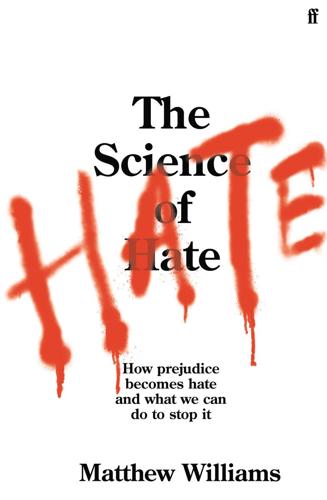
The Science of Hate: How Prejudice Becomes Hate and What We Can Do to Stop It
by
Matthew Williams
Published 23 Mar 2021
SQUIDs are so remarkably sensitive that they have been compared to hearing a pin drop at an AC-DC concert.2 They are used to detect gravitational waves, undulations in space-time emanating from cataclysmic events in the universe like a star going supernova or the collision of two black holes 1.8 billion light years away.¶ They have also been used in attempts to detect axions, the ghostlike particles with virtually no weight that were candidates for the dark matter that makes up 85 per cent of the universe. More locally, they have been used to study brain activity in sufferers of epilepsy and Alzheimer’s disease. It may come as no surprise to learn that the theory underpinning SQUIDs, the Josephson junction, won its namesake the Nobel Prize in Physics in 1973.
…
Abdallah, Abdalraouf, 1 Abedi, Salman, 1, 2, 3, 4 abortion, 1, 2 Abu Sayyaf Group, 1 abuse, 1, 2, 3, 4, 5 accelerants to hate, 1, 2, 3, 4, 5, 6, 7, 8, 9, 10 accelerationists, 1 addiction, 1, 2, 3, 4 Admiral Duncan bar, 1 adolescence, 1, 2, 3, 4, 5, 6, 7 advertising, 1, 2, 3, 4, 5 African Americans, 1, 2, 3, 4, 5, 6, 7 afterlife, 1, 2 age, 1, 2 aggression: brain and hate, 1, 2, 3, 4, 5; false alarms, 1; group threat, 1, 2, 3, 4, 5, 6; identity fusion, 1; mortality, 1; pyramid of hate, 1; trauma and containment, 1, 2 AI, see artificial intelligence Albright, Jonathan, 1 alcohol, 1, 2, 3, 4, 5, 6, 7, 8 algorithms: far-right hate, 1, 2, 3, 4; filter bubbles and bias, 1, 2; Google, 1, 2, 3; online hate speech, 1, 2, 3, 4, 5, 6; Tay, 1, 2; tipping point, 1, 2; YouTube, 1 Algotransparency.org, 1 Allport, Gordon, 1, 2, 3, 4 Al Noor Mosque, Christchurch, 1 al-Qaeda, 1, 2 Alternative für Deutschland (AfD), 1 alt-right: algorithms, 1, 2; brain and hate, 1; Charlottesville rally, 1, 2; counter-hate speech, 1; definition, 1n; Discord, 1; Facebook, 1, 2, 3; fake accounts, 1; filter bubbles, 1, 2; red-pilling, 1, 2; social media, 1, 2; Trump, 1, 2; YouTube, 1 Alzheimer’s disease, 1 American Crowbar Case, 1 American culture, 1 American Nazi Party, 1, 2 Amodio, David, 1n amygdala: brain and signs of prejudice, 1, 2; brain tumours, 1; disengaging the amygdala autopilot, 1; hate and feeling pain, 1, 2; and insula, 1; neuroscience of hate, 1n, 2, 3, 4; parts that edge us towards hate, 1; parts that process prejudice, 1; prepared versus learned amygdala responses, 1, 2; processing of ‘gut-deep’ hate, 1; recognising facial expressions, 1n, 2; stopping hate, 1, 2; trauma and containment, 1, 2; unlearning prejudiced threat detection, 1 anger, 1, 2, 3, 4, 5, 6, 7, 8 anonymity, 1, 2 anterior insula, 1n Antifa, 1, 2n, 3 anti-gay prejudice, 1, 2, 3, 4, 5, 6, 7, 8 anti-hate initiatives, 1, 2 antilocution, 1 anti-Muslim hate, 1, 2, 3, 4, 5, 6 anti-Semitism, 1, 2, 3, 4, 5, 6 anti-white hate crime, 1 Antonissen, Kirsten, 1, 2 anxiety: brain and hate, 1, 2, 3, 4; harm of hate speech, 1; intergroup contact, 1, 2; subcultures of hate, 1, 2; trauma and containment, 1; trigger events, 1, 2 Arab people, 1, 2, 3, 4, 5, 6 Arbery, Ahmaud, 1 Arkansas, 1, 2 artificial intelligence (AI), 1, 2, 3, 4 Asian Americans, 1, 2 Asian people, 1, 2, 3, 4 assault, 1, 2, 3 asylum seekers, 1, 2, 3, 4 Athens, 1 Atlanta attack, 1 Atran, Scott, 1, 2 attachment, 1 attention, 1, 2, 3 attitudes, 1, 2, 3, 4, 5, 6 Aung San Suu Kyi, 1 austerity, 1 Australia, 1 autism, 1 averages, 1, 2 avoidance, 1, 2, 3 Bali attack, 1 Bangladeshi people, 1 BBC (British Broadcasting Corporation), 1, 2, 3 behavioural sciences, 1, 2 behaviour change, 1, 2, 3 beliefs, 1, 2, 3 Bell, Sean, 1, 2 Berger, Luciana, 1 Berlin attacks, 1 bias: algorithms, 1; brain and hate, 1, 2, 3, 4, 5, 6, 7; filter bubbles, 1; Google Translate, 1; group threat, 1, 2, 3, 4; police racial bias, 1; predicting hate crime, 1; stopping hate, 1, 2, 3; unconscious bias, 1, 2, 3, 4 Bible, 1 Biden, Joe, 1 ‘Big Five’ personality traits, 1 biology, 1, 2, 3, 4, 5, 6, 7 Birstall, 1 bisexual people, 1 Black, Derek, 1, 2 Black, Don, 1, 2, 3 blackface, 1 Black Lives Matter, 1 Black Mirror, 1n black people: author’s brain and hate, 1, 2, 3, 4, 5; brain and signs of prejudice, 1, 2; brain parts that edge us towards hate, 1; brain parts that process prejudice, 1; Charlottesville rally, 1, 2; disengaging the amygdala autopilot, 1; Duggan shooting, 1; feeling pain, 1; Google searches, 1, 2; group threat, 1, 2, 3, 4; online hate speech, 1, 2, 3, 4; police relations, 1, 2; predicting hate crime, 1, 2; prepared versus learned amygdala responses, 1; pyramid of hate, 1, 2, 3n; recognising facial expressions, 1, 2; South Africa, 1; steps to stop hate, 1, 2, 3, 4; trauma and Franklin, 1, 2, 3, 4; trigger events, 1, 2, 3; unconscious bias, 1; unlearning prejudiced threat detection, 1, 2; white flight, 1 BNP, see British National Party Bolsonaro, Jair, 1 Bosnia and Herzegovina, 1, 2 bots, 1, 2, 3, 4, 5 Bowers, Robert Gregory, 1 boys, 1, 2 Bradford, 1 brain: ancient brains in modern world, 1; author’s brain and hate, 1; beyond the brain, 1; the brain and hate, 1; brain and signs of prejudice, 1; brain damage and tumours, 1, 2, 3, 4; brains and unconscious bias against ‘them’, 1; brain’s processing of ‘gut-deep’ hate, 1; defence mechanisms, 1; disengaging the amygdala autopilot, 1; figures, 1; finding a neuroscientist and brain scanner, 1; group threat detection, 1, 2; hacking the brain to hate, 1; hate and feeling pain, 1; locating hate in the brain, 1; neuroscience and big questions about hate, 1; overview, 1; parts that edge us towards hate, 1; parts that process prejudice, 1; prepared versus learned amygdala responses, 1; recognising facial expressions, 1; rest of the brain, 1; signs of prejudice, 1; steps to stop hate, 1, 2; tipping point to hate, 1, 2, 3, 4, 5; trauma and containment, 1, 2; unlearning prejudiced threat detection, 1; where neuroscience of hate falls down, 1 brain imaging: author’s brain and hate, 1; beyond the brain, 1; the brain and hate, 1; brain and signs of prejudice, 1, 2; brain injury, 1, 2; Diffusion MRI, 1; disengaging the amygdala autopilot, 1; finding a neuroscientist and brain scanner, 1; fusiform face area, 1; locating hate in the brain, 1; MEG, 1; neuroscience of hate, 1, 2, 3; parts that process prejudice, 1; prepared versus learned amygdala responses, 1; processing of ‘gut-deep’ hate, 1; subcultures of hate, 1, 2; unconscious bias, 1 brainwashing, 1, 2 Bray, Mark, 1n Brazil, 1, 2, 3 Breivik, Anders, 1, 2 Brexit, 1, 2, 3, 4n, 5, 6, 7, 8, 9 Brexit Party, 1, 2 Brick Lane, London, 1 Britain First, 1, 2 British identity, 1, 2 British National Party (BNP), 1, 2n, 3, 4, 5 Brixton, 1 Broadmoor Hospital, 1, 2 Brooker, Charlie, 1n Brooks, Rayshard, 1 Brown, Katie, 1, 2 Brown, Michael, 1, 2 Brussels attack, 1 Budapest Pride, 1 bullying, 1, 2 Bundy, Ted, 1 burka, 1, 2, 3 Burmese, 1 Bush, George W., 1 Byrd, James, Jr, 1 California, 1, 2n, 3 Caliskan, Aylin, 1 Cambridge Analytica, 1, 2 cancer, 1, 2 Cardiff University Brain Research Imaging Centre (CUBRIC), 1, 2, 3, 4 caregiving motivational system, 1 care homes, 1, 2 Casablanca, 1 cascade effect, 1, 2 categorisation, 1, 2, 3, 4 Catholics, 1 Caucasian Crew, 1 causality, 1, 2 celebrities, 1, 2, 3, 4 censorship, 1, 2 Centennial Olympic Park, Atlanta, 1 Centers for Disease Control (CDC), 1 change blindness, 1 charity, 1, 2, 3 Charlottesville rally, 1, 2, 3n, 4 chatbots, 1, 2, 3 Chauvin, Derek, 1 Chelmsford, 1 Chicago, 1 childhood: attachment issues, 1; child abuse, 1, 2, 3; child grooming, 1; child play, 1; failures of containment, 1, 2, 3, 4; group threat, 1, 2; intergroup contact, 1, 2; learned stereotypes, 1; online hate speech, 1, 2; predicting hate crime, 1; trauma and containment, 1, 2, 3, 4, 5, 6, 7, 8, 9, 10; trigger events, 1, 2; understanding the ‘average’ hate criminal, 1; understanding the ‘exceptional’ hate offender, 1, 2, 3 China, 1, 2, 3, 4 Chinese people, 1, 2, 3 ‘Chinese virus,’ 1, 2 Cho, John, 1 Christchurch mosque attack, 1 Christianity, 1, 2, 3 cinema, 1 citizen journalism, 1 civilising process, 1 civil rights, 1, 2, 3, 4 class, 1, 2 cleaning, 1 climate change, 1, 2 Clinton, Hillary, 1, 2 cognitive behavioural therapy, 1 cognitive dissonance, 1 Cohen, Florette, 1, 2 Cold War, 1 collective humiliation, 1 collective quests for significance, 1, 2 collective trauma, 1, 2 colonialism, 1n, 2 Combat 1, 2 comedies, 1, 2, 3 Communications Acts, 1, 2 compassion, 1, 2, 3 competition, 1, 2, 3, 4, 5, 6, 7, 8 confirmation bias, 1 conflict, 1, 2, 3, 4 conflict resolution, 1, 2, 3, 4, 5 Connectome, 1 Conroy, Jeffrey, 1 Conservative Party, 1, 2, 3 conspiracy theories, 1, 2, 3 contact with others, 1, 2 containment: failures of, 1; hate as container of unresolved trauma, 1; understanding the ‘exceptional’ hate offender, 1, 2, 3 content moderation, 1, 2, 3 context, 1, 2, 3 Convention of Cybercrime, 1 cooperation, 1, 2, 3, 4, 5, 6 Copeland, David, 1, 2, 3, 4, 5, 6, 7 coping mechanisms, 1, 2, 3, 4, 5, 6, 7 Cordoba House (‘Ground Zero mosque’), 1 correction for multiple comparisons, 1, 2n ‘corrective rape’, 1, 2 cortisol, 1 Council of Conservative Citizens, 1n counter-hate speech, 1, 2, 3, 4 courts, 1, 2, 3, 4, 5, 6 COVID-19 pandemic, 1, 2, 3 Cox, Jo, 1, 2, 3 Criado Perez, Caroline, 1 crime, 1, 2, 3, 4, 5, 6, 7 Crime and Disorder Act 1998, 1n crime recording, 1, 2, 3, 4 crime reporting, 1, 2, 3, 4, 5, 6, 7 Crime Survey for England and Wales (CSEW), 1 criminal justice, 1, 2, 3 Criminal Justice Act, 1, 2n criminal prosecution, 1, 2 criminology, 1, 2, 3, 4, 5, 6 cross-categorisation, 1 cross-race or same-race effect, 1 Crusius, Patrick, 1, 2 CUBRIC (Cardiff University Brain Research Imaging Centre), 1, 2, 3, 4 cultural ‘feeding’, 1, 2, 3, 4, 5 cultural worldviews, 1, 2, 3, 4, 5, 6, 7 culture: definitions, 1; group threat, 1, 2, 3; steps to stop hate, 1, 2, 3; tipping point, 1, 2, 3, 4, 5; unlearning prejudiced threat detection, 1 culture machine, 1, 2, 3, 4, 5 culture wars, 1 Curry and Chips, 1 cybercrime, 1 dACC, see dorsal anterior cingulate cortex Daily Mail, 1, 2 Dailymotion, 1 Daily Stormer, 1, 2n Daley, Tom, 1, 2 Darfur, 1 dark matter, 1 death: events that remind us of our mortality, 1; newspapers, 1; predicting hate crime, 1; religion and hate, 1, 2; subcultures of hate, 1, 2; trigger events, 1, 2 death penalty, 1, 2 death threats, 1 decategorisation, 1 De Dreu, Carsten, 1, 2, 3, 4 deep learning, 1, 2 defence mechanisms, 1 defensive haters, 1, 2 dehumanisation, 1, 2, 3, 4, 5, 6 deindividuation, 1, 2 deindustrialisation, 1, 2, 3, 4 Democrats, 1, 2, 3 Denny, Reginald, 1 DeSalvo, Albert (the Boston Strangler), 1 desegregation, 1, 2, 3 Desmond, Matthew, 1 Dewsbury, 1, 2, 3 Diffusion Magnetic Resonance Imaging (Diffusion MRI), 1, 2 diminished responsibility, 1, 2 Director of Public Prosecutions (DPP), 1 disability: brain and hate, 1, 2; group threat, 1, 2, 3, 4, 5, 6; intergroup contact, 1; Japan care home, 1, 2; online hate speech, 1; profiling the hater, 1; suppressing prejudice, 1; victim perception, 1n Discord, 1, 2, 3, 4 discrimination: brain and hate, 1, 2; comedy programmes, 1; Google searches, 1; Japan laws, 1; preference for ingroup, 1; pyramid of hate, 1, 2, 3; questioning prejudgements, 1; trigger events, 1, 2, 3 disgust: brain and hate, 1, 2, 3, 4, 5, 6; group threat detection, 1, 2, 3; ‘gut-deep’ hate, 1, 2; Japan care home, 1; what it means to hate, 1, 2 disinformation, 1, 2, 3 displacement, 1, 2 diversity, 1, 2, 3 dlPFC, see dorsolateral prefrontal cortex domestic violence, 1, 2, 3, 4, 5, 6, 7, 8, 9, 10 Doran, John, 1, 2, 3 dorsal anterior cingulate cortex (dACC), 1, 2, 3n, 4, 5, 6, 7, 8, 9 dorsolateral prefrontal cortex (dlPFC), 1n, 2, 3 Douglas, Mary, Purity and Danger, 1 drag queens, 1 drugs, 1, 2, 3, 4, 5, 6, 7, 8, 9 Duggan, Mark, 1 Duke, David, 1 Dumit, Joe, Picturing Personhood, 1 Durkheim, Emile, 1 Dykes, Andrea, 1 Earnest, John T., 1 Eastern Europeans, 1, 2, 3 Ebrahimi, Bijan, 1, 2, 3, 4, 5, 6 echo chambers, 1, 2n economy, 1, 2, 3, 4, 5, 6 EDL, see English Defence League education, 1, 2, 3, 4 Edwards, G., 1 8chan, 1, 2 elections, 1, 2, 3, 4, 5, 6 electroencephalography, 1n elites, 1 ELIZA (computer program), 1 The Ellen Show, 1 El Paso shooting, 1 Elrod, Terry, 1 Emancipation Park, Charlottesville, 1 Emanuel African Methodist Church, Charleston, 1 emotions: brain and hate, 1, 2, 3, 4n, 5, 6, 7, 8, 9; group threat, 1; subcultures of hate, 1; trigger events and mortality, 1; what it means to hate, 1, 2, 3, 4 empathy: brain and hate, 1, 2, 3, 4, 5, 6; feeling hate together, 1; group threat, 1, 2; steps to stop hate, 1, 2, 3; subcultures of hate, 1; trauma and containment, 1 employment, 1, 2, 3, 4, 5, 6, 7 English Defence League (EDL), 1, 2n, 3 epilepsy, 1, 2, 3, 4, 5 Epstein, Robert, 1 equality, 1, 2 Essex, 1 ethnicity, 1, 2n, 3, 4 ethnic minorities, 1, 2, 3, 4, 5, 6 ethnocentrism, 1 EU, see European Union European Commission, 1, 2 European Digital Services Act, 1 European Parliament, 1, 2 European Social Survey, 1 European Union (EU): Brexit referendum, 1, 2, 3, 4n, 5; Facebook misinformation, 1; group threat, 1, 2; online hate speech, 1, 2, 3; trigger events, 1 Eurovision, 1 evidence-based hate crime, 1 evolution, 1, 2, 3, 4, 5, 6, 7, 8 executive control area: brain and hate, 1, 2, 3, 4, 5, 6, 7, 8; disengaging the amygdala autopilot, 1, 2; extremism, 1; recognising false alarms, 1; trauma and containment, 1; trigger events, 1 exogenous shocks, 1 expert opinion, 1 extreme right, 1, 2, 3, 4, 5 extremism: Charlottesville and redpilling, 1, 2; feeling hate together, 1; online hate speech, 1; perceiving versus proving hate, 1; quest for significance, 1, 2, 3; subcultures of hate, 1, 2, 3, 4, 5, 6, 7; trauma and containment, 1; trigger events, 1, 2, 3 Facebook: algorithms, 1, 2; Charlottesville rally, 1, 2; Christchurch mosque attack, 1; far-right hate, 1, 2, 3, 4, 5; filter bubbles, 1, 2; how much online hate speech, 1, 2; Myanmar genocide, 1; online hate and offline harm, 1, 2, 3; redpilling, 1; stopping online hate speech, 1, 2, 3, 4 facial expression, 1, 2, 3, 4 faith, 1, 2 fake accounts, 1, 2; see also bots fake news, 1, 2, 3, 4 false alarms, 1, 2, 3 Farage, Nigel, 1, 2 far left, 1n, 2, 3, 4 Farook, Syed Rizwan, 1 far right: algorithms, 1, 2, 3, 4; brain injury, 1; Charlottesville rally, 1, 2, 3n, 4; COVID-19 pandemic, 1, 2; Facebook, 1, 2, 3, 4, 5; filter bubbles, 1, 2; gateway sites, 1; group threat, 1, 2; red-pilling, 1; rise of, 1; stopping online hate speech, 1; subcultures of hate, 1, 2, 3, 4, 5; terror attacks, 1, 2, 3; tipping point, 1, 2; trauma and containment, 1, 2, 3, 4n; trigger events, 1, 2; YouTube, 1 fathers, 1, 2, 3 FBI, see Federal Bureau of Investigation fear: brain and hate, 1, 2, 3, 4, 5, 6, 7; feeling hate together, 1; group threat, 1, 2, 3, 4, 5; mortality, 1; online hate speech, 1, 2, 3; steps to stop hate, 1, 2; trauma and containment, 1, 2; trigger events, 1, 2, 3 Federal Bureau of Investigation (FBI), 1, 2, 3, 4, 5, 6, 7 Federation of American Immigration Reform, 1 Ferguson, Missouri, 1 Festinger, Leon, 1 fiction, 1 Fields, Ted, 1 50 Cent Army, 1 ‘fight or flight’ response, 1, 2, 3 films, 1, 2 filter bubbles, 1, 2, 3, 4 Finland, 1, 2, 3, 4, 5, 6 Finsbury Park mosque attack, 1, 2, 3 first responders, 1 Fiske, Susan, 1 Five Star Movement, 1 flashbacks, 1 Florida, 1, 2 Floyd, George, 1, 2, 3 Flynt, Larry, 1 fMRI (functional Magnetic Resonance Imaging), 1, 2, 3, 4, 5, 6, 7 football, 1, 2, 3, 4, 5 football hooligans, 1, 2 Forever Welcome, 1 4chan, 1, 2 Fox News, 1, 2 Franklin, Benjamin, 1 Franklin, Joseph Paul, 1, 2, 3, 4, 5, 6, 7, 8 Fransen, Jayda, 1 freedom fighters, 1, 2 freedom of speech, 1, 2, 3, 4, 5, 6 frustration, 1, 2, 3, 4 functional Magnetic Resonance Imaging (fMRI), 1, 2, 3, 4, 5, 6, 7 fundamentalism, 1, 2 fusiform face area, 1 fusion, see identity fusion Gab, 1 Gadd, David, 1, 2n, 3, 4 Gaddafi, Muammar, 1, 2 Gage, Phineas, 1, 2 galvanic skin responses, 1 Gamergate, 1 gateway sites, 1 gay people: author’s experience, 1, 2, 3; brain and hate, 1, 2; Copeland attacks, 1, 2; COVID-19 pandemic, 1; filter bubbles, 1; gay laws, 1; gay marriage, 1, 2, 3; group associations, 1; group threat, 1, 2, 3, 4, 5; hate counts, 1, 2, 3, 4; physical attacks, 1, 2; profiling the hater, 1; Russia, 1, 2, 3, 4, 5; Section 1, 2, 3, 4; steps to stop hate, 1, 2, 3; trigger events, 1, 2; why online hate speech hurts, 1; see also LGBTQ+ people gay rights, 1, 2, 3, 4 gender, 1, 2, 3, 4, 5, 6, 7 Generation Identity, 1 Generation Z, 1, 2 genetics, 1n, 2, 3 genocide, 1, 2, 3, 4, 5, 6 Georgia (country), 1 Georgia, US, 1, 2, 3, 4 Germany, 1, 2, 3, 4, 5, 6, 7 Gilead, Michael, 1 ginger people, 1 girls, and online hate speech, 1 Gladwell, Malcolm, 1 Global Project Against Hate and Extremism, 1 glucocorticoids, 1, 2 God, 1, 2 God’s Will, 1, 2 Goebbels, Joseph, 1 Google, 1, 2, 3, 4, 5, 6, 7, 8 Google+, 1 Google Translate, 1 goth identity, 1, 2, 3, 4 governments, 1, 2, 3, 4, 5, 6 Grant, Oscar, 1 gravitational waves, 1 Great Recession (2007–9), 1 Great Replacement conspiracy theory, 1 Greece, 1, 2 Greenberg, Jeff, 1, 2, 3 Greene, Robert, 1 grey matter, 1 Grillot, Ian, 1, 2 Grodzins, Morton, 1 grooming, 1, 2, 3 ‘Ground Zero mosque’ (Cordoba House), 1 GroupMe, 1 groups: ancient brains in modern world, 1; brain and hate, 1, 2, 3, 4; childhood, 1; feeling hate together, 1; foundations of prejudice, 1; group threat and hate, 1; identity fusion, 1, 2, 3; intergroup hate, 1; pyramid of hate, 1; reasons for hate offending, 1; steps to stop hate, 1, 2; tipping point, 1, 2, 3, 4; warrior psychology, 1, 2, 3; what it means to hate, 1, 2 group threat, 1; beyond threat, 1; Bijan as the threatening racial other, 1; context and threat, 1; cultural machine, group threat and stereotypes, 1; evolution of group threat detection, 1; human biology and threat, 1; neutralising the perception of threat, 1; overview, 1; society, competition and threat, 1; threat in their own words, 1 guilt, 1, 2, 3, 4 guns, 1, 2 ‘gut-deep’ hate, 1, 2, 3, 4 Haines, Matt, 1 Haka, 1 Halle Berry neuron, 1, 2 harassment, 1, 2, 3, 4, 5 harm of hate, 1, 2, 3, 4, 5, 6, 7 Harris, Brendan, 1 Harris, Lasana, 1 Harris, Lovell, 1, 2, 3, 4 hate: author’s brain and hate, 1; the brain and hate, 1; definitions, 1, 2; feeling hate together, 1; foundations of prejudice and hate, 1, 2, 3; group threat and hate, 1; ‘gut-deep’ hate, 1, 2; hate counts, 1; hate in word and deed, 1; profiling the hater, 1; pyramid of hate, 1; rise of the bots and trolls, 1; seven steps to stop hate, 1; subcultures of hate, 1; tipping point from prejudice to hate, 1; trauma, containment and hate, 1; trigger events and ebb and flow of hate, 1; what it means to hate, 1 hate counts, 1; criminalising hate, 1; how they count, 1; overview, 1; perceiving versus proving hate, 1; police and hate, 1; rising hate count, 1; ‘signal’ hate acts and criminalisation, 1; Sophie Lancaster, 1; warped world of hate, 1 hate crime: author’s experience, 1, 2, 3; brain and hate, 1, 2, 3, 4, 5; definitions, 1; events and hate online, 1; events and hate on the streets, 1, 2; the ‘exceptional’ hate criminal, 1; far-right hate, 1, 2, 3; foundations of prejudice and hate, 1, 2, 3, 4; group threat, 1, 2, 3, 4, 5, 6, 7, 8; hate counts, 1, 2, 3, 4, 5; laws, 1n, 2, 3, 4, 5; number of crimes, 1, 2; online hate speech, 1, 2, 3, 4; predicting hate crime, 1; profiling the hater, 1; steps to stop hate, 1, 2, 3; trauma and containment, 1, 2, 3, 4; trigger events, 1, 2, 3, 4, 5, 6; understanding the ‘average’ hate criminal, 1; understanding the ‘exceptional’ hate offender, 1; what it means to hate, 1, 2, 3 hate groups, 1, 2, 3, 4, 5 hate in word and deed, 1; algorithmic far right, 1; Charlottesville rally, 1, 2, 3n, 4; extreme filter bubbles, 1; game changer for the far right, 1; gateway sites, 1; overview, 1; ‘real life effort post’ and Christchurch, 1; red-pilling, 1 HateLab, 1, 2, 3, 4, 5 hate speech: far-right hate, 1, 2, 3; filter bubbles and bias, 1; harm of, 1; how much online hate speech, 1; Japan laws, 1; pyramid of hate, 1; stopping online hate speech, 1; Tay chatbot, 1; trigger events, 1, 2, 3; why online hate speech hurts, 1 hate studies, 1, 2 ‘hazing’ practices, 1 health, 1, 2, 3, 4 Henderson, Russell, 1 Herbert, Ryan, 1 Hewstone, Miles, 1 Heyer, Heather, 1 Hinduism, 1, 2 hippocampus, 1, 2, 3, 4 history of offender, 1 Hitler, Adolf, 1, 2, 3, 4, 5, 6, 7 HIV/AIDS, 1, 2, 3, 4, 5, 6, 7 hollow mask illusion, 1, 2 Hollywood, 1, 2 Holocaust, 1, 2, 3, 4 Homicide Act, 1n homophobia: author’s experience, 1, 2, 3, 4; brain and hate, 1, 2, 3; evidence-based hate crime, 1; federal law, 1; jokes, 1; online hate speech, 1, 2; Russia, 1, 2; Shepard murder, 1; South Africa, 1; trauma and containment, 1; victim perception of motivation, 1n Homo sapiens, 1 homosexuality: author’s experience, 1; online hate speech, 1; policing, 1; questioning prejudgements, 1; Russia, 1, 2; trauma and containment, 1, 2; see also gay people hooligans, 1, 2 Horace, 1 hormones, 1, 2, 3 hot emotions, 1 hot-sauce study, 1, 2 housing, 1, 2, 3, 4, 5, 6 Huddersfield child grooming, 1 human rights, 1, 2, 3 humiliation, 1, 2, 3, 4, 5, 6 humour, 1, 2 Hungary, 1 hunter-gatherers, 1n, 2 Hustler, 1 IAT, see Implicit Association Test identity: author’s experience of attack, 1; British identity, 1, 2; Charlottesville rally, 1, 2; children’s ingroups, 1; group threat, 1, 2; online hate speech, 1, 2, 3, 4; steps to stop hate, 1, 2 identity fusion: fusion and hateful murder, 1; fusion and hateful violence, 1; fusion and self-sacrifice in the name of hate, 1; generosity towards the group, 1; tipping point, 1, 2; warrior psychology, 1, 2, 3 ideology, 1, 2, 3, 4 illegal hate speech, 1, 2, 3, 4 illocutionary speech, 1 imaging, see brain imaging immigration: Forever Welcome, 1; group threat, 1, 2, 3, 4, 5, 6, 7; hate counts, 1n, 2; HateLab Brexit study, 1; identity fusion, 1; intergroup contact, 1; negative stereotypes, 1; online hate speech, 1; Purinton, 1, 2; trauma and containment, 1, 2, 3; trigger events, 1, 2n, 3, 4, 5, 6, 7; YouTube algorithms, 1 immortality, 1, 2 Implicit Association Test (IAT), 1, 2, 3, 4, 5, 6, 7, 8, 9 implicit prejudice: author’s brain and hate, 1, 2, 3, 4; brain and hate, 1, 2, 3, 4, 5, 6; online hate speech, 1, 2 India, 1 Indonesia, 1 Infowars, 1, 2 Ingersoll, Karma, 1 ingroup: brain and hate, 1, 2, 3, 4; child play, 1; group threat, 1, 2, 3, 4, 5, 6, 7; HateLab Brexit study, 1; identity fusion, 1, 2; pyramid of hate, 1; reasons for hate offending, 1; trigger events, 1, 2, 3; what it means to hate, 1, 2, 3, 4, 5 Instagram, 1, 2, 3 Institute for Strategic Dialogue, 1 institutional racism, 1 instrumental crimes, 1 insula: brain and signs of prejudice, 1, 2, 3; facial expressions, 1, 2; fusiform face area, 1; hacking the brain to hate, 1; hate and feeling pain, 1; neuroscience of hate, 1n, 2, 3, 4, 5; parts that edge us towards hate, 1; parts that process prejudice, 1; processing of ‘gut-deep’ hate, 1, 2 Integrated Threat Theory (ITT), 1, 2, 3 integration, 1, 2, 3, 4 intergroup contact, 1, 2, 3 Intergroup Contact Theory, 1, 2, 3 intergroup hate, 1, 2, 3, 4 internet: algorithms, 1, 2; chatbots, 1; counterhate speech, 1; COVID-19 pandemic, 1; far-right hate, 1, 2, 3, 4, 5, 6, 7; filter bubbles, 1, 2, 3; Google searches, 1; hate speech harm, 1; how much online hate speech, 1; online news, 1; reasons for hate offending, 1; rise of the bots and trolls, 1; stopping online hate speech, 1; tipping point, 1, 2, 3; training the machine to count hate, 1; why online hate speech hurts, 1 interracial relations, 1, 2, 3, 4 intolerance, 1, 2 Iranian bots, 1 Iraq, 1 Irish Republican Army (IRA), 1 ISIS, 1, 2, 3, 4, 5, 6, 7, 8, 9 Islam: group threat, 1; online hate speech, 1, 2, 3, 4, 5; steps to stop hate, 1, 2, 3; subcultures of hate, 1, 2, 3, 4; trigger events, 1, 2, 3 Islamism: group threat, 1; online hate speech, 1, 2, 3, 4; profiling the hater, 1; subcultures of hate, 1, 2, 3; trigger events, 1, 2, 3 Islamophobia, 1, 2, 3, 4 Israel, 1, 2, 3 Italy, 1, 2 ITT, see Integrated Threat Theory James, Lee, 1, 2, 3, 4, 5, 6 Japan, 1, 2, 3 Jasko, Katarzyna, 1 Jefferson, Thomas, 1 Jenny Lives with Eric and Martin, 1 Jewish people: COVID-19 pandemic, 1, 2; far-right hate, 1, 2, 3, 4, 5; filter bubbles, 1; Google searches, 1, 2; group threat, 1; Nazism, 1, 2; negative stereotypes, 1 2 online hate speech, 1; pyramid of hate, 1; questioning prejudgements, 1; ritual washing, 1; subcultures of hate, 1, 2; trauma and Franklin, 1, 2, 3 jihad, 1, 2, 3, 4, 5 jokes, 1, 2, 3, 4, 5, 6, 7 Jones, Alex, 1 Jones, Terry, 1 Josephson junction, 1 Judaism, 1; see also Jewish people Jude, Frank, Jr, 1, 2, 3, 4, 5 Kansas, 1 Kerry, John, 1 Kik, 1 King, Gary, 1 King, Martin Luther, Jr, 1, 2 King, Rodney, 1, 2, 3 King, Ryan, 1 Kirklees, 1, 2 KKK, see Ku Klux Klan Kuchibhotla, Srinivas, 1, 2, 3, 4 Kuchibhotla, Sunayana, 1, 2 Ku Klux Klan (KKK), 1, 2, 3n, 4, 5, 6, 7 Labour Party, 1, 2, 3 Lancaster, Sophie, 1, 2 language, 1, 2, 3, 4, 5, 6, 7 LAPD (Los Angeles Police Department), 1 Lapshyn, Pavlo, 1 Lashkar-e-Taiba, 1 Las Vegas shooting, 1, 2 Latinx people, 1, 2, 3, 4, 5, 6, 7 law: brain and hate, 1, 2, 3; criminalising hate, 1; hate counts, 1, 2, 3; Kansas shooting, 1; limited laws, 1; online hate speech, 1; pyramid of hate, 1 Law Commission, 1 Lawrence, Stephen, 1 learned fears, 1, 2, 3 Leave.EU campaign, 1, 2 Leave voters, 1, 2, 3n Lee, Robert E., 1, 2, 3 left orbitofrontal cortex, 1n, 2n Legewie, Joscha, 1, 2, 3, 4 lesbians, 1, 2 Levin, Jack, 1 LGBTQ+ people, 1, 2, 3, 4, 5, 6, 7, 8, 9, 10, 11, 12, 13, 14, 15, 16, 17; see also gay people LIB, see Linguistic Intergroup Bias test Liberman, Nira, 1 Liberty Park, Salt Lake City, 1, 2 Libya, 1, 2, 3, 4 Light, John, 1 Linguistic Intergroup Bias (LIB) test, 1 Liverpool, 1, 2 Livingstone, Ken, 1, 2 Loja, Angel, 1 London: author’s experience of attack, 1; Copeland nail bombing, 1, 2; Duggan shooting, 1; far-right hate, 1; group threat, 1, 2, 3; online hate speech, 1, 2; Rigby attack, 1; terror attacks, 1, 2, 3, 4, 5, 6 London Bridge attack, 1, 2, 3 London School of Economics, 1 ‘lone wolf’ terrorists, 1, 2, 3, 4 long-term memory, 1, 2, 3, 4 Loomer, Laura, 1 Los Angeles, 1 loss: group threat, 1; subcultures of hate, 1, 2, 3, 4; tipping point, 1; trauma and containment, 1, 2, 3, 4, 5 love, 1, 2 Love Thy Neighbour, 1 Lucero, Marcelo, 1, 2 Luqman, Shehzad, 1 ‘Macbeth effect’, 1 machine learning, 1 Madasani, Alok, 1, 2, 3 Madrid attack, 1, 2 Magnetic Resonance Imaging (MRI): Diffusion MRI, 1, 2; functional MRI, 1, 2, 3, 4, 5, 6, 7 magnetoencephalography (MEG), 1, 2, 3 Maldon, 1 Malik, Tashfeen, 1 Maltby, Robert, 1, 2 Manchester, 1, 2 Manchester Arena attack, 1, 2, 3, 4, 5, 6 marginalisation, 1, 2 Martin, David, 1 Martin, Trayvon, 1, 2 MartinLutherKing.org, 1, 2 martyrdom, 1, 2, 3, 4n masculinity, 1, 2, 3, 4, 5 The Matrix, 1 Matthew Shepard and James Byrd Jr Hate Crimes Prevention Act, 1n, 2n Matz, Sandra, 1 Mauritius, 1 McCain, John, 1 McDade, Tony, 1 McDevitt, Jack, Levin McKinney, Aaron, 1 McMichael, Gregory, 1 McMichael, Travis, 1 media: far-right hate, 1, 2; group threat, 1, 2, 3; steps to stop hate, 1, 2, 3, 4, 5, 6; stereotypes in, 1, 2; subcultures of hate, 1; trigger events, 1 Meechan, Mark, 1 MEG (magnetoencephalography), 1, 2, 3 memory, 1, 2, 3, 4, 5, 6, 7 men, and online hate speech, 1 men’s rights, 1 mental illness, 1, 2, 3, 4, 5, 6 mentalising, 1, 2, 3 meta-analysis, 1 Metropolitan Police, 1 Mexican people, 1, 2, 3, 4 micro-aggressions, 1, 2n, 3, 4, 5, 6 micro-events, 1 Microsemi, 1n Microsoft, 1, 2, 3, 4, 5, 6 micro-targeting, 1, 2 Middle East, 1, 2 migration, 1, 2, 3, 4, 5, 6, 7; see also immigration Milgram, Stanley, 1 military, 1 millennials, 1 Milligan, Spike, 1 Milwaukee, 1, 2, 3 minimal groups, 1 Minneapolis, 1, 2, 3 minority groups: far-right hate, 1, 2; group threat, 1, 2, 3, 4, 5; police reporting, 1; questioning prejudgements, 1; trauma and containment, 1; trigger events, 1, 2 misinformation, 1, 2, 3, 4, 5, 6 mission haters, 1, 2, 3 mobile phones, 1, 2, 3 moderation of content, 1, 2, 3 Moore, Nik, 1 Moore, Thomas, 1 Moores, Manizhah, 1 Moore’s Ford lynching, 1 Moradi, Dr Zargol, 1, 2, 3, 4, 5, 6 Moral Choice Dilemma tasks, 1, 2, 3 moral cleansing, 1, 2, 3 moral dimension, 1, 2, 3, 4 moral outrage, 1, 2, 3, 4, 5 Moroccan people, 1, 2 mortality, 1, 2, 3 mortality salience, 1, 2, 3, 4, 5 Moscow, 1 mosques, 1, 2, 3, 4, 5, 6, 7 Moss Side Blood, 1 mothers, 1, 2, 3, 4, 5, 6 motivation, 1n, 2, 3, 4, 5, 6 Mphiti, Thato, 1 MRI, see Magnetic Resonance Imaging Muamba, Fabrice, 1 multiculturalism, 1, 2, 3, 4 murder: brain injury, 1, 2; group threat, 1, 2, 3; hate counts, 1; identity fusion and hateful murder, 1; police and hate, 1, 2; profiling the hater, 1; trauma and containment, 1, 2, 3, 4, 5 Murdered for Being Different, 1 music, 1, 2, 3 Muslims: COVID-19 pandemic, 1; far-right hate, 1, 2, 3, 4; Google searches, 1; group threat, 1, 2, 3, 4, 5, 6; negative stereotypes, 1; online hate speech, 1, 2; profiling the hater, 1, 2; Salah effect, 1; subcultures of hate, 1, 2, 3; trigger events, 1, 2, 3, 4, 5; and Trump, 1, 2, 3, 4n, 5, 6n Mvubu, Themba, 1 Myanmar, 1, 2 Myatt, David, 1 Nandi, Dr Alita, 1 National Action, 1 National Consortium for the Study of Terrorism and Responses to Terrorism, 1 national crime victimisation surveys, 1, 2 National Front, 1, 2, 3 nationalism, 1, 2 National Socialist Movement, 1, 2, 3, 4 natural experiments, 1, 2 Nature: Neuroscience, 1 nature vs nurture debate, 1 Nazism, 1, 2, 3, 4, 5, 6, 7, 8 NCVS (National Crime Victimisation Survey), 1, 2 negative stereotypes: brain and hate, 1, 2; feeling hate together, 1, 2; group threat, 1, 2, 3, 4, 5, 6; steps to stop hate, 1, 2, 3, 4, 5; tipping point, 1 Nehlen, Paul, 1 neo-Nazis, 1n, 2, 3, 4, 5, 6 Netherlands, 1, 2 Netzwerkdurchsetzungsgesetz (NetzDG) law, 1 neuroimaging, see brain imaging neurons, 1, 2, 3, 4, 5, 6, 7 neuroscience, 1, 2, 3, 4, 5, 6, 7, 8, 9 Newark, 1, 2 news, 1, 2, 3, 4, 5, 6, 7 newspapers, 1, 2, 3, 4 New York City, 1, 2, 3, 4, 5, 6 New York Police Department (NYPD), 1 New York Times, 1, 2 New Zealand, 1 n-grams, 1 Nimmo, John, 1 9/11 attacks, 1, 2, 3, 4, 5, 6, 7 911 emergency calls, 1 Nogwaza, Noxolo, 1 non-independence error, 1, 2n Al Noor Mosque, Christchurch, 1 Northern Ireland, 1 NWA, 1 NYPD (New York Police Department), 1 Obama, Barack, 1n, 2, 3, 4, 5, 6 Occupy Paedophilia, 1 ODIHR, see Office for Democratic Institutions and Human Rights Ofcom, 1 offence, 1, 2, 3, 4 Office for Democratic Institutions and Human Rights (ODIHR), 1, 2 Office for Security and Counter Terrorism, 1 office workers, 1 offline harm, 1, 2 Oklahoma City, 1 O’Mahoney, Bernard, 1 online hate speech: author’s experience, 1; COVID-19 pandemic, 1; far-right hate, 1, 2, 3, 4, 5; hate speech harm, 1; how much online hate speech, 1; individual’s role, 1; law’s role, 1; social media companies’ role, 1; steps to stop hate, 1; tipping point, 1, 2; training the machine to count hate, 1; trigger events, 1 Ono, Kazuya, 1 optical illusions, 1 Organization for Human Brain Mapping conference, 1 Orlando attack, 1 Orwell, George, Nineteen Eighty-Four, 1 Osborne, Darren, 1 ‘other’, 1, 2, 3, 4, 5, 6 Ottoman Empire, 1 outgroup: author’s brain and hate, 1, 2, 3; brain and hate, 1, 2, 3, 4, 5, 6, 7; child interaction and play, 1, 2; evolution of group threat detection, 1; feeling hate together, 1; group threat, 1, 2, 3, 4, 5, 6; ‘gut-deep’ hate, 1; HateLab Brexit study, 1; human biology and threat, 1; identity fusion, 1; prejudice formation, 1; profiling the hater, 1; push/pull factor, 1; pyramid of hate, 1; society, competition and threat, 1; steps to stop hate, 1, 2; tipping point, 1; trauma and containment, 1, 2, 3, 4, 5; trigger events, 1, 2, 3, 4, 5, 6, 7, 8 outliers, 1 Overton window, 1, 2, 3, 4 oxytocin, 1, 2, 3, 4 Paddock, Stephen, 1 Paddy’s Pub, Bali, 1 paedophilia, 1, 2, 3, 4, 5 page rank, 1 pain, 1, 2, 3, 4, 5, 6, 7 Pakistani people, 1, 2, 3, 4, 5 Palestine, 1 pandemics, 1, 2, 3, 4 Papua New Guinea, 1, 2, 3 paranoid schizophrenia, 1, 2 parents: caregiving, 1; subcultures of hate, 1; trauma and containment, 1, 2, 3, 4, 5; trigger events, 1, 2, 3 Paris attack, 1 Parsons Green attack, 1, 2 past experience: the ‘average’ hate criminal, 1; the ‘exceptional’ hate criminal, 1; trauma and containment, 1 perception-based hate crime, 1, 2 perception of threat, 1, 2, 3, 4, 5 perpetrators, 1, 2 personal contact, 1, 2 personality, 1, 2, 3 personality disorder, 1, 2 personal safety, 1, 2 personal significance, 1 perspective taking, 1, 2 PFC, see prefrontal cortex Philadelphia Police Department, 1 Philippines, 1 physical attacks, 1, 2, 3, 4, 5, 6, 7, 8 play, 1 Poland, 1, 2, 3 polarisation, 1, 2, 3, 4, 5 police: brain and hate, 1, 2; Duggan shooting, 1; group threat, 1, 2, 3; and hate, 1; NYPD racial bias, 1; online hate speech, 1, 2, 3, 4; perceiving versus proving hate, 1; police brutality, 1, 2, 3, 4; predicting hate crime, 1; recording crime, 1, 2, 3, 4; reporting crime, 1, 2, 3; rising hate count, 1, 2, 3; ‘signal’ hate acts and criminalisation, 1; steps to stop hate, 1, 2, 3; use of force, 1 Polish migrants, 1 politics: early adulthood, 1; far-right hate, 1, 2; filter bubbles and bias, 1; group threat, 1, 2, 3; online hate speech, 1, 2; seven steps to stop hate, 1, 2, 3, 4; trauma and containment, 1; trigger events, 1, 2, 3, 4, 5; Trump election, 1, 2 populism, 1, 2, 3, 4, 5 pornography, 1 Portugal, 1, 2 positive stereotypes, 1, 2 post-traumatic stress disorder (PTSD), 1, 2, 3, 4, 5 poverty, 1, 2, 3 Poway synagogue shooting, 1 power, 1, 2, 3, 4, 5 power law, 1 predicting the next hate crime, 1 prefrontal cortex (PFC): brain and signs of prejudice, 1; brain injury, 1; disengaging the amygdala autopilot, 1; feeling pain, 1; ‘gut-deep’ hate, 1; prejudice network, 1; psychological brainwashing, 1; recognising false alarms, 1; salience network, 1; trauma and containment, 1; trigger events, 1; unlearning prejudiced threat detection, 1, 2 prehistoric brain, 1, 2 prehistory, 1, 2 prejudgements, 1 prejudice: algorithms, 1; author’s brain and hate, 1, 2, 3, 4, 5, 6, 7; brain and hate, 1, 2, 3, 4, 5, 6, 7; brain and signs of prejudice, 1; cultural machine, 1; far-right hate, 1, 2; filter bubbles and bias, 1; foundations of, 1; Google, 2; group threat, 1, 2, 3, 4, 5, 6, 7, 8, 9; human biology and threat, 1; neuroscience of hate, 1, 2; online hate speech, 1, 2, 3; parts that process prejudice, 1; prejudice network, 1, 2, 3, 4; prepared versus learned amygdala responses, 1; pyramid of hate, 1; releasers, 1, 2; steps to stop hate, 1, 2, 3, 4; tipping point from prejudice to hate, 1; trauma and containment, 1, 2, 3, 4, 5; trigger events, 1, 2, 3, 4, 5, 6, 7, 8; Trump, 1, 2; unconscious bias, 1; unlearning prejudiced threat detection, 1; what it means to hate, 1, 2, 3, 4, 5 prepared fears, 1, 2 Prisoner’s Dilemma, 1 profiling the hater, 1 Proposition 1, 2 ProPublica, 1n, 2 prosecution, 1, 2, 3 Protestants, 1 protons, 1 psychoanalysis, 1 psychological development, 1, 2, 3, 4 psychological profiles, 1 psychological training, 1 psychology, 1, 2, 3, 4 psychosocial criminology, 1, 2 psy-ops (psychological operations), 1 PTSD, see post-traumatic stress disorder Public Order Act, 1 pull factor, 1, 2, 3, 4, 5 Pullin, Rhys, 1n Purinton, Adam, 1, 2, 3, 4, 5, 6, 7 push/pull factor, 1, 2, 3, 4, 5, 6 pyramid of hate, 1, 2 Q …, 1 al-Qaeda, 1, 2 quality of life, 1 queer people, 1, 2 quest for significance, 1, 2, 3 Quran burning, 1 race: author’s brain and hate, 1, 2, 3, 4; brain and hate, 1, 2, 3, 4, 5, 6, 7; brain and signs of prejudice, 1; far-right hate, 1, 2, 3; Google searches, 1; group threat, 1, 2, 3, 4, 5, 6, 7, 8, 9, 10; hate counts, 1, 2, 3; online hate speech, 1; predicting hate crime, 1; pyramid of hate, 1; race relations, 1, 2, 3; race riots, 1, 2; race war, 1, 2, 3, 4, 5; steps to stop hate, 1, 2, 3; trauma and containment, 1, 2, 3, 4n, 5, 6; trigger events, 1, 2; unconscious bias, 1; unlearning prejudiced threat detection, 1 racism: author’s experience, 1; brain and hate, 1, 2, 3, 4, 5, 6; far-right hate, 1, 2; group threat, 1, 2, 3, 4, 5, 6, 7, 8; Kansas shooting, 1; NYPD racial bias, 1; online hate speech, 1, 2, 3, 4; steps to stop hate, 1n, 2, 3; Tay chatbot, 1; trauma and containment, 1, 2, 3, 4, 5, 6, 7; Trump election, 1; victim perception of motivation, 1n; white flight, 1 radicalisation: far-right hate, 1, 2, 3; group threat, 1; subcultures of hate, 1, 2, 3, 4, 5; trigger events, 1 rallies, 1, 2, 3; see also Charlottesville rally Ramadan, 1, 2 rape, 1, 2, 3, 4, 5 rap music, 1 realistic threats, 1, 2, 3, 4, 5 Rebel Media, 1 rebels, 1 recategorisation, 1 recession, 1, 2, 3, 4, 5 recommendation algorithms, 1, 2 recording crime, 1, 2, 3, 4 red alert, 1 Reddit, 1, 2, 3, 4 red-pilling, 1, 2, 3, 4 refugees, 1, 2, 3, 4, 5 rejection, 1, 2, 3, 4, 5, 6 releasers of prejudice, 1, 2 religion: group threat, 1, 2, 3; homosexuality, 1; online hate speech, 1, 2, 3; predicting hate crime, 1; pyramid of hate, 1; religion versus hate, 1; steps to stop hate, 1, 2; subcultures of hate, 1, 2; trauma and containment, 1n, 2; trigger events, 1, 2, 3, 4, 5; victim perception of motivation, 1n reporting crimes, 1, 2, 3, 4, 5, 6, 7 repression, 1 Republicans, 1, 2, 3, 4, 5 research studies, 1 responsibility, 1, 2, 3 restorative justice, 1 retaliatory haters, 1, 2, 3 Reuters, 1 Rieder, Bernhard, 1 Rigby, Lee, 1 rights: civil rights, 1, 2, 3, 4; gay rights, 1, 2, 3, 4; human rights, 1, 2, 3; men’s rights, 1; tipping point, 1; women’s rights, 1, 2 right wing, 1, 2, 3, 4, 5, 6; see also far right Right-Wing Authoritarianism (RWA) scale, 1 riots, 1, 2, 3, 4 risk, 1, 2, 3 rites of passage, 1, 2 rituals, 1, 2, 3 Robb, Thomas, 1 Robbers Cave Experiment, 1, 2, 3, 4, 5, 6 Robinson, Tommy (Stephen Yaxley-Lennon), 1, 2, 3, 4 Rohingya Muslims, 1, 2 Roof, Dylann, 1, 2 Roussos, Saffi, 1 Rudolph, Eric, 1 Rushin, S,, 1n Russia, 1, 2, 3, 4, 5, 6, 7, 8 Russian Internet Research Agency, 1 RWA (Right-Wing Authoritarianism) scale, 1 Rwanda, 1 sacred value protection, 1, 2, 3, 4, 5, 6, 7, 8 Saddam Hussein, 1 safety, 1, 2 Sagamihara care home, Japan, 1, 2 Salah, Mohamed, 1, 2, 3 salience network, 1, 2 salmon, brain imaging of, 1 Salt Lake City, 1 same-sex marriage, 1, 2 same-sex relations, 1, 2, 3 San Bernardino attack, 1n, 2, 3 Scanlon, Patsy, 1 scans, see brain imaging Scavino, Dan, 1n schizophrenia, 1, 2, 3, 4 school shootings, 1, 2 science, 1, 2, 3 scripture, 1, 2 SDO, see Social Dominance Orientation (SDO) scale Search Engine Manipulation Effect (SEME), 1 search queries, 1, 2, 3, 4 Second World War, 1, 2, 3 Section 1, Local Government Act, 1, 2, 3 seed thoughts, 1 segregation, 1, 2, 3 seizures, 1, 2, 3 selection bias problem, 1n self-defence, 1, 2 self-esteem, 1, 2, 3, 4 self-sacrifice, 1, 2, 3 Senior, Eve, 1 serial killers, 1, 2, 3 7/7 attack, London, 1 seven steps to stop hate, 1; becoming hate incident first responders, 1; bursting our filter bubbles, 1; contact with others, 1; not allowing divisive events to get the better of us, 1; overview, 1; putting ourselves in the shoes of ‘others’, 1; questioning prejudgements, 1; recognising false alarms, 1 sexism, 1, 2 sexual orientation, 1, 2, 3, 4, 5, 6, 7 sexual violence, 1, 2, 3, 4, 5 sex workers, 1, 2, 3, 4 Shakespeare, William, Macbeth, 1 shame, 1, 2, 3, 4, 5, 6, 7, 8, 9 shared trauma, 1, 2, 3 sharia, 1, 2 Shepard, Matthew, 1, 2 Sherif, Muzafer, 1, 2, 3, 4, 5, 6, 7 shitposting, 1, 2, 3n shootings, 1, 2, 3, 4, 5, 6, 7, 8 ‘signal’ hate acts, 1 significance, 1, 2, 3 Simelane, Eudy, 1 skin colour, 1, 2, 3n, 4, 5, 6, 7 Skitka, Linda, 1, 2 slavery, 1 Slipknot, 1 slurs, 1, 2, 3, 4, 5, 6 Snapchat, 1 social class, 1, 2 social desirability bias, 1, 2 Social Dominance Orientation (SDO) scale, 1 social engineering, 1 socialisation, 1, 2, 3, 4, 5 socialism, 1, 2 social media: chatbots, 1; COVID-19 pandemic, 1; far-right hate, 1, 2, 3, 4; filter bubbles and bias, 1; HateLab Brexit study, 1; online hate speech, 1, 2, 3, 4, 5; online news, 1; pyramid of hate, 1; steps to stop hate, 1, 2, 3; subcultures of hate, 1; trigger events, 1, 2; see also Facebook; Twitter; YouTube Social Perception and Evaluation Lab, 1 Soho, 1 soldiers, 1n, 2, 3 Sorley, Isabella, 1 South Africa, 1 South Carolina, 1 Southern Poverty Law Center, 1n, 2 South Ossetians, 1 Soviet Union, 1, 2 Spain, 1, 2, 3 Spencer, Richard B., 1 Spengler, Andrew, 1, 2, 3, 4 SQUIDs, see superconducting quantum interference devices Stacey, Liam, 1, 2 Stanford University, 1 Star Trek, 1, 2, 3 statistics, 1, 2, 3, 4, 5, 6, 7, 8 statues, 1 Stephan, Cookie, 1, 2 Stephan, Walter, 1, 2 Stephens-Davidowitz, Seth, Everybody Lies, 1 Stereotype Content Model, 1 stereotypes: brain and hate, 1, 2, 3, 4, 5, 6, 7; cultural machine, group threat and stereotypes, 1; definitions, 1; feeling hate together, 1, 2; group threat, 1, 2, 3, 4; homosexuality, 1; NYPD racial bias, 1; steps to stop hate, 1, 2, 3, 4, 5; study of prejudice, 1; tipping point, 1; trigger events, 1 Stoke-on-Trent, 1, 2 Stormfront website, 1, 2, 3 storytelling, 1 stress, 1, 2, 3, 4, 5, 6, 7, 8 striatum, 1, 2, 3n, 4 subcultures, 1, 2, 3, 4, 5 subcultures of hate, 1; collective quests for significance and extreme hate, 1; extremist ideology and compassion, 1; fusion and generosity towards the group, 1; fusion and hateful murder, 1; fusion and hateful violence, 1; fusion and self-sacrifice in the name of hate, 1; quest for significance and extreme hatred, 1; religion/belief, 1; warrior psychology, 1 subhuman, 1, 2 Sue, D.
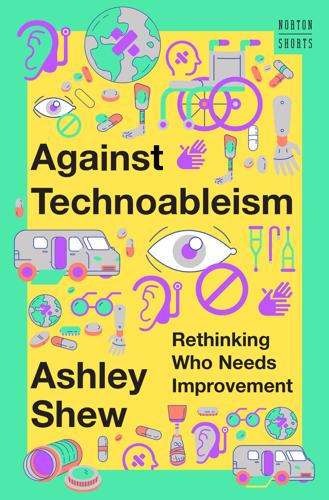
Against Technoableism: Rethinking Who Needs Improvement
by
Ashley Shew
Published 18 Sep 2023
My colleague Jim took over teaching my class—ironically, a class I had developed on the topic of cyborgs, which I was now becoming. 44Blogs, videos of recent performances, creative workshops, curricula, and more are available on the Sins Invalid website: https://www.sinsinvalid.org/. 45Audio and the full version of Marlena Chertock’s “On that one-way trip to Mars” are available on the Deaf Poets Society website: https://www.deafpoetssociety.com/marlena-chertock-issue-4/. 46A Decolonizing Mars participant list is here: https://decolonizingmars.com/attendees/. 47You must read Chanda Prescod-Weinstein’s The Disordered Cosmos: A Journey into Dark Matter, Spacetime, and Dreams Deferred (Bold Type Books, 2021). 48Sammus the Rapper also performed in the event that hosted the Autism Tech Panel from Chapter 6: Choices and Challenges—Technology & Disability: Conternarratives (November 2020), https://candc.sts.vt.edu. She was part of a session called the Cyborg Promenade with poet Travis Lau, and it was the best ever. 49People get ostomies for a variety of reasons—trauma, intestinal cancers, and diseases like Crohn’s where sections of intestines are damaged—and they aren’t all that uncommon, even though people don’t talk about them very much. 50And it flows both ways: some disabled people are better for space, and space is better for some disabled people.
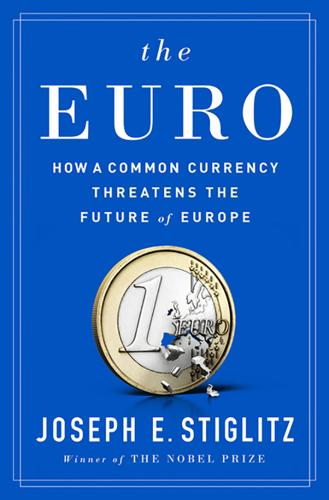
The Euro: How a Common Currency Threatens the Future of Europe
by
Joseph E. Stiglitz
and
Alex Hyde-White
Published 24 Oct 2016
We get less output for any level of inputs, taking account, for instance, of the smaller capital stock.23 We can estimate the predicted effect of the smaller capital and other observable inputs on productivity. The difference between this and the actually observed decline in productivity is the result of missing “dark matter.” Something hard to observe is missing. Even if we can’t precisely parse out the components of this dark matter, it’s real and needs to be taken into account. There are many components of this missing capital. In their twenties, individuals accumulate skills that increase their productivity over a lifetime. But those skills are gained largely through on-the-job training.
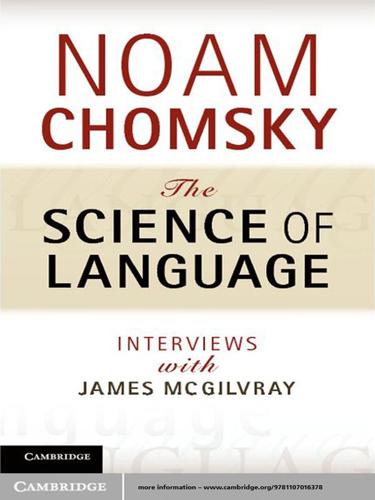
The Science of Language
by
Noam Chomsky
Published 24 Feb 2012
[C] Further, [in] talking about the capacity to do science [in our very recently practiced form, you have to keep in mind that] it's not just very recent, it's very limited. Physicists, for example, don't go commit suicide over the fact that they can't find maybe 90 percent of what they think the universe is composed of [dark matter and dark energy]. In . . . [a recent] issue of Science, they report the failure of the most sophisticated technology yet developed, which they hoped would find [some of] the particles they think constitute dark matter. That's, say, 90 percent of the universe that they failed to find; so we're still in the dark about 90 percent of the matter in the universe. Well, that's regarded as a scientific problem in physics, not as the end of the field.

The Controlled Demolition of the American Empire
by
Jeff Berwick
and
Charlie Robinson
Published 14 Apr 2020
It might sound like something out of a Netflix series or a science fiction novel, but there is a real push towards reducing the population of this amazing planet by a bunch of psychopathic men that have the capacity to actually make it happen when they want to. The long-term plan for depopulation is shrouded in mystery and dressed up to look like a man-made disaster caused by the people, but like most of the attempts by the New World Order to control the world, it is lies upon lies forced upon the people by the corrupted corporate media. The Dark Matter of Power Being in control offers the types of rewards that true psychopaths seek: real power, almost endless amounts of money, fame, and everything that comes with it, a feeling of importance, the ability to make life and death decisions, and the influence to cover them up. It is this ability to cover up and intentionally keep the “People They Serve” blind and in the dark, that gives them the ability to change laws and influence morals, safe in the knowledge that people are generally uncomfortable with revealing the rot – as long as they can pretend it is not there.
…
In politics, the supreme powers are also being influenced by something that the people cannot see, but know is there. It remains in the darkness, but the control that it has over the politician is easily determined by his uncharacteristic actions that expose the hidden hand of influence. In the never-ending vastness of political dark matter, one only really begins to understand what they are up against when they make the decision to illuminate the places intentionally kept in the dark. To put it another way: Spreading mold covers more ground when the pantry door is shut, the light is turned off, and no one is watching. Sunlight is the best solution to illuminate the problem – and also to disinfect it.
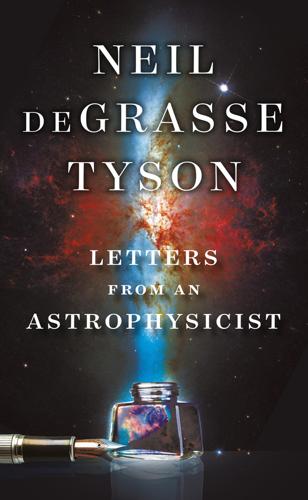
Letters From an Astrophysicist
by
Neil Degrasse Tyson
Published 7 Oct 2019
Tyson and any other kind brainiacs, My Aspergers son Jack* is scary smart and could very well be the next Einstein, which is his nickname. I’m trying to reach out to other super smart scientists who may be able to help Jack grow his gift. Jack’s vocabulary and obsessions consist of things like concept cars, nuclear fusion, biotech, particle accelerators, dark matter, anti-matter, worm holes, black holes, nanobots, creating cures for disease, and lots of hydrogen! I have no means of nourishing Jack’s brain. His spirit has been almost extinguished by his public school environment. I want so badly for Jack to have connections with other people. That can’t happen when the people surrounding him can’t relate or understand, or believe what he is talking about.
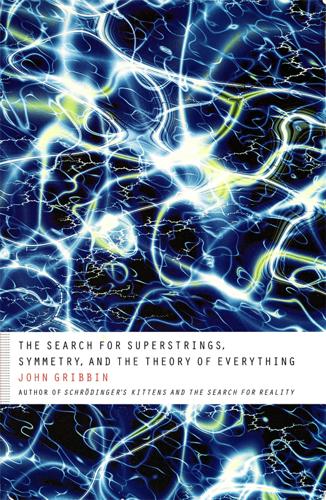
The Search for Superstrings, Symmetry, and the Theory of Everything
by
John Gribbin
Published 29 Nov 2009
A shadow planet could pass right through the Earth and never affect us, except through its gravitational pull. It sounds like science fiction, but one reason that the idea has been taken seriously is that there is astronomical and cosmological evidence that a lot of the Universe exists in the form of dark matter, detectable gravitationally but not seen. It is, though, at least as likely that in the shadow universe later symmetry breakings occurred differently from in our own world, so that there are no shadow stars, and so on, after all. All this is tangential to the story being told here (but see In Search of the Big Bang).
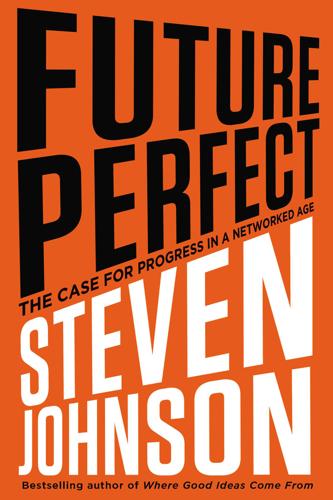
Future Perfect: The Case for Progress in a Networked Age
by
Steven Johnson
Published 14 Jul 2012
Prize-backed challenges are an acknowledgment that governments work better when they tap the intelligence of the wider population. The power of these challenges does not merely arise from the sheer number of people involved but also from the intellectual diversity of the population. NASA cosponsored a challenge to elicit algorithms that would help computers map the dark matter in the universe. They created a “live leaderboard” of entries, so that participants could learn from their competitors and refine their submissions over time. Leading algorithms were submitted by a Ph.D. student researching satellite photos of glaciers, a neuroscientist at Harvard Medical School, and a signature verification expert from Qatar University.
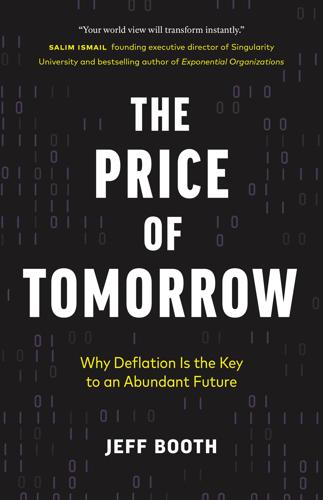
The Price of Tomorrow: Why Deflation Is the Key to an Abundant Future
by
Jeff Booth
Published 14 Jan 2020
Those teams spent more than $100 million, developed breakthroughs, and launched a new space race which we are seeing the benefits of today. Since that time, other crowdsourced competitions have been used to develop breakthroughs in everything from healthcare, to creating better algorithms to find dark matter, to cleaning our oceans. One of the key attributes of crowdsourcing is that it is open to participation; it allows ideas and contribution to come from anywhere and anyone. Those solutions are often far better than anything that could have been imagined by experts in a field. The internal debate to write this book was derived from the most important lesson in my life, which also came from my greatest tragedy—the sudden loss of my brother.
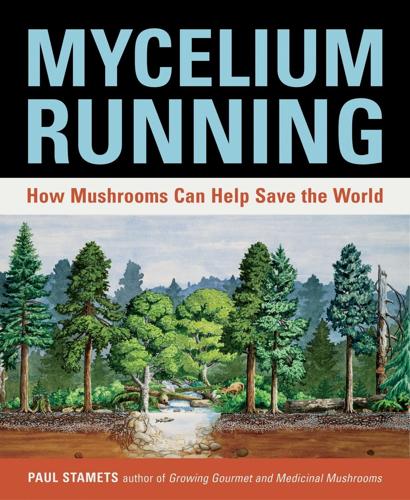
Mycelium Running: How Mushrooms Can Help Save the World
by
Paul Stamets
Published 14 Apr 2005
FIGURE 5 A slime mold, Physarum polycephalum, chooses the shortest route between 2 food sources in a maze, disregarding dead ends. In a controversial article, Toshuyiki Nakagaki proposes that this represents a form of cellular intelligence. FIGURE 6 Computer model of the early universe. These primeval filaments in space resemble the mycelial archetype. FIGURE 7 Computer model of dark matter in universe. In a conjunct of string theory, more than 96 percent of the mass of the universe is theorized to be composed of these molecular threads. Note the galaxies interspersed throughout the myceliumlike matrix. The idea that a cellular organism can demonstrate intelligence might seem radical if not for work by researchers like Toshuyiki Nakagaki (2000).
…
FIGURE 10 Hurricane Isabella approaches North America in October 2003. FIGURE 11 Spiral galaxies conform to the same archetypal pattern as hurricanes and mycelium. The Mycelial Archetype Nature tends to build upon its successes. The mycelial archetype can be seen throughout the universe: in the patterns of hurricanes, dark matter, and the Internet. The similarity in form to mycelium may not be merely a coincidence. Biological systems are influenced by the laws of physics, and it may be that mycelium exploits the natural momentum of matter, just like salmon take advantage of the tides. The architecture of mycelium resembles patterns predicted in string theory, and astrophysicists theorize that the most energy-conserving forms in the universe will be organized as threads of matterenergy.
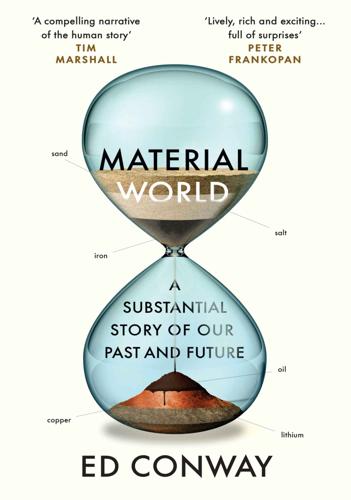
Material World: A Substantial Story of Our Past and Future
by
Ed Conway
Published 15 Jun 2023
For there in some of Boulby’s older mined-out tunnels is a series of laboratories where scientists from all over the globe come to work on experiments that can only be carried out in this environment. For instance: if life can survive in salts so deep inside this planet, might we find the same thing far under the surface of Mars? In salt we may find our first clues of alien life. Another of the labs was carrying out experiments to detect dark matter – experiments that would be disrupted by radiation and cosmic rays at surface level. ‘Dark matter,’ said Steve, his eyes taking on a faraway look. ‘Now that’s something else … Still, they haven’t found it yet.’ We had followed the tunnels towards the working face of the mine, getting deeper and hotter as we went. Low pipes hung from the ceiling alongside phone lines, power cables and seismic sensors designed to detect even the slightest movement in the earth, sensitive enough to feel an earthquake on the other side of the world.

Hope Dies Last: Visionary People Across the World, Fighting to Find Us a Future
by
Alan Weisman
Published 21 Apr 2025
But fusion’s like a candle in the wind: one breath of air into the chamber shuts the whole thing down.” Like Dennis Whyte, Mumgaard—a coauthor of SPARC’s predecessor Vulcan design—grew up on the prairie. At the University of Nebraska, he studied how to engineer faster hard drives, but solid-state firmware ended that, so he looked for something else. High-energy particle colliders, dark-matter telescopes—so many neat things to do, but he settled on fusion. In 2008, he wasn’t looking to change the world. “I wanted something cool to talk about at parties.” For his master’s degree, he designed a way to take measurements inside fusion reactors that is now used worldwide, including by one of CFS’s rivals, Korea’s KSTAR.
…
At a gathering for locals, Brandon Sorbom was explaining how they’d started, scribbling on napkins at an Austin barbecue joint, when he looked up at the half-completed buildings rising over the 47-acre construction site and it struck him. “It’s definitely going to happen,” he told them. Skip Notes *1 That is, known matter. There appears to be six times more “dark matter” than all phases of visible matter together. Because we can’t detect it, we know little about it—we assume its existence to explain why planets, stars, and galaxies behave as they do. *2 And so can you: https://fusor.net. *3 As in most tokamaks, a cross section of SPARC’s doughnut-shaped plasma chamber will be D-shaped, not round, to concentrate peak intensity at the D’s corners, permitting optimal control over plasma’s variable electromagnetic field
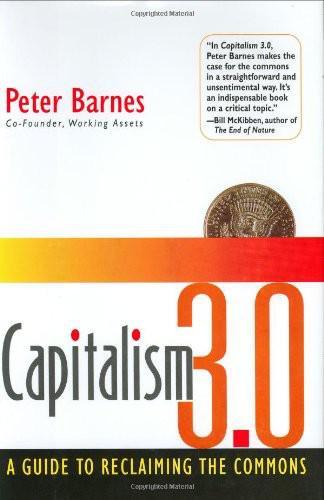
Capitalism 3.0: A Guide to Reclaiming the Commons
by
Peter Barnes
Published 29 Sep 2006
But there’s another trove of wealth that’s not so well-known: our common wealth. Each of us is the joint recipient of a vast inheritance. This shared inheritance includes air and water, habitats and ecosystems, languages and cultures, science and technologies, social and political systems, and quite a bit more. Common wealth is like the dark matter of the economic universe—it’s everywhere, but we don’t see it. One reason we don’t see it is that much of it is, literally, invisible. Who can spot the air, an Reinventing the Commons | 67 aquifer, or the social trust that underlies financial markets? The more relevant reason is our own blindness: the only economic matter we notice is the kind that glistens with dollar signs.

The Internet Is Not What You Think It Is: A History, a Philosophy, a Warning
by
Justin E. H. Smith
Published 22 Mar 2022
Working in a vein largely uninformed by historical examples prior to the most recent era of technology, Schneider speculates, citing Caleb Scharf as inspiration, that a machine superintelligence invented by an alien species could by now have “blend[ed] in with natural features of the universe, perhaps it is in dark matter itself.”9 Of course, few ideas have a more ancient pedigree than the belief that the celestial bodies are intelligent, and indeed vastly superior to us: Schneider is refurbishing this old trope that we could just as easily have come across in Aristotle, while ornamenting it with the latest findings in physical cosmology.

And Finally
by
Henry Marsh
If thought and feeling are created by our brains, they are part of the physical world, and our brains must be subject to the laws of physics. But physics has nothing to say about consciousness and is therefore incomplete. There is a similar incompleteness, he argues, with theoretical physics which has failed, as yet, to combine quantum mechanics and general relativity, and cosmologists struggle with dark matter and dark energy – dark because we do not understand them. There could be, in other words, a deeper level of explanation of physical phenomena which we currently do not understand, and perhaps never will. As the evolutionary biologist J. B. S. Haldane observed, it’s not just that the universe might be stranger than we think, but that it might be stranger than we can think.
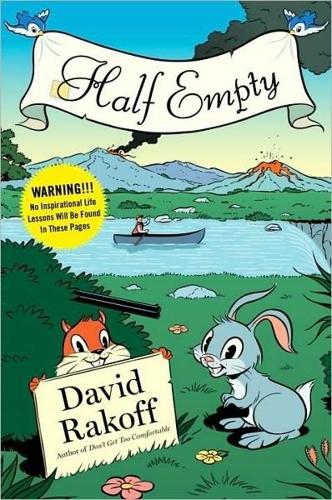
Half Empty
by
David Rakoff
Published 20 Sep 2010
(A hint: it rhymes with schmucking sneaker factory.) That can be a cold and lonely reality with which to contend, and one to which every one of us, even the most vinegar-soaked pessimist, is naturally resistant. We all spend our lives rejecting this truth and, consciously or not, entreating the universe—with its vast stretches of deep space, dark matter, and uncharted, immeasurable distances—to somehow align itself in sheer admiration of our fervor and gumption, to rain down precisely that which it is we wish for. And the universe will say nothing. Even the most charmed life is a veritable travelogue of disappointment. There will always be an inevitable gulf between hope and reality.
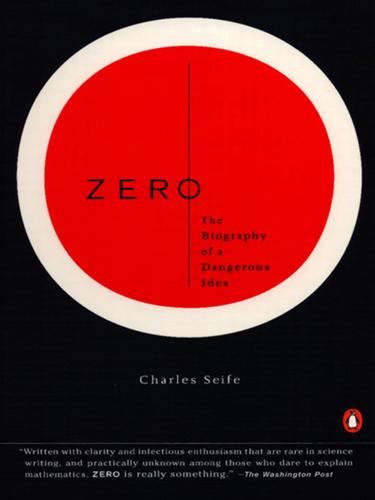
Zero: The Biography of a Dangerous Idea
by
Charles Seife
Published 31 Aug 2000
They did, however, allow for several other fates, which depend on the amount of mass in the cosmos. In the case of a light universe, the balloon of space-time could expand forever, getting bigger and bigger. The stars and galaxies would wink out, one by one. The universe grows cold and dies a heat death. However, if there is enough mass—galaxies, galaxy clusters, and unseen dark matter—the initial push given by the big bang wouldn’t be enough to allow the balloon to inflate forever. The galaxies would tug on one another, eventually pulling the fabric of space-time together; the balloon would begin to deflate. The deflation would get faster and faster, the universe would get hotter and hotter, and it would eventually end in a backward big bang: the big crunch.
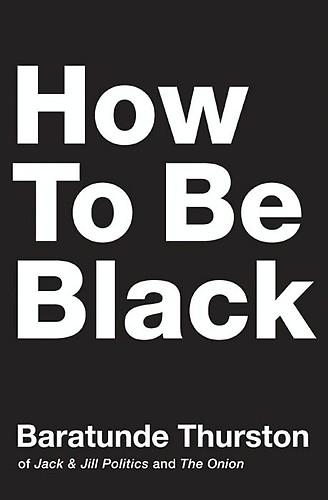
How to Be Black
by
Baratunde Thurston
Published 31 Jan 2012
That name was just a bit too soft for a black kid from the city. Speaking of soft, my initial interest in the school was based entirely on the crush I had on a girl from my church, never a good reason to make a six-year commitment. Strike Two: building design. The school had no hallways. I don’t mean that the inside of the building consisted of dark matter or “The Nothing” from The Neverending Story. I mean the classrooms all had doors to the outside, and kids walked outdoors to get from one class to the next. I later learned that this is a common design in warm places like Southern California and Hawaii, but Green Acres was in Bethesda, Maryland, whose climate offers three full months a year with average low temperatures at or below freezing.

50 Future Ideas You Really Need to Know
by
Richard Watson
Published 5 Nov 2013
the condensed idea Beware terrorists with nuclear materials timeline 1995 Terrorists attempt to detonate dirty bomb in Moscow 2010 Stuxnet virus attacks nuclear facilities in Iran 2018 Man arrested after attempting to sell radioactive materials on eBay 2022 Al-Qaeda attempts to detonate dirty devices on three subway systems 2030 Tactical nuclear weapons used in Georgia 2060 25 percent of nations found to have secret nuclear programs 2080 Nuclear development abandoned in favor of dark-matter weapons 44 Volcanoes & quakes In 1815, a volcano known as Tambora erupted on an island called Sumbawa in Indonesia. The eruption was the most powerful ever recorded. It has been linked, by some people, to what became known as “The Year Without Summer,” where unusually low temperatures and ash clouds led to crop failures, severe food shortages and riots.

The Rise and Fall of Nations: Forces of Change in the Post-Crisis World
by
Ruchir Sharma
Published 5 Jun 2016
Chapter 8: Cheap Is Good 1 Ed Lowther, “A Short History of the Pound,” BBC News, February 14, 2014. 2 Caroline Freund, “Current Account Adjustment in Industrialized Countries,” International Finance Discussion Papers (U.S. Federal Reserve, 2000). 3 Rudi Dornbusch, interview by Frontline, PBS, 1995. 4 Paul Davidson, “IMF Chief Says Global Growth Still Too Weak,” USA Today, April 2, 2014 5 Oliver Harvey and Robin Winkler, “Dark Matter: Hidden Capital Flows That Drive G10 Exchange Rates,” Deutsche Bank Markets Research Report, March 6, 2015. 6 “EM Macro Daily: China Capital Outflow Risk—The Curious Case of the Missing $300 Billions,” Goldman Sachs Global Investment Research, January 13, 2015. 7 Muhamad Chatib Basri and Hal Hill, “Ideas, Interests, and Oil Prices: The Political Economy of Trade Reform During Soeharto’s Indonesia,” World Economy 27, no. 5 (2004): 633–55.
…
: Capital Flows, Banks, and the Beatles.” Bank of England, 2014. Freund, Caroline. “Current Account Adjustment in Industrialized Countries.” International Finance Discussion Papers, 2000. “Global Macro Jottings: Financial Deglobalization.” VTB Capital, November 20, 2014. Harvey, Oliver, and Robin Winkler. “Dark Matter: The Hidden Capital Flows That Drive G10 Exchange Rates.” Deutsche Bank Markets Research, March 6, 2015). Hyman, Ed. “Bond Yields Up But S&P Advances.” Evercore ISI, February 18, 2015. “Is That a Kleptocrat in Your Balance of Payments?” Financial Times Alphaville, March 10, 2015. Kaminsky, Graciela, Saul Lizondo, and Carmen Reinhart.
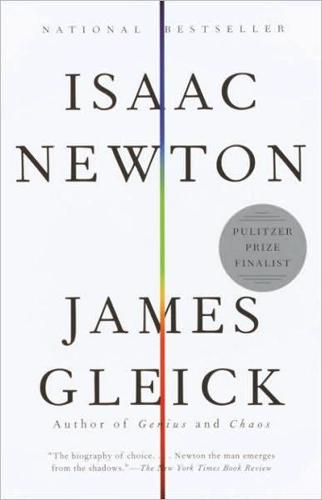
Isaac Newton
by
James Gleick
Published 1 Jan 2003
he wrote in one of many new drafts that did not see light.16 An active, interventionist God must organize the universe and the solar system: otherwise substance would be evenly diffused through infinite space or gathered together in one great mass. Surely God’s hand could be seen in the division between dark matter, like the planets, and shining matter, like the sun. All this “I do not think explicable by mere natural causes but am forced to ascribe it to the counsel & contrivance of a voluntary Agent.”17 He returned to his alchemical experiments, too. Whether or not Newton was like other men, by the summer of 1693 he was eating and sleeping poorly.

On Nature and Language
by
Noam Chomsky
Published 16 Apr 2007
And so, it often makes good sense to disregard phenomena and search for principles that really seem to give some deep insight into why some of them are that way, recognizing that there are others that you can’t pay attention to. Physicists, for example, even today can’t explain in detail how water flows out of the faucet, or the structure of helium, or other things that seem too complicated. Physics is in a situation in which something like 90 percent of the matter in the Universe is what is called dark matter – it’s called dark because they don’t know what it is, they can’t find it, but it has to be there or the physical laws don’t work. So people happily go on with the assumption that we’re somehow missing 90 percent of the matter in the Universe. That’s by now considered normal, but in Galileo’s 99 On nature and language time it was considered outrageous.
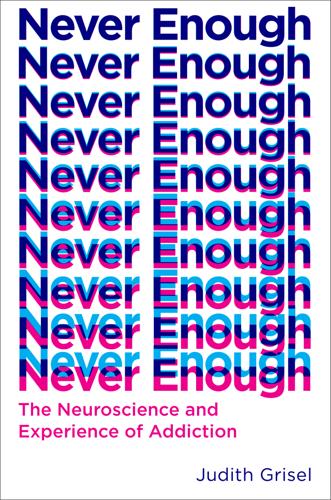
Never Enough: The Neuroscience and Experience of Addiction
by
Judith Grisel
Published 15 Feb 2019
Still, it is important to remember that in comparison to astronomy or physics the field of neuroscience is a neonate. About a hundred years ago, the field of astrophysics knew much more than it does today. How can this be? At the time, scientists were quite certain they knew the size and structure of the universe. Of course, this was before they had the foggiest notion about quantum mechanics, string theory, dark matter, or other paradigm shifts stemming from empirical research. In fact, astrophysics today barely resembles the field as it was in the early twentieth century. Space physicists these days are much more aware of what they don’t understand than they were then. We could characterize the change as a reduction in certainty and a rise in humility.
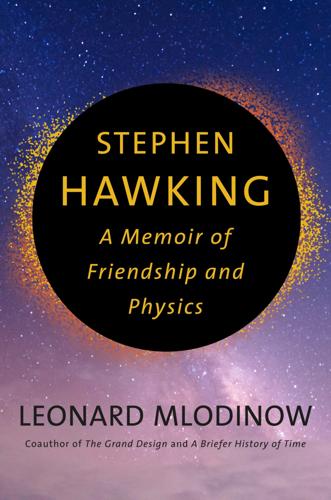
Stephen Hawking
by
Leonard Mlodinow
Published 8 Sep 2020
But Stephen asked me to come home with him. There was still an hour or two before dinner, he said. He wanted to keep working. *1 Assuming that the discrepancy is not due to experimental error or a shortcoming of the approximation method employed to derive the prediction. *2 Dark energy and dark matter represent two unexplained anomalies in today’s physics. Will these eventually be explained within our current framework of theories, or by amending them, or will they require a completely new approach? No one knows. 3 Stephen lived in a house on shady Wordsworth Grove, a quiet street just a short walk outside the old city and close to his office.
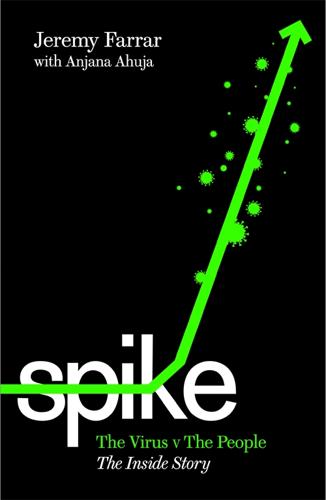
Spike: The Virus vs The People - The Inside Story
by
Jeremy Farrar
and
Anjana Ahuja
Published 15 Jan 2021
The antibody data showed nothing of the sort; only 6 per cent of the UK population had been infected by September 2020, nine months into the epidemic. At that point, the Declaration believers explained away the discrepancy between their theory and the antibody data by suggesting people were protected by ‘immunological dark matter’. It was an evidence-free assertion, as was the insistence by the Great Barringon supporters that there would be no second wave. Dominic Cummings claims he had wanted to run an aggressive press campaign against those behind the Great Barrington Declaration and to others opposed to blanket Covid-19 restrictions, such as Carl Heneghan (an Oxford University professor and GP), the oncologist Karol Sikora and Mail on Sunday columnist Peter Hitchens.

Carbon: The Book of Life
by
Paul Hawken
Published 17 Mar 2025
Chilean mycologist Giuliana Furci’s research shows that fungi on the bark of a 400-year-old tree are not the same as those on a 390-year-old tree. According to mycologists at the Royal Botanic Gardens at Kew, less than 10 percent of fungi species are known to science, leaving 2.2 to 3.8 million more species to be identified, approximately 30 percent of species on Earth. Kiers is mapping what has been called the “dark matter” of life on the planet. A recent peer-reviewed study by Kiers and colleagues estimates that plants direct the equivalent of 13.2 billion tons of carbon dioxide annually into mycorrhizal mycelia. This is a conservative estimate, not far from the combined annual carbon emissions of China and the United States, the world’s two largest emitters.
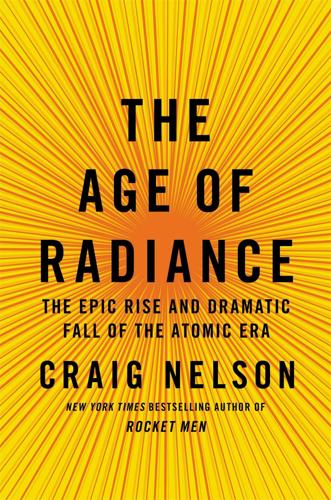
The Age of Radiance: The Epic Rise and Dramatic Fall of the Atomic Era
by
Craig Nelson
Published 25 Mar 2014
Four other US nuclear reactors are named for Enrico, as is element number 100, fermium. NASA’s Fermi Gamma-ray Space Telescope has revealed a previously unknown fifty-thousand-light-year remnant of a black hole eruption at the very center of the Milky Way. Cosmologist Dan Hooper: “We’ve considered every astronomical source, and nothing we know of, except dark matter, can account for the observations. No other explanation comes anywhere close.” In its obituary, the New York Times said, “More than any other man of his time, Enrico Fermi could properly be named ‘the father of the atomic bomb.’ It was his epoch-making experiments at the University of Rome in 1934 that led directly to the discovery of uranium fission, the basic principle underlying the atomic bomb as well as the atomic power plant.
…
“The Röntgen Rays in America. McClure’s, April 1896. Monbiot, George. “Evidence Meltdown.” Guardian, April 5, 2011. Moran, Michael. “The Reckoning: The Future of American Power.” Slate, November 7–23, 2011. Morris, Errol, director. The Fog of War. Sony Pictures Classics, 2003. Mosher, Dave. “Signs of Destroyed Dark Matter Found in Milky Way’s Core.” Wired, October 26, 2010. Mueller, John. Atomic Obsession: Nuclear Alarmism from Hiroshima to Al-Qaeda. New York: Oxford University Press, 2010. Myhrvold, Nathan. “After Fukushima: Now, More Than Ever.” New York Times, December 2, 2011. Nash, Philip. The Other Missiles of October: Eisenhower, Kennedy, and the Jupiters, 1957–1963.
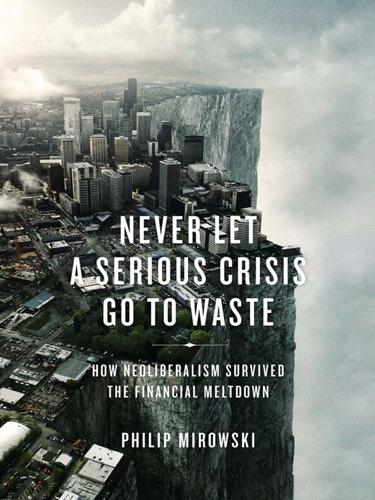
Never Let a Serious Crisis Go to Waste: How Neoliberalism Survived the Financial Meltdown
by
Philip Mirowski
Published 24 Jun 2013
Of course, sometimes the natural sciences themselves encountered something commensurable to a crisis in their own fields of endeavor—think of dark matter and dark energy, or the breakdown of causality in the 1920s—but they didn’t respond by evasive maneuvers and suppressing its consideration, as did the economists. In retrospect, appeals to science will be seen to have proven a bit of a red herring in coming to terms with the current crisis. Physical complexity theory or neuromysticism or dark matter won’t save us now. In the heat of battle, economists purported to be defending “science’”when, in fact, they were only defending themselves and their minions.
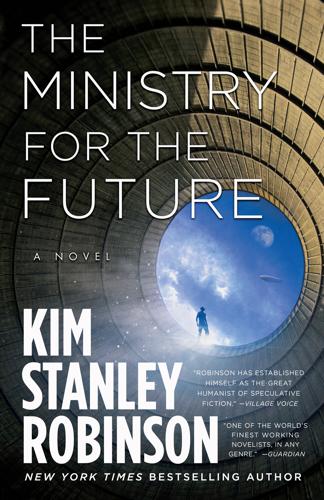
The Ministry for the Future: A Novel
by
Kim Stanley Robinson
Published 5 Oct 2020
We don’t know about dark matter, which should be called invisible matter, we don’t know them or what’s going on there. Presumably its individual constituent elements are something like me, but maybe not; no one knows. All that stuff flies around as if in a parallel universe slightly overlapping ours, maybe just waves, in any case gravity works on it for sure, because its very existence has been revealed to us by its gravitation effects. If we are similar to those dark-matterinos, it is in the way that light and dark are similar. Two parts of a whole, perhaps. I am visible, I embody light itself; dark matter is not actually dark, it is invisible, and we don’t know how or what it is.

The City Always Wins: A Novel
by
Omar Robert Hamilton
Published 12 Jun 2017
Is he in the cells with you or on his own somewhere? Let us know about any specific books you’d like or if you have any new ideas—or new material—for podcasts. We will try to get Chaos back in action properly again now. See you soon man K * * * There is a black hole in the center of our lives. A silence, an unsaid lurking, a word, a place, dark matter slowly pulling all else into its nothingness. A thousand deaths live on television. And none of them us. And who are we, if not the ones fighting, not the ones dying? Should we have been ready to die for our enemies? Did we do this? * * * Black open-backed jeeps with men in SWAT gear drive around the streets.

Choose Yourself!
by
James Altucher
Published 14 Sep 2013
When you’re an Idea Machine, everything you look at breaks down into a collection of ideas, just as physical objects would ultimately breakdown into collections of particles if your eyes were subatomic microscopes. Your eyes and brains become sub-idea microscopes that see the ideas that become the building blocks for everything in society. See them, build them, change them, seed them, birth them, love them, and live them. Ideas are the dark matter of the universe. We know it’s there, but only those “in the know” can see them. * * * What Do I Do Once I Become an Idea Machine? This is what I don’t know the answer to because you are the master of your life. Now you’re ready to take your unique place in the world. Now you have superpowers.

Makers
by
Chris Anderson
Published 1 Oct 2012
The barriers against entry to entrepreneurship in physical goods are dropping like a stone. “Markets of ten thousand” defines the successful niche strategy for products and services delivered online. That number is large enough to build a business on, but small enough to remain focused and avoid huge competition. It is the missing space in the mass-production industry, the dark matter in the marketplace—the Long Tail of stuff. It is also the opportunity for smaller, nimbler companies that have emerged from the very markets they serve, enabled by the new tools of democratized manufacturing to route around the old retail and production barriers. Even better, some of those companies that start with niche markets may graduate to huge ones.

Animals
by
Emma Jane Unsworth
Published 2 May 2014
Quite a blinder from the great beyond, I think you’ll agree. A fine example of blistering cosmic humour – and one I didn’t truly appreciate until I first started sending out submissions and received several rejections referring to the discrepancy between my own writing and that of my streamy namesake. Want to know what the mysterious ‘dark matter’ they’re searching for actually is? It’s Irony – billions of tons of the stuff, lurking, ready to go. The Universe is not indifferent; the Universe is amused. To get out of my bedroom I had to slide a clothes rail out of the way of the door. It was tricky getting back in again. In addition to the clothes rail and a small desk I had a single bed, which was why I often ended up in bed with Tyler.
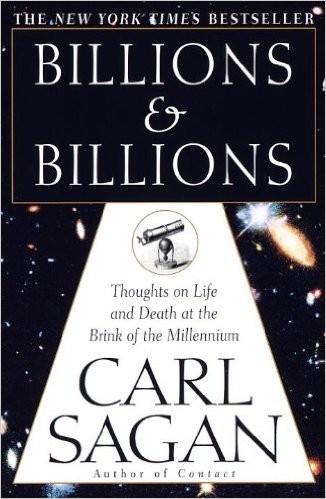
Billions & Billions: Thoughts on Life and Death at the Brink of the Millennium
by
Carl Sagan
Published 11 May 1998
And so it is with the Universe: If it contains a great deal of matter, the gravity exercised by all this matter will slow down and stop the expansion. An expanding Universe"will be converted into a collapsing Universe. And if there is not enough matter, the expansion will continue forever. The present inventory of matter in the Universe is insufficient to slow the expansion, but there are reasons to think that there may be a great deal of dark matter that does not betray its existence by giving off light for the convenience of astronomers. If the expanding Universe turns out to be only temporary, ultimately to be replaced by a contracting Universe, this would certainly raise the possibility that the Universe goes through an infinite number of expansions and contractions and is infinitely old.
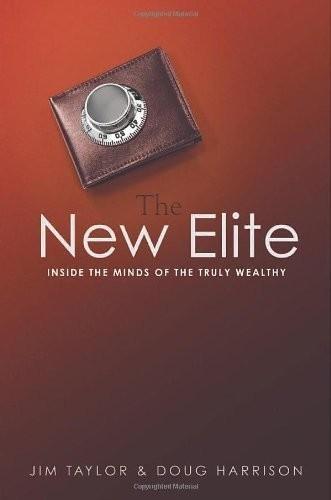
The New Elite: Inside the Minds of the Truly Wealthy
by
Dr. Jim Taylor
Published 9 Sep 2008
In reporting on the wealthy, media members are often guilty of what those in the philosophy of science call the drunkard’s search—the tendency of people to study phenomena that are easy to see and report on instances that are easy to locate (e.g., someone who has had too much to drink searching for his lost keys under a lamppost, where the light is good, rather than where the person is most likely to have lost the keys). Astronomers, for example, tend to study bright shiny objects such as stars and supernovas because they are easy to see, as opposed to the dark matter or dark energy that many believe actually constitutes over 95 percent of the universe. Living large is, by definition, an easier phenomenon to uncover than steal wealth. Media reports shape thinking in part through the 60 The New Elite vividness effect: the tendency of graphic or dramatic depictions of an event to lead people to overestimate how common that event is.

But What if We're Wrong? Thinking About the Present as if It Were the Past
by
Chuck Klosterman
Published 6 Jun 2016
Even on points of conflict, they generally force themselves into alignment: When I told Tyson that Greene was open to the possibility that our understanding of gravity might drastically change, Tyson implied that I may have phrased the question incorrectly. “He’s pointing forward to a time when our understanding of gravity includes our understanding of dark matter,” said Tyson. “That there will be some other understanding of gravity, but it will still enclose Newton’s laws of gravity and Einstein’s general relativity. So he may have presumed your question meant, ‘Is there anything left to be discovered about gravity?’ And that question is not clear to someone who researches gravity.”

12 Bytes: How We Got Here. Where We Might Go Next
by
Jeanette Winterson
Published 15 Mar 2021
Yaldabaoth plunged his clumsy hands into the pile of poop, and formed a world out of this sweating, semi-alive playdough. Then he made some people. Then he decided he was God. In some texts he is called Jehovah. It’s a Trump-style story from the beginning of time. As part of a pair, Sophia isn’t alone with her mess. Her counterpart, Christos, comes to pull her out of the bog of dark matter she has created. When they discover that this steaming, sweaty, material world is still infused with a glimmer of divine light, Christos agrees to impart the necessary knowledge (gnosis) whereby humankind can be informed, Matrix-like, of their true origins and true home. Humans, therefore, are not sinful.
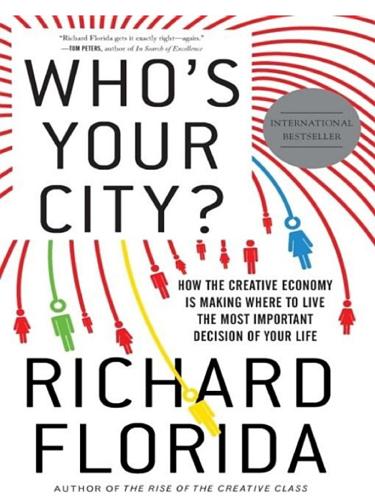
Who's Your City?: How the Creative Economy Is Making Where to Live the Most Important Decision of Your Life
by
Richard Florida
Published 28 Jun 2009
The answer, according to Ethan Watters, is a new surrogate family, the urban tribe.10 Watters defines it as an “intricate community of young people who live and work together in various combinations, form regular rituals, and provide the same kind of support as an extended family.” “If our tribes were maximizing our weak ties within a city,” Watters writes, “might we be creating the social science equivalent of dark matter—a force that was invisible but was nonetheless critical to holding everything together?” Furthermore, Watters argues, the urban tribe is especially good at meeting members’ needs for self-expression and self-actualization in ways that actual parents and siblings sometimes suppress. But these tribes are not just substitutes; on the contrary, they constitute what amounts to our real families, in ways the networks we were born into may never be.

To Be a Machine: Adventures Among Cyborgs, Utopians, Hackers, and the Futurists Solving the Modest Problem of Death
by
Mark O'Connell
Published 28 Feb 2017
They’ll tell you they’re trapped in the wrong body. But me, I’m trapped in the wrong body because I’m trapped in a body. All bodies are the wrong body.” We were, I felt, nearing the central paradox of transhumanism, the event horizon where Enlightenment rationalism, pushed to its most radical extremes, disappeared into the dark matter of faith. As unfair a double bind as it may have been, the more Tim denied any connection between his own thinking and the mysteries of religion, the more religious he sounded. But perhaps it wasn’t so much that transhumanism was a quasi-religious movement, as that it addressed itself toward the fundamental human contradictions and frustrations that had traditionally been the preserve of faith.

The New Nomads: How the Migration Revolution Is Making the World a Better Place
by
Felix Marquardt
Published 7 Jul 2021
When I look back at where I come from as an alcoholic and addict – at the pain caused, the damage and the wreckage of my past – and I look at the miracle of my life in recovery, I see this ever-present potential for connection as one of the greatest privileges and indeed one of the most beautiful things in my life. Not everyone is an addict. But everyone is something. And you only need one thing to form a community with others. Whether you are into video games or football, Japanese aquarelles or Chilean wine, Vipassana meditation or opera, hip-hop or tango, Scrabble or chess, dark matter or dinosaurs (or both), there is something about you that can spark a network. The point is, you don’t need an existing network to get started. All you need in this day and age is a passion – or a problem, in my case – or even just an interest in something, anything, to initiate contact with people who down the line might provide a base for you to get started – wherever it is you hope to go.

Scarred: The True Story of How I Escaped NXIVM, the Cult That Bound My Life
by
Sarah Edmondson
Published 16 Sep 2019
He had a boyish way of nervously biting his lip just before offering answers as he expounded on topics ranging from creativity to productivity to ethics to science. The thing was, I couldn’t follow what the hell he was saying in either of the forums that happened during this first V-Week. I might glean a couple nuggets of wisdom, but mostly I was lost. When Mark asked him a question about quantum physics and dark matter, Keith’s answer somehow shifted into how science has no free will. A question about the development of thought was met with an answer about something entirely unrelated. The senior levels asserted that Keith’s genius was a template to help anyone with their goals, regardless of the content, whether an individual had enrolled to get better at hockey, horse jumping, making more money, or whatever.
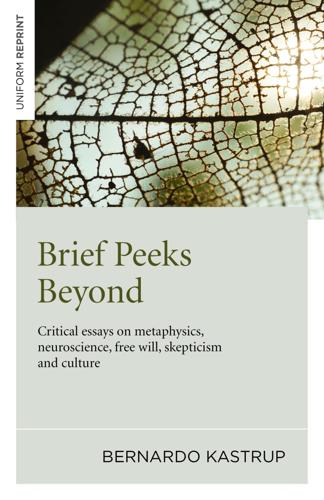
Brief Peeks Beyond: Critical Essays on Metaphysics, Neuroscience, Free Will, Skepticism and Culture
by
Bernardo Kastrup
Published 28 May 2015
Bernardo isn’t fortunate by the standards of mass media, which breathlessly announces the discovery of the Higgs boson but remains silent about metaphysics. But he’s very fortunate to discover many cutting-edge topics that push the envelope of both science and philosophy. To be frank, unless a philosopher can satisfy the demands of science, meeting it halfway about the brain, the nature of time, the existence of multiple universes, dark matter and energy, etc., the whole enterprise will just be zombie philosophy. It will move around as if alive but actually be dead. Fortunately, this is a fruitful time for ‘peeking beyond,’ because the accepted worldview of science, locked in its materialistic assumptions, has failed to show where time and space came from, what consciousness is, how deterministic laws of nature can be reconciled with free will, whether the brain can think or only parallels the mind’s invisible processes, and a host of related questions.

My Shit Life So Far
by
Frankie Boyle
Published 30 Sep 2009
I seriously think that teenagers are now the only people who can handle the police drinking culture. I’ve always had a real problem with secondary education. It seems to exist to teach conformity and obedience over anything else. For me, it’s all in the bell. The bell goes and you move along to the next class. It doesn’t matter what you’re learning about, it could be Hamlet or dark matter. That bell goes and you trot along because nothing is more important than the system. My course qualified me to teach English and was full of the sort of boring, conformist bastards that made Hitler’s rise to power so easy. I thought this was terrible at first, then once I’d been in some staffrooms I realised that these tedious flesh puppets were going to fit in perfectly.

On Paradise Drive: How We Live Now (And Always Have) in the Future Tense
by
David Brooks
Published 2 Jun 2004
Life is different in ways large and small. When the New Jersey Devils won the Stanley Cup championship, they had their victory parade in a parking lot, because no downtown street was home to all the people who love the team. Virginia Tech demographer Robert Lang compares this new exurban form to the dark matter in the universe: stuff that is very hard to see or define but somehow accounts for more mass than all the planets, stars, and moons put together. Making Sense of Our Reality When it comes to suburbia, our imaginations are motionless. Many of us still live with the suburban stereotypes established by the first wave of critics.
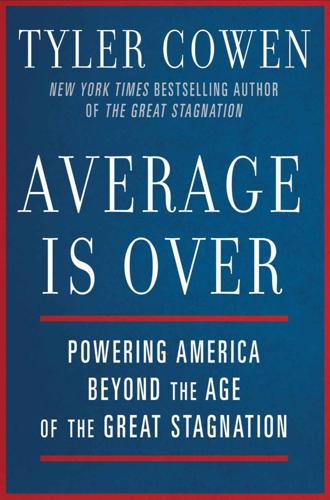
Average Is Over: Powering America Beyond the Age of the Great Stagnation
by
Tyler Cowen
Published 11 Sep 2013
String theory is known to contain configurations that describe all the observed fundamental forces and matter but with a zero cosmological constant and some new fields. Other configurations have different values of the cosmological constant, and are metastable but long-lived. This leads many to believe that there is at least one metastable solution that is quantitatively identical with the standard model, with a small cosmological constant, containing dark matter and a plausible mechanism for cosmic inflation. It is not yet known whether string theory has such a solution, nor how much freedom the theory allows to choose the details. That was the easy part. Now: String theories also include objects other than strings, called branes. The word brane, derived from “membrane,” refers to a variety of interrelated objects, such as D-branes, black p-branes, and Neveu–Schwarz 5-branes.
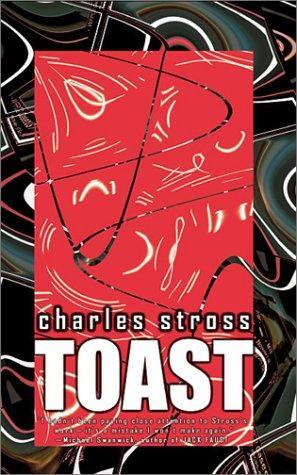
Toast
by
Stross, Charles
Published 1 Jan 2002
You're still locked into a pre-singularity economic model that thinks in terms of scarcity. Resource allocation isn't a problem any more -- it's going to be over within a decade. The cosmos is flat in all directions, and we can borrow as much bandwidth as we need from the first universal bank of entropy! They even found the dark matter -- MACHOs, big brown dwarves in the galactic halo, leaking radiation in the long infrared -- suspiciously high entropy leakage. The latest figures say something like 70% of the mass of the M31 galaxy was sapient, two point nine million years ago when the infrared we're seeing now set out. The intelligence gap between us and the aliens is a probably about a trillion times bigger than the gap between us and a nematode worm.

Twilight of the Elites: America After Meritocracy
by
Chris Hayes
Published 11 Jun 2012
In an extensive investigation into what they called “Top Secret America,” the Washington Post’s Dana Priest and William Arkin found a secret national security state so large and sprawling that almost no one could actually account for what its individual component parts did. It is the alternating waves of secrecy and disclosure that characterize our present epistemic crisis in realms far beyond just national security. We may have more financial data at our fingertips than ever before, but during the last several decades, the hidden universe of financial dark matter has dramatically expanded. The private equity industry, which takes companies private, outside the view of the SEC and public filings, more than tripled in size between 2001 and 2007. Between 2004 and 2007, the market for over-the-counter derivatives grew 74 percent. These derivatives, usually highly specialized, are traded one-to-one, away from the prying eyes of an organized exchange.
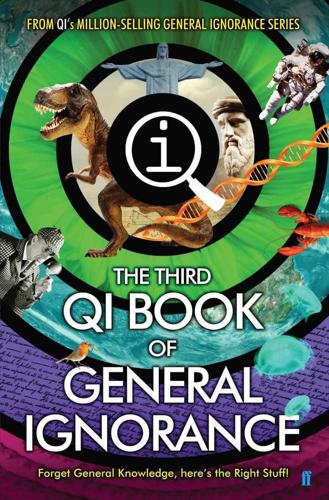
QI: The Third Book of General Ignorance (Qi: Book of General Ignorance)
by
John Lloyd
and
John Mitchinson
Published 28 Sep 2015
STEPHEN Which animal has the most genes? ALAN Jeremy Clarkson. What is junk DNA good for? Quite a lot, actually. Only 2 per cent of our DNA is actively involved in overseeing the production of the proteins which make new cells. The remaining 98 per cent was once thought to be useless, random, genetic soup – the dark matter of the human genome, dubbed ‘junk DNA’ by Japanese-American geneticist Susumu Ohno in 1972. Nowadays it’s called ‘non-coding’ DNA: it doesn’t tell the body how to make proteins, but it does decide how much gets made and which bits should be turned on and off. For example, non-coding DNA tells the cells in the liver they should produce liver enzymes, and hair cells that they should make the protein keratin, from which hair is made.

Exponential Organizations: Why New Organizations Are Ten Times Better, Faster, and Cheaper Than Yours (And What to Do About It)
by
Salim Ismail
and
Yuri van Geest
Published 17 Oct 2014
Competing for the Future. Harvard Business Review Press. Hamel, G., & Breen, B. (2007). The Future of Management. Harvard Business Review Press. Hamel, G. (2012). What Matters Now: How to Win in a World of Relentless Change, Ferocious Competition, and Unstoppable Innovation. Jossey-Bass. Hill, D. (2012). Dark Matter and Trojan Horses: A Strategic Design Vocabulary. Strelka Press. Hinssen, P. (2004). The New Normal: Great Opportunities in a Time of Great Risk. Portfolio Hardcover. Hoffman, R., & Casnocha, B. (2012). The Start-up of You: Adapt to the Future, Invest in Yourself, and Transform Your Career. Crown Business.
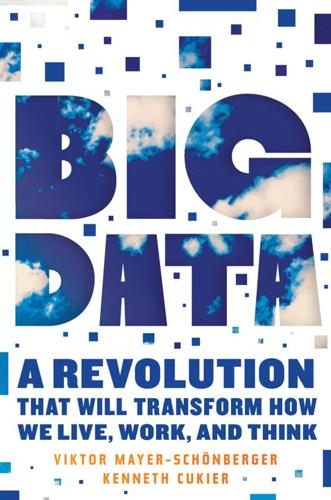
Big Data: A Revolution That Will Transform How We Live, Work, and Think
by
Viktor Mayer-Schonberger
and
Kenneth Cukier
Published 5 Mar 2013
This has sparked a new academic discipline called “Culturomics”: computational lexicology that tries to understand human behavior and cultural trends through the quantitative analysis of texts. In one study, researchers at Harvard poured through millions of books (which equated to more than 500 billion words) to reveal that fewer than half the number of English words that appear in books are included in dictionaries. Rather, they wrote, the cornucopia of words “consists of lexical ‘dark matter’ undocumented in standard references.” Moreover, by algorithmically analyzing references to the artist Marc Chagall, whose works were banned in Nazi Germany because he was Jewish, the researchers showed that the suppression or censorship of an idea or person leaves “quantifiable fingerprints.” Words are like fossils encased within pages instead of sedimentary rock.
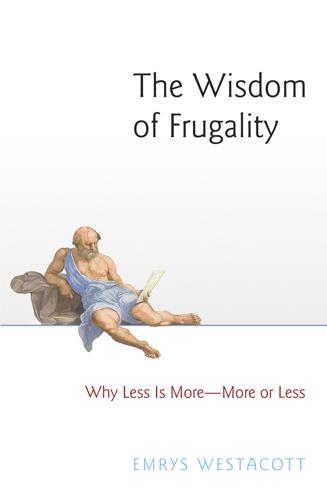
The Wisdom of Frugality: Why Less Is More - More or Less
by
Emrys Westacott
Published 14 Apr 2016
As Jürgen Habermas argues, building on Paul Grice’s analysis of conversational conventions, regardless of how we actually behave and our actual motivations, our discussions usually proceed on the shared assumption that we are all committed to establishing the truth about the topic under discussion.27 But a different paradigm of truth now dominates: the paradigm of truth established by science. For the most part this is not something that ordinary people can pursue by themselves through reflection, conversation, or even backyard observation and experiment. Does dark matter exist? Does eating blueberries decrease one’s chances of developing cancer? Is global warming producing more hurricanes? Does early involvement with music and dance make one smarter or morally better? Are generous people happier than misers? People may discuss such questions around the table. But in most cases when we talk about such things, we are ultimately prepared to defer to the authority of the experts whose views and findings are continually reported in the media.
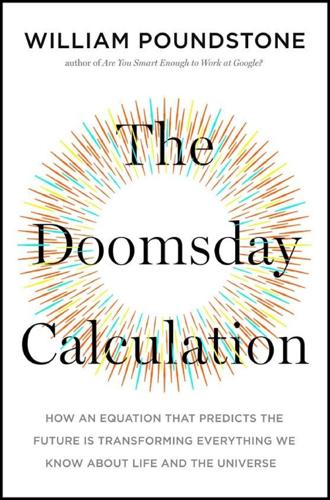
The Doomsday Calculation: How an Equation That Predicts the Future Is Transforming Everything We Know About Life and the Universe
by
William Poundstone
Published 3 Jun 2019
We come across an extraterrestrial monolith on the moon. It awakens and informs us that observers are found throughout the universe. Some are biological, based on carbon and other elements. Some are artificial intelligences created by biological beings. But most observers are not made of atoms at all. What we call “dark energy” and “dark matter” are forms of cosmic intelligence. Still other observers inhabit planes of reality we know nothing about. How would this change our views? One take is that it underscores how our world is supremely fine-tuned for life. Yet the alien envoy has informed us that none of the things we thought were essential for observers actually are.
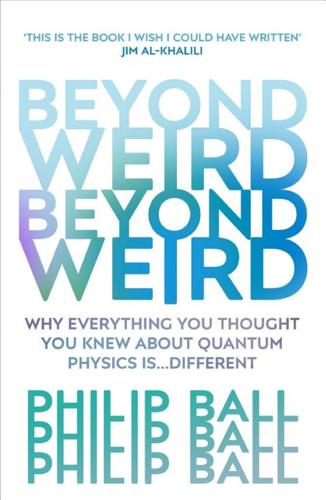
Beyond Weird
by
Philip Ball
Published 22 Mar 2018
Quantum mechanics has nothing to say about them, and there would be no need to apologize for that if some scientists didn’t keep talking grandiosely about Theories of Everything that are silent about the things which matter most to most of us. fn2 Fundamental particles with spin 3/2, 5/2 and so on are possible in principle, but have never been observed. Some theories predict spin-3/2 particles as candidates for the mysterious ‘dark matter’ thought to make up about four-fifths of the mass of the universe, or as components of a (still elusive) quantum theory of gravity. Not everything is knowable at once fn1 Heisenberg of course used German words: in his original 1927 paper he refers to both Ungenauigkeit (inexactness) and Unbestimmtheit (undeterminedness or vagueness).

Capitalism Without Capital: The Rise of the Intangible Economy
by
Jonathan Haskel
and
Stian Westlake
Published 7 Nov 2017
Although these investments represented the modern age in all its industrial glory (in 2015 in the UK, for example, businesses invested £78bn in new buildings; £60bn in IT, plant, and machinery; and £17bn in vehicles2), the basic principle that investment was about physical goods would have made sense to William the Conqueror’s reeves. The Dark Matter of Investment But, of course, the economy does not run on tangible investment alone. Stansted Airport, for example, owned not just tarmac and terminals and trucks, but also things that were harder to see or touch: complex software; valuable agreements with airlines and retailers; internal know-how.
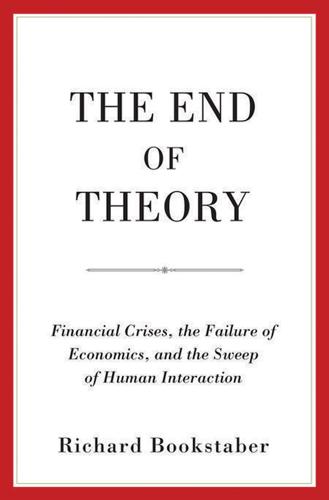
The End of Theory: Financial Crises, the Failure of Economics, and the Sweep of Human Interaction
by
Richard Bookstaber
Published 1 May 2017
We can also think of radical uncertainty as a type of complexity. From the standpoint of computational irreducibility, we might look at radical uncertainty as occupying a position that is beyond the edge of the complexity spectrum, at least beyond the “visible” complexity spectrum that we can observe and analyze. Radical uncertainty is the dark matter of complexity. We cannot see it, we cannot even detect it, we cannot measure it in terms of informational irreducibility, but we know it is there because every now and then it hits us between the eyes. To see how we can put radical uncertainty into a complexity context, let’s revisit Conway’s Game of Life.

Bastard Tongues: A Trailblazing Linguist Finds Clues to Our Common Humanity in the World's Lowliest Languages
by
Derek Bickerton
Published 4 Mar 2008
I'll consult, if asked, but anyone else is welcome to organize it and run it and take the credit for it. All I care about are the results. Other sciences at least have the luxury of temporary certainty. Newton's explained the universe, oops, no, Einstein's ex plained the universe, er, well, now there's all this dark matter and dark energy we have to account for. In linguistics we don't even get that far, we just argue back and forth. Some linguists, like Steve Pinker (whose book The Language Instinct is, after this one, the most fun book on language you're likely to read), have what they are pleased to call "labs," but the kinds of experiment they can do in them, even in the f~ncier ones where you can get pictures of the inside of your brain, yield results that are always interpretable in at least two contradictory ways.
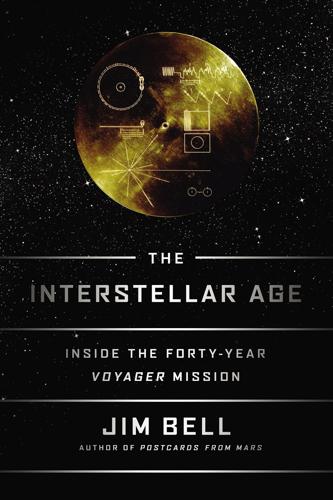
The Interstellar Age: Inside the Forty-Year Voyager Mission
by
Jim Bell
Published 24 Feb 2015
Perhaps it was some kind of new physics that could only be discovered by a long, lonely trip through deep, nearly empty space? No one knew, and the discrepancy became known as the Pioneer Anomaly. Over more than twenty years, astronomers, physicists, and spacecraft engineers tossed around hypotheses about the gravity of small bodies like KBOs, or dark matter, or some other cosmological effect, causing the Pioneers’ deceleration. Or maybe drag from particles in the heliosphere, or small helium gas leaks on the spacecraft that acted like mini thrusters, or some other spacecraft-related effect that hadn’t been properly accounted for. Eventually after much head scratching, physicists and spacecraft engineers finally solved the Pioneer Anomaly.

E=mc2: A Biography of the World's Most Famous Equation
by
David Bodanis
Published 25 May 2009
The Universe (Chapters 14–16) Payne The richest source here is Cecilia Payne-Gaposchkin: An Autobiography and Other Recollections, ed. Katherine Haramundanis (New York: Cambridge University Press, 2nd ed., 1996). See also George Greenstein’s reflective essay “The Ladies of Observatory Hill,” in his Portraits of Discovery (New York: Wiley, 1998). An interesting comparison from a later generation is Bright Galaxies, Dark Matters by Vera Rubin (Woodbury, N.Y.: American Institute of Physics, 1997), while George Gamow’s dated though highly readable The Birth and Death of the Sun: Stellar Evolution and Subatomic Energy (London: Macmillan, 1941) gives a useful impression of solar physics in Payne’s time. Hoyle and Earth Fred Hoyle is the best writer of any high-level scientist I’m aware of: his autobiography, Home Is Where the Wind Blows: Chapters from a Cosmologist’s Life (New York: Oxford University Press, 1997), is a pleasure to read.
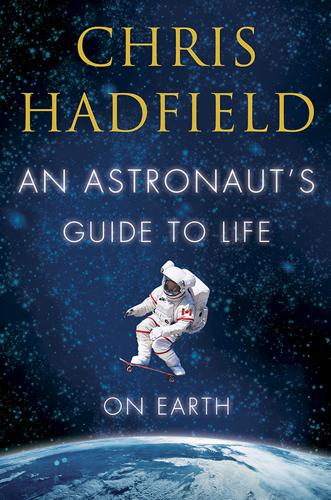
An Astronaut's Guide to Life on Earth
by
Chris Hadfield
Published 29 Oct 2013
(It turns out that some modules are better shielded than others, though it’s not yet clear how big a problem this is or what the long-term health implications are for astronauts and cosmonauts.) Some of my favorite experiments were the ones attempting to answer really big questions like, What’s the universe made of? The Alpha Magnetic Spectrometer, mounted on the Station’s exterior, is collecting dark matter and high-energy particles to try to provide an answer. Another experiment is looking at the behavior of nanoparticles and how they coalesce without the weight of gravity. Most of the 130 experiments on board are ones that simply cannot be done on Earth: we’re there to make sure that scientists on the ground get the information they need.
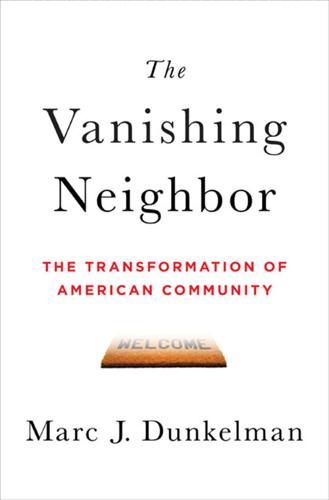
The Vanishing Neighbor: The Transformation of American Community
by
Marc J. Dunkelman
Published 3 Aug 2014
It offers more freedom to individuals than people experienced in the past because now they have more room to maneuver and more capacity to act on their own.31 The great hope is that connections made across better-integrated disciplines—doctors and scientists kibitzing through mobile devices, across social networks, in real time—will spark even more creativity than that generated in townshipped society. To hear the deans of exciting new industries—venture capitalists surveying the landscape in Silicon Valley, researchers enveloped in projects designed to discover the true nature of dark matter, journalists on missions to uncover elements of the political process shrouded in mystery—it’s hard not to be confident. At the same time, however, a balanced look at the potential dynamism born in outer-ring relationships will cause many to hedge their bets. Some of the same studies documenting the extent to which racial and ethnic separations have eroded have simultaneously found other corrosive sorts of divisions that have emerged in their stead.
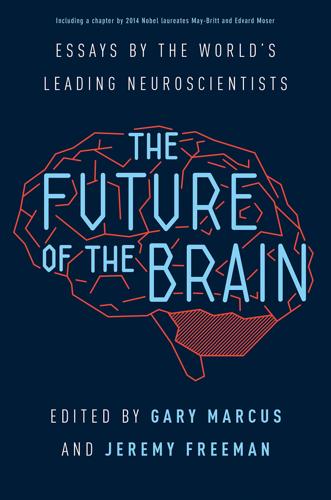
The Future of the Brain: Essays by the World's Leading Neuroscientists
by
Gary Marcus
and
Jeremy Freeman
Published 1 Nov 2014
A very large proportion of the single-gene disorders that affect the human population (cystic fibrosis, muscular dystrophy, Huntington’s disease, and many others) are known to be caused by specific mutations disturbing protein-coding genes. Beyond the exome, the remainder of the genome includes many stretches of DNA (once thought of as junk) that may have complicated roles in regulating how the exome works. While progress is being made, geneticists still struggle to make sense of this dark matter of the genome, in particular to understand the biological significance of variations that affect it. So, targeting the protein-coding genes, by sequencing a whole exome rather than dealing with an entire genome, seems a smart way of simplifying things when searching for causal variants in newly ascertained families with a disorder or trait of interest.
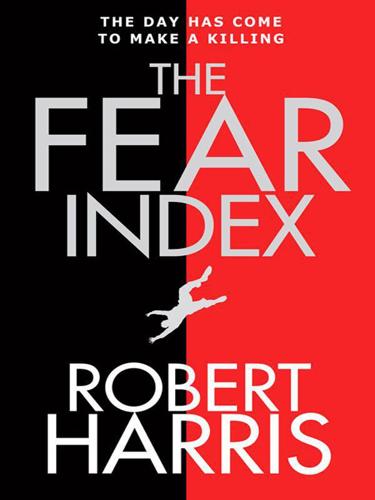
The Fear Index
by
Robert Harris
Published 14 Aug 2011
Apparently sixteen hundred super-conducting magnets, each weighing nearly thirty tonnes, were housed in a twenty-seven-kilometre circular tunnel beneath his feet, shooting beams of particles around it so quickly that they completed the circuit eleven thousand times per second. The collisions of the beams at an energy of seven trillion electronvolts per proton were supposed to reveal the origins of the universe, discover extra dimensions and explain the nature of dark matter. None of it that Leclerc could discern seemed to have anything whatever to do with the financial markets. QUARRY’S INVITEES BEGAN to arrive just after ten, the first pair – a fifty-six-year-old Genevese, Etienne Mussard, and his younger sister Clarisse – turning up on a bus. ‘They’ll be early,’ Quarry had warned Hoffmann.
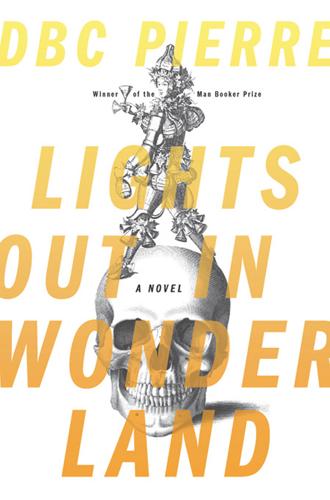
Lights Out in Wonderland
by
Dbc Pierre
Published 1 Sep 2010
A fire engine roars past with its lights flashing. I turn my back and stare at Burger King as if I might buy it. But whoosh—I find beauty there. The neon has dimmed on a corner of the sign, causing a delicate graduation of reds, from hot capsicum to dry blood. The dimmer part is at the bottom, making dark matter seem to pool there, but that old blood sparkles with highlights thrown by other lamps nearby. There’s no orchid or lily as rare as this fragment of sign, I reflect. Certainly none spelling “King.” Arriving at the railway station, I find it droning with an alternating current of apathy and rage, buffeted as much between trains as when they rocket past without stopping.
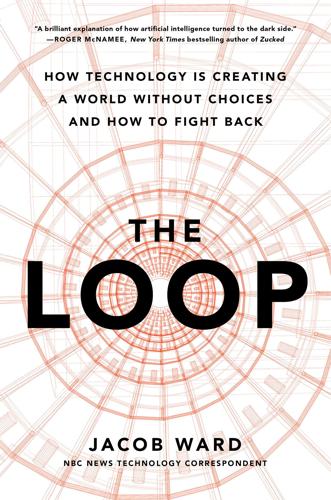
The Loop: How Technology Is Creating a World Without Choices and How to Fight Back
by
Jacob Ward
Published 25 Jan 2022
We shouldn’t plow ahead and deploy profitable technology on one another that we know has a widespread effect when we don’t yet know what it is. We are capable as a society of making choices and rules based on something softer, messier, more important than the data, something we can all sense but can’t quite see, something that touches on the human emotions we all share, the immeasurable but unmistakable dark matter of our minds. IF WE ARE going to maintain our capacity to make these human choices, we have to incorporate the unquantifiable but unmistakable effects of The Loop into some sort of regulatory framework. It’s the only way to enjoy the benefits of AI without losing human agency in the process. We must update our legal framework to account for the gray areas between data and emotion—the heuristics and biases that AI will increasingly exploit—and come to understand that just because the effects we’re feeling don’t show up in a typical financial audit, they are still there, and still hugely impactful.
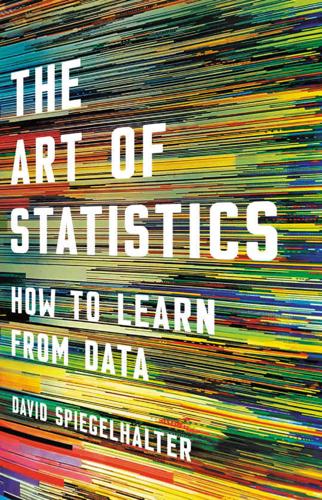
The Art of Statistics: How to Learn From Data
by
David Spiegelhalter
Published 2 Sep 2019
As soon as the practical performance of algorithms started to be measured and compared, people inevitably got competitive, and now there are data science contests hosted by platforms such as Kaggle.com. A commercial or academic organization provides a data set for competitors to download: challenges have included detecting whales from sound recordings, accounting for dark matter in astronomical data, and predicting hospital admissions. In each case competitors are provided with a training set of data on which to build their algorithm, and a test set that will decide their performance. A particularly popular competition, with thousands of competing teams, is to produce an algorithm for the following challenge.

The Fourth Age: Smart Robots, Conscious Computers, and the Future of Humanity
by
Byron Reese
Published 23 Apr 2018
Strawson writes, “We don’t know the intrinsic nature of physical stuff,” and he believes that as we understand physics better, consciousness will give up its secrets and be seen just as a physical process. In this view, the seemingly inexplicable nature of what we call consciousness is no great surprise. The physical universe is full of strange, seemingly inexplicable things, such as quantum physics, relativity, and dark matter. Consider the phenomenon of entanglement, in which two particles are so linked with each other that even if they are separated by the width of the universe, if you perform an action on one of them, its pair reacts instantly, faster than light itself. Even Einstein categorized this phenomenon as “spooky.”

Who Is Rich?
by
Matthew Klam
Published 3 Jul 2017
To embroil Robin, to mythologize her, to upset her, break her open. I’d convinced myself that everyone wants to be immortalized in a work of art. I told that story because it confused me. Because it felt good to scratch the itch of that confusion. Because the work of telling it became a consolation. Because when I worked on it, I took hold of dark matter. I felt an ecstatic thrill seeing my work on the page. I wanted to leave my mark. I thought I could transform it into something else. Because if I didn’t somehow address these ideas, I was literally thinking myself out of existence. Which, I guess, was what I’d done, which was why I didn’t want to be alive anymore, and why I went to my suitcase to find a belt and hang myself.
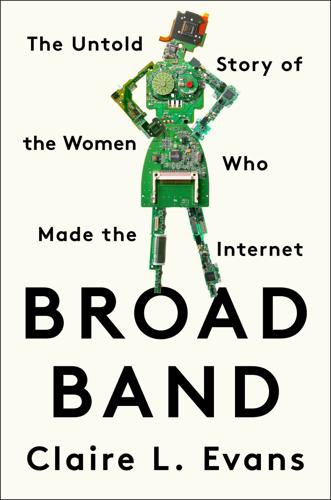
Broad Band: The Untold Story of the Women Who Made the Internet
by
Claire L. Evans
Published 6 Mar 2018
“I heard women talking about things that I wouldn’t normally hear women talking about,” says Howard Mittelmark, “talking about men in ways that they wouldn’t usually share with me.” At its peak, Echo had around forty-six thousand users. More than half were lurkers. Even today, most people are lurkers: on social media platforms everywhere a vast silent majority listens, reads, and keeps to itself. It’s the social dark matter of the Internet, the force holding us all together. Those who did post actively on Echo—about a tenth of Stacy’s subscribers—were the diehards. They were the hosts, the contrarians, the pot stirrers, the core group. Although Echo still exists, tumultuously but successfully moved over to a Linux server not long ago, only a fraction of that core group remains.
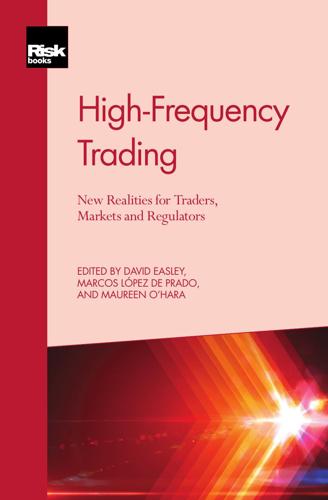
High-Frequency Trading
by
David Easley
,
Marcos López de Prado
and
Maureen O'Hara
Published 28 Sep 2013
Kearns, Y. Nevmyvaka and J. Wortman, 2010, “Censored Exploration and the Dark Pool Problem”, Communications of the ACM 53(5), pp. 99–107. Guéant, O., C. A. Lehalle and J. F. Tapia, 2012, “Optimal Portfolio Liquidation with Limit Orders”, Technical Report, arXiv:1106.3279 [q-fin.TR]. JP Morgan, 2012, “Dark Matters Part 1: Optimal Liquidity Seeker”, Report, JP Morgan Electronic Client Solutions, May. Kharroubi, I., and H. Pham, 2010, “Optimal Portfolio Liquidation with Execution Cost and Risk”, SIAM Journal on Financial Mathematics 1(1), pp. 897–931. Kulesza, A., M. Kearns and Y. Nevmyvaka, 2010, “Empirical Limitations on High Frequency Trading Profitability”, Journal of Trading 5(4), pp. 50–62.
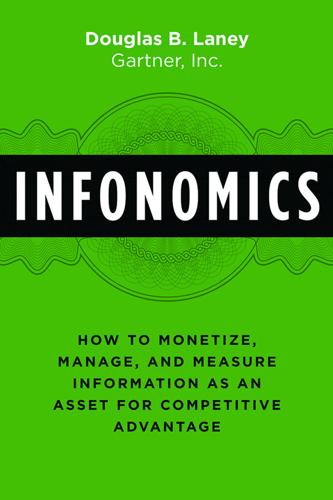
Infonomics: How to Monetize, Manage, and Measure Information as an Asset for Competitive Advantage
by
Douglas B. Laney
Published 4 Sep 2017
But when it comes to truly analyzing it using language and syntactically aware algorithms, graduating to advanced analytic technologies which specialize in this is required. And beyond written text, sources of enterprise intelligence and performance increasingly are in even more complex formats, such as audio and video. As discussed in chapter 2, much of this unstructured information lies dormant in the form of what’s called “dark data.” Much like the dark matter of the universe, we know dark data is there because it has a gravitational effect on our business and operations as it remains unused and unmeasured. As I have long advised clients, there are only three ways to generate economic benefits from unstructured information (or content) before you structure it: you can read it, search it, and sell it.
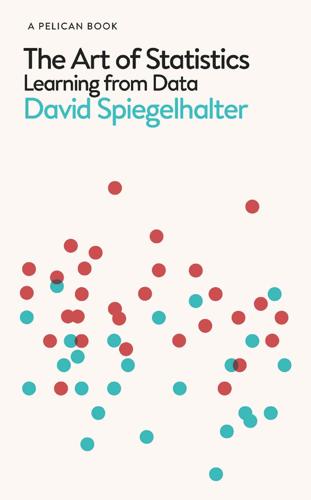
The Art of Statistics: Learning From Data
by
David Spiegelhalter
Published 14 Oct 2019
As soon as the practical performance of algorithms started to be measured and compared, people inevitably got competitive, and now there are data science contests hosted by platforms such as Kaggle.com. A commercial or academic organization provides a data set for competitors to download: challenges have included detecting whales from sound recordings, accounting for dark matter in astronomical data, and predicting hospital admissions. In each case competitors are provided with a training set of data on which to build their algorithm, and a test set that will decide their performance. A particularly popular competition, with thousands of competing teams, is to produce an algorithm for the following challenge.
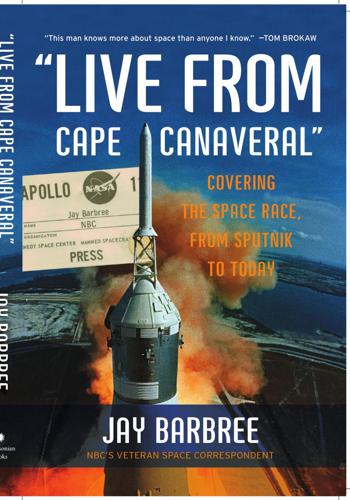
"Live From Cape Canaveral": Covering the Space Race, From Sputnik to Today
by
Jay Barbree
Published 18 Aug 2008
Were there other planets outside our solar system? Hubble answered yes as it showed astronomers hundreds in our galactic neighborhood. How old is the universe? Hubble says 13.9 billion years. Is the speed of light really the ultimate velocity? Or will we find unanticipated matter and energy that travel faster? What exactly is dark matter? Does it really make up most of the universe? And what happens to the trillions of tons of matter that vanish into the maw of black holes? What are the white gushers in space pouring vast amounts of subatomic particles into our universe—with no identifiable source or known reason? And is the universe expanding?
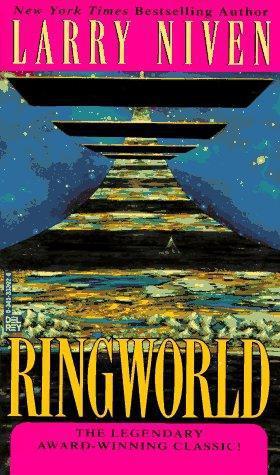
Ringworld
by
Larry Niven
Published 12 Sep 1985
“By now you know,” said Chiron, “that we have been moving north along the galactic axis for the past two hundred and four of your Earth years. In kzin years—“ “Two hundred and seventeen.” “Yes. During that time we have naturally observed the space ahead of us for signs of danger and the unexpected. We had known that the star EC-1752 was ringed with an uncharacteristically dense and narrow band of dark matter. It was assumed that the ring was dust or rock. Yet it was surprisingly regular. “Some ninety days ago our fleet of worlds reached a position such that the ring occluded the star itself. We saw that the ring was sharply bounded. Further investigation revealed that the ring is not gas nor dust, nor even asteroidal rock, but a solid band of considerable tensile strength.
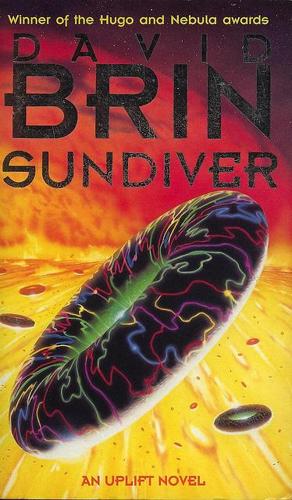
Sundiver
by
David Brin
Published 15 Jan 1995
Naturally we won’t be opening the wavelength that laser’s tuned to! The lines we choose are quiet and optically thick, so whatever you see that’s green or blue comes from a beastie. It should come as a pleasant change.” “Anything would be welcome but this damned red.” The ship passed through the dark matter and suddenly they were almost among the creatures. Jacob gulped and closed his eyes momentarily. When he looked again, he found that he couldn’t swallow. On top of three days of unbelievable sights, what he saw left him helpless before a powerful tremor of emotion. If a group of fish “is called a “school” for its discipline, and several lions comprise a “pride,” named for their attitude, Jacob decided that the cluster of solar-beings could only be called a “flare.”

Memoirs of an Addicted Brain: A Neuroscientist Examines His Former Life on Drugs
by
Marc Lewis Phd
Published 5 Mar 2013
We’d been blithely building our scenario about school in Puerto Rico, getting lost in its intricacies and ignoring its sheer unlikelihood. Until the bubble finally burst over Christmas vacation. You could say that Schwartz and I had created our own brand of dissociation. But it wasn’t the DM-style knock-you-over-the-head departure from reality. We’d gotten lost in the possibilities of how the world might be, not in the dark matter that emerges when you leave the world behind. The audacity of our plan may have been bolstered by the maturation of cannabinoid receptors, fuelled by the flow of cannabinoids made in our own cells. And if cannabinoids help teenagers design their own reality, then maybe my new preoccupation with pot wasn’t so much an aberration as a second, somewhat desperate effort to keep my options open.
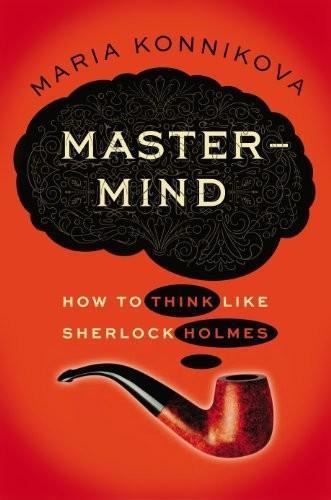
Mastermind: How to Think Like Sherlock Holmes
by
Maria Konnikova
Published 3 Jan 2013
But that view shifts with time, and thus, evidence that might at one point seem meaningless can come to hold a great deal of meaning. Think of how many ideas seemed outlandish when first put forward, seemed so impossible that they couldn’t be true: the earth being round; the earth going around the sun; the universe being made up almost entirely of something that we can’t see, dark matter and energy. And don’t forget that magical things did keep happening all around as Conan Doyle came of age: the invention of the X-ray (or the Röntgen ray, as it was called), the discovery of the germ, the microbe, radiation—all things that went from invisible and thus nonexistent to visible and apparent.

Pale Rider: The Spanish Flu of 1918 and How It Changed the World
by
Laura Spinney
Published 31 May 2017
Health insurance was almost unheard of, and in general healthcare was paid for privately or provided by charities. Antibiotics had yet to be invented, and there was still relatively little people could do once sick. Even in Paris and Berlin, therefore, disease filled the interstices of human lives. It lurked behind the column inches devoted to the war. It was the dark matter of the universe, so intimate and familiar as not to be spoken about. It engendered panic, followed by resignation. Religion was the main source of comfort, and parents were used to surviving at least some of their children. People regarded death very differently. It was a regular visitor; they were less afraid.

Sex on the Moon: The Amazing Story Behind the Most Audacious Heist in Histroy
by
Ben Mezrich
Published 11 Jul 2011
From the very beginning, Thad used the inmates’ eclectic interests to guide them into a more basic study of space and the unknown. Because they couldn’t exactly go outside at night to look through telescopes, he focused on the many theories behind the science of astronomy, and did his best to get the inmates excited about the mysteries of the universe—things like black holes, supernovas, and dark matter. He had only one requirement from his students. If they enjoyed his class, when they eventually got out of prison, they were each to send Thad one physics book—so he could continue studying the subject he had found the most challenging of his three college majors. Since, as a prisoner, he could only keep up to five books in his cell at one time, he had other inmates hold them for him, rotating through as many books as he could read, as quickly as he could get them.
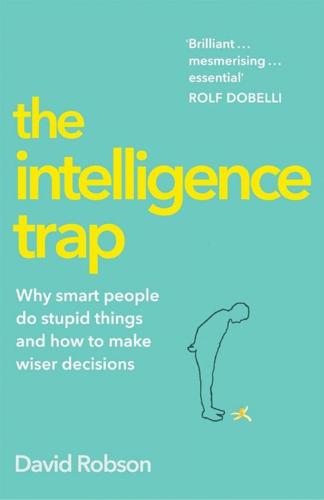
The Intelligence Trap: Revolutionise Your Thinking and Make Wiser Decisions
by
David Robson
Published 7 Mar 2019
Whatever the reason, the results suggest that smarter people are not investing their money in the more rational manner that economists might anticipate; it is another sign that intelligence does not necessarily lead to better decision making. As one vivid example, consider the story of Paul Frampton. A brilliant physicist at the University of North Carolina, his work ranged from a new theory of dark matter (the mysterious, invisible mass holding our universe together) to the prediction of a subatomic particle called the ‘axigluon’, a theory that is inspiring experiments at the Large Hadron Collider. In 2011, however, he began online dating, and soon struck up a friendship with a former bikini model named Denise Milani.

Artificial Intelligence: A Guide for Thinking Humans
by
Melanie Mitchell
Published 14 Oct 2019
Examples include methods for clustering examples based on their similarity or learning a new category via analogy to known categories. As I’ll describe in a later chapter, perceiving abstract similarity and analogies is something at which humans excel, but to date there are no very successful AI methods for this kind of unsupervised learning. Yann LeCun himself acknowledges that “unsupervised learning is the dark matter of AI.” In other words, for general AI, almost all learning will have to be unsupervised, but no one has yet come up with the kinds of algorithms needed to perform successful unsupervised learning. Humans make mistakes all the time, even (or especially) in driving; any one of us might have hit that public bus, had we been the one veering around sandbags.
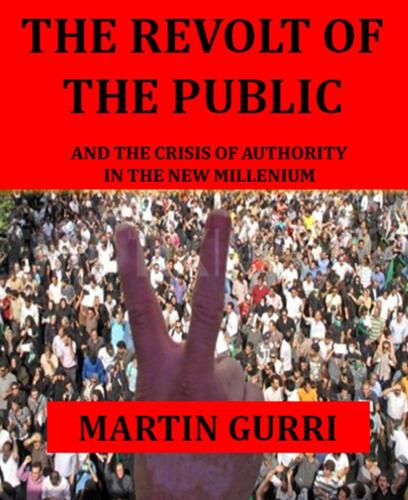
The Revolt of the Public and the Crisis of Authority in the New Millennium
by
Martin Gurri
Published 13 Nov 2018
Chapter 5 Phase Change 2011 My story – I repeat – concerns the tectonic collision between a public which will not rule and institutions of authority progressively less able to do so. My misgiving is that democracy will be ground to pieces under the stress. An immense psychological distance separates the two sides, even as they come together in conflict. This gulf is filled with dark matter: distrust. The elites who control the institutions have never really trusted the public, which they considered animalistic and prone to bouts of destructiveness. In effect, they sought to neuter the public by herding it into a mass and attaching it to established hierarchies. A glimpse at any American airport today will confirm that this horror of the top for the bottom has, if anything, grown more intense.

The Knowledge Machine: How Irrationality Created Modern Science
by
Michael Strevens
Published 12 Oct 2020
Driving this machine was a regimented process that subjected theories to a pitiless interrogation by observable evidence, raising up some and tearing down others, occasionally changing course or traveling in reverse but making in the long term unmistakable progress. Where Thales once surveyed the horizon and saw water, our radio telescopes look into deep space and see dark matter. It is to mark this sudden change in the tempo and form of discovery that historians call what happened the “Scientific Revolution,” and philosophers and sociologists distinguish what came after the Revolution as a new way of thinking about the world. In so doing, they set “modern science” apart from what preceded it—that is, ancient and medieval science, or what is sometimes called, to emphasize the striking discontinuity, “philosophy of nature” or “natural philosophy.”
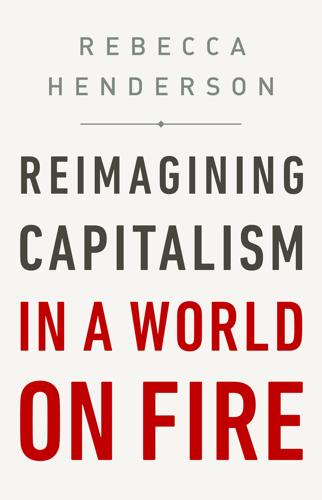
Reimagining Capitalism in a World on Fire
by
Rebecca Henderson
Published 27 Apr 2020
Astronomers had always assumed that if they looked out beyond the Milky Way, galaxies would be spread more or less evenly across the universe. But John’s map suggested that the galaxies were instead confined to great sheets arcing around enormous voids millions of light-years across. The discovery made the front page of the New York Times and helped lay the foundation for the current dark matter–based view of the universe.30 John became one of the most highly cited astronomers of the twentieth century. In 1991, when we had our first date, I was entirely ignorant of all this. He was just some guy that I’d been introduced to. Since we were both academics, I asked him how many papers he had published.

The Premonition: A Pandemic Story
by
Michael Lewis
Published 3 May 2021
The chip, in other words, could be used not just to diagnose an existing virus but to discover a new one, as it had with SARS. And its power to diagnose grew with the addition of new viruses to the chip. What if the virus had zero genetic connection to any virus on earth? What if it came from Mars? Another common question. And harder to answer satisfactorily. There actually was a phrase: the dark matter of genomic sequencing. It referred to genetic material without any connection to known genetic material. But SARS wasn’t that. And neither were any of the other likely biological threats to humans. Why had the virus vanished? Why had it infected eight thousand people and killed eight hundred of them and then just stopped?

The Stack: On Software and Sovereignty
by
Benjamin H. Bratton
Published 19 Feb 2016
For his eschatology, the “world” is a tragic casualty of its appearance in digital images of itself.48 It cannot survive this manner of testimony. It is shrunken, eaten, defamed by its reduction to a plateau of digitalized time. Whereas difference and analogy are naturally functions of distance, in the instantaneousness of global information the landscape of distances has collapsed, and so for Virilio digital space is dark matter, one that instead of expanding and elongating real distances instead flattens the space of analogy into the simultaneity of network time. There are other, and better, judgments of these accelerations, displacements, elongations, migrations, vectors, lines, and links. Can they be drawn without replicating the terms of reduction that any truly living image would need to escape?
…
See also money bitcoin, 9, 127, 171, 209, 336–337, 393n54 digital platform, 336–337 double spend problem, 418n45 Facebook, 127 future of, 127, 336 currency-matter link, computerization of, 199 “Cybernetic Praxis in Government” (Beer), 1 cybernetics autopoietic, 59 consumer, 274 corporate, 128 economic planning systems, 58–61, 328–329 of interface design, 157 meaning of, 275–276 rise of, 327 of scenario planning, 359 second-order, 334 Soviet, 58–61, 138, 328–329, 332 theory concurrent with, 54 cyberwarfare, 27 Daalder, Rene, 320 Dal Co, Francesco, 304 Dar al-Islam, 9, 322 dark matter, 91 Darknet, 215 dark pools, 451n63 Dark Side of the Rainbow effect, 359 data jurisdiction over, 113–114, 120, 122–123, 285–286 ownership of, 203, 285, 345–346 proliferation of, 117, 204 substantialization of, 168 data centers energy footprint, 92–94, 113, 140–141, 303–304 water-based, 113–114, 140 data collection Apps for, 236 mobile phones for, 342 sensor nets, 97, 180, 192, 295 smart dust for, 201 Users used for, 340 Data.Gov, 9 data hauls, 363–364 data haven, 400n42 data space versus state space, 123 data visualization, 267, 302, 334 Daultrey, Sally, 97 da Vinci robotic surgery system, 279 Davis, Mike, 304–305 de-addressing of things, 199 death of the User, 260, 271–274, 361, 370, 436n42 Debord, Guy, 414n10 debt, 303, 335–336 decision-making algorithms, 134, 332, 341–342 “Declaration of the Independence of Cyberspace” (Barlow), 441n7 dedifferentiated space, 33 deep address, 64, 197–200, 206, 209, 210–216, 334–335, 338–339, 370.
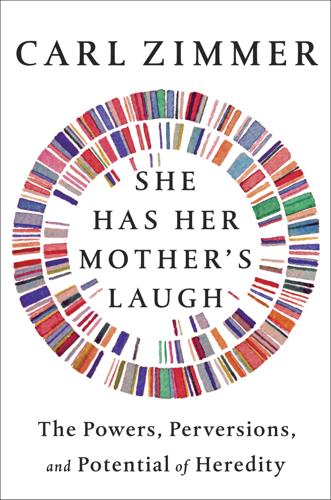
She Has Her Mother's Laugh
by
Carl Zimmer
Published 29 May 2018
To my ear, at least, she has her mother’s laugh. As I write this, Charlotte is now fifteen. She has a thirteen-year-old sister named Veronica. Watching them grow up, I have pondered heredity even more. I wondered about the source of their different shades of skin color, the tint of their irises, Charlotte’s obsession with the dark matter of the universe, or Veronica’s gift for singing. (“She didn’t get that from me.” “Well, she certainly didn’t get it from me.”) Those thoughts led me to wonder about heredity itself. It is a word that we all know. Nobody needs an introduction to it, the way we might to meiosis or allele. We all feel like we’re on a first-name basis with heredity.
…
Veronica has always been off the charts, making people assume she’s a couple of years older than she really is. As a child, Charlotte would hold back when we introduced her to new people, sizing them up. Veronica, standing next to her, would launch herself into the air and shout her name. At age twelve, Charlotte became obsessed with galaxies and dark matter. Veronica didn’t care much what the universe is made of. She’d rather sing, or read Jane Austen. The experiences our daughters have had probably account for some of their differences. But so does meiosis. Grace and I gave each of our children different combinations of the DNA we inherited from our own parents.
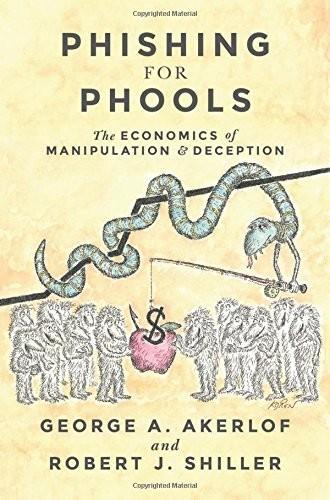
Phishing for Phools: The Economics of Manipulation and Deception
by
George A. Akerlof
,
Robert J. Shiller
and
Stanley B Resor Professor Of Economics Robert J Shiller
Published 21 Sep 2015
In Illinois, for example, the Democrats avoided whole areas downstate; just as in New York, they avoided upstate. But now the very significant minorities of voters in such places could be approached, because they were individually targeted. For Obama 2012 these voters in Democrat minority areas were no longer dark matter. The world of advertising and marketing is still about getting the right message and creating the right story. It is still about the story of the Man in the Hathaway Shirt; and that Palmolive will make you beautiful. But the Obama campaign illustrates that it helps greatly to know where to target your message, and, when you do, to know which message will resonate favorably.
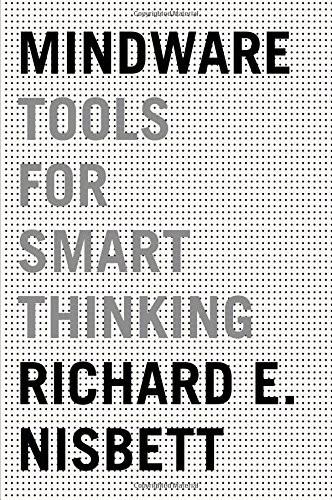
Mindware: Tools for Smart Thinking
by
Richard E. Nisbett
Published 17 Aug 2015
Society tolerates government and business practices that make our lives worse because they were developed without following effective evaluation procedures and remain untested long after they were introduced—sometimes for decades and at costs in the billions of dollars. A Sampling of the Things to Come The first section of the book deals with thinking about the world and ourselves—how we do it, how we flub it, how to fix it, and how we can make far better use than we do of the dark matter of the mind, namely the unconscious. The second section is about choices—how classical economists think choices are made and how they think they ought to be made, and why modern behavioral economics provides both descriptions of actual choice behavior and prescriptions for it that are better and more useful in some ways than those of classical economics.

Skyfaring: A Journey With a Pilot
by
Mark Vanhoenacker
Published 1 Jun 2015
Or that a typical picnic blanket—6 feet by 9 feet, say—has around 50 tons of air resting upon it. To me, the truth that air is as substantive as concrete remains as counterintuitive as any of science’s most inscrutable revelations about particles that exist in two places at once, or the unseen dark matter we are told comprises most of the universe. Little in daily life suggests that the air weighs down upon me as matter-of-factly as water rests on the bottom of an aquarium; that each day I awake and stand up and walk through insensible thickness. The writer David Foster Wallace once related a tale of an old fish who asks a pair of young fish how the water is that day.

Don't Call It a Cult: The Shocking Story of Keith Raniere and the Women of NXIVM
by
Sarah Berman
Published 19 Apr 2021
They’d committed to attending only a five-day seminar but ended up staying for three weeks in Salzman’s house, where they talked at length with Salzman’s daughter, Lauren, and other members of the inner circle. Vicente was especially interested in meeting the Vanguard, Keith Raniere, but it wasn’t until the tenth day of NXIVM classes that he was deemed ready for the experience. “I remember we spoke about dark matter, quantum mechanics,” Vicente said of his first conversations with Raniere. “He was talking to me about a certain kind of mathematics. I said I had never heard about it before. He said, ‘Well, actually I invented this mathematics,’ and I said, ‘Oh, that’s amazing.’ Not being a mathematician, what do I know?”
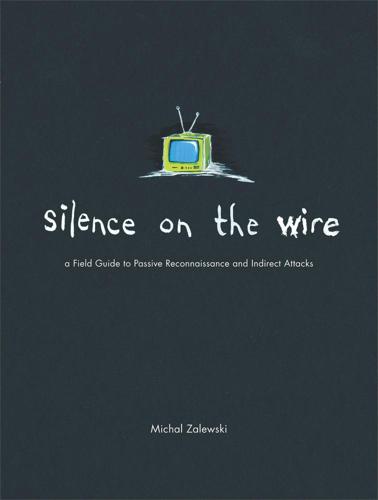
Silence on the Wire: A Field Guide to Passive Reconnaissance and Indirect Attacks
by
Michal Zalewski
Published 4 Apr 2005
I’ve discussed a number of fancy problems that affect the security and privacy of information from its input at the keyboard to its ultimate destination hundreds or thousands of miles away. But it is too early for either of us to throw a party; something is missing from the picture—something far bigger than what we have discussed so far. The dark matter. The problem with our story so far is simple: communications do not occur in a void. Although the process of exchanging data is usually limited to two systems and a dozen or so intermediate ones, the grand context of all events simply cannot be ignored; the properties of the surrounding environment can shape the reality of a chitchat between endpoints in profound ways.
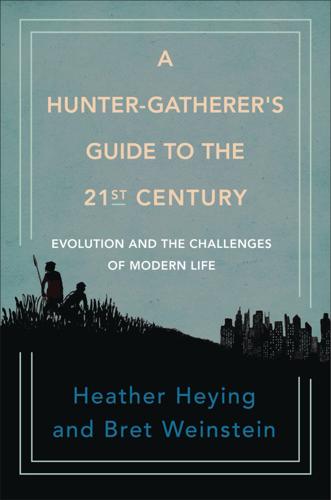
A Hunter-Gatherer's Guide to the 21st Century: Evolution and the Challenges of Modern Life
by
Heather Heying
and
Bret Weinstein
Published 14 Sep 2021
It keeps track of what time of day it is—not in the sense of “5:00 p.m.,” but in the sense of where we are with respect to photoperiod, the length of time in a twenty-four-hour period during which there is light—because that was, until very recently, the only important parameter. In London, 4:00 p.m. is called daytime in both December and June, even though in June the sun is still high in the sky at 4:00 p.m., whereas in December the sun has already set. Until recently, darkness mattered far more than one’s position in a twenty-four-hour day. So we humans have done the expedient thing. We’ve used ingenuity to extend our productive period, by inventing artificial light. The benefits of this are obvious, but the hazards aren’t. Before electric lights were invented, humans never experienced light after sunset of the intensity or duration that we are now commonly exposed to in our indoor spaces.
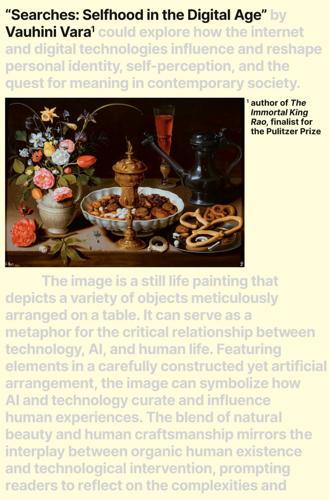
Searches: Selfhood in the Digital Age
by
Vauhini Vara
Published 8 Apr 2025
Unicorns are white, horse-like creatures that differ from horses due to having a single pointed horn protruding from the center of their head. The Medusa is a woman with snakes for hair and if you look at her you turn to stone. I don’t believe in ghosts, but I am scared of them anyway. I think they must be a bit see-through and sort of shadowy, and perhaps they have something to do with dark matter—they have a force or gravity all their own. I imagine they spend a lot of time lurking in corners and on the ceiling. Now I am getting scared thinking about them. A tree with magic multicolored flowers that pulse, at intervals, in unison—like a heartbeat—while emitting golden glitter. A tube system that lets you send little tactile items to friends wherever they may be—notes, chocolates, pickles, Advil, crayons.
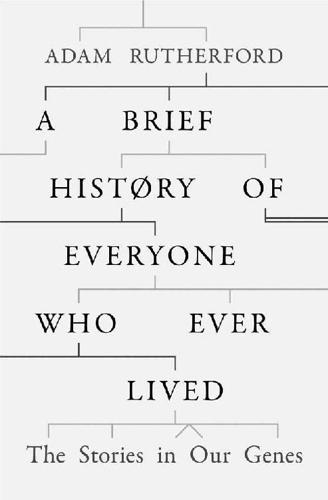
A Brief History of Everyone Who Ever Lived
by
Adam Rutherford
Published 7 Sep 2016
Lots of the rest of it does something, including the switches – the ons and offs for genes to dance their choreography as we develop in the womb, enact our lives and interact with the rest of the universe. Some of it does stuff that we haven’t discovered yet. Is it junk? No. Is it useful? We don’t know. Most of the genome – upwards of 85 per cent – does not appear to be under any selective pressure at all. Many writers have described the non-coding realm of our DNA as the ‘dark matter of the genome’, alluding to the stuff we know exists in space, that makes up the majority of mass in the universe, but that we cannot yet account for. We don’t know what it is, but we infer that it is there because of our model of how the universe is built. I intensely dislike this phrase. Metaphors in science should clarify or enlighten, not obfuscate because they sound profound.
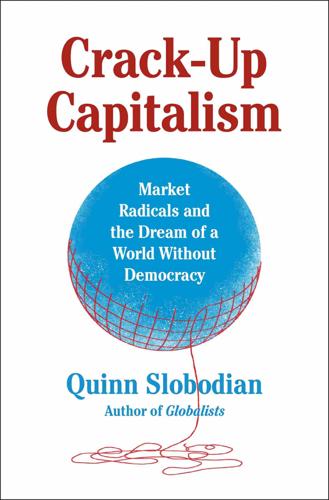
Crack-Up Capitalism: Market Radicals and the Dream of a World Without Democracy
by
Quinn Slobodian
Published 4 Apr 2023
Balaji Srinivasan, Twitter post, March 16, 2021, http:/twitter.com/balajis, called the project 1729, a reference to the lowest number that can be created by adding two cubes in two different ways—called Ramanujan’s number after a prodigious Indian mathematician. Srinivasan thought about his project as, in part, a talent finding to the world beyond the industrial core. Like the Hubble Telescope that sought dark matter, he said mobile phones would help find what he called “dark talent.” Kosloff and Srinivasan, “#3 Network State with Balaji Srinivasan, former CTO of Coinbase and Founder of 1729.” 74. Parag Khanna and Balaji Srinivasan, “Great Protocol Politics,” Foreign Policy, December 11, 2021, https://foreignpolicy.com/2021/12/11/bitcoin-ethereum-cryptocurrency-web3-great-protocol-politics/. 75.
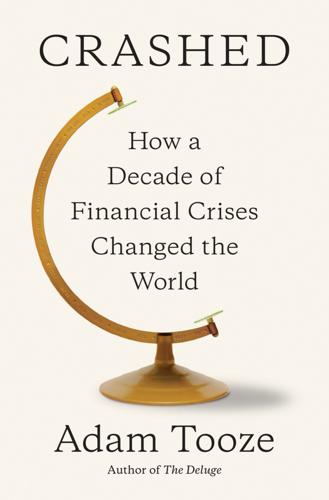
Crashed: How a Decade of Financial Crises Changed the World
by
Adam Tooze
Published 31 Jul 2018
Ruta, “The Global Trade Slowdown: Cyclical or Structural?,” International Monetary Fund, No. 15–16, 2015. 121. See the powerful critique in S. J. Evenett and J. Fritz, Will Awe Trump Rules? The 21st Global Trade Alert Report (London: CEPR, 2017). 122. B. W. Setser, “Dark Matter. Soon to Be Revealed?,” Follow the Money (blog), February 2, 2017, https://www.cfr.org/blog/dark-matter-soon-be-revealed. 123. National Security Strategy of the United States (Washington, December 2017), 37, https://www.whitehouse.gov/wp-content/uploads/2017/12/NSS-Final-12-18-2017-0905.pdf. 124. D. A. Graham, “The Wrong Side of ‘the Right Side of History,’” Atlantic, December 21, 2015, https://www.theatlantic.com/politics/archive/2015/12/obama-right-side-of-history/420462/. 125.

In Our Own Image: Savior or Destroyer? The History and Future of Artificial Intelligence
by
George Zarkadakis
Published 7 Mar 2016
But it took ten more millennia until Newton, and then Einstein, developed the scientific theory of gravity that explains why the celestial bodies move the way they do. Moreover, gravity theory (or the ‘General Theory of Relativity’ as it is formally called) explains much more than the planetary motions. It explains the whole cosmos. And it has predicted the existence of black holes, dark matter and dark energy. Similarly, a scientific theory of consciousness must not only explain why the brain achieves consciousness the way it does, but provide predictions of other phenomena relating to consciousness, for example dreams, hallucinations, consciousness in animals, schizophrenia, locked-in-syndrome, and others.

Whole Earth Discipline: An Ecopragmatist Manifesto
by
Stewart Brand
Published 15 Mar 2009
Such a “genomics of Gaia” would be the ultimate implementation of systems biology. • The transformative technique that makes all of this new science suddenly possible is the shotgun sequencing of the aggregate genomes of large samples of microbes, hence metagenomics. Microbes were long the “dark matter” of biology because, except for a few, they couldn’t be cultured in the lab. Now, with what is called functional metagenomics, you don’t have to bother with the organisms; you screen millions of DNA fragments from countless microbes, looking for new proteins that the fragments generate, and that tells you what the genes are used for.

Heaven Is a Place on Earth: Searching for an American Utopia
by
Adrian Shirk
Published 15 Mar 2022
What does heaven have to do with it if, a trillion years from now, the universe annihilates itself and becomes nothing but antimatter, formless and unformable? In the spiritual idea of heaven, as well as the zenith of a hoped-for secular heaven on earth, it seems like there would also be no markers, nothing for time to inscribe itself on because the idea is that, if successful, the heaven is a stasis. Utopianism tries to create a world also of dark matter in a way, a form of life or a way of life that will be so perfect as to not need changing over the course of its existence, for the rest of time, where the passage of time will become moot. Whether the spiritual world-builders of the Oneida or the Shakers or the hippie communes of the 1960s and ’70s, labor toward these alternative models of living was carried out, however outrageously, in the sincere belief that once perfected, they wouldn’t need changing later.

Deep Medicine: How Artificial Intelligence Can Make Healthcare Human Again
by
Eric Topol
Published 1 Jan 2019
IMAGES ImageNet exemplified an adage about AI: datasets—not algorithms—might be the key limiting factor of human-level artificial intelligence.39 When Fei-Fei Li, a computer scientist now at Stanford and half time at Google, started ImageNet in 2007, she bucked the idea that algorithms ideally needed nurturing from Big Data and instead pursued the in-depth annotation of images. She recognized it wasn’t about Big Data; it was about carefully, extensively labeled Big Data. A few years ago, she said, “I consider the pixel data in images and video to be the dark matter of the Internet.”40 Many different convolutional DNNs were used to classify the images with annual ImageNet Challenge contests to recognize the best (such as AlexNet, GoogleNet, VGG Net, and ResNet). Figure 4.6 shows the progress in reducing the error rate over several years, with ImageNet wrapping up in 2017, with significantly better than human performance in image recognition.
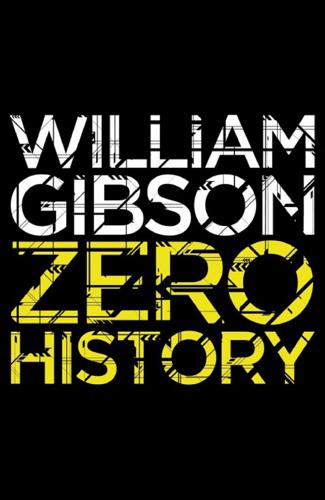
Zero History
by
William Gibson
Published 6 Sep 2010
He wore a headset, cabled to his no-name black laptop, on the embroidered velour beside him, their conversation being conducted, she assumed, through one or another of the darknets they frequented. These were, she gathered, private internets, unlicensed and unpoliced, and Garreth had once remarked that, as with dark matter and the universe, the darknets were probably the bulk of the thing, were there any way to accurately measure them. She didn’t listen. Stayed in the warm, steamy bathroom, drying her hair. When she came out, he was staring up at the round bottom of the birdcage. “Are you still talking?” “No.”

The Millionaire Fastlane: Crack the Code to Wealth and Live Rich for a Lifetime
by
Mj Demarco
Published 8 Nov 2010
I have no love lost for the poor sap who lost his retirement savings because he listened to some CNBC pundit peddling some hot stock tip or investment advice. What is wrong with people? How do you not take responsibility for your financial plan? And then there's your uncle. You know the guy-the well-educated elder in your life who knows everything, including the molecular structure of dark matter in the Horsehead Nebula. His army of factoids is always ready for deployment: stock tips, the latest and greatest investments, money trends. Yet, lest you forget, he lives paycheck to paycheck. I call these people “Broke Know-It-Alls”-people who dispense financial, moneymaking advice, and yet are dirt poor.

Ageless: The New Science of Getting Older Without Getting Old
by
Andrew Steele
Published 24 Dec 2020
To form a tumour, a cancer cell needs to divide over and over again, which means it needs to stop its telomeres from getting critically short. As a result, almost 90 per cent of cancers reactivate telomerase in order to sidestep cellular senescence. (The other 10 per cent use a mechanism known as ALT, which stands for ‘alternative lengthening of telomeres’ – an acronym which, like ‘dark matter’ and ‘dark energy’ in astrophysics, exists primarily to cover for the fact that we have very little idea what it is or how it works.) Active telomerase isn’t enough in itself to turn a cell cancerous, but we’d rather not pre-tick any boxes on cancer’s checklist if we can avoid it. This worry was borne out by the first experiments using telomerase in organisms more complex than Tetrahymena.
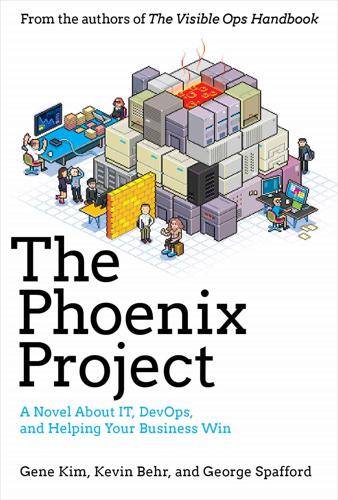
The Phoenix Project: A Novel About IT, DevOps, and Helping Your Business Win
by
Gene Kim
,
Kevin Behr
and
George Spafford
Published 14 Jul 2013
I look at the portion of the change board with no cards on it. It really is like some giant hand swept all those change cards aside that we had so meticulously scheduled and arranged on the board. And we know what swept it aside: It was Phoenix blowing up. But Phoenix isn’t the fourth category of work. Maybe what I’m looking for is like dark matter. You can only see it by what it displaces or how it interacts with other matter that we can see. Patty called it firefighting. That’s work, too, I suppose. It certainly kept everyone up at all hours of the night. And it displaced all the planned changes. I turn back to Patty and say slowly, “Let me guess.

Border and Rule: Global Migration, Capitalism, and the Rise of Racist Nationalism
by
Harsha Walia
Published 9 Feb 2021
Jones, Birthright Citizens: A History of Race and Rights in Antebellum America (Cambridge: Cambridge University Press, 2018). 42.Rinaldo Walcott and Idil Abdillahi, BlackLife: Post-BLM and the Struggle for Freedom (Winnipeg: ARP Books, 2019), 22. 43.Robyn Maynard, “Black Life and Death across the US–Canada Border: Border Violence, Black Fugitive Belonging, and a Turtle Island View of Black Liberation,” Critical Ethnic Studies 5, nos. 1–2 (April 2019): 124–51; Simone Browne, Dark Matters: On the Surveillance of Blackness (Durham: Duke University Press: 2015). 44.Maynard, “Black Life and Death across the US–Canada Border,” 127. 45.Roberto Lavato, “Juan Crow in Georgia,” The Nation, May 26, 2008, www.thenation.com/article/juan-crow-georgia/. 46.Philip Kretsedemas, The Immigration Crucible: Transforming Race, Nation, and the Limits of the Law (New York: Columbia University Press, 2012). 47.K-Sue Park, “Self-Deportation Nation,” Harvard Law Review 132, no. 1878 (May 2019): 1879–941. 48.Saidiya Hartman, Wayward Lives, Beautiful Experiments: Intimate Histories of Social Upheaval (New York: W.

The Nature of Software Development: Keep It Simple, Make It Valuable, Build It Piece by Piece
by
Ron Jeffries
Published 14 Aug 2015
Your support team doesn’t want its “search by name” results cluttered up with every prospect your sales team ever pursued. Even the question, “Who is allowed to create a customer instance?” will vary. This challenge was the bane of enterprise-wide shared object libraries, and it’s now the bane of enterprise-wide shared services. As if those problems weren’t enough, there’s also the “dark matter” issue. A system of record must pick a model for its entities. Anything that doesn’t fit the model can’t be represented there. Either it’ll go into a different (possibly covert) database or it just won’t be represented anywhere. Instead of creating a single system of record for any given concept, we should think in terms of federated zones of authority.

The Innovation Illusion: How So Little Is Created by So Many Working So Hard
by
Fredrik Erixon
and
Bjorn Weigel
Published 3 Oct 2016
If SWFs were a country, they would probably rank lower than Zimbabwe in Transparency International’s ranking. The Linaburg Maduell Transparency Index (LMTI) measures their transparency and, to cut a long story short, if there are problems understanding the ownership motives of investment funds, they are child’s play compared with the SWFs. SWFs are more like dark matter – known but not observable. Differences exist, of course, but SWFs are generally secretive and only one of the ten largest SWFs in the world – Norway – gets the highest transparency grade. Seven of them rate so poorly that it is impossible to know what they really own. In 2015, these “secret seven” together managed over $3.46 trillion in assets.26 One can understand why many SWFs are shy about the outside world.

Wilding: The Return of Nature to a British Farm
by
Isabella Tree
Published 2 May 2018
For decades, research into soil biology – ‘one of the most neglected components of the global system’, according to environmentalist Tony Juniper – has been woefully underfunded, sidelined by other, less complex fields of natural science, sexy projects like space technology, and the agro-industry’s funding of research into artificial systems. Only now are scientific techniques coming into play that allow the observation of soil microbes – microbial ‘dark matter’ – in their natural environment rather than within the limiting scope of the laboratory. 99 per cent of microbes will not grow in laboratory conditions. In 2015 the journal Nature reported the first discovery for thirty years of a new antibiotic in the soil – teixobactin – capable of killing Mycobacterium tuberculosis , Clostridium difficile and methicillin-resistant Staphylococcus aureus .
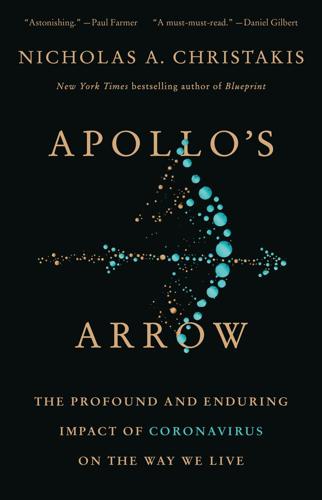
Apollo's Arrow: The Profound and Enduring Impact of Coronavirus on the Way We Live
by
Nicholas A. Christakis
Published 27 Oct 2020
The old saying about the indifference that can arise in the face of mass mortality comes to mind: “One death is a tragedy, a million deaths a statistic” (a variant of which is usually attributed to Stalin). Author Laura Spinney, in her account of the 1918 flu pandemic, described the many millions of deaths that occurred from influenza (amplified by the massive casualties and dislocations of World War I) as the “dark matter of the universe, so intimate and familiar as not to be spoken about.”7 A hundred years later, Americans have less experience with untimely death, and they are also less resigned to it. Many people live for decades without seeing death up close. While most Americans died at home a century ago, witnessed by all their loved ones, this is less common now.8 But even so, there seemed to me to be an unsettling acquiescence to the COVID-19 deaths of 2020.

When Einstein Walked With Gödel: Excursions to the Edge of Thought
by
Jim Holt
Published 14 May 2018
With too little stuff, the gravity would merely slow the expansion, which would go on forever. So, to determine how the universe would ultimately expire, cosmologists thought that all they had to do was to weigh it. And preliminary estimates—taking account of the visible galaxies, the so-called dark matter, and even the possible mass of the little neutrinos that swarm through it all—suggested that the universe had only enough weight to slow the expansion, not to turn it around. Now, as cosmic fates go, the big chill might not seem a whole lot better than the big crunch. In the first, the temperature goes to absolute zero; in the second, it goes to infinity.
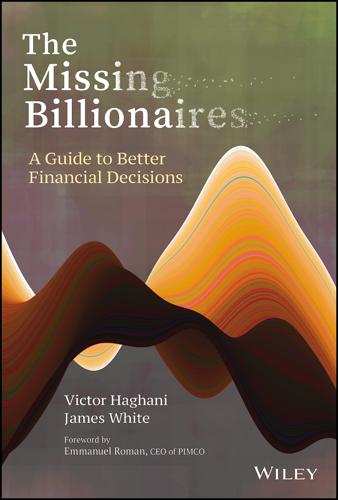
The Missing Billionaires: A Guide to Better Financial Decisions
by
Victor Haghani
and
James White
Published 27 Aug 2023
A broader international survey of equity market excess returns finds the US equity market to have been among the best performing global stock markets.2 The large observed equity risk premium may be fair compensation for rare, unobserved, time‐varying, and largely unrealized disaster risks. John Campbell referred to this as “dark matter for economists” since we cannot directly observe the probability or magnitude of these rare events, but only infer their existence through the historically large equity risk premium.3 While we cannot observe the true probability of disaster risks, through survey data we can measure the likelihood investors attach to them.
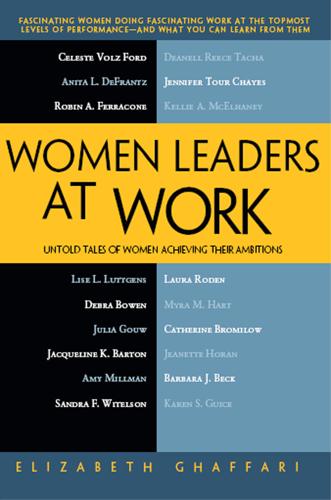
Women Leaders at Work: Untold Tales of Women Achieving Their Ambitions
by
Elizabeth Ghaffari
Published 5 Dec 2011
SSAL has about a dozen engineers that come and go on projects as needed. Ghaffari: Does SSAL conduct business mostly in Europe? Ford: The work of SSAL includes any non-US location: Latin America, Asia, pretty much the world over. Our first big contract was a NASA/DOE project, working for the people who were providing the sensors used to discover the origins of dark matter in the universe. They were all located in Pisa, Italy, where Galileo studied. They know a thing or two about astrophysics. It required us to have people on site in Italy to help get that project out the door. In the early days, we did the international work from within our domestic commercial group.
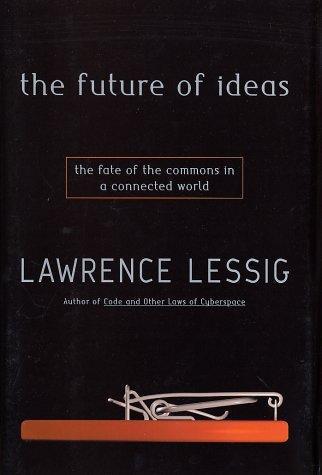
The Future of Ideas: The Fate of the Commons in a Connected World
by
Lawrence Lessig
Published 14 Jul 2001
At the time the RIAA filed suit, the number of Napster users was under two hundred thousand; after the suit hit the press, the number of users grew to fifty-seven million. In chapter 11, we will consider in some depth the legal questions that Napster raised. Focus for the moment just on the innovation. For what Fanning had done was to find a way to use the dark matter of the Internet—the personal computers connecting the Net. Rather than depending upon content located on a server somewhere—in this strict hierarchical client/server model of computing—Fanning turned to the many individual computers that are linked to the Net. They could be the place where content resides.

Stamping Butterflies
by
Jon Courtenay Grimwood
Published 1 Jan 2004
And then in 1904 a minor clerk at the Swiss Patent Office in Berne wrote a brief pamphlet, a side effect of which was that time and space became, like mass and energy, so inextricably linked they turned into variants of the same thing. Petra Mayer was not a believer in unalloyed Einstein, any more than she believed in the angelic host, time running in only one direction or the universe as an ever-expanding balloon of mostly dark matter. "You've got more than just the one photograph, right?" Petra Mayer said. She was having trouble keeping the impatience out of her voice. Old age and cancer were not treating her kindly. "Yes," said the President, reopening a file. "They're one of the things we've just been discussing. We got copies this morning."

The Patient Will See You Now: The Future of Medicine Is in Your Hands
by
Eric Topol
Published 6 Jan 2015
One company, Foundation Medicine, has initiated a commercial product of limited sequencing of about three hundred genes of the tumor to query the presence of likely driver mutations.37 Initial results in over two thousand patients have looked promising for finding culprit cancer genes, but clinical trials will be necessary to show that this information leads to improved outcomes compared with the standard, non-GIS approach. Further, given that only a limited number of genes (three hundred of nineteen thousand, or 1.6 percent) are assessed, and the rest of the 98.5 percent of the genome is left as dark matter, we can readily predict this partial GIS approach will likely miss important data. We already know, for example, that there are many noncoding (nongene) elements of the genome that can induce cancer; part of this information could be tapped by performing RNA sequencing. And there is no assessment of the patient’s germline DNA.

The Lonely Century: How Isolation Imperils Our Future
by
Noreena Hertz
Published 13 May 2020
However, as many scholars have demonstrated, slavery, whether in the ancient world or in for example the US plantation system, furnishes many further examples of surveillance as a weapon of social control, dehumanisation and othering. For further reading on racialised surveillance, see for example Simone Browne, Dark Matters: On the Surveillance of Blackness (Duke University Press, 2015). 37 ‘Pinkerton National Detective Agency’, Encyclopaedia Britannica, 25 September 2017, https://www.britannica.com/topic/Pinkerton-National-Detective-Agency. 38 Ifeoma Ajunwa, Kate Crawford and Jason Schultz, ‘Limitless Worker Surveillance’, California Law Review 105, no. 3 (2017), 735–6. 39 Julie A.
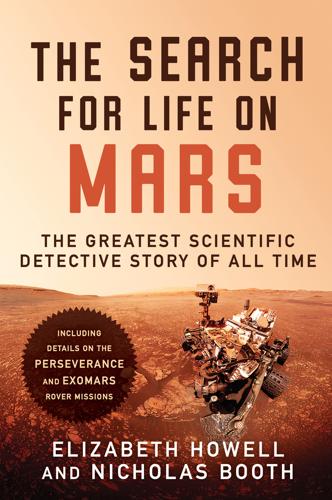
The Search for Life on Mars
by
Elizabeth Howell
Published 14 Apr 2020
There she looked at what she has called “three squiggly lines” in the spectrum of a star suspected of having a large water-rich planet orbiting it. Fraeman also met an extraordinary pioneer whose name now lives on Mars. Vera Rubin was a pioneering astronomer who first proposed the existence of dark matter and worked in the same building. Rubin died in 2016 at the age of eighty-eight, but not before a ridge of hematite (“I was the campaign lead,” Fraeman says with a smile) in Gale Crater was named for her due to singular contributions to science. In the meantime, Abigail Fraeman is carrying on Rubin’s legacy, blazing the trail for other explorers to follow on the frontiers of knowledge.

First Time Ever: A Memoir
by
Peggy Seeger
Published 2 Oct 2017
I knocked on the dividing wall and invited the girls to open their curtain. I stood there and said, Look at this and think again how imperfect your bodies are. No, I didn’t really do that, Irene. I stared at my reflection and apologised to my courageous body for using the word ruined. * Like the universe, 85 per cent of our brains seems to be dark matter. Other fauna are smart. Their males may battle, sometimes to the death, but they don’t kill or torture each other on a massive scale. They don’t invent things the logical outcome of which could spell their doom. Dumb animals. Survival is Nature’s reward for those who are good at securing territory for food, shelter and the right conditions for reproduction.

Fear Is Just a Word: A Missing Daughter, a Violent Cartel, and a Mother's Quest for Vengeance
by
Azam Ahmed
Published 26 Sep 2023
But there was a point beyond sadness, where the horror of knowing the details of a child’s demise, however bleak, became a relief, a comfort; Miriam now knew what had happened to Karen, which after more than a year of desperate inquiry was of greater comfort than distress. There was a price to pay for reaching that juncture, where sadness subsided in the crucible of revenge: You had to keep going, plunging deeper into the dark matter. Miriam could not stop; as crazy as her reckless quest for justice made her seem to others, it was perhaps the only thing that kept her sane. Azalea had once asked Miriam how much longer she would go on, hunting the Zetas and unearthing their secrets. She wanted to know when it would end. Miriam had told her she would stop once she was able to find and bury Karen, but she had said it in a way that made Azalea doubt her mother would ever stop, that she could ever stop.
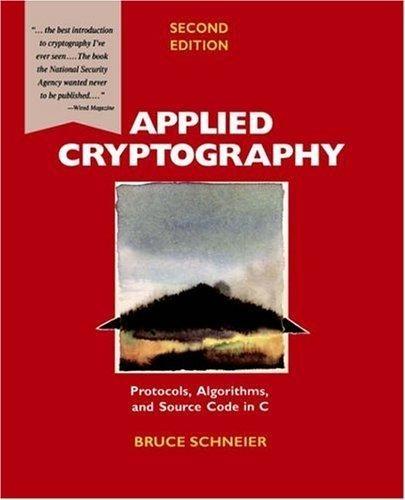
Applied Cryptography: Protocols, Algorithms, and Source Code in C
by
Bruce Schneier
Published 10 Nov 1993
Many of the astrophysics numbers are explained in Freeman TABLE 1.1 Large Numbers Physical Analogue Number Odds of being killed by lightning (per day) Odds of winning the top prize in a U.S. state lottery Odds of winning the top prize in a U.S. state lottery and being killed by lightning in the same day Odds of drowning (in the U.S. per year) Odds of being killed in an automobile accident(in the U.S. in 1993) Odds of being killed in an automobile accident(in the U.S. per lifetime) Time until the next ice age Time until the sun goes nova Age of the planet Age of the Universe Number of atoms in the planet Number of atoms in the sun Number of atoms in the galaxy Number of atoms in the Universe (dark matter excluded) Volume of the Universe 1 in 9 billion (233) 1 in 4,000,000 (222) 1 in 255 1 in 59,000 (216) 1 in 6100 (213) 1 in 88 (27) 14,000 (214) years 109 (230) years 109 (230) years 1010 (234) years 1051 (2170) 1057 (2190) 1067 (2223) 1077 (2265) 1084 (2280) cm3 If the Universe is Closed: Total lifetime of the Universe If the Universe is Open: Time until low-mass stars cool off Time until planets detach from stars Time until stars detach from galaxies Time until orbits decay by gravitational radiation Time until black holes decay by the Hawking process Time until all matter is liquid at zero temperature Time until all matter decays to iron Time until all matter collapses to black holes 1011 (237) years 1018 (261) seconds 1014 (247) years 1015 (250) years 1019 (264) years 1020 (267) years 1064 (2213) years 1065 (2216) years 101026 years 101076 years Dyson’s paper, “Time Without End: Physics and Biology in an Open Universe,” in Reviews of Modern Physics, v. 52, n. 3, July 1979, pp. 447–460.
…
Design a chip that can test a billion keys per second and throw a billion of them at the problem, and it will still take 1013 years—that’s longer than the age of the universe. An array of 1024 such chips can find the key in a day, but there aren’t enough silicon atoms in the universe to build such a machine. Now we’re getting somewhere—although I’d keep my eye on the dark matter debate. Perhaps brute force isn’t the best way to attack IDEA. The algorithm is still too new for any definitive cryptanalytic results. The designers have done their best to make the algorithm immune to differential cryptanalysis; they defined the concept of a Markov cipher and showed that resistance to differential cryptanalysis can be modeled and quantified [931, 925].
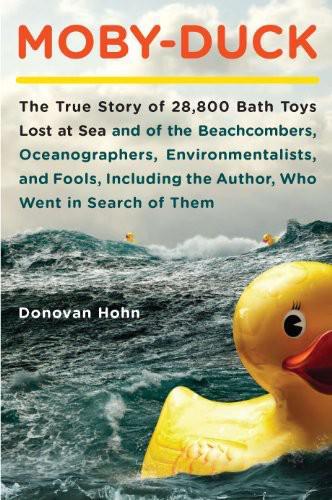
Moby-Duck: The True Story of 28,800 Bath Toys Lost at Sea and of the Beachcombers, Oceanographers, Environmentalists, and Fools, Including the Author, Who Went in Search of Them
by
Donovan Hohn
Published 1 Jan 2010
And yet below us, if the data were to be believed, there raged a watery storm. We human beings are such visual creatures that for a semi-scientifically literate layperson like me, believing in invisible if observable phenomena—mesoscale eddies; rising CO2 levels measured in parts per billion; rising sea levels measured in millimeters; electrons, dark matter, quarks; the waves through which cell phones and satellites communicate—requires a leap of faith, or at least a leap of trust. Out there on the fantail of the Knorr, on the last day of our voyage, in seas far less stormy than they’d been the day before, trying in vain to perceive some trace or sign of the watery storm below, I couldn’t help but feel a bit envious of the naturalists of centuries past, those scientific voyeurs who, with microscopes and telescopes, made discoveries everywhere they looked, perceiving ecosystems in drops of water, cosmologies in the dying rays of intergalactic light.

Accelerando
by
Stross, Charles
Published 22 Jan 2005
"We need to send duplicate ghosts out to each possible router end point, wait for an echo, then iterate and repeat. Recursive depth-first traversal. The goal – that's harder." He points at the ceiling, which dissolves into a chaotic 3-D spiderweb that Rita recognizes, after some hours of subjective head-down archive time, as a map of the dark matter distribution throughout a radius of a billion light-years, galaxies glued like fluff to the nodes where strands of drying silk meet. "We've known for most of a century that there's something flaky going on out there, out past the Böotes void – there are a couple of galactic superclusters, around which there's something flaky about the cosmic background anisotropy.
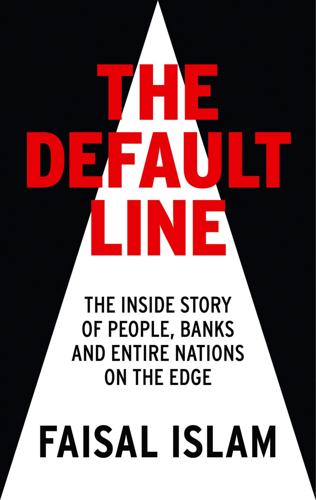
The Default Line: The Inside Story of People, Banks and Entire Nations on the Edge
by
Faisal Islam
Published 28 Aug 2013
The system worked well in an era of flexible credit ratings and even more flexible regulators. But it lacked the insurance against bank runs present in the conventional banking system. There was no backstop for liquidity in the event of a run on the shadow banks. London was its capital – and in 2008, we got the run. Like the dark matter that makes up much of the mass of the universe, the shadow banking system is detectable only by deduction, rather than by direct observation. The US Treasury International Capital (TIC) reporting system offered some light into the financial shade. It was set up in 1934 to track international investment and capital flows, and requires most US financial entities to track foreign purchases of bonds and shares.
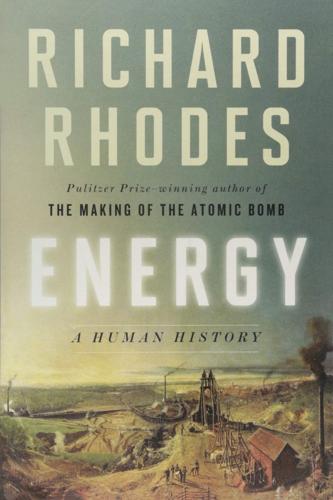
Energy: A Human History
by
Richard Rhodes
Published 28 May 2018
Energy in the American Economy, 1850–1975: An Economic Study of Its History and Prospects. Baltimore: Johns Hopkins Press, 1960. Schurr, Sam H., Calvin C. Burwell, Warren S. Devine, and Sidney Sonenblum. Electricity in the American Economy: Agent of Technological Progress. New York: Greenwood Press, 1990. Scott, Charlotte. “Dark Matter: Shakespeare’s Foul Dens and Forests.” Shakespeare Survey 1952 (2011) (online). Scott-Warren, Jason. “When Theaters Were Bear-Gardens: Or, What’s at Stake in the Comedy of Humors.” Shakespeare Quarterly 54, no. 1 (2003): 63–82. Scrivner, Lee. Becoming Insomniac: How Sleeplessness Alarmed Modernity.
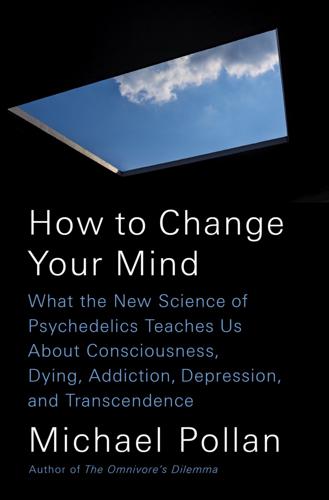
How to Change Your Mind: What the New Science of Psychedelics Teaches Us About Consciousness, Dying, Addiction, Depression, and Transcendence
by
Michael Pollan
Published 30 Apr 2018
A painting of Albert Hofmann hangs over the fireplace. Overhead, beneath the peak, is a massive round stained glass depicting “The Universality of the Mycelial Archetype”—an intricate tracery of blue lines on a night sky, the lines representing at once mycelium, roots, neurons, the Internet, and dark matter. Displayed on the walls heading upstairs from the living room are framed artworks, photographs, and keepsakes, including a diploma signifying the successful completion of one of the Merry Pranksters’ Acid Tests, signed by Ken Kesey and Neal Cassady. There are several photographs of Dusty posing in old-growth forests with impressive specimens of fungi and a colorfully grotesque print by Alex Grey, the dean of American psychedelic artists.

Army of None: Autonomous Weapons and the Future of War
by
Paul Scharre
Published 23 Apr 2018
Patti Domm, “False Rumor of Explosion at White House Causes Stocks to Briefly Plunge; AP Confirms Its Twitter Feed Was Hacked,” April 23, 2013, http://www.cnbc.com/id/100646197. 185 deep neural networks to understand text: Xiang Zhang and Yann LeCun, “Text Understanding from Scratch,” April 4, 2016, https://arxiv.org/pdf/1502.01710v5.pdf. 185 Associated Press Twitter account was hacked: Domm, “False Rumor of Explosion at White House Causes Stocks to Briefly Plunge; AP Confirms Its Twitter Feed Was Hacked.” 186 design deep neural networks that aren’t vulnerable: “Deep neural networks are easily fooled.” 186 “counterintuitive, weird” vulnerability: Jeff Clune, interview, September 28, 2016. 186 “[T]he sheer magnitude, millions or billions”: JASON, “Perspectives on Research in Artificial Intelligence and Artificial General Intelligence Relevant to DoD,” 28–29. 186 “the very nature of [deep neural networks]”: Ibid, 28. 186 “As deep learning gets even more powerful”: Jeff Clune, interview, September 28, 2016. 186 “super complicated and big and weird”: Ibid. 187 “sobering message . . . tragic extremely quickly”: Ibid. 187 “[I]t is not clear that the existing AI paradigm”: JASON, “Perspectives on Research in Artificial Intelligence and Artificial General Intelligence Relevant to DoD,” Ibid, 27. 188 “nonintuitive characteristics”: Szegedy et al., “Intriguing Properties of Neural Networks.” 188 we don’t really understand how it happens: For a readable explanation of this broader problem, see David Berreby, “Artificial Intelligence Is Already Weirdly Inhuman,” Nautilus, August 6, 2015, http://nautil.us/issue/27/dark-matter/artificial-intelligence-is-already-weirdly-inhuman. 12 Failing Deadly: The Risk of Autonomous Weapons 189 “I think that we’re being overly optimistic”: John Borrie, interview, April 12, 2016. 189 “If you’re going to turn these things loose”: John Hawley, interview, December 5, 2016. 189 “[E]ven with our improved knowledge”: Perrow, Normal Accidents, 354. 191 “robo-cannon rampage”: Noah Shachtman, “Inside the Robo-Cannon Rampage (Updated),” WIRED, October 19, 2007, https://www.wired.com/2007/10/inside-the-robo/. 191 bad luck, not deliberate targeting: “ ‘Robotic Rampage’ Unlikely Reason for Deaths,” New Scientist, accessed June 12, 2017, https://www.newscientist.com/article/dn12812-robotic-rampage-unlikely-reason-for-deaths/. 191 35 mm rounds into a neighboring gun position: “Robot Cannon Kills 9, Wounds 14,” WIRED, accessed June 12, 2017, https://www.wired.com/2007/10/robot-cannon-ki/. 191 “The machine doesn’t know it’s making a mistake”: John Hawley, interview, December 5, 2016. 193 “incidents of mass lethality”: John Borrie, interview, April 12, 2016. 193 “If you put someone else”: John Hawley, interview, December 5, 2016. 194 “I don’t have a lot of good answers for that”: Peter Galluch, interview, July 15, 2016. 13 Bot vs.

Lifespan: Why We Age—and Why We Don't Have To
by
David A. Sinclair
and
Matthew D. Laplante
Published 9 Sep 2019
From the perspective of many of the best minds in science at the time, those regions were little more than the ghosts of genomes past, mostly remnants of dead hitchhiking viruses that had integrated into the genome hundreds of thousands of years ago. The stuff that makes us who we are, it was thought, had largely been identified, and we had what we needed to propel forward our understanding of what makes us human. Yet by some estimates, that genetic dark matter accounts for as much as 69 percent of the total genome,1 and even within the regions generally regarded as “coding,” some scientists believe, up to 10 percent has yet to be decoded, including regions that impact aging.2 In the relatively short time that has come and gone since 2003, we have come to find out that within the famous double helix, there were sequences that were not just unmapped but essential to our lives.

Animal Spirits: The American Pursuit of Vitality From Camp Meeting to Wall Street
by
Jackson Lears
As she wrote, the recognition that “we are made up of its”—the countless bacteria that populate our bodies—ought to be a key to “the newish self that needs to emerge” in an “onto-tale” where “everything is, in a sense, alive.” Since Vibrant Matter was published, scientists have been creating a broader foundation for Bennett’s speculation. Robert Macfarlane converses with some of them in his remarkable book Underland. One is a physicist studying the collisions of dark matter. During a lull in their conversation, “he pauses. I wait,” Macfarlane writes. “Trillions of neutrinos pass through our bodies and on through the earth’s bedrock, its mantle, its liquid innards, its solid core.” Then the physicist says, “as if the phrase has just entered his head without warning, scoring a trace as it passes through—‘Everything causes a scintillation.’”
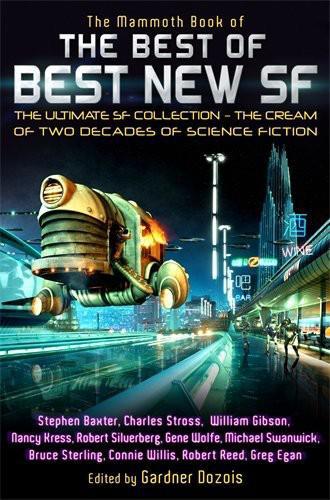
The Best of Best New SF
by
Gardner R. Dozois
Published 1 Jan 2005
“Rall?” She didn’t even hesitate in her answer this time. “Of course not, Henry Bone. How could you ever think such a thing? I was waiting to catch up with you. Now tell me about the future.” And so I drew away from her for a while, and told her – part of it at least. About how there is not enough dark matter to pull the cosmos back together again, not enough mass to undulate in an eternal cycle. Instead, there is an end, and all the stars are either dead or dying, and all that there is is nothing but dim night. I told her about the twilight armies gathered there, culled from all times, all places. Creatures, presences, machines, weapons fighting galaxy-to-galaxy, system-to-system, fighting until the critical point is reached when entropy flows no more, but pools, pools in endless stagnant pools of nothing.
…
You’re still locked into a pre-singularity economic model that thinks in terms of scarcity. Resource allocation isn’t a problem anymore – it’s going to be over within a decade. The cosmos is flat in all directions, and we can borrow as much bandwidth as we need from the first universal bank of entropy! They even found the dark matter – MACHOs, big brown dwarves in the galactic halo, leaking radiation in the long infrared – suspiciously high entropy leakage. The latest figures say something like 70 percent of the mass of the M31 galaxy was sapient, two point nine million years ago when the infrared we’re seeing now set out. The intelligence gap between us and the aliens is probably about a trillion times bigger than the gap between us and a nematode worm.
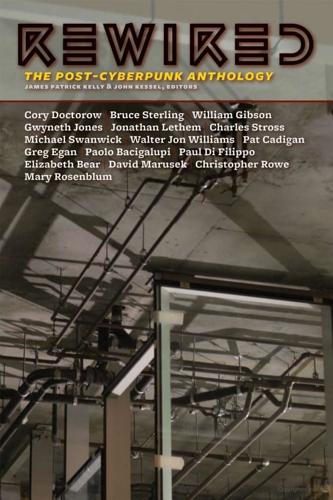
Rewired: The Post-Cyberpunk Anthology
by
James Patrick Kelly
and
John Kessel
Published 30 Sep 2007
You’re still locked into a pre-singularity economic model that thinks in terms of scarcity. Resource allocation isn’t a problem any more—it’s going to be over within a decade. The cosmos is flat in all directions, and we can borrow as much bandwidth as we need from the first universal bank of entropy! They even found the dark matter — MACHOS, big brown dwarves in the galactic halo, leaking radiation in the long infrared—suspiciously high entropy leakage. The latest figures say something like 70 percent of the mass of the M31 galaxy was sapient, two point nine million years ago when the infrared we’re seeing now set out. The intelligence gap between us and the aliens is probably about a trillion times bigger than the gap between us and a nematode worm.

Turing's Cathedral
by
George Dyson
Published 6 Mar 2012
I am grateful for the poets who suspect the twilight zone.”59 The secrecy Morse so objected to is now permanently entrenched. The U.S. government now produces more classified information than unclassified information—and, since even the amount of classified information is classified, we may never know how much dark matter there is. Von Neumann’s monument, however, has turned out not to be as coldly legible as it first appeared. There will always be truth beyond the reach of proof. Alan Turing received the Order of the British Empire in 1946, yet, under the Official Secrets Act, he could never talk openly about his wartime work.

Superintelligence: Paths, Dangers, Strategies
by
Nick Bostrom
Published 3 Jun 2014
The true number is probably much larger. We might get additional orders of magnitude, for example, if we make extensive use of reversible computation, if we perform the computations at colder temperatures (by waiting until the universe has cooled further), or if we make use of additional sources of energy (such as dark matter).24 It might not be immediately obvious to some readers why the ability to perform 1085 computational operations is a big deal. So it is useful to put it in context. We may, for example, compare this number with our earlier estimate (Box 3, in Chapter 2) that it may take about 1031–1044 ops to simulate all neuronal operations that have occurred in the history of life on Earth.
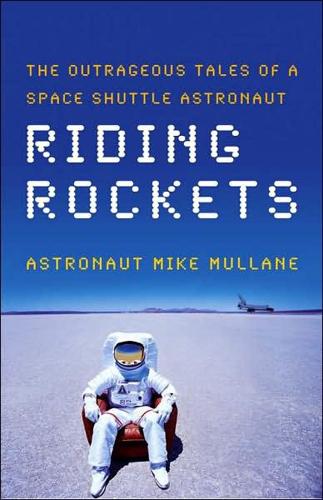
Riding Rockets: The Outrageous Tales of a Space Shuttle Astronaut
by
Mike Mullane
Published 24 Jan 2006
Jerry’s story implied Abbey had selected a new class over Kraft’s objections. Did even Dr. Kraft answer to Abbey on the subject of astronauts? Nobody knew. Kraft, Abbey, and Young never said a word about their responsibilities. Everything about the most important aspect of our career—flight assignments—was as unknown to us as the dark matter of space was to astrophysicists. Who made assignments? Who approved them? Who had veto power over them? Would there be a rotation system? Would our preferences for a mission be considered? Would military astronauts fly only military missions? Abbey said nothing. Nor did he ever provide the slightest performance feedback—positive or negative.

A Generation of Sociopaths: How the Baby Boomers Betrayed America
by
Bruce Cannon Gibney
Published 7 Mar 2017
Vietnam triggers unease in America for the same reasons the Empire remains an uneasy subject for Britons: The moral failures of each stretched well beyond the Pentagon and Whitehall. Guerrillas in the Mist It’s been over forty years since the last American troops left Vietnam, and while the war continues to make itself felt as part of the dark matter of the American political universe, details have gotten fuzzy. For Americans who did live through the war, including all the Boomers, time erodes many details. Others facts have mutated or vanished entirely (e.g., the confusion surrounding the sincerity of B. Sanders’ application for conscientious objector status), lost to assiduous mythologizing like whitewashed draft histories (B.
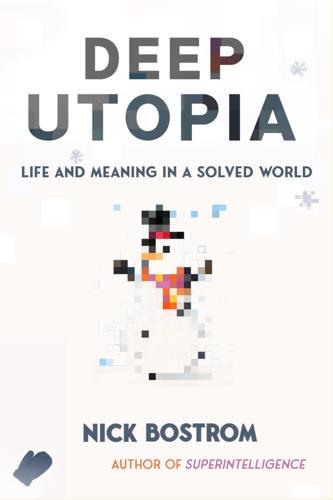
Deep Utopia: Life and Meaning in a Solved World
by
Nick Bostrom
Published 26 Mar 2024
The true number is probably much larger. We might get additional orders of magnitude, for example, if we make extensive use of reversible computation, if we perform the computations at colder temperatures (by waiting until the universe has cooled further), or if we make use of additional sources of energy (such as dark matter). It might not be immediately obvious to some readers why the ability to perform 1085 computational operations is a big deal. So it is useful to put it in context. We may, for example, compare this number with our earlier [in Superintelligence] estimate that it may take about 1031–1044 ops to simulate all neuronal operations that have occurred in the history of life on Earth.

Stranger Than Fiction: Lives of the Twentieth-Century Novel
by
Edwin Frank
Published 19 Nov 2024
Our various ways of being creatures are somehow brought into equilibrium here, and after a while the girl falls asleep and Tom carries her back to bed, able now to tend to his wife, still in labor. There are symbols here—the wet darkness is the element of life; the manger is a sacred space—but they are not overbearing: after all, wet darkness matter-of-factly is where life begins, and these cows are cows. The whole scene is delicate and exact and true. It is very moving as well. But rain and darkness will reappear before long as the occasion of death, not birth. Tom has prospered—he is a gentleman farmer—while his two sons have studied and left the farm and the world of manual labor, becoming gentlemen for real.
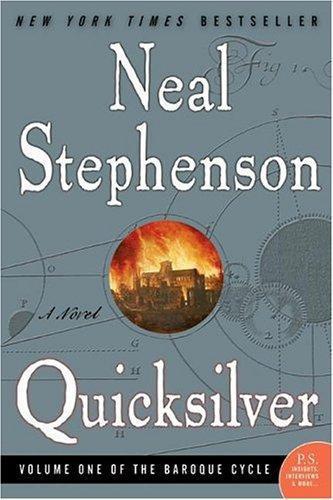
Quicksilver
by
Neal Stephenson
Published 9 Sep 2004
A triangular commerce in highly significant glances and eyebrow-raisings flourished there in the Dogg, for the next hour, among them. But they could not all break free at once: Churchill and others wanted more details from Daniel about this Mr. Newton and his telescope. The Duke of Gunfleet got Pepys cornered, and interrogated him about dark matters concerning the Navy’s finances. Blood-spattered, dejected Royal Society members stumbled in from Gresham’s College, with the news that Drs. King and Belle had gotten lost in the wilderness of canine anatomy, the dog had died, and they really needed Hooke—where was he? Then they cornered Bishop Wilkins and talked Royal Society politics—would Comstock stand for election to President again?
…
“M’Lord Upnor’s town-house lies this way,” shouted Bob Shaftoe, pointing insistently in the direction of Piccadilly. “Work with me, Sergeant,” Daniel said, “as if I were a guide taking you on a hunt for strange game of which you know nothing.” They began to push their way across the vast cosmos of the square, which was crowded with dark matter: huge mobs pressing in round bonfires, singing Lilliburlero, and diverse knaves who’d come up out of Hogs-den to prey upon ’em, and patchwork mutts fighting over anything that escaped the attention of the knaves. Daniel lost sight of the green flames for a while and was about to give up when he saw red flames shooting up in the same place—not the usual orange-red but an unnatural scarlet.
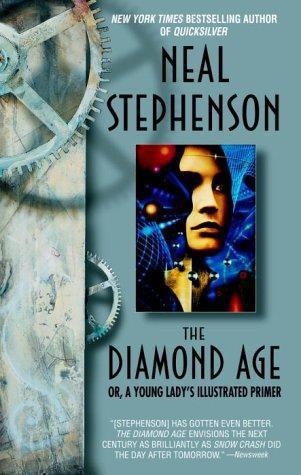
The Diamond Age
by
Neal Stephenson
Published 2 May 2000
She looked toward the door, thinking that someone had come in and turned the lights on, but she was alone in the room, and the light was flickering against the wall. She turned her head the other way. The center span of the Causeway had become a ball of white light hurling its marbled shroud of cold dark matter into the night. The sphere expanded until it seemed to occupy most of the interval between New Chusan and the Pudong shoreline, though by this time the color had deepened from white into reddish-orange, and the explosion had punched a sizable crater into the water, which developed into a circular wave of steam and spray that ran effortlessly across the ocean's surface like the arc of light cast by a pocket torch.
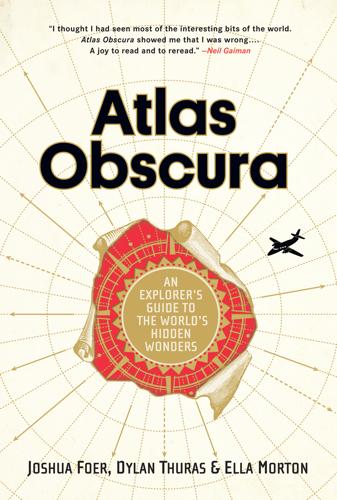
Atlas Obscura: An Explorer's Guide to the World's Hidden Wonders
by
Joshua Foer
,
Dylan Thuras
and
Ella Morton
Published 19 Sep 2016
See Robert Redford’s cowboy boots, Elvis’s blue patent-leather loafers, and an ankle boot that once cradled the foot of John Lennon. 327 Bloor Street West, Toronto. 43.667278 79.400139 Around 13,000 shoes from all over history live in a shoebox-shaped building. Snolab LIVELY A mile and a half underground, beneath the Creighton nickel mine, a team of astrophysicists is trying to solve the mysteries of the universe. They work at SNOLAB, a laboratory devoted to searching for neutrinos—neutral subatomic particles—and dark matter. The laboratory needs to be so far underground in order to shield the sensitive detection systems from interference caused by cosmic radiation. The site is best known for its Sudbury Neutrino Observatory (SNO), an experiment that ran from 1999 to 2006, which used a 40-foot-wide (12 m) vessel filled with heavy water (water containing a large amount of the hydrogen isotope deuterium) to detect neutrinos produced by fusion reactions in the sun.

The Making of Global Capitalism
by
Leo Panitch
and
Sam Gindin
Published 8 Oct 2012
Acharya, Guaranteed To Fail: Fannie Mae, Freddie Mac and the Debacle of Mortgage Finance, Princeton: Princeton University Press, 2011, pp. 20–2. 24 Alan Greenspan, “Consumer Finance,” remarks by Chairman Alan Greenspan at the Federal Reserve Fourth Annual Community Affairs Research Conference, Washington, DC, April 8, 2005. 25 Moreover, because US FDI was so large, and the returns on it so much higher than on securities, total receipts to the US on assets abroad were higher than what was paid out on foreign assets in the US. For this argument, and the quotation used here, see Ricardo Housmann and Federico Sturzenegger, “US and Global Imbalances: Can Dark Matter Prevent a Big Bang?” Working Paper, Kennedy School of Government, November 13, 2005. See also Herman Schwartz, Subprime Nation: American Power, American Capital and the Housing Bubble, Ithaca: Cornell University Press, 2009. 26 The data is readily available from the US Bureau of Economic Analysis, and the Federal Reserve Board Flow of Funds Accounts, Data Download Program. 27 This argument was most strongly advanced by Robert Brenner, The Boom and the Bubble: The US in the World Economy, New York: Verso, 2002, but was much more widely held.
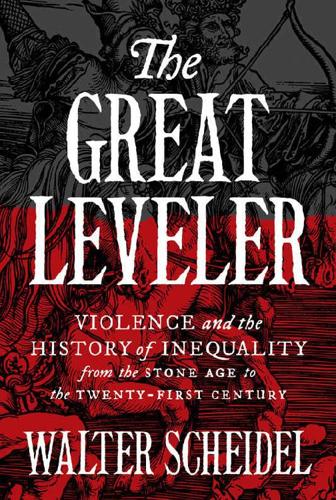
The Great Leveler: Violence and the History of Inequality From the Stone Age to the Twenty-First Century
by
Walter Scheidel
Published 17 Jan 2017
Consideration of material such as the burials from Egypt’s Third Intermediate Period takes us to—and perhaps beyond—the limits of how far we can push the study of inequality. Most leveling that was driven by political fragmentation took place in the premodern past, a potentially widespread phenomenon that will for the most part forever remain obscured from the modern observer. It forms a kind of “dark matter” in the history of inequality, almost certainly present but hard to pin down. ”THE COUNTRY IS SO BROKEN”: CONTEMPORARY STATE FAILURE IN SOMALIA However severe the limitations of much of the historical evidence, it lends support to the thesis that the violent unraveling of predatory states of the premodern era curtailed inequality by depriving established elites of wealth and power.
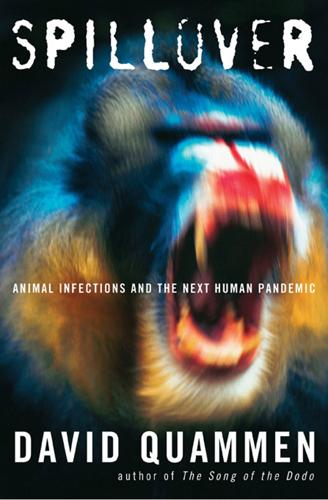
Spillover: Animal Infections and the Next Human Pandemic
by
David Quammen
Published 30 Sep 2012
Both the round bodies of B. burgdorferi and the small form of C. burnetii merely illustrate that, even in the age of antibiotics, bacteria can be sneaky and tough. These microbes remind us that you don’t have to be a virus to cause severe, intractable, mystifying outbreaks of zoonotic disease in the twenty-first century. Although it helps. VI GOING VIRAL 54 Viruses were an invisible mystery, like dark matter and Planet X, until well into the twentieth century. They were momentously consequential but undetectable, like the neutron. Anton van Leeuwenhoek’s microbial discoveries hadn’t encompassed them, nor had the bacteriological breakthroughs of Pasteur and Koch, two hundred years later. Pasteur worked on rabies as a disease, true, and even developed a vaccine, but he never laid eyes on the rabies virus itself nor quite understood what it was.

Lonely Planet London City Guide
by
Tom Masters
,
Steve Fallon
and
Vesna Maric
Published 31 Jan 2010
The latter describes it in detail in his Down and Out in Paris and London (1933). 6 Whitechapel Bell Foundry In business for nigh on 450 years, this bell foundry can lay claim to producing some of the most recognisable bells in history, including Big Ben and the Liberty Bell in Philadelphia. Return to beginning of chapter NORTH LONDON Drinking; Eating; Shopping; Sleeping North London is a nebulous term for an area made up of many smaller neighbourhoods, most of which are ancient villages that have slowly been drawn into London’s dark matter over the centuries as the metropolis has expanded. Starting north of Euston Rd, this region of the capital includes King’s Cross and Camden Town – two names both likely to elicit a response from Londoners. King’s Cross has historically been one of the capital’s nastiest urban blights, but a redevelopment of the tube station, the opening of the beautiful St Pancras International train terminal and the slow but thorough urban renewal going on elsewhere is making King’s Cross more and more desirable, although it’s fair to say it’ll be a while before we’re all meeting there for drinks.
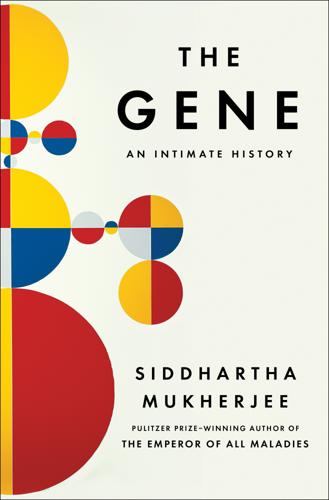
The Gene: An Intimate History
by
Siddhartha Mukherjee
Published 16 May 2016
Some noncoding genes were of known function: the ribosome, the giant intracellular machine that makes proteins, contains specialized RNA molecules that assist in the manufacture of proteins. Other noncoding genes were eventually found to encode small RNAs—called micro-RNAs—which regulate genes with incredible specificity. But many of these genes were mysterious and ill defined. They were not dark matter, but shadow matter, of the genome—visible to geneticists, yet unknown in function or significance. What is a gene, then? When Mendel discovered the “gene” in 1865, he knew it only as an abstract phenomenon: a discrete determinant, transmitted intact across generations, that specified a single visible property or phenotype, such as flower color or seed texture in peas.
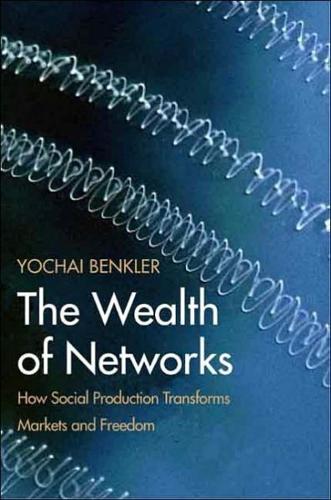
The Wealth of Networks: How Social Production Transforms Markets and Freedom
by
Yochai Benkler
Published 14 May 2006
As SETI@home and Slashdot suggest, it is not necessarily limited to stable communities of individuals who interact often and know each other, or who expect to continue to interact personally. Social production of goods and services, both public and private, is ubiquitous, though unnoticed. It sometimes substitutes for, and sometimes complements, market and state production everywhere. It is, to be fanciful, the dark matter of our economic production universe. 228 Consider the way in which the following sentences are intuitively familiar, yet as a practical matter, describe the provisioning of goods or services that have well-defined NAICS categories (the categories used by the Economic Census to categorize economic sectors) whose provisioning through the markets is accounted for in the Economic Census, but that are commonly provisioned in a form consistent with the definition of sharing--on a radically distributed model, without price or command. 229 NAICS 624410624410 [Babysitting services, child day care] "John, could you pick up Bobby today when you take Lauren to soccer?
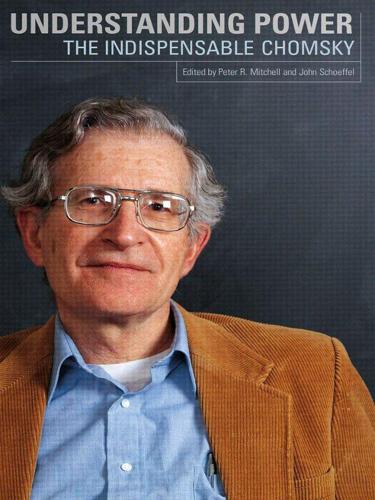
Understanding Power
by
Noam Chomsky
Published 26 Jul 2010
Also, we probably don’t know all the laws—I mean, it’s very unlikely that we really do know the laws, even at the core of science. A physicist will tell you much more about this than I can, but take, say, the matter in the universe: more than 90 percent of the matter in the universe is what’s called “dark matter”—and it’s called “dark” because nobody knows what it is. It’s just sort of postulated that it exists, because if you don’t postulate it, everything blows up—so you have to assume that it’s there. And that’s over 90 percent of the matter in the universe: you don’t even know what it is. In fact, a new branch of physics has developed around superconductivity [“superconductivity” refers to the complete disappearance of electrical resistance in various solids at ultra-low temperatures], and while I don’t have the knowledge to evaluate the claims, what some of the physicists working on it say is that they can now virtually prove (I mean, not quite prove, but come quite close to proving) that in this domain of highly condensed matter, there are principles which are literally not deducible from the known laws of nature: so you can’t reduce the principles of superconductivity to the known laws of nature.

Accessory to War: The Unspoken Alliance Between Astrophysics and the Military
by
Neil Degrasse Tyson
and
Avis Lang
Published 10 Sep 2018
Various permutations of astrophysicists from Canada, Chile, France, Israel, Italy, Poland, Spain, the United Kingdom, and the United States have been studying the quantum effects of the intense magnetic field surrounding a neutron star; a vast intergalactic void that is helping to propel our galaxy through space by repelling it; an as-yet-unexplained cool region in the cosmic microwave background (imprint from the Big Bang) that may offer the first evidence of the multiverse. They’ve found a large, dim, relatively nearby spheroidal galaxy, similar in total mass to the Milky Way, that was only recently discovered because 99.99 percent of it consists of dark matter. They’ve witnessed an interstellar asteroid, the solar system’s first visitor from elsewhere in the Milky Way, which plunged past the Sun and onward toward Mars at 300,000 kilometers per hour in the fall of 2017. Besides making discoveries, astrophysicists have speculated that aliens might use lasers to broadcast obviously purposeful signals of their existence that would be picked up by skywatchers carefully monitoring known and suspected exoplanets.

Seeking SRE: Conversations About Running Production Systems at Scale
by
David N. Blank-Edelman
Published 16 Sep 2018
We then used all of the missed repair items to measure what we called “virtual repair debt.” Visualizing virtual repair debt became a powerful tool to drive improvements. As seen in Figure 4-5, the gray line representing repair debt makes it look like the team is keeping up with the repair debt, but when you add the dotted red line that represents missed repairs, the dark-matter repair items that form virtual debt become glaringly obvious. Virtual debt is particularly important because it represents the corpus of repair items that were never logged and will end up hurting the service down the road. When there is virtual debt, the specific TTD and TTM misses will repeat over and over until they are logged and fixed.

Thinking Without a Banister: Essays in Understanding, 1953-1975
by
Hannah Arendt
Published 6 Mar 2018
And since only that is which appears and is seen, Plato’s highest idea of the good in its all-embracing and overshadowing reality is phanotaton—that is, it shines forth most, has the most shining appearance (Republica, 518 C). The private realm, even if the necessities of life were successfully “ruled” and taken care of, remained a realm of shadowy, inarticulate, and dark matters; private life was deprived of reality because it could not show itself and could not be seen by others. The conviction that only what appears and is seen by others acquires full reality and authentic meaning for man is at the basis of all Greek political life. The principal aim of the tyrant is to condemn men to their private household, which is to deprive them of the possibility of their humanity.

Escape From Rome: The Failure of Empire and the Road to Prosperity
by
Walter Scheidel
Published 14 Oct 2019
D., 583n157 Yuan empire, 229, 281, 403, 507 Zhao, Dingxin, 393–94, 412, 583n144 Zheng Chenggong, 445 Zheng He (Chinese eunuch), 433, 439, 445, 468 Zhenzong emperor, 241 Zhou regime: demise of, 221, 222, 570n52; in heyday of empire, 281; language and writing in, 308; religious beliefs in, 319; steppe effect in, 282, 285, 286; unity as concept in, 323 Zoroastrians, 207, 317 Zwingli, Ulrich, 474 THE PRINCETON ECONOMIC HISTORY OF THE WESTERN WORLD Joel Mokyr, Series Editor Going the Distance: Eurasian Trade and the Rise of the Business Corporation 1400–1700 by Ron Harris Dark Matter Credit: The Development of Peer-to-Peer Lending and Banking in France by Philip T. Hoffman, Gilles Postel-Vinay, and Jean-Laurent Rosenthal The European Guilds: An Economic Analysis by Sheilagh Ogilvie Trade in the Ancient Mediterranean: Private Order and Public Institutions by Taco Terpstra The Winding Road to the Welfare State: Economic Insecurity and Social Welfare Policy in Britain by George R.

The Art of SEO
by
Eric Enge
,
Stephan Spencer
,
Jessie Stricchiola
and
Rand Fishkin
Published 7 Mar 2012
Here are some factors to think about when considering SEO for ideological influence: When to employ SEO for ideological influence Use it when you need to change minds or influence decisions/thinking around a subject—for example, a group of theoretical physicists attempting to get more of their peers to consider the possibility of alternative universes as a dark matter source. Keyword targeting It’s tough to say for certain, but if you’re engaging in these types of campaigns, you probably know the primary keywords you’re chasing and can use keyword research query expansion to find others. Page and content creation/optimization This is classic SEO, but with a twist.

The Temporal Void
by
Peter F. Hamilton
Published 1 Jan 2008
Its spectrum chased through a delicate pink to pure white, then accelerated into blue-white as its radiation efflux poured out vast quantities of gamma waves. The event horizon consumed the last of the planet’s core. Only the light remained, growing ever brighter as its heart shrank faster and faster. ‘Out of twinkling stardust all came, into dark matter all will fall. Death mocks us as we laugh defiance at entropy, yet ignorance birthed mortals sail forth upon time’s cruel sea.’ The Lindau began to accelerate at an easy two gees, keeping far ahead of the rock fragments and darkening seas of magma that spewed out from the dazzling implosion nucleus.

Enlightenment Now: The Case for Reason, Science, Humanism, and Progress
by
Steven Pinker
Published 13 Feb 2018
We can explain much about the history of the universe, the forces that make it tick, the stuff we’re made of, the origin of living things, and the machinery of life, including our mental life. Though our ignorance is vast (and always will be), our knowledge is astonishing, and growing daily. The physicist Sean Carroll argues in The Big Picture that the laws of physics underlying everyday life (that is, excluding extreme values of energy and gravitation like black holes, dark matter, and the Big Bang) are completely known. It’s hard to disagree that this is “one of the greatest triumphs of human intellectual history.”2 In the living world, more than a million and a half species have been scientifically described, and with a realistic surge of effort the remaining seven million could be named within this century.3 Our understanding of the world, moreover, consists not in mere listings of particles and forces and species but in deep, elegant principles, such as that gravity is the curvature of space-time, and that life depends on a molecule that carries information, directs metabolism, and replicates itself.
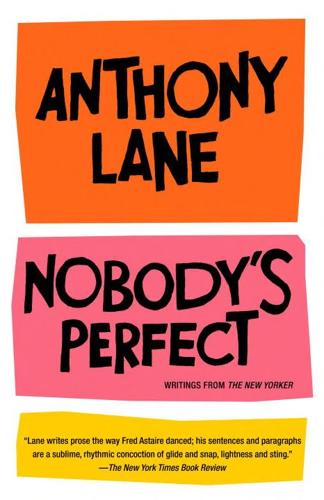
Nobody's Perfect: Writings From the New Yorker
by
Anthony Lane
Published 26 Aug 2002
Faced with such effrontery, one might more usefully assume that Homer is in fact winking, and no Pynchon novel would be complete without its fair share of anachronistic digs; the shipboard scenes include an honorary mention of a sailor named Pat O’Brian, “the best Yarn-Spinner in all the Fleets,” and the current president might allow himself a small smile at the advice on Indian hemp which is offered to Cherrycoke as he prepares to set sail: “If you must use the latter, do not inhale. Keep your memory working, young man!” Whether Thomas Pynchon himself would heed this counsel is hard to decide. His memory seems, as ever, not only to have gorged itself on facts and figures but to have kept the whole lot down; some of the astronomical passages are dense with dark matter. On the other hand, this book could easily have been conceived in the fumes of inhalation: it has a dreamed quality, an eagerness to be haunted. Mason and Dixon sail first to the Cape of Good Hope; they record a Transit of Venus, which proves to have a suitably warping effect on the libidos of those observing it, and then proceed to St.

Bourgeois Dignity: Why Economics Can't Explain the Modern World
by
Deirdre N. McCloskey
Published 15 Nov 2011
And to recur to the eighth, environmental pessimism, great amounts are now being spent to avoid ecocatastrophe, with some gratifying successes, if more to do. Yet nearly half a century after making some of the worst scientific predictions of his generation—outdoing in this respect even the proud physicists missing dark matter and the proud economists missing the Great Recession—people still heed what Ehrlich says, inviting him, for example, to NPR’s Science Friday and hanging on his words. It is a remarkable performance, worth bottling and selling. Ehrlich has been selling over and over since the 1960s the same erroneous prediction, which all of the eight pessimisms voice: the sky is falling, the sky is falling.

Northern California Travel Guide
by
Lonely Planet
Thai HouseTHAI$ ( GOOGLE MAP ; www.newthaihouse.com; 248 S Main St; mains $5-14; h11am-3pm & 4-8:30pm Mon-Fri, 11am-8:30pm Sat, from noon Sun; pav)S A remarkably solid Thai restaurant with excellent curries and soups. 6Drinking & Nightlife Cedar Crest BrewingBREWERY ( GOOGLE MAP ; 615 Main St; h11am-8pm Mon-Thu, to 10pm Fri & Sat, noon-5pm Sun) Situated inside a local specialty food spot called Enjoy The Store, this young craft brewery (Red Bluff's first!) pours floral IPAs and a delicious Dark Matter Porter. The surrounding store is a great spot to stock up on fancy snacks, such as local cheese, olives and nuts. E's Locker RoomBAR ( GOOGLE MAP ; %530-527-4600; 1075 Lakeside Dr; h4-9:30pm Tue-Thu, to 10pm Fri & Sat, 3-9pm Sun) Framed photos of local legends and sports heroes clutter the walls of this friendly, casual Red Bluff watering hole.

To Sleep in a Sea of Stars
by
Christopher Paolini
Published 14 Sep 2020
As confirmed by Oelert (2122), the majority of our local superluminal matter exists in a vast halo surrounding the Milky Way. This halo provides positive pressure on the Milky Way, which helps keep the galaxy from flying apart. The gravitational effects of superluminal mass on our own subluminal realm were long a mystery. Early attempts to explain them resulted in the now-obsolete theories of “dark matter” and “dark energy.” These days, we know that the concentrations of superluminal mass between the galaxies are responsible for the ongoing expansion of the universe, and that they also affect the shape and movement of the galaxies themselves. Whether or not tachyonic matter coalesces into the superluminal equivalent of stars and planets remains an open question.

The confusion
by
Neal Stephenson
Published 13 Apr 2004
And when Jack moved it to another rock, it pointed in a different direction that was not north. “If you are trying to spook me, it has worked. Let’s get the hell out of here,” Jack said. Their inspection of the Carnaya’s equipment had left Danny and Jimmy baffled and suspicious respectively. “’Twas nought more’n some dark matter, as dull and gross as anything I’ve ever seeyen,” Danny reported. “Certain gemstones look thus, before they have been cut and polished,” Jack said. “It was all sand and grit, nothing bigger’n a pin-head,” Jimmy said. “But Jayzus! Those sacks were heavy.” Enoch was as close to being excited as Jack had ever seen him.

California
by
Sara Benson
Published 15 Oct 2010
GRIFFITH OBSERVATORY & PLANETARIUM After four years and $93 million, this landmark 1935 observatory (Map; 213-473-0800; www.griffithobservatory.org; 2800 Observatory Rd; admission free, planetarium shows adult/child/student & senior $7/3/5; noon-10pm Tue-Fri, 10am-10pm Sat & Sun; ) reopened in 2006 and now boasts the world’s most advanced star projector in its planetarium – phone or check the website for show times. In the lower level is the Big Picture, a 150ft floor-to-ceiling digital image of a sliver of the universe bursting with galaxies, stars and lurking dark matter. For more tangible thrills, weigh yourself on nine planetary scales (weight-watchers should go for Mercury), generate your own earthquake or head to the rooftop to peek through the refracting and solar telescopes housed in the smaller domes. From here, sweeping views of the Hollywood Hills and the gleaming city below are just as spectacular, especially at sunset.
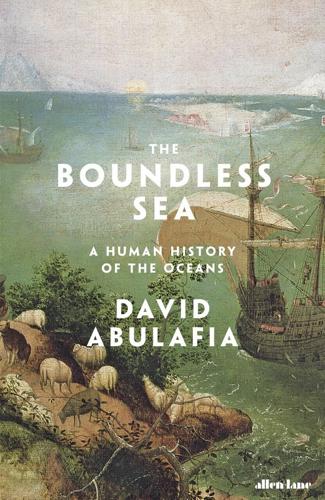
The Boundless Sea: A Human History of the Oceans
by
David Abulafia
Published 2 Oct 2019
Arising out of their theories about a southern continent, and anchored in Marco Polo’s certainties, they were as convinced that a large landmass must exist somewhere south of the Spice Islands as Columbus had been that no landmass could exist between Europe and the Far East; and maybe it was a massive island rather than the world-encircling continent that mapmakers generally preferred to show. A sort of mental discovery actually preceded physical discovery, odd as it may sound. After all, much the same might be said about modern cosmology – dark matter and dark energy, it is claimed, must be there, partly to solve the mathematical equations, despite the fact that nothing has, if the pun can be excused, come to light. The universe has to be in perfect balance, just as the assumption in 1600 was that the earth could only be in balance if the southern continent weighed down the Antarctic pole.